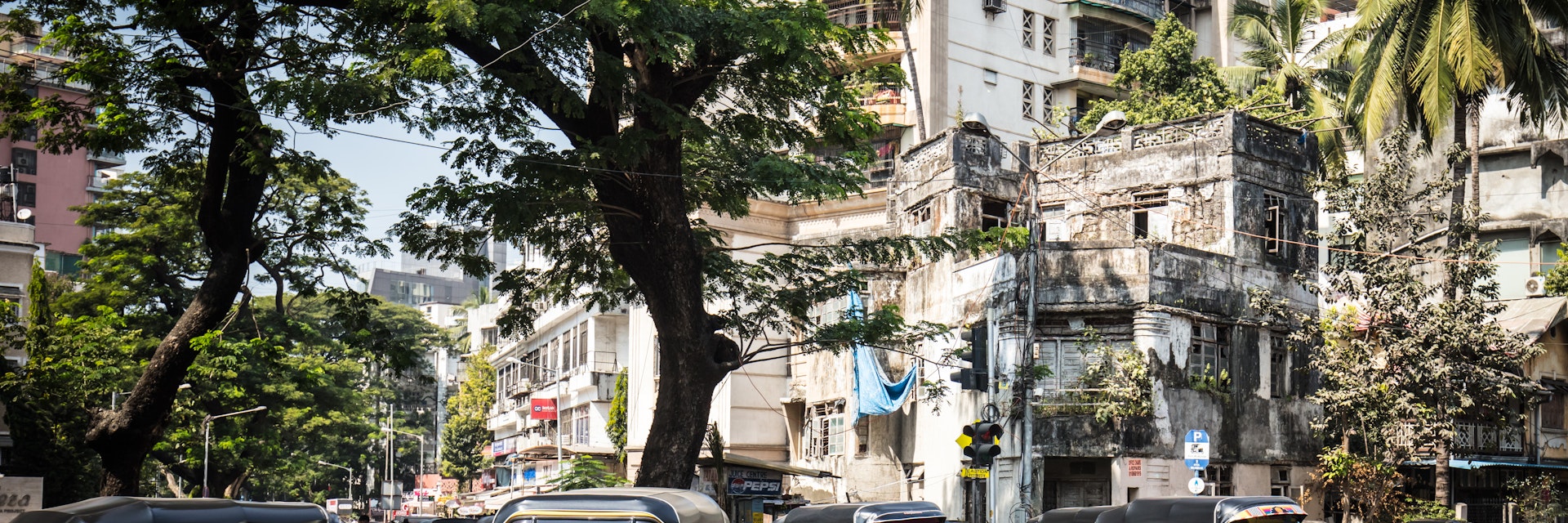
©FiledIMAGE/Getty Images
Mumbai (Bombay)
Explore beyond the city center in Mumbai and you'll uncover furious energy, unique bazaars, hidden temples, hipster enclaves and India's premier restaurants and nightlife.

Leave the planning to a local expert
Experience the real Mumbai (Bombay). Let a local expert handle the planning for you.
Attractions
Must-see attractions.
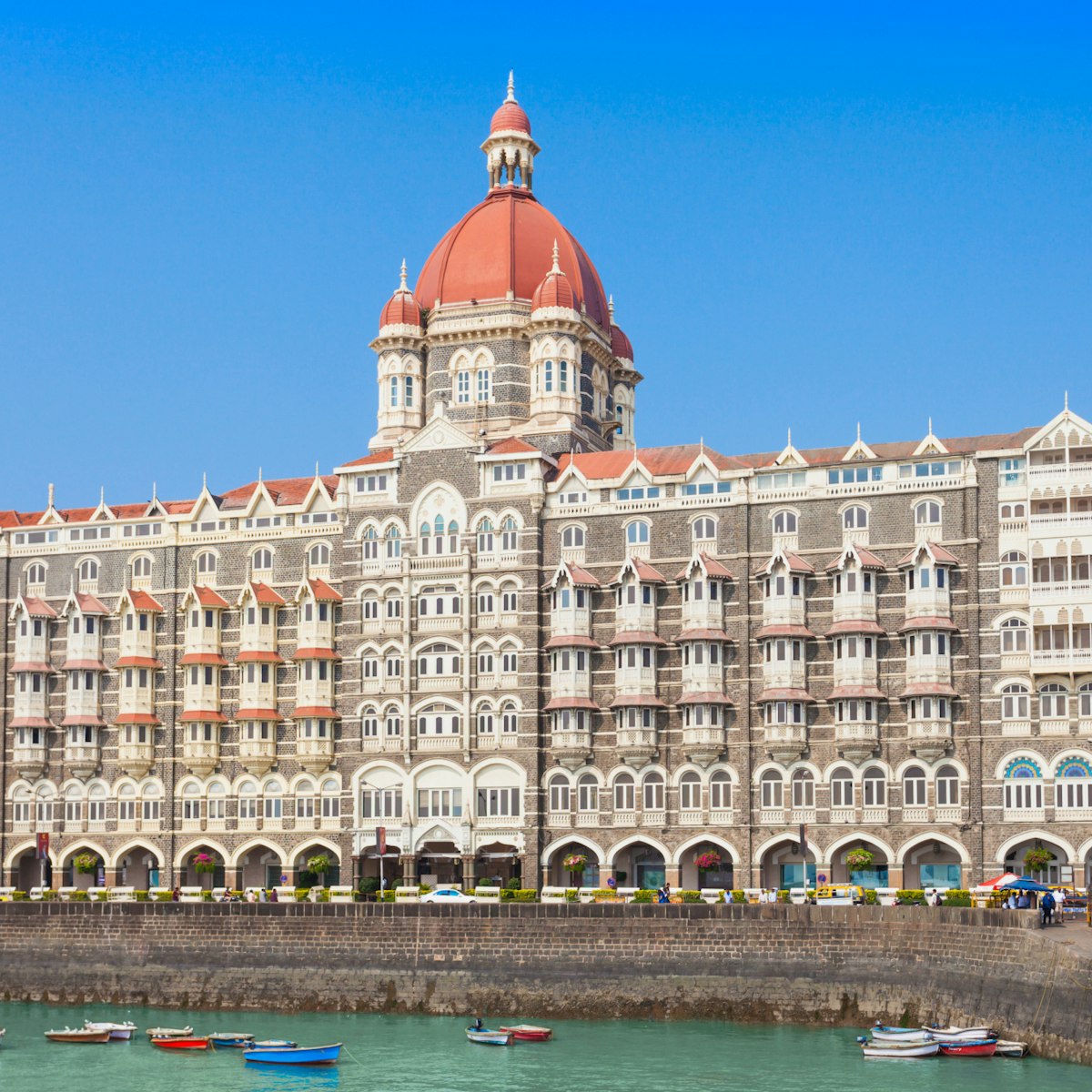
Taj Mahal Palace, Mumbai
Mumbai’s most famous landmark, this stunning hotel is a fairy-tale blend of Islamic and Renaissance styles, and India’s second-most-photographed monument…
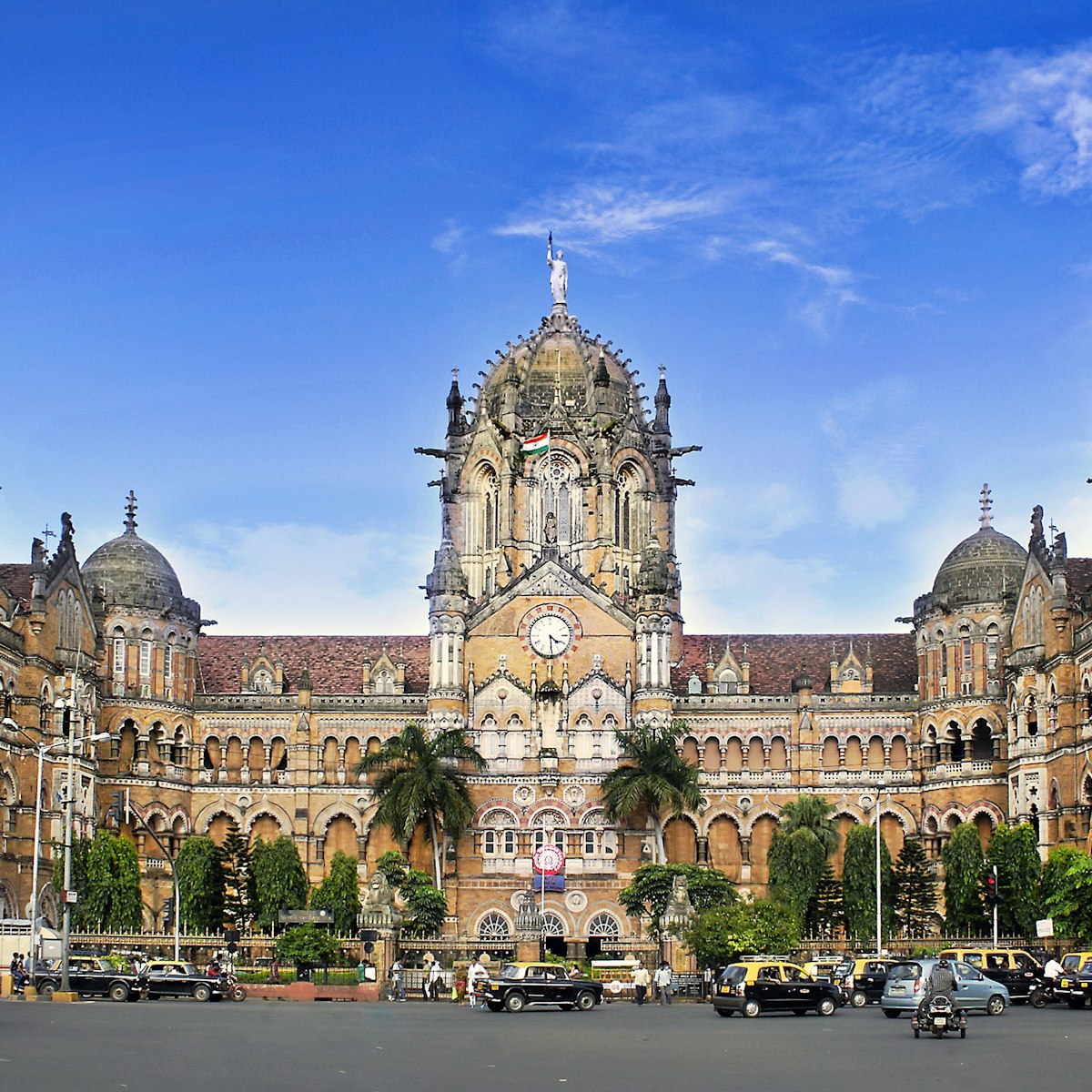
Chhatrapati Shivaji Maharaj Terminus
Imposing, exuberant and overflowing with people, this monumental train station is the city’s most extravagant Gothic building and an aphorism of colonial…
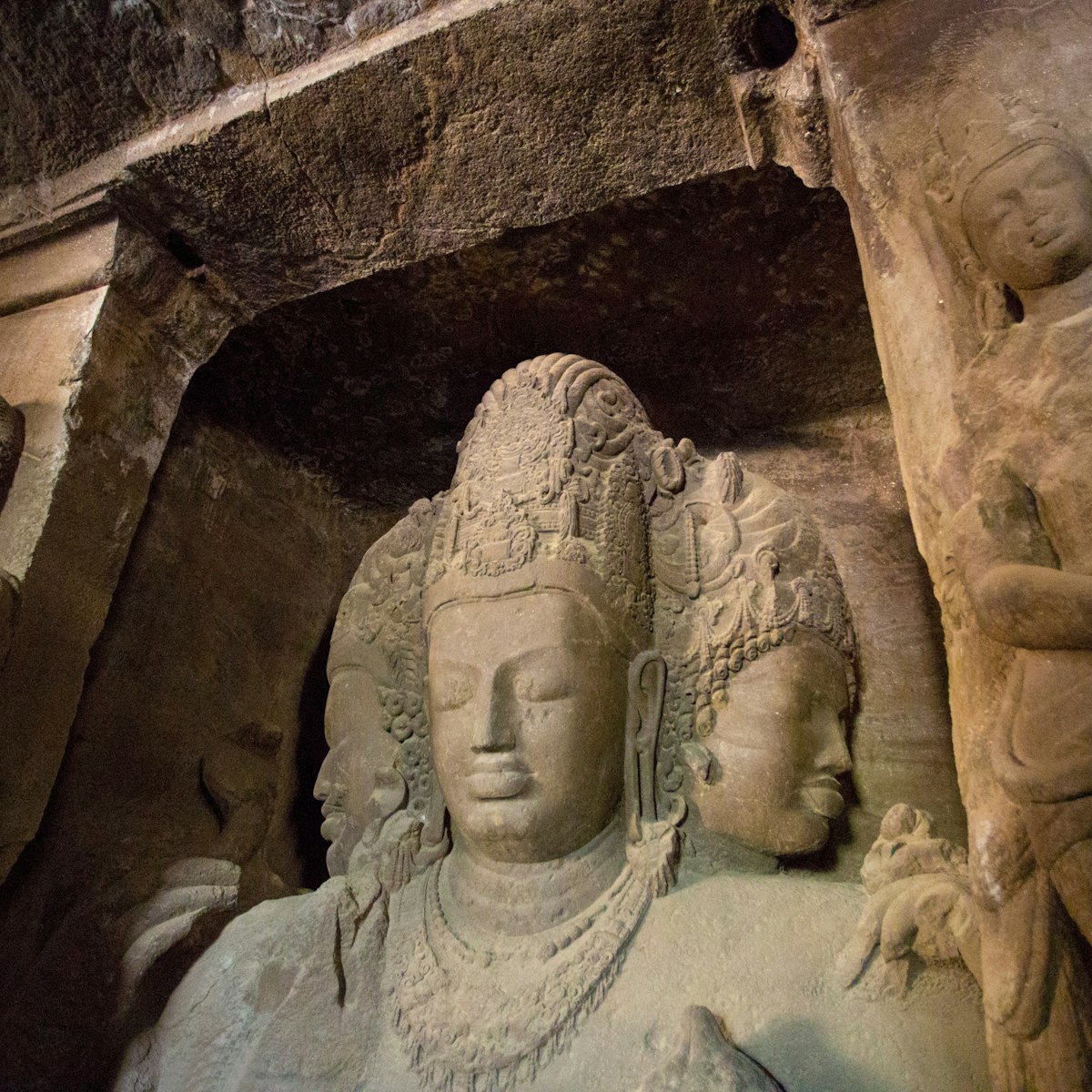
Elephanta Island
Northeast of the Gateway of India in Mumbai Harbour, the rock-cut temples on Gharapuri, better known as Elephanta Island, are a Unesco World Heritage Site…
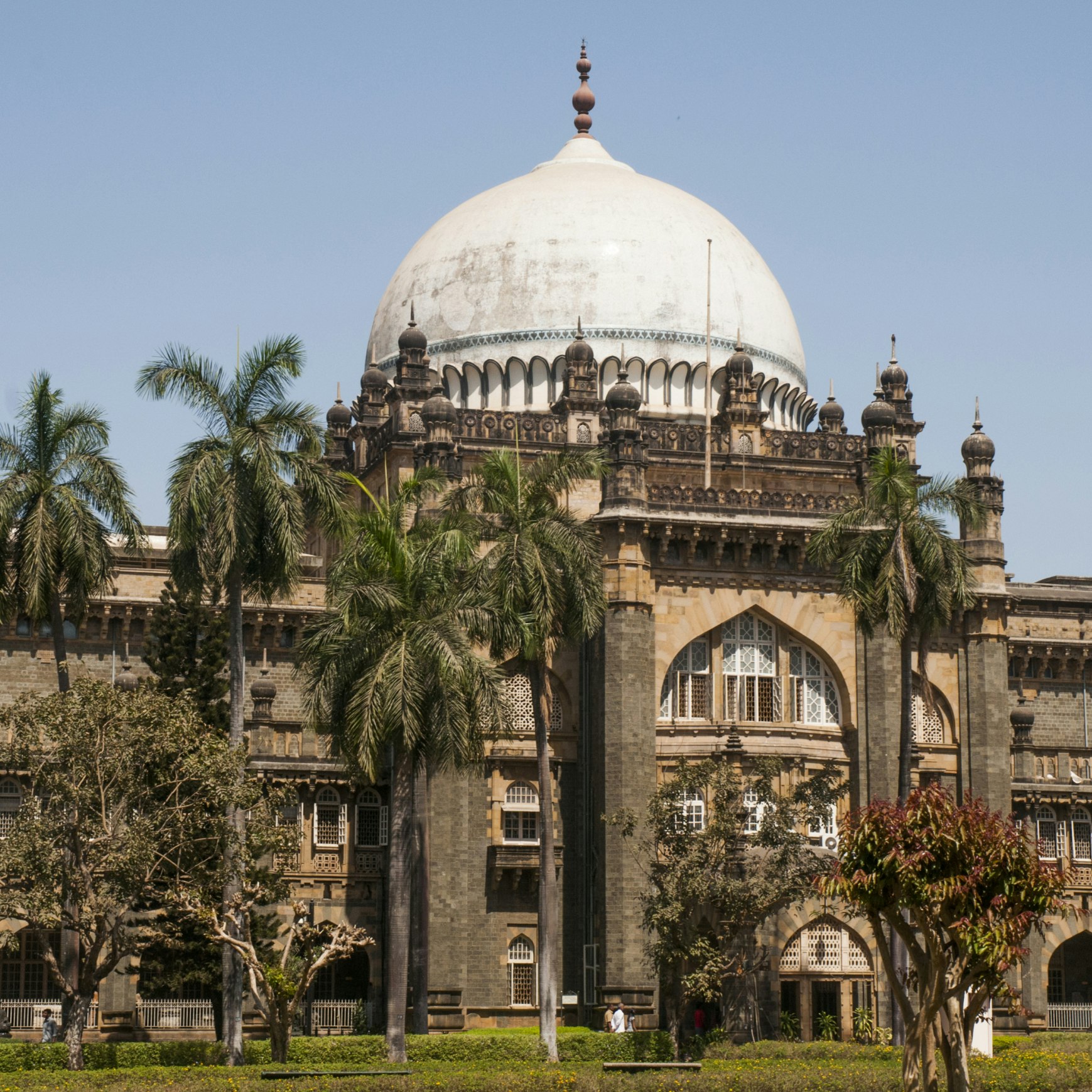
Chhatrapati Shivaji Maharaj Vastu Sangrahalaya
Mumbai’s biggest and best museum displays a mix of India-wide exhibits. The domed behemoth, an intriguing hodgepodge of Islamic, Hindu and British…
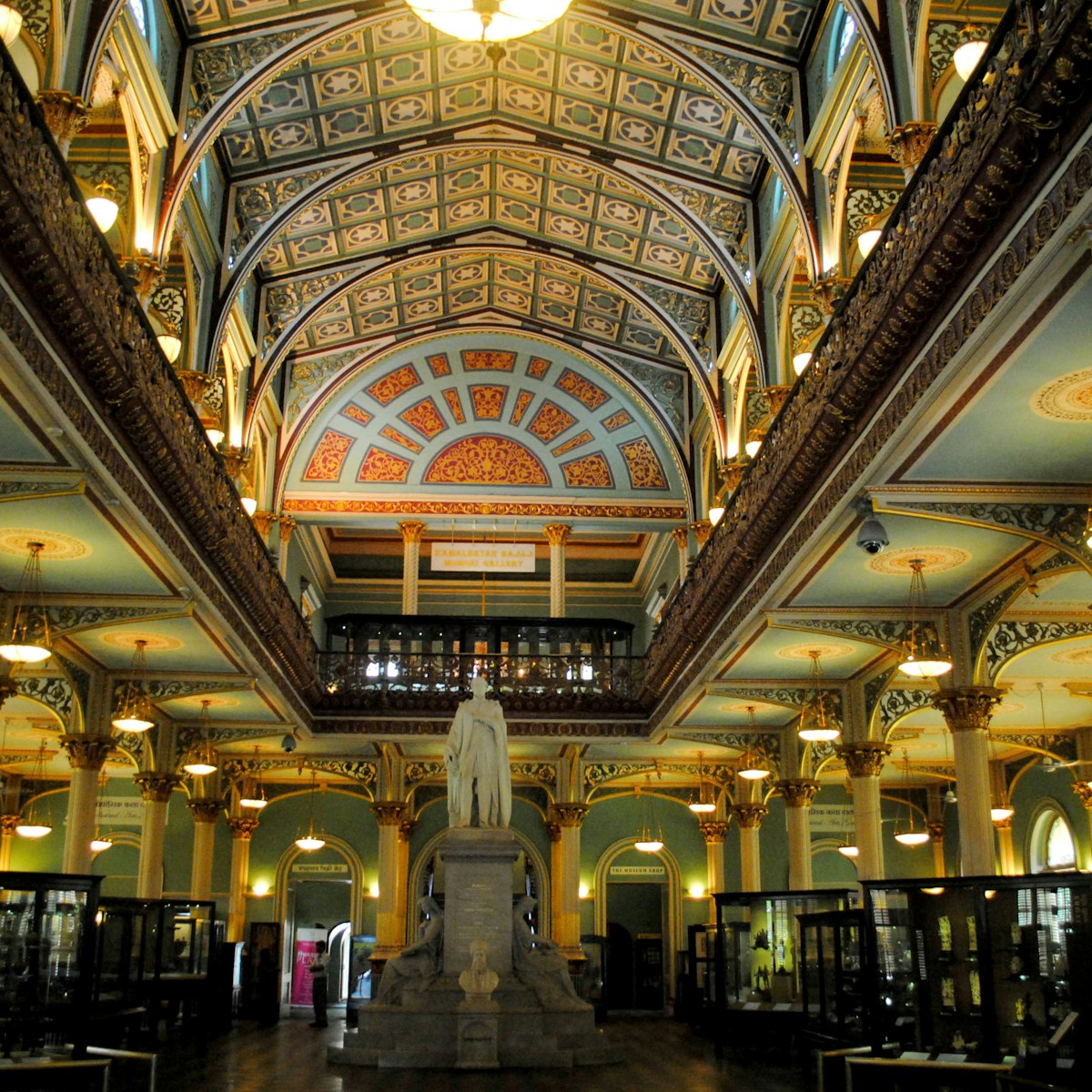
Dr Bhau Daji Lad Mumbai City Museum
This gorgeous museum, built in Renaissance revival style in 1872 as the Victoria & Albert Museum, contains 3500-plus objects centring on Mumbai’s history …
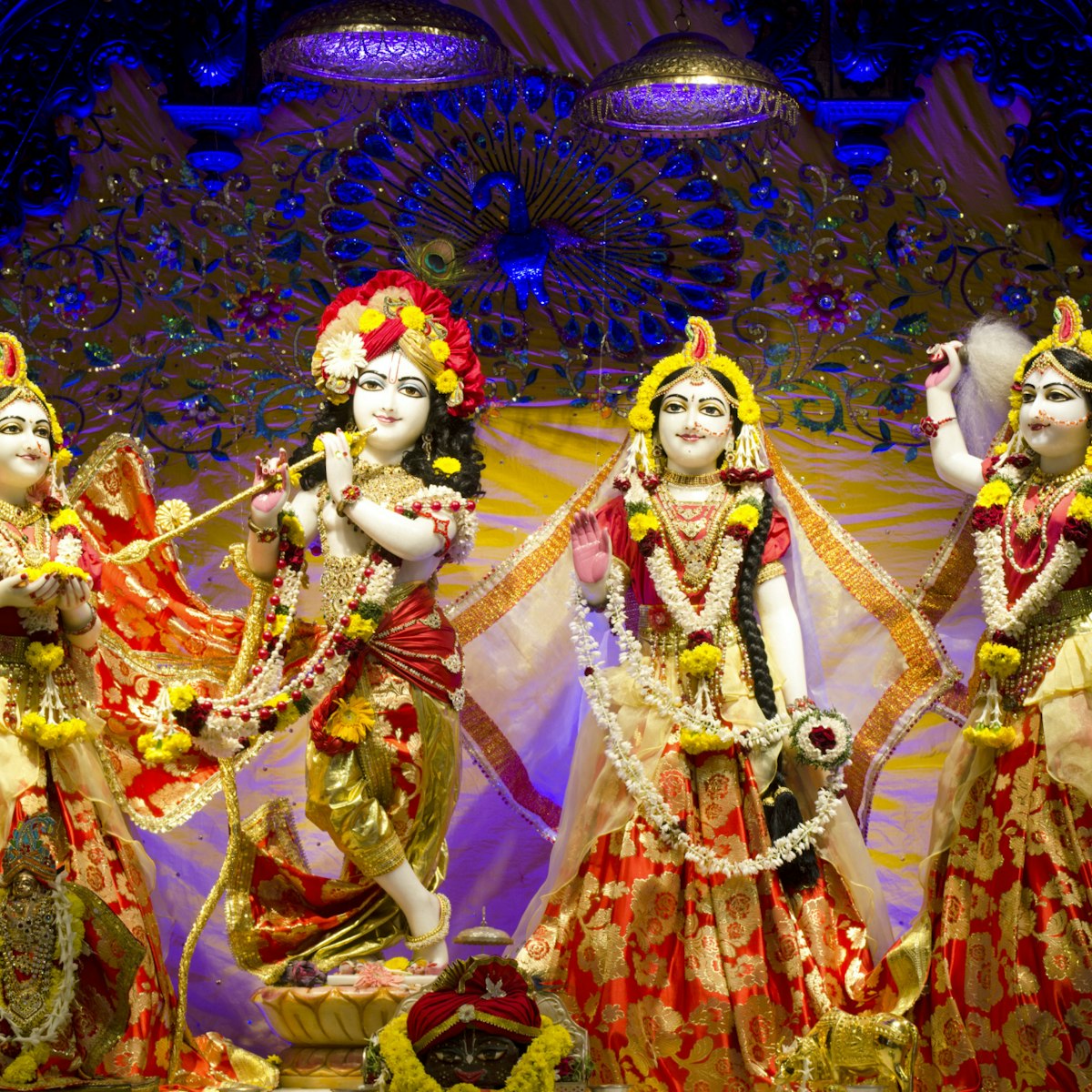
Iskcon Temple
Iskcon Juhu plays a key part in the Hare Krishna story, as founder AC Bhaktivedanta Swami Prabhupada spent extended periods here (you can visit his modest…

Sassoon Docks
No sense is left unaffected at Mumbai's incredibly atmospheric fishing docks, dating to 1875, the oldest and largest wholesale fish market in Mumbai. A…
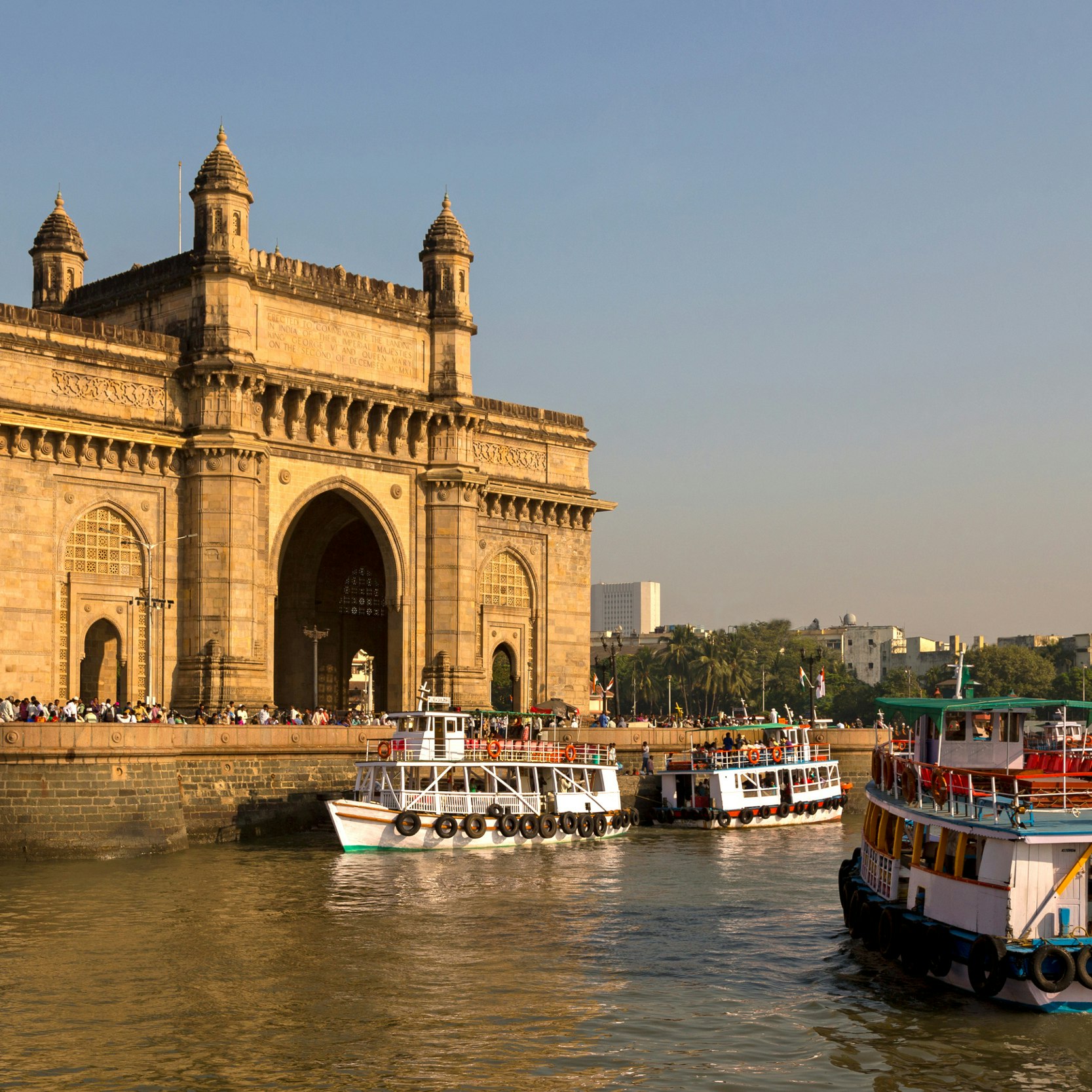
Gateway of India
This bold basalt arch of colonial triumph faces out to Mumbai Harbour from the tip of Apollo Bunder. Incorporating Islamic styles of 16th-century Gujarat,…
Plan with a local
Experience the real India
Let a local expert craft your dream trip.

Latest stories from Mumbai (Bombay)
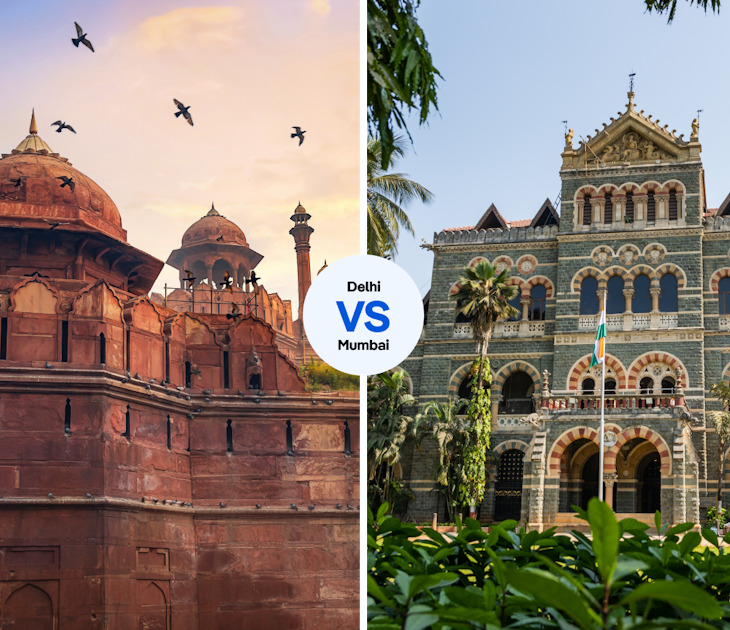
Tips & Advice
Nov 6, 2023 • 7 min read
Should you go directly to Delhi or make your way to Mumbai instead? We asked two writers to make the case for each Indian city.
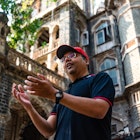
Apr 13, 2023 • 5 min read
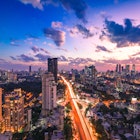
Jan 10, 2020 • 5 min read

Nov 18, 2019 • 3 min read

Oct 16, 2019 • 7 min read
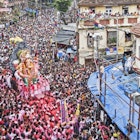
Sep 30, 2019 • 4 min read
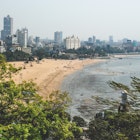
Sep 27, 2019 • 5 min read
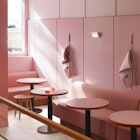
Sep 13, 2019 • 2 min read
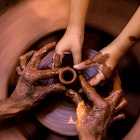
Apr 24, 2019 • 8 min read
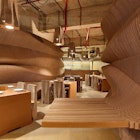
Mar 9, 2019 • 1 min read
in partnership with getyourguide
Book popular activities in Mumbai (Bombay)
Purchase our award-winning guidebooks.
Get to the heart of Mumbai (Bombay) with one of our in-depth, award-winning guidebooks, covering maps, itineraries, and expert guidance.

First Time in Mumbai Travel Guide (Bombay 2024) – What to Expect!
By: Author Sophie Pearce
Posted on Last updated: January 1, 2024
Categories MUMBAI , INDIA
This post may contain affiliate links. Please see my disclosure policy for details.
If it’s your first time in Mumbai, you may be a little apprehensive to visit. I don’t blame you.
Mumbai is truly the spirit of all that is India. It’s hot, dirty, crazy, beautiful, relentless and inspiring!
It’s the most populated city in the country and there is a massive divide between the ridiculously rich and the downright poor. But, somehow, it works.
Its wild energy is catching and it will make you want to come back for more. But, when you first enter its whirlwind, it can be hard to find your feet.
If this is the first place you land in India, it will definitely knock you for six (if only by the smells and sounds). So, it’s good to make sure you know where to head to get a piece of the action!
The city is spread out over a massive area and there are a fair few places which are paramount to ensure you get the most out of your visit.
Here is a first timers guide to help you on your travels in Mumbai.

How to travel to Mumbai in India
Mumbai has a brand spanking new international airport so it is easily reached from all over the globe if you’re arriving by plane.
Direct flights fly straight from London Heathrow daily and it’s a little cheaper to fly into here than Delhi if you did wish to start your Indian adventure in Bombay.
Domestic flights from Delhi, Bangalore, Chennai, and others fly into Mumbai daily.
By train or bus, it is a great stop after Goa or Kerala before you head up North. You will most likely pull up at the Terminus station and you’ll be in for a treat!
Click here for my list of Indian train travel tips

Where to stay in Mumbai
For me, the only place you should consider staying is at the Taj Mahal Palace.
Not only is it right by the Gateway of India but also it’s one of the most iconic hotels in the country.
This hotel goes way back in the history books. Being the Taj hotels flagship property, it was originally built by Jamsetji Tata in 1903.
Founder of the world-renowned mammoth Tata group.
He built the place in protest of the fact he couldn’t enter the other cities grand hotels such as Watson’s due to being Indian. The rest, they say, is history.
Being a 5 star “Heritage Grand” class hotel, it has attracted a wealth of stars through its doors over the years. Queen Elizabeth II, Amitabh Bachchan, Obama, and even John Lennon have all checked in to experience the luxury.
The hotel is split into two halves, the first being the historical Palace Wing. This is where you can stay in their heritage apartments and suites.
The second is their new modern tower wing which has provided more budget options for those wanting to experience ‘Tajness’ but not at the sacrifice of their bank balance!
The hotel is wall-to-wall perfection and it’s no secret that the Taj group cannot be beaten on hotel service! You will not regret staying here.
To read the full review of my stay at the Taj Mahal Palace here.

The top things to do for your first time in Mumbai
Exploring colaba.
Colaba is Mumbai’s heritage district and when you pull up, you can definitely see its colonial past seeping through.
The buildings, the cobbled streets, and the Gateway by the harbour all make the perfect setting for sightseeing.
So, I would suggest starting out here. Here’s a guide of what to get stuck into…
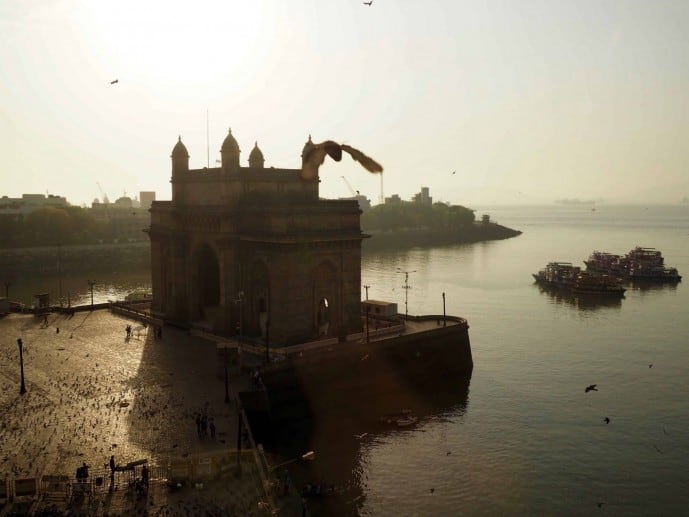
Gateway of India and Front Bay
This was my favourite location in Mumbai! This is where all the old historical buildings are and the tourist action is.
The Gateway is striking and the second most photographed attraction in India.
It’s right by the bustling Mumbai harbour and so you’ll see seagulls playfully chasing fishing boats pulling into shore.
If you were looking for a boat ride around the harbour, you can go via the tourist boats which run all day.
They take off when the boat is full and not before. One ticket will set you back 80 rupees for an hour-long cruise, it’s an extra ten to sit upstairs and enjoy the view.
Although I didn’t get around to it, there are daily boat rides to the Elephanta caves which lie around an hour away from the harbour shore.
These ferries are very popular and the queues can be lengthy, so make sure you set off early!
Unfortunately, Mumbai was subject to a series of attacks across the city in 2008 killing over 160 people.
One of the main targets was the Taj Mahal Palace in this area. Although it has nearly been a decade since it happened, the lasting effects are still here in the city. Security is in full force.
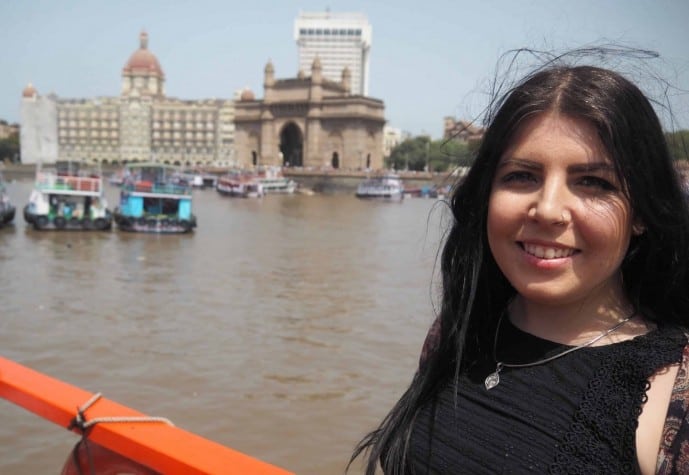
Chhatrapati Shivaji Terminus
This Terminus station could be a tourist attraction in its own right!
It’s a UNESCO world heritage site and one grandest train stations built by the British in the 19th century.
Mumbai has some of the most crowded and downright dangerous train journeys in the country.
I’ve seen a couple of videos of the rush hour on Youtube and, although hilarious, it looks deadly.
Most people come to witness the absolute carnage which comes with boarding a train at rush hour.
If you did fancy experiencing a ‘people massage’ on the train, opt for first class.
It will still be packed, but not as crowded as the normal carriages. There are also ladies’ carriages near the front which will be marked by a ladies face.
Personally, I would forget boarding at rush hour but it’s up to you!
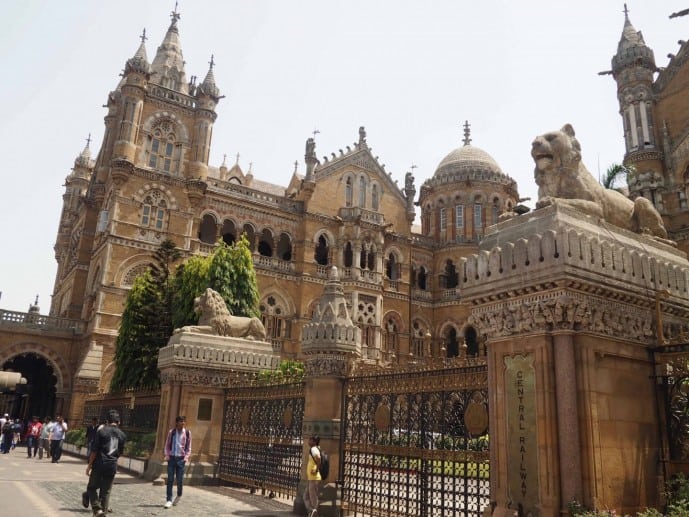
Leopold Cafe
Leopold cafe is a super tourist haunt which people love to hate. It’s a busy bustling cafe, full of life, film posters, and beer kegs! You may have to queue for a table but it’s so worth it!
The service from the staff here is amazing and it serves up some of the BEST butter chicken I’ve had in India. Seriously, get the butter chicken.
Punters opt for the cheap pitchers of Kingfisher beer. But, it’s also a great place for a cheap but huge meal from their extensive menu.
They serve up all sorts, from Caesar salad, pizza, traditional curries and pasta.
Sadly, this cafe was part of the Mumbai attacks in 2008. But, as a reminder and tribute, they’ve left the bullets in the walls.
It’s also the place that features in the famous novel Shantaram by Gregory David Roberts.
Click here to read my complete guide on the Leopold Cafe with more information

Prince of Wales Museum
Compared to most museums in India, the Prince of Wales museum is actually interesting!
It also has English translations on all the artifacts which is a big help.
For some reason, a lot of museums in India don’t have this. So, unless you can read Hindi you’ll just have to guess what it is. Or, hire a guide.
They have an awesome natural history section that showcases a tonne of extinct animal taxidermy.
My friend and I had a hilarious time here, we even got to stamp our own ancient Indian coin!

Celebrity spotting in Juhu & the Beach
If it is your first time in Mumbai you may not know that celebrity spotting is a regular occurrence in Mumbai as most of the Bollywood Stars choose to settle here with the big movie studios being in the area.
Film City is a popular attraction and movie tours are available daily for locals and tourists alike.
Here, they will show you all the studios and popular Bollywood filming locations.
You may even get the chance to see some filming!
A lot of westerners are scouted in Mumbai to appear in Bollywood movies, so if it was on your bucket list to be an extra you can do this here.
Rates are around 800 rupees a day and you’ll be hanging around a while. But, how cool would that be?
I didn’t go on a tour as the only place on my mind that I wanted to check out was the Amitabh Bachchan residence.
I’m a closet fan of his old Bollywood movies and loved his recent appearances in Hollywood.
He’s been in the Great Gatsby and Wes Anderson films like the Grand Budapest Hotel.
He has purchased many properties in the area, but the original is located in Juhu and you can easily spot it by the iconic plaque placed outside.
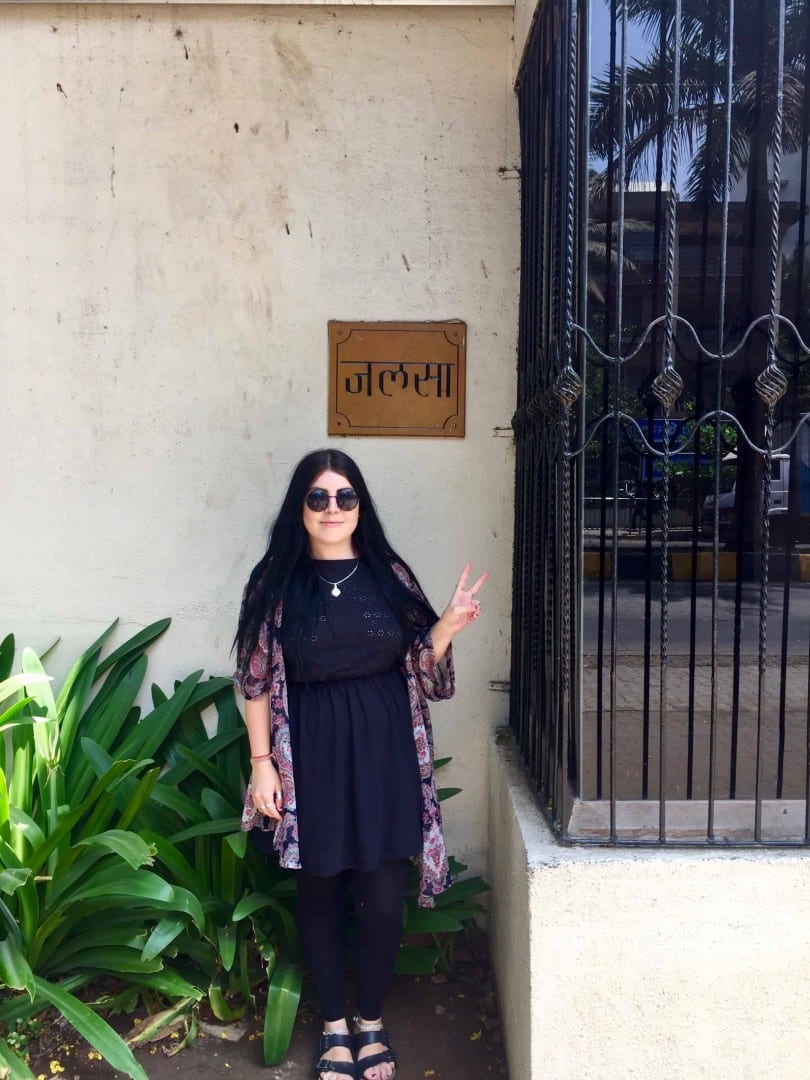
On Sundays, he makes a regular appearance for well-wishers!
Crowds of fans will gather around for hours to wait for him to show. I’ll definitely have to come back for that to catch a glimpse.
I met and had a chat with his security guards who were busy keeping watch of the area. I think that’s the closest I’ll get!
After you’ve finished stalking, you can relax on Juhu beach. It’s a long white sand beach which is rather small, but it’s a great place to relax for a while and dip your toes in the sea.
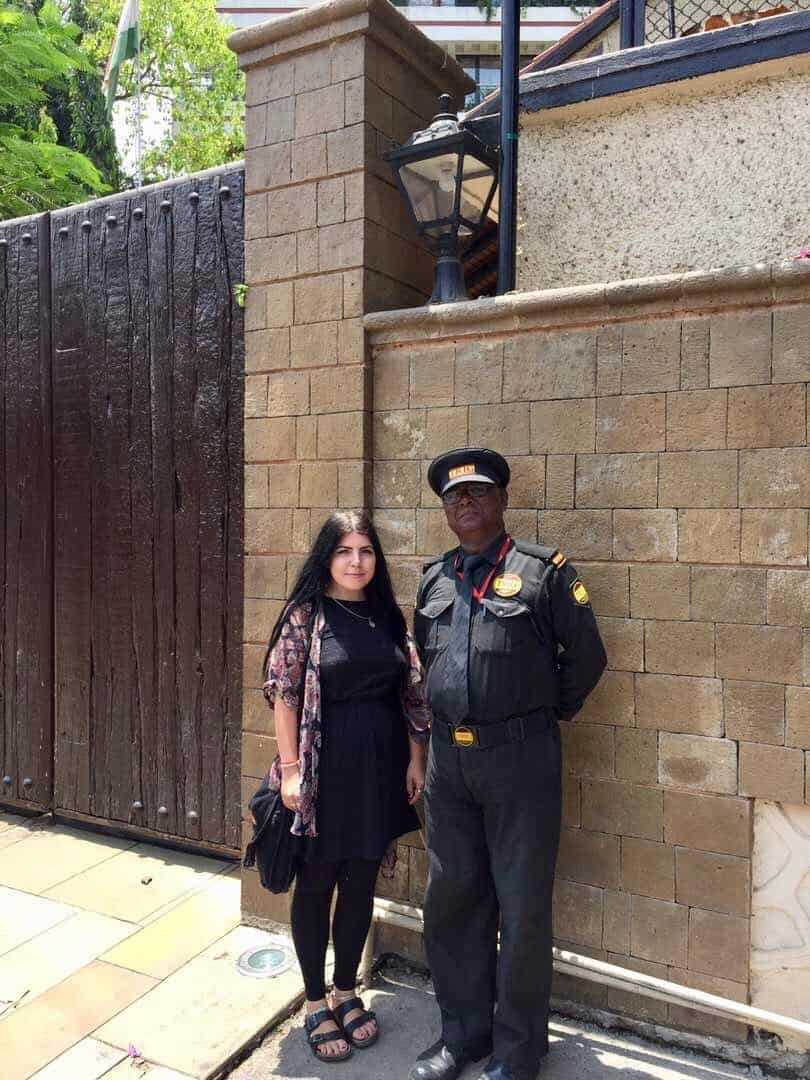
Nightlife in Mumbai: Worli
The nightlife in Mumbai is infamous and there are a good number of swanky bars to choose from in the city.
In India, the sky bar scene is still very new and so it was a great treat to finally find one with an amazing view of the Mumbai skyline.
Aer at Four Seasons in Worli is the perfect place to sip on cocktails at sunset and watch the city come to life with the twinkle of lights.
There is a happy hour on cocktails from 5 – 8pm and an entry charge after 8 pm on weekends but it’s worth the cash for those dreamy views!
For reservations, see their official website here.

High Tea at the Taj Mahal Palace Mumbai
If you’re like me, you love afternoon tea! There’s something about a posh tea and a cake that makes my heart sing!
If you weren’t checking into the Taj Mahal Palace for the night, you should definitely stop by for an afternoon of indulgence.
Although the traditional cake tiers aren’t on offer, the buffet-style ‘all-you-eat’ affair is perfect as then you can have what you like when you like.
There are savoury dishes and colourful cakes in all shapes and sizes. Truffles, dainties, and devilish sweets.
The smell of freshly made scones fill the air and you can have them with lashings of cream and jam.
My favourite part had to be the sandwich bar where you could order your finger sarnies from the chef. It was so worth the money at 1800 rupees including taxes.
Make sure you bring your sweet tooth along, you certainly will not leave hungry! To make a reservation at the palace, see here.

Save this first time in Mumbai travel guide for later
It’s almost criminal not to visit Mumbai if you come to India. It embodies all that India is.
It will inspire you, confuse you, insult all your senses and you’ll love it all the more!
I’ve only covered a fraction of the city in this guide and the highlights will be perfect for your first time travelling here.
However, there is so much more of this incredible city to explore.
Make sure you add Mumbai to your never-ending bucket list and get stuck in.
Heading around the south of India? Read more of my articles!
Goa beyond beaches guide
My one week in Kerala Itinerary
Things to do in Fort Kochi
Places to visit in Munnar
Amazing things to see in Alleppey
A guide for the Kerala backwaters
The best Munnar tea plantations
A complete guide for Pondicherry
Visiting Auroville from Pondicherry
Jan-Petter Janssen
Tuesday 30th of April 2024
Celebrity spotting is real for sure. I randomly spotted Aamir Khan at the beach.
Sophie Pearce
Wednesday 1st of May 2024
WHAT?! Omg I'm so jealous haha! Did you say hi?
Taylor Taracko
Sunday 21st of May 2023
We are immensely grateful for your remarkable content and the abundance of information provided. Following your recommendations, we diligently pursued all the activities mentioned in your blog during our visit to Mumbai. As an elderly couple, navigating these places on our own seemed challenging, but then we discovered the tour operator 'Magical Mumbai Tours'. Initially, we booked their Half-Day City Sightseeing Tour, and it turned out to be a phenomenal experience that surpassed our expectations.
The guide accompanying us on the tour felt like a living embodiment of history, sharing captivating stories and insights that enriched our understanding of Mumbai's heritage. The punctuality of the driver was commendable, and the air-conditioned car provided a much-needed respite from the weather. Exploring the city with ease, we were able to visit numerous places without any hassle. The tour truly exceeded our expectations, and as a result, we enthusiastically booked several more tours through their website for the remaining days of our Mumbai trip.
We genuinely appreciate the invaluable content you provided and the recommendation that led us to Magical Mumbai Tours. Their exceptional service, punctuality, and well-organised tours have greatly contributed to our overall enjoyment and convenience during our time in Mumbai.
Wednesday 28th of June 2023
Hi Taylor, wow thanks for sharing your experience. I'm so glad you had an informative and enlightening tour of Mumbai. It sounds like a great recommendation. Happy Travels, Sophie x
Bhagyashri Mahajan
Tuesday 8th of November 2022
Wow! What an amazing place! There is so much to see and do in Mumbai, This is such a brilliant guide that covers so much. Thank you for sharing the post.
Tuesday 15th of November 2022
Thanks for reading Bhagyashri! Sophie x
Pranay Kotian
Wednesday 11th of November 2020
Time we explore new destinations and get ourselves indulged in the beauty of mother nature. Bhandardara in Maharastra near Mumbai/ Nashik is the next new destination that gives one the calmness of nature and a subtle peace that will make you want to stay here forever.
Wednesday 18th of November 2020
Thanks Pranay, couldn't agree more! Sophie x
Krunal Misal
Saturday 29th of August 2020
Useful, informative and very well written content!
Thursday 3rd of September 2020
Thanks Krunal, appreciate the kind words! :) Sophie x
1 Day in Mumbai: The Perfect Itinerary for First-Timers (2024)

If you’re planning on spending 1 day in Mumbai (formerly known as Bombay) as a first-timer, then you have come to the right place!
Often dubbed the “City of Dreams”, Mumbai is famous for being the place where Bollywood movies are made. This is one of India’s major cosmopolitan cities and there are plenty of things to do here.
To be honest, you could easily spend weeks exploring this city, as it’s HUGE. If you’re short on time, like I was during my visit to Mumbai, however, one day will be enough to see the highlights.
So, from seeing the Gateway to India, one of the country’s most famous landmarks to exploring ancient caves and visiting markets, here are the best things to do in Mumbai in 1 day.
14 Best Things to Do in Mumbai in 1 Day
This itinerary is quite packed, so I recommend leaving early in the morning.
It’s good to know that #3 the Elephanta Caves, #6 the Prince of Wales Museum and #12 the slums are the most time-consuming places to visit in Mumbai. It all depends on your personal pace and interest, but I would suggest picking just one or two of these places so that you don’t have to hurry.
1. See the Gateway of India

The Gateway of India is one of India’s most famous landmarks . This monument was built in Indo-Saracenic style in 1924. It commemorates the landing of King George V and Queen Mary, who were the first British monarchs to visit India in 1911.
Later, this arch-formed monument was used as a symbolic ceremonial entrance for the Viceroys and the new Governors of Bombay. The Gateway of India overlooks the Arabian Sea, making it a good place for a symbolic entrance to the country.
Not that as this is Mumbai’s most popular tourist attraction, it tends to be quite crowded and if you’re a foreigner, people will ask for plenty of selfies!
Although the Gateway of India is impressive, my favourite thing about the place was the view of the Taj Mahal Palace Hotel, which brings me to my next point.
2. Check out the Taj Mahal Palace Hotel

You cannot miss this majestic building when you’re at the Gateway of India (#1 on this list). This is from where you will have the best view of the Taj Mahal Palace Hotel .
This luxurious hotel opened its doors in 1903 and, as you might have guessed, it was named after the famous Taj Mahal . Over the years, it has housed many famous guests, including presidents and movie stars.
The building in which the Taj is set is truly magnificent, and it’s good to know that, even if you don’t stay there, you can still visit the hotel’s shops and restaurants. There’s an entrance on the right side of the building.
3. Head to the Elephanta Caves

Located on Elephanta Island, the Elephanta Caves is a UNESCO World Heritage site right off the coast of Mumbai.
This small island is home to a collection of cave temples mainly dedicated to the Hindu god Lord Shiva. They date back to the mid-5th to 6th centuries AD and they’re full of beautiful rock-cut stone sculptures.
You can take a ferry from the Gateway of India (#1 on this list) to reach the Elephanta Caves. Do note that it’s a 1-hour boat ride to reach the island and you will have to make the journey back too. So, this is quite a time-consuming place to visit.
I decided to skip the Elephanta Caves because I only had 1 day in Mumbai and I was on a budget (a ticket costs 600 INR for foreigners + 260 INR for the ferry). I visited the Bandra neighbourhood instead, which is a nice alternative if you’re on a budget too (but more about this later).
4. Have lunch at Leopold Café

Located just a 10-minute walk from the Gateway of India, Leopold Cafe is one of Mumbai’s most iconic cafes . It opened its doors in 1871 and was named after King Leopold of Belgium , although Iranis opened it.
This cafe gained popularity after it was mentioned in the famous novel Shantaram and its sequel, The Mountain Shadow by Gregory David Roberts, and it’s a great place to take a break, have a drink or eat something. I had cheesecake here and it was delicious.
Sadly, Leopold Cafe was also a target during the Mumbai terrorist attacks of 2008 , and 10 people lost their lives here. The restaurant was severely damaged during the attacks but it has been restored.
>> Read: How to AVOID Getting Sick in India: 10 Tips You Need
5. Pass by Regal Cinema

Regal Cinema is just a 5-minute walk from Leopold Café (#4 on this list) and this is one of Mumbai’s oldest movie theatres . It opened its doors in 1933 and it’s one of the few old-style movie theaters that still operates in the city.
If you’re looking for a fun activity in the evening, going to the movies in Mumbai is one of these Indian travel bucket list experiences and Regal Cinema is a great choice. After all, Mumbai is the city where Bollywood movies are made.
6. Visit the Prince of Wales Museum (Chhatrapati Shivaji Maharaj Vastu Sangralaya)

If you’re a museum lover or a history buff, the Prince of Wales Museum, now called Chhatrapati Shivaji Maharaj Vastu Sangralaya (but that’s a mouthful), is one of the best places to visit in Mumbai.
This museum was founded by the British in the early 20th century and showcases the history of India from prehistoric to modern times . You will find thousands of artefacts here, which are categorized into three sections: art, archaeology and natural history.
Not only is this an interesting museum to visit, but the building it’s set in is quite spectacular too. It was designed in an Indo-Saracenic style of architecture by Scottish architect George Wittet.
7. Take a stroll in Oval Maidan and see the High Court and University

Oval Maidan is a 15-minute walk from the Prince of Wales Museum and this is a nice place for a short stroll. This is a recreational ground where locals love to hang out and play cricket.
The High Court of Bombay and the University of Mumbai are located right next to Oval Maidan and these are some pretty impressive pieces of architecture. Both of these buildings date back to the 19th century and they’re worth checking out while you’re there!
>> Read: 17 Things NOT to Do in India
8. Pass by the Flora Fountain

The Flora Fountain is just a 10-minute walk from Oval Maidan (#7 on this list) and it’s on the way to the Victoria Terminus (#9 on this list).
Although this is not one of these places in Mumbai that you absolutely have to see, it is a nice place to stop by if you’re in the neighbourhood. If you’re short on time, however, skip it.
Built in 1864, the Flora Fountains depicts the Roman goddess of flowers (Flora) and it’s surrounded by some beautiful heritage buildings.
9. Admire the Chhatrapati Shivaji Terminus ( Victoria Terminus)

The Chhatrapati Shivaji Terminus is one of these places that you cannot miss, even if you’re in Mumbai for just 1 day! This is my favourite piece of architecture in the city.
Formerly called the Victoria Terminus, this train terminus was built by the British in 1887 and it’s a UNESCO World Heritage site. It was built in Victorian Revival architecture with some traditional Indian elements blended into it.
Make sure not to miss the BMC building while you’re here (though it would be hard to). This 19th-century building is located right across the Victoria Terminus and it’s quite impressive too. BMC stands for Brihanmumbai Municipal Corporation and this is the governing civic body of Mumbai.
10. Visit Crawford Market

One of the best things to do in 1 day in Mumbai is to visit one of the city’s markets. Crawford Market, for example, is very close to the Victoria Terminus (#9 on this list) and this is one of the city’s best places to shop.
You will find anything here, from fruits and spices to beauty products and jewellery. This may just be the perfect place to find some nice Indian souvenirs !
Do make sure to negotiate the price before buying something here (you might want to do some research on how much something costs too) because vendors will quote very high prices if you’re a foreigner.
11. Stop by Dhobi Ghat

Dhobi Ghat is one of the most unique places to visit in Mumbai! This is believed to be the world’s biggest outdoor laundry place . There’s a similar place in Kolkata , but I found out about it too late. I will make sure to visit it next time I’m there, though, because I loved visiting Dhobi Ghat in Mumbai.
Mumbai’s Dhobi Ghat opened its doors in 1890 and, ever since, washers have been cleaning clothes and linen from hotels and hospitals here. If you visit the place in the early afternoon, you will see how the clothes are hanging outside to dry.
Dhobi Ghat is located right next to the Mahalaxmi railway station, so it’s pretty easy to reach. You will have a good view of the ghat from the station’s bridge.
12. See the slums

Mumbai is home to Asia’s largest slum – Dharavi , and it’s possible to visit this place. This has become an increasingly popular thing to do ever since the movie Slumdog Millionaire came out.
Visiting slums is a bit controversial, though, and there are pros and cons to it. On one side, it can help boost the economy if done ethically, but it can also feel a bit voyeuristic.
I chose not to visit the slums of Mumbai, as I have visited many slums in the past ( Jamestown in Ghana , for example, was a great experience) and I’m not sure how I feel about Dharavi becoming more and more of a tourist attraction. This being said, I saw some slums when I took the train in Mumbai. You will see some around Bandra Station, for example.
It’s completely up to you whether you visit Mumbai’s slums or not, though. In all honesty, if I hadn’t visited so many slums already, I would have visited Dharavi. It’s estimated that over 50% of the population of Mumbai lives here , so it will give you a better understanding of what life is like for many people in this city.
Although you can visit the slums by yourself, if you go on an ethical tour, the money will be used to benefit the people who live there. This is a nice way to give something back to this community.
Note that it takes around 2,5 hours to visit the slums. So if you have just 1 day in Mumbai, it’s better to skip the Elephanta Caves (#2 on this list) and/or the Prince of Wales Museum (#6 on this list) if you decide to head here.
13. Watch the sunset at Marine Drive

Marine Drive borders the Arabian Sea and it’s home to a long promenade which is a popular place to watch the sunset. Head to the Queen’s Necklace , from where you will have a view of Mumbai’s skyline, for the best view.
If you’re in Mumbai for just 1 day, I wouldn’t do as I do and not plan to walk the entire promenade. This is a 3.6-km long walk I slightly underestimated when I was in Mumbai. Although it is a nice place, I think the area around the Oval Maiden and Flora Fountain is a better place for a stroll. It will give you a better understanding of what Mumbai is all about too.
Note that, if you’re visiting the Queen’s Necklace for sunset, you probably won’t be the only one there as this is Mumbai’s most popular sunset spot. This being said, India is famous for being the world’s most populated country and being one of India’s major cities, there are no quiet sunset spots in Mumbai.
14. Relax at Chowpatty Beach

Chowpatty Beach is argued to be one of the best beaches in Mumbai and this is a nice place to relax a little after a busy day of exploring.
If you come here in the evening, the beach will be full of food stalls and locals enjoying some time off with friends. This is a nice place to soak up the atmosphere and end your day in Mumbai.
Note that swimming is strongly discouraged at Mumbai’s beaches because the water is very polluted.
Map of the Best Places to Visit in 1 Day in Mumbai
If You Have More Time

How long it will take to visit the places mentioned above depends on your personal pace, so if you have more time (or if you would like to switch things up a little according to your interests), the following places are worth visiting too:
- Mani Bhavan: This is the house where Mahatma Gandhi lived from 1917 to 1934. It has been turned into a museum where you can learn more about this freedom fighter’s life.
- Bandra: Often called the “Queen of Suburbs”, Bandra is the place where Bollywood actors, models and celebrities live. I strolled around this neighbourhood for a couple of hours and loved it!
- Mumbai Film City: Mumbai Film City is the place to be if you would like to visit Bollywood film sets. It’s good to know that this place can only be visited by guided tour .
- Four Seasons Rooftop Bar: If you would like to have a magnificent view of Mumbai’s skyline, the Four Seasons Rooftop Bar is the place to go! This is not the most affordable place to have a drink, but the view surely makes up for it.
I visited Haji Ali Dargah and the Siddhivinayak Mandir too, and if you’re short on time, these are places I would skip. Haji Ali is incredibly crowded and a little difficult to reach, and I think there are more impressive Hindu temples than the Siddhivinayak Mandir in India.

How to Get Around Mumbai
Many of the places mentioned in this post are within walking distance of each other. Some, however, are a bit further away. You can reach them by:
- Taxi: Taking a taxi is the easiest way to get around Mumbai. I use the Ola app , which works just like Uber, to book taxis in India because taxi drivers tend to charge foreigners 10 times the normal price.
- Train and metro: The Mumbai train and metro are super cheap. This is a good option if you’re on a budget, but it is a bit time-consuming.
- Scooter or bicycle: If you feel comfortable driving in Mumbai yourself, you can rent a scooter or a bicycle for the day. This is a fun and sporty way to explore the city.
As this itinerary is quite packed, I would recommend taking a taxi to reach places that are further away. You could also hire a taxi for the day, this will help you save some valuable time.
If you would like to walk or get around using the train, I would either skip the Elephanta Caves or the Prince of Wales Museum as these are the most time-consuming activities in Mumbai.
Note that there are no rickshaws in South Mumbai but you will find these in other neighbourhoods.

Best Time to Visit Mumbai
The best time to visit Mumbai is in the winter, between October and February . This is when the weather will be at its best. I visited Mumbai in January and, although it was pretty hot, it was manageable.
You will find an overview of the weather that you can expect during each season below:
- Winter (October to February): This is the best time to visit Mumbai. You can expect temperatures around 30°C (86°F) during winter.
- Summer (March to May): Summers are hot and humid in Mumbai. While the temperature is similar to during the winter (32°C or 89.6°F), it feels much hotter due to the humidity.
- Monsoon (June to September): While the monsoon season is slightly cooler (28° or 82.4°F), it’s very humid and on top of that, there will be a lot of rain, which can cause floods.

Where to Stay in Mumbai
There’s an abundance of hotels and hostels in Mumbai BUT this is the most expensive city in India , so if you’re on a tight budget, a dorm will probably be the best option.
If you only have 1 day in Mumbai, I recommend staying in Colaba (South Mumbai) or Bandra. This is where most tourist attractions are located. It all depends on your budget, but you will find my top recommendations below:
- Taj Mahal Palace Hotel (⭐ 9.1,$$$): This is Mumbai’s most iconic hotel, and if you’re looking for a luxurious stay in the City of Dreams, this is the place to go! It’s located right across the Gateway of India and features magnificent rooms with sea, city or pool views.
- Residence Hotel Fort (⭐ 8.3, $$): Ideally located within walking distance of Mumbai’s main tourist attractions, Residency Hotel Fort offers beautiful, clean rooms, and a delicious breakfast. It has all the amenities you might need.
- Locomo Mumbai (⭐ 8.4, $): Located in Bandra, close to Juhu Beach, this hotel offers affordable dorm rooms as well as private rooms. The place is clean, the rooms are nice and the location is great.

1 Day in Mumbai: Final Thoughts
And voila, that was it, my complete itinerary for 1 day in Mumbai! I hope that this post has inspired you and that you will have an amazing time exploring this bustling city.
Although you could easily spend a week in Mumbai and explore different neighbourhoods every day, one day will give you just enough time to see this city’s highlights.
Happy exploring!
Read more about India:
- 11 Cultural Destinations in India for Travellers
- 17 Things NOT to Do in India
- What to Wear in India: 5 Tips + Outfit Ideas
- The Ultimate India Travel Bucket List: 35 Ideas
44 Basic Hindi Sentences for Travellers in India
India travel planning guide.
🛫 Find the cheapest flights to India on Skyscanner . 🏨 Find the best accommodation via Booking or Hostelworld . 🛺 Download the Ola app to order a rickshaw or a taxi. 🚃 Use 12GoAsia to book trains and buses in India. 🚗 Rent a car with Discover Cars to get the best rates. 💰 Get travel insurance via VisitorsCoverage , one of the best-reviewed travel insurance companies. 👘 Check out my complete India packing list for females . 📋 Don’t forget to check if you need a visa to visit India.
Pin it for later: Did you find this post helpful? Save it on Pinterest and follow me on Instagram and Facebook for more travel tips and inspiration.

Laura Meyers
Laura Meyers is the founder of Laure Wanders. She was born in Belgium and has travelled to over 40 countries, many of them solo. She currently spends most of her time between Belgium and South Asia and loves helping other travellers plan their adventures abroad.
You may also like
2 days in udaipur itinerary: the white city..., jodhpur itinerary: 2 perfect days in the blue..., yellow cube houses of rotterdam: a useful guide..., wagah border ceremony, amritsar: a complete guide (2024), 30 best museums to visit in europe (2024), a visit to the sacred golden rock in..., rajasthan itinerary for 7 or 14 days (+..., 10 days in north india itinerary: the highlights, 15 famous landmarks in sri lanka to see....
That place looks insane, would love to be there right now!
Leave a Comment Cancel Reply
Save my name, email, and website in this browser for the next time I comment.
Mumbai, India
Book your individual trip , stress-free with local travel experts
- roughguides.com
- Travel guide
- Itineraries
- Local Experts
- Travel Advice
- Accommodation
Plan your tailor-made trip with a local expert
Book securely with money-back guarantee
Travel stress-free with local assistance and 24/7 support
Had an awesome experience. Must plan your travel with this company.
Ever since the opening of the Suez Canal in 1869, Mumbai has been the principal gateway to the Indian Subcontinent. A city famously described by Aldous Huxley as “the most appalling of either hemisphere”, travellers tend to regard time spent here as a rite of passage to be survived rather than savoured. But as the powerhouse of Indian industry and trade, and the source of its most memorable media images, the Maharashtrian capital can be a compelling place. Plan your trip to Mumbai with our guide to Mumbai - based on The Rough Guide to India , your travel guide for India.
The best travel tips for visiting Mumbai
Best things to do in mumbai, best areas to stay in mumbai, best restaurants and bars, how to get around, how many days do you need in mumbai, what is the best time to visit mumbai, how to get here, tailor-made travel itineraries for india, created by local experts.

13 days / from 1800 USD
A Trek Through Ladakh's Markha Valley
Trek through the Markha Valley, taking in the jaw-dropping Himalayan landscape, camp in traditional mountain villages, and discover hilltop monasteries. This unique journey combines the culture of the Buddhist faith with the natural beauty of the mountains and the hustle and bustle of Delhi.

15 days / from 2745 USD
Rajasthan: The Land of Kings
Experience the Land of Kings in luxury.This trip around Rajasthan takes you to Jaipur's palaces, sacred pilgrimage sites and deep into the desert hills. Breathe in the excitement of Delhi and visit the Taj Mahal. Then come nightfall, lay your head to rest in former royal palaces and magical forts.
_listing_1448379939234.jpeg)
6 days / from 785 USD
The Holy City of Varanasi
The flat, sunburnt plains of the Ganges River are India's breadbasket: a densely populated area, it is home to many of the country's greatest sights. See Delhi and all its treasures, then fly to Varanasi, the most sacred stretch of the Ganges and one of India's most intense and atmospheric places.
Mumbai's first impressions are defined by its space scarcity. Nestled on a narrow land strip stretching from the swampy coast into the Arabian Sea, it functions as an island connected to the mainland by bridges and causeways.
In just a few centuries, Mumbai has transformed from a fishing village into a bustling metropolis with over sixteen million residents, making it India's largest city and one of the world's largest urban centers. The city seems on the verge of bursting at its seams as commuters flood the boulevards and bustling bazaars are filled with cart-pullers.
Ironically, Mumbai's enduring ability to generate wealth is the root cause of its population woes and pervasive poverty. The city alone contributes one-third of India's tax income, operates the nation's busiest port, and boasts the most prolific film industry globally.
Signs of prosperity are abundant, from the towering office buildings in Nariman Point (known as Maharashtra's Manhattan) to the fashionably attired youth in Colaba's trendy nightlife spots. However, Mumbai's success story has a darker side, with a well-documented wealth gap. Hundreds of economic refugees arrive daily from the Maharashtra countryside, with some finding employment and housing while others add to the already overcrowded streets or reside in Asia's largest slums.
Although Mumbai presents challenges, it is not the arduous experience some travelers portray it to be. Once you overcome the initial obstacle of finding accommodation, you can embrace the city's vibrant pace and cosmopolitan atmosphere.
Considering visiting Mumbai? Browse our customisable India itineraries , or talk to our local travel experts .

Mumbai's Chhatrapati Shivaji Terminus, a UNESCO World Heritage Site © Shutterstock
There is no shortage of things to do in Mumbai and you can easily spend a week in this city without feeling bored. To make your choice easier, we have listed the best things to do in Mumbai.
1. See the Gateway of India
Commemorating the visit of King George V and Queen Mary in 1911, Colaba’s principal monument is the Gateway of India, India’s own honey-coloured Arc de Triomphe.
Featured in countless Bollywood movies, it was built in 1924 by George Wittet. His brief was to combine the grandeur of a Roman triumphal arch with motifs from Hindu and Muslim architecture.
The resulting structure, every bit a symbol of “power and majesty”, was originally intended to be a ceremonial disembarkation point for passengers alighting from P&O steamers.
Ironically, it's more closely associated with a pivotal moment in August 1947. Amid much ceremony, the last British soldiers on Indian soil marched to their ship as the Union Jack was lowered to cheers from a vast crowd.
The best time to visit is the hour around sunset. At this time, thousands of visitors mill about the archway and plaza.

Gateway of India and Taj Mahal Palace Hotel, Mumbai © Shutterstock
2. Take in the Taj Mahal Palace and Tower
Local pride in the face of colonial oppression is the subtext of the Taj Mahal Palace and Tower complex. It's located directly behind the Gateway.
Its patron, the Parsi industrialist J.N. Tata, is said to have built the old Taj as an act of revenge after he was refused entry to what was then the best hotel in town — the “whites only” Watson’s. The ban proved to be its undoing. Watson’s disappeared long ago, but the Taj still presides imperiously over the seafront.
Though the preserve of Mumbai’s jet set, visiting cricket teams and heads of state, lesser mortals can experience the tea lounge, shopping arcades and air-conditioned lobby. There’s also a fabulously luxurious loo off the corridor to the left of the main desk.
3. Explore Chhatrapati Shivaji Museum
Chhatrapati Shivaji Maharaj Vastu Sangrahalaya is among Mumbai's most distinctive Raj-era constructions. Standing grandly in its own gardens, the building is crowned by a massive white Mughal-style dome. Beneath this, one of India’s finest collections of paintings and sculpture is spread across three floors.
The building was designed by George Wittet, of Gateway of India fame, and stands as the epitome of the hybrid Indo-Saracenic style. In its day, it was regarded as an “educated” interpretation of fifteenth- and sixteenth-century Gujarati architecture, mixing Islamic touches with typically English municipal brickwork.
The foreigners’ ticket price includes an audio tour, which you collect at the admissions kiosk inside. Be aware that the heat and humidity inside the building can be a trial, so best to visit early in the day.

Chhatrapati Shivaji Maharaj Vastu Sangrahalaya, Mumbai, India © Shutterstock
4. Uncover culture and cricket in Kala Ghoda
North of Colaba, Kala Ghoda (“Black Horse”) district is named after the large equestrian statue of King Edward VII that once stood on the intersection of MG Road and Subhash Chowk.
Flanked by Mumbai’s principal museum and art galleries, in recent years the neighbourhood has been rebranded as a cultural enclave. This came as a result of the visual arts that have thrived here since the 1950s, and also from a desire to preserve its historic buildings.
On Sundays in December and January, the Kala Ghoda Fair sees portrait artists, potters and mehendi painters plying their trade in the car park fronting the Jehangir Art Gallery.
Northeast of Kala Ghoda, you'll find the expanse of Oval Maidan. Here impromptu cricket matches are held almost every day, against a backdrop of giant palms and even taller Raj-era buildings.
Green during the monsoons and parched yellow for the rest of year, its eastern side is flanked by some of Mumbai’s finest Victorian piles. These date from the pinnacle of British power.

Kala Ghoda statue, Mumbai © Shutterstock
5. Discover the Fort district
East of Oval Maidan stretches the spectacular Fort district, site of Mumbai’s original British settlement and the first East India Company fort.
The sloping ramparts, moats and fortified gateways were pulled down in the mid-nineteenth century following the demise of the French threat to British supremacy in India. That said, this is still the commercial hub of southern Mumbai.
It's a great area for aimless wandering, with plenty of cafés, department stores and street stalls crammed between imposing Victorian buildings.
6. See Chhatrapati Shivaji Terminus (Victoria Terminus)
Inspired by St Pancras Station in London, F.W. Stevens designed Victoria Terminus — perhaps the barmiest of Mumbai’s buildings — as a paean to “progress”. Built in 1887 as the largest British edifice in India, it’s an extraordinary amalgam of domes, spires, Corinthian columns and minarets.
In keeping with the re-Indianisition of the city’s roads and buildings, this icon of imperial architecture has been renamed Chhatrapati Shivaji Terminus in honour of the Maratha warlord. Note that locals mostly still refer to it as VT (pronounced “vitee”).
A “British” lion and Indian tiger stand guard at the entrance, and the exterior is festooned with sculptures executed at Bombay Art School by Indian students of John Lockwood Kipling, Rudyard’s father. Among them are mythical beasts, monkeys, plants and medallions of important personages.
To minimise the sun’s impact, stained glass was employed, decorated with locomotives and elephant images. Above it all, the statue of “Progress” stands atop the massive central dome.

Chhatrapati Shivaji Terminus, formerly Victoria Terminus Station, Mumbai © Shutterstock
7. Explore Central Bazaar District
Lining the jumble of streets beyond Lokmanya Tilak Road hosts Mumbai’s bustling Central Bazaar District. This serves a fascinating counterpoint to the wide and Westernised streets of downtown Mumbai. In keeping with traditional divisions of guild, caste and religion, most streets specialise in one or two types of merchandise.
If you lose your bearings, the best way out is to ask someone to wave you in the direction of Mohammed Ali Road, the busy road through the heart of the district. From here you can hail a cab.
8. Head to Haji Ali’s Tomb
Occupying a small islet in the bay just north of the Mahalakshmi Temple is the mausoleum of the Muslim saint, Afghan mystic Haji Ali Bukhari. The site is a great place to head on Thursday and Friday evenings. At this time, large crowds gather around the promontory to watch the sunset and listen to live qawwali music.
The tomb is connected to the mainland by a narrow concrete causeway, only passable at low tide. When not immersed in water, its entire length is lined with beggars supplicating passers-by and chanting verses from the Koran. Non-Muslims are welcome, but all visitors need to keep well covered, and a headscarf should be worn by women.

Haji Ali Dargah — a famous tomb and a mosque in Mumbai © Shutterstock
9. Board a boat to Elephanta island
An hour’s ride northeast across Mumbai harbour from Colaba, the island of Elephanta offers the best escape from the seething claustrophobia of the city. That said, you'll want to time your visit to avoid the weekend deluge of day-trippers.
Populated by a small fishing community, the island was originally known as Gherapura, the “city of Ghara priests”. In the sixteenth century it was renamed by the Portuguese after the carved elephant they found at the port. This is now on display outside the Dr Bhau Dadji Lad Museum in Byculla. Its chief attraction is its unique cave temple. Its massive Trimurti (three-faced) Shiva sculpture is as fine an example of Hindu architecture as you’ll find anywhere.
Planning to visit Mumbai? Discover five ways to live like a local in the city.

Elephanta Caves, Mumbai, India © Shutterstock
Finding accommodation at the right price when you arrive in Mumbai can be a real problem. Budget travellers, in particular, can expect a hard time finding decent but affordable accommodation. The best low-cost places tend to fill up days or weeks in advance, so you should book well ahead to avoid a stressful, sweaty room hunt. Tariffs in mid-range and upmarket places are also especially high for India. State-imposed luxury tax (currently ten percent), and service charges levied by the hotel itself further bump up bills.
Colaba and Kala Ghoda
A short ride from the railway stations, Colaba makes a handy base. It's also where the majority of foreign visitors head first. Accommodation types in Colaba are pretty varied. Here you can take your pick from several small boutique joints and guesthouses, alongside international business hotels.
In the market for luxury? Bed down in the opulent Taj Mahal Palace and Tower. Travelling on a budget? Backpacker Panda India's newest chain of cool backpacker hostels has its flagship in Colaba. With its bounty of galleries and cafes, Kala Ghoda is another great base to consider.
Browse places to stay in Colaba.
Gateway of India
The streets around the Gateway of India are chock-full of accommodation. In addition, the area also offers more in the way of food and entertainment than neighbouring districts.
Browse places to stay around the Gateway of India.
Marine Drive
At the western edge of the downtown area, swanky Marine Drive (officially Netaji Subhash Chandra Marg) is lined with four- and five-star hotels. Most of these take advantage of the panoramic views over Back Bay, and the easy access to the city’s commercial heart.
Browse places to stay in Marine Drive.
Want to travel better ? Read up on how to enjoy a more sustainable stay in Mumbai.

Marine Drive, Mumbai © Skreidzeleu/Shutterstock
Mumbai is crammed with interesting places to eat, from glamorous rooftop lounge bars to hole-in-the-wall kebab shops. The cafés, bars and restaurants of Colaba encompass just about the full gamut of possibilities.
The city is renowned for distinctive street foods, especially bhel puri. This quintessentially Mumbai masala comprises puffed rice, deep-fried vermicelli, potato, puri pieces, chilli paste, tamarind water, chopped onions and coriander.
Colaba Causeway is the focus of the travellers’ and local students’ social scene. To sample the cutting edge of the city’s nightlife, you’ll have to venture to the suburbs. Here the trendiest places have turned the city’s draconian licensing laws to their advantage by serving gourmet food to complement imported beers, wines and cocktails.
Despite a 1.30am curfew (only clubs within hotels are allowed to carry on later), Mumbai’s clubbing scene remains the most full-on in India. Door policies and dress codes tend to be strict — “no ballcaps, no shorts, no sandals”.
Best restaurants and bars in Colaba
- All Stir Fry, Gordon House Hotel : a cool restaurant specialising in build-your-own meals from fresh veg, meat, fish, noodles and sauces.
- Bademiya, behind the Taj Mahal Palace and Tower : a legendary Colaba kebab-wala serving flame-grilled chicken, mutton and fish steaks, plus veggie alternatives.
- Havana, Gordon House Hotel: a Cuban-style café and bar with wooden railway sleepers and hand-painted signs of Che and Castro.
Best restaurants in Kala Ghoda
- Khyber : a romantic Mughlai restaurant offering creamy curries with sublime blends of spices.
- The Pantry: a great option for a heat-beating light bite or gourmet brunch.
Best places to eat and drink in Crawford Market and the Central bazaars
- Joshi Club : this eccentric thali canteen serves what many aficionados regard as Mumbai’s tastiest Gujarati-Marwari meals.
- Badshah Juice and Snack Bar : delicious kulfi, and freshly squeezed fruit juices.
Love your grub? Discover the best traditional Indian street food , and read up on eating and drinking in India .

Bhel puri © Shutterstock
During peak hours in Mumbai gridlock is the norm. With that in mind, brace yourself for long waits at junctions if you take to the roads by taxi or bus. Local trains are faster, but can be a real endurance test, even outside rush hours.
Mumbai’s local trains carry an estimated 7.5 million commuters each day between downtown and the sprawling suburbs in the north. Carriages are packed for most of the day, with passengers dangling precariously out of open doors to escape the crush. Peak hours (approximately 8.30–10am & 4–10pm) are worst of all. So, you'll want to make your way to the exit at least three stops before your destination.
Women are marginally better off in the “ladies carriages". Travel during non-peak hours (11am–3.30pm) can be comparatively easier.
One line begins at CST (VT), running up the east side of the city. The other leaves Churchgate, travelling via Mumbai Central and Dadar to Santa Cruz and beyond. Services depart every few minutes from 5am until midnight, stopping at dozens of small stations.
The Mumbai Metro connects Versova in the west to Ghatkopar in the east, a 12km elevated network that stops at twelve stations en route. The key stations are Andheri, Western Express Highway and Airport Road, close to the international airport and the clutch of hotels around it.
BEST operates a bus network of labyrinthine complexity, covering every part of the city. Recognising bus numbers in the street can be more problematic — numerals are written in Marathi, although in English on the sides.
Avoid rush hours at all costs and aim, wherever possible, for the ”Limited” (“Ltd”) services, which stop less frequently. Buses hardly come to a standstill at stops, so it's not uncommon to run alongside and jump on. Tickets are bought from the conductor on the bus.

Local train in Mumbai © Josemon_Vazhayil/Shutterstock
Given its overwhelming busyness, its fair to say that you might only need a day or two in Mumbai. That will allow you enough time to explore its top attractions, among them the Gateway of India, Haji Ali’s Tomb and Elephanta Island's cave temple.
After doing that, consider taking a few days to explore the wider Maharashtra region. Known for its cave temples and monasteries. Nasik also comes recommended for its ancient culture and fine wine. You could also visit Gandhi’s former ashram in Sevagram.
Looking for inspiration for your trip? Check our India itineraries , or talk to our India travel experts .

View of Malabar hill, Mumbai, at sunset © O'SHI/Shutterstock
As a coastal city, the temperature in Mumbai hovers around 30ºC for much of the year. All things considered, the best time to visit Mumbai is between October and March, when it’s not too humid.
If possible, avoid visiting the city during April and May when it’s particularly hot and humid. Also avoid the monsoon (June–Sept). This often causes flooding in the low-lying areas and disruptions to public transport.
Festivals in Mumbai
You could consider timing your visit to Mumbai to coincide with one of the city's big festivals.
- Kala Ghoda Arts Festival (Feb)
- Elephanta Festival (Feb/March)
- Ganesh Chaturthi (Aug/Sept)
- Krishna Janmashtami (Aug)
For more on when to visit, read our full guide to when to go to India .
There ore dozens of ways to get to Mumbai. These are your best bets.
International flights
Mumbai’s busy international airport, Chhatrapati Shivaji, was impressively revamped in 2015. Its iconic T2 (Terminal 2) is (surprisingly) home to India’s largest public art programme. Check-in is located in the departure area (Level 4), and all airlines have offices outside the main entrance.
While many of the more upmarket hotels send out courtesy coaches or chauffeur-driven cars to pick up and drop off their guests, most people use the prepaid taxi desk in the arrivals hall.
Domestic flights
Confusingly, internal flights also land at both terminals in Mumbai’s international airport, 26km to the north of downtown. Vistara and Air India are the only airlines that use T2 for domestic routes. All others use Terminal 1.
If you’re transferring directly from Terminal 1 to Terminal 2 for an international flight, take the free “fly-bus”. This shuttles every 30min between the two terminals — look for the transfer counter in your transit lounge. Note you may be required to collect and re-check your baggage.
Three main rail networks service Mumbai:
- Western Railways covers Gujarat , northern Madhya Pradesh and Rajasthan .
- Central Railways covers Maharashtra and southern Madhya Pradesh.
- The Konkan Railway runs south down the coast to Goa and beyond.

Mumbai train station is a swirl of commuters during peak hours © Shutterstock
New to India? Read our first-timer’s guide to India , and get yourself The Rough Guide to India to start planning your trip.
Going it alone? Arm yourself with our tips for backpacking India .
Related articles from the blog
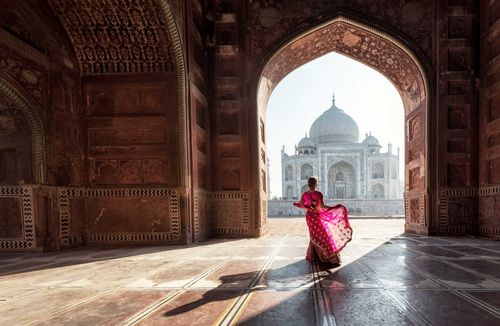
Discover more places in India

- Travel Guide Morocco
- Travel Guide Namibia
- Travel Guide South Africa
- Travel Guide China
- Travel Guide India
- Travel Guide Indonesia
- Travel Guide Japan
- Travel Guide Laos
- Travel Guide Malaysia
- Travel Guide Myanmar (Burma)
- Travel Guide Nepal
- Travel Guide Philippines
- Travel Guide Singapore
- Travel Guide South Korea
- Travel Guide Sri Lanka
- Travel Guide Taiwan
- Travel Guide Thailand
- Travel Guide Australia
- Travel Guide Fiji
- Travel Guide New Zealand
- Travel Guide Belize
- Costa Rica Travel Guide
- Travel Guide Cuba
- Travel Guide Guatemala
- Travel Guide Honduras
- Travel Guide Jamaica
- Travel Guide Nicaragua
- Travel Guide Panama
- Travel Guide Puerto Rico
- Travel Guide Trinidad and Tobago
- Travel Guide Albania
- Travel Guide Austria
- Travel Guide Belgium
- Travel Guide Bosnia-Herzegovina
- Travel Guide Bulgaria
- Travel Guide Cyprus
- Travel Guide Czechia (Czech Republic)
- Travel Guide Denmark
- Travel Guide England
- Travel Guide Estonia
- Travel Guide Finland
- Travel Guide France
- Travel Guide Germany
- Travel Guide Greece
- Travel Guide Hungary
- Iceland Travel Guide
The Rough Guides to India and related travel guides
In-depth, easy-to-use travel guides filled with expert advice.

Find even more inspiration here
Planning your own trip prepare for your trip.
Use Rough Guides' trusted partners for great rates
- History Culture Heritage
- Where to Stay
- See & Do
- Where to stay
- Travel Tips

written by Joanne Owen
updated 05.07.2023
Joanne is a Pembrokeshire-born writer with a passion for the nature, cultures and histories of the Caribbean region, especially Dominica. Also passionate about inspiring a love of adventure in young people, she’s the author of several books for children and young adults, hosts international writing workshops, and has written articles on the Caribbean and inspirational community initiatives for Rough Guides. Follow her @JoanneOwen on Twitter and @joanneowenwrites on Instagram.
Ready to travel and discover India?
Get support from our local experts for stress-free planning & worry-free travels.
- Travel advice
- Maharashtra

- Destinations
Mumbai Travel Guide
Developed by the British in the eighteenth century, Bombay (as it was previously called) literally meant "A Good Bay." The city has a tangible sense of vibrancy with the hustle and bustle that embodies India. Its southern tip, which was the origin of the city, is filled with Gothic architecture including the magnificent Chhatrapati Shivaji Terminus, the Rajabai Clock Tower and the Taj Mahal Hotel. This city hangs on to its past yet races towards the future which is why there are both the age-old thieves market and laundry ghats to explore, as well as modern malls; traditional street food to sample as well as world cuisine in fine dining restaurants. — Rishad Mehta
- Terms of Use
- Privacy Policy
- Your US State Privacy Rights
- Children's Online Privacy Policy
- Interest-Based Ads
- About Nielsen Measurement
- Do Not Sell or Share My Personal Information
- Nat Geo Home
- Attend a Live Event
- Book a Trip
- Inspire Your Kids
- Shop Nat Geo
- Visit the D.C. Museum
- Learn About Our Impact
- Support Our Mission
- Advertise With Us
- Customer Service
- Renew Subscription
- Manage Your Subscription
- Work at Nat Geo
- Sign Up for Our Newsletters
- Contribute to Protect the Planet
Copyright © 1996-2015 National Geographic Society Copyright © 2015-2024 National Geographic Partners, LLC. All rights reserved
- Destinations

Mumbai Travel Guide: When to Go, Where to Stay, What to Do, & More!
Mumbai, the megacity on the Arabian Sea, is known for many things – iconic landmarks like Gateway of India, Hindi cinema referred to as Bollywood, Asia’s oldest stock exchange, not to mention its wild energy and fast-paced life. The whirlwind of activity in Mumbai can be overwhelming at first glance. But when you eventually get the hang of this city, you will admire the beauty underlying the chaos.
The largest city in India, Mumbai is home to more than 20 million people. Interestingly; Mumbai which boasts of having the most millionaires in India is the same city where half the population lives in the slums. Its cosmopolitan culture reflects the diversity of India and upholds the spirit of inclusivity. The City of Dreams (as it is popularly called) embraces everyone with an open heart; be it career seekers looking forward to settling here or tourists booking flights to Mumbai for a first-hand experience of this vibrant place. If you are traveling to this city for the first time, here’s an all-inclusive Mumbai travel guide for you. From the best places to stay (depending on your budget) to the best of the city’s attractions, this travel guide to Mumbai covers everything.
RELATED ARTICLES MORE FROM AUTHOR
Phoenix Sky Harbor Airport to Have a New Terminal to Ease Passenger Traffic
Things You Can Do During LAX Airport Layover
New Emirates Amenity Kits Introduced for First and Business Class Passengers in Summer
7 Reasons Why You Must Choose American Airlines Premium Economy When Traveling to India
What Are Lounges? Your Guide to Know How Airport Lounges Work
Smart Tips to Find Cheap Summer Flights
Leave a reply cancel reply.
Save my name, email, and website in this browser for the next time I comment.
EVEN MORE NEWS
Phoenix Sky Harbor Airport to Have a New Terminal to Ease...
Essential Rules to Carry Electronics from USA to India
Air India Baggage Allowance Reduced to 15Kg for Lowest Fare Category
Popular category.
- United States 287
- Airlines 135
- Destinations 110
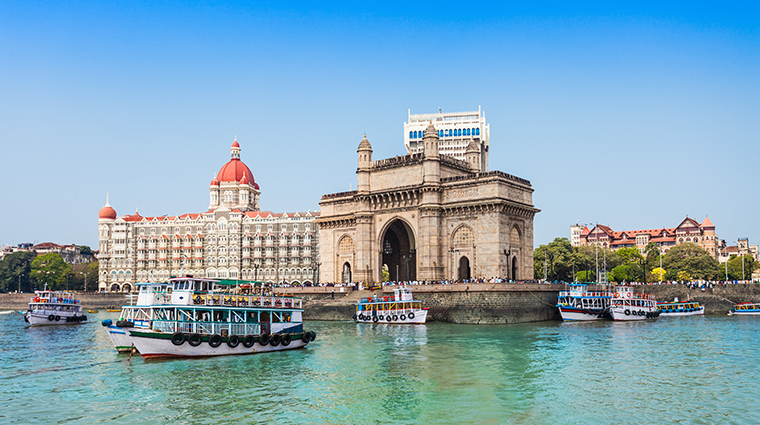
Dreaming of your next trip?
I agree to the Forbes Travel Guide Privacy Policy , Terms , and Cookie Policy . I understand I can withdraw my consent at any time.
Sign up for our newsletter
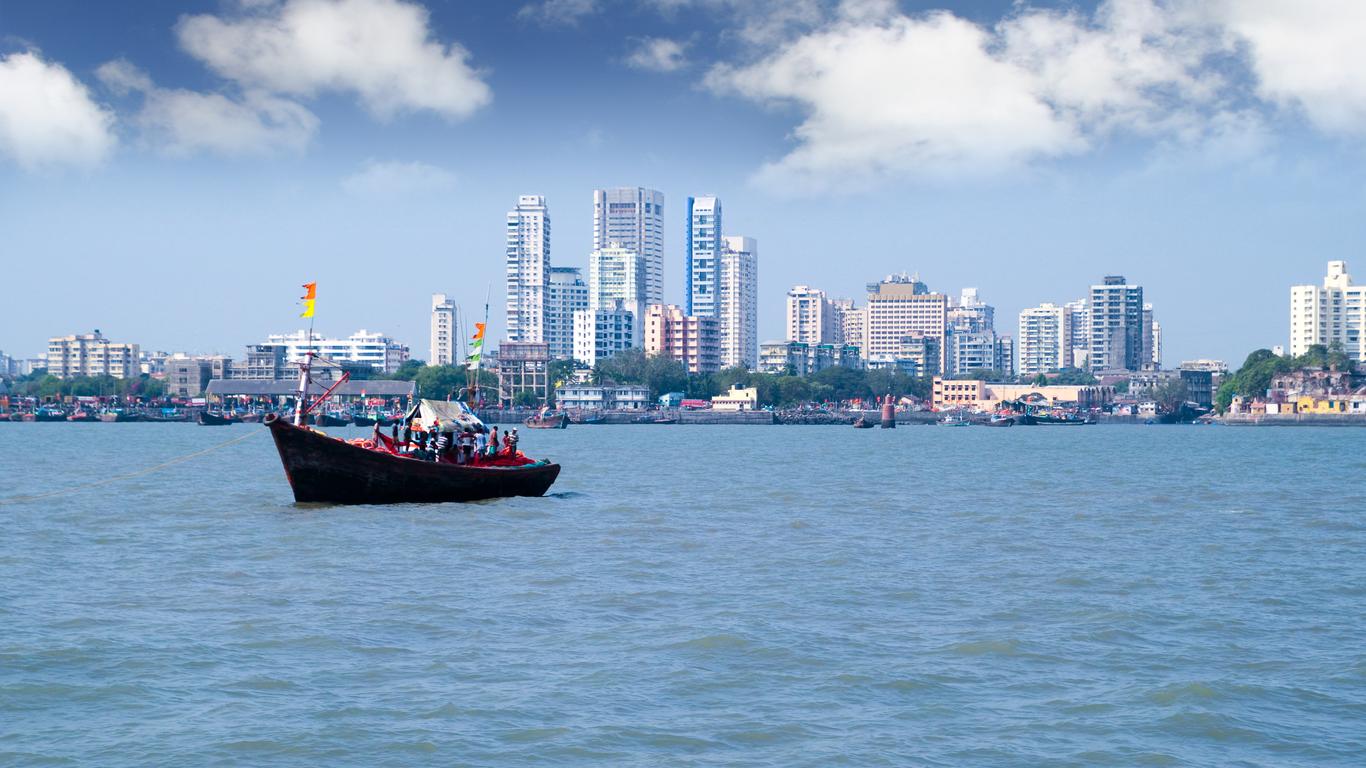
Mumbai travel guide
Mumbai tourism | mumbai guide, you're going to love mumbai.
Ancient history and the modern world collide in Mumbai, a city that is big, noisy, and full of life. It's a glamorous city, home of the Bollywood film industry and the fashion capital of India. The city's population is estimated at more than 18 million people, and if you include the metropolitan area, more than 20 million.

Mumbai has a storied history that has seen a succession of Indian empires, then Portuguese rule, and subsequently British colonization before independence in the 20th century.
From the many well-preserved relics of the British Raj, including the famous Gateway of India stone arch that was built in 1924, to the bright lights of Bollywood, Mumbai is an adventure waiting for you to discover.
Top 5 Reasons to Visit Mumbai
There are many ways you can check out the city's vast history. Elephanta Island, a Hindu temple, is made up of a series of caves with beautifully carved walls, and is a UNESCO World Heritage Site that dates back to about 450 AD.
2. Tropical Forests and Outdoor Escapes
You can experience the tropical forest in Sanjay Gandhi National Park, which takes up about 65 square miles in the northern part of the city. It is home to hundreds of species of birds, animals, including crocodiles and monkeys, in a lush forest environment. You can also escape to the outdoors for a walk along Girgaum Chowpatty beach, a popular pastime with locals.
3. Spectacular Architecture
You'll find Gothic Revival in buildings like the Chhatrapati Shivaji Terminus (formerly Victoria Terminus) built during the colonial era, and the second largest number of Art Deco buildings after Miami, with unique features like domes and minarets taken from Hindu and Islamic culture. There are sleek modern skyscrapers like the Bombay Stock Exchange and elements of many European styles, along with Indo-Saracenic architecture, an elaborately ornate style that uses elements of Gothic Revival, local Indian, and Islamic influences.
4. Shopping!
From Chor Bazaar - or "Thieves Market" - one of the biggest flea markets in India, to the designer boutiques of Kala Goda, Mumbai is full of fantastic shopping opportunities. You'll find international designers and locally produced clothing and jewelry, along with unique finds like the antique markets of Mutton Street where Bollywood set designers look for period pieces for their films. Remember to bargain for the best price.
5. The Food
This is a city that loves to eat and where you'll find everything from the traditional regional cuisines of India to European-style fare and modern innovations like Indian tacos (in a flatbread), Indo-European fusion, and much more.
What to do in Mumbai
1. gateway of india: your journey starts here.
An icon of the British rule in India, this 20th-century monument is considered the "Gateway to India". It exudes British royalty, and is a great place to start your tour of the city. Views of the epic Taj Mahal Palace Hotel are unmissable, and ferries abound for trips further afield. The most popular day trip takes you to Elephanta Island, where you can explore caves hidden in the landscape, and temples with some of the most impressive carvings in the country.
2. Chhatrapati Shivaji Terminus: Cultural Crossroads
Still active as the central train terminal in Mumbai, this historic railway station has been a gothic masterpiece since its construction in the late 19th century. Over three million commuters travel through the impressive space on a daily basis, and tourists join the throngs to take in the architecture as well. Design elements from other local monuments are found mixed together on this building, a notable combination of eastern and western influence that repeats itself throughout the country.
3. Chhatrapati Shivaji Maharaj Vastu Sangrahalaya: "CSMVS"
Yet another glorious building in Mumbai houses the city's most renowned museum. The halls are filled with a mixture of different exhibitions that cover the diverse history of the country through precious artifacts. Near this epic museum are also the Wellington Fountain and the Knesset Eliyahoo Synagogue - two gorgeous sites highlighting the combination of cultures present in this cosmopolitan city. The nearby National Gallery of Modern Art completes the city's world-class art collection.
4. Mumbai High Court: Authority and Judgement
In the style of Mumbai's greatest architectural landmarks, the Bombay High Court is yet another grandiose gothic highlight of the city. The imposing building welcomes visitors into its equally assertive interior, where you are welcome to explore to your heart's content. Tourists are even allowed to attend cases, offering unique insight into India's judiciary system. Near the Court lies another great sight in the Rajabai Clock Tower, a historic relic modeled after London's Big Ben.
5. Haji Ali Dargah: Pilgrimage on the Water
Off Mumbai's coast, this shrine floats mystically on a tiny island connected to the mainland only by a small causeway. Visitors can only visit a mosque and mausoleum when the tide is low, exposing the pathway. This makes reaching the gorgeous site all the more worth it, and on the island gorgeous and time-worn religious architecture awaits. Turn around for city views across the water, and appreciate the contrast between today and yesterday.
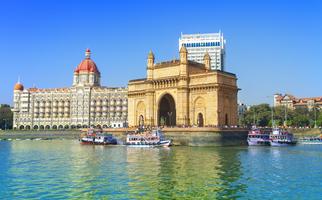
Where to Eat in Mumbai
For high-end dining, you can book a reservation at Indigo, housed in a former colonial building and offering a menu of Indo-European fusion that you can enjoy on the rooftop patio. Main dishes start at ₹780. If you want to experience authentic south Indian cuisine, look to Dakshinayan, featuring a menu of soups, homemade chutney, and traditional dishes starting at ₹90. The Yoga House Cafe is housed in a charming location by the water, with a healthy menu of salads, soups, and breads, with meals starting at ₹140.
When to visit Mumbai
With a tropical climate, Mumbai is a true year-round destination. The most popular times to visit are during the drier period of the year between November and May, with cooler temperatures between December and February. June to September is monsoon season, with peak rainfall averaging over 500 inches in July.

How to Get to Mumbai
International flights operate out of Chhatrapati Shivaji International Airport (BOM), which is sometimes called by its former name, Sahar International Airport. The airport is about 7.5 miles from the city center, and a taxi ride is the only direct way to get there. It should cost you about ₹120, and fares are prepaid.
Mumbai is a hub for the Central Railway at the Chhatrapati Shivaji Terminus, and the Western Railway at Churchgate. Long distance trains may go through a number of stations, with connections to other Indian centers via Indian Railways.
National Highway 3, National Highway 4, National Highway 8, National Highway 17, and National Highway 222 all connect with Mumbai. Be aware that you may have to pay a toll to enter the city.
Intercity buses run by Maharashtra State Road Transport Corporation connect Mumbai with other cities within Maharashtra, as well as neighboring states.
Airports near Mumbai
Airlines serving mumbai, where to stay in mumbai.
The Taj Mahal Palace hotel resort, a prime example of the Indo-Saracenic style of architecture, offers you stunning grandeur both inside and out. Le Sutra is a small hotel where you can experience modern India with an artistic touch: each room has unique furnishing designed by local artists and designers. The ITC Grand Central offers 5-star luxury in an ornate British colonial-style building.
Popular Neighborhoods in Mumbai
Colaba - this is where you'll find many of the city's iconic landmarks like the Gateway of India and Taj Mahal Hotel. Along Colaba Causeway is where you'll find reasonably priced hotels and shopping.
Marine Drive - from Nariman Point to Malabar Hill, strolling the promenade along the beach in the evening is a favorite pastime for locals and tourists alike. At night, the lights along the curve of the bay give the area the name Queen's Necklace. It's also where you'll find Mumbai's cache of Art Deco buildings.
Bandra - one of the many suburbs of the northern part of Mumbai, this is where you can bump into the Bollywood stars who churn out more than 1,000 movies per year. There are also many trendy restaurants, cafes, bars, and night clubs to explore.
Where to stay in popular areas of Mumbai
Most booked hotels in mumbai, how to get around mumbai, public transportation.
The Mumbai Suburban Railway is the primary form of public transportation, although it is probably best to avoid it during rush hour, when trains may be operating at up to 300 times capacity. The sleek, modern Mumbai Monorail is a good alternative, along with the Mumbai Metro subway. Public buses in Mumbai are run by B.E.S.T (Brihanmumbai Electric Supply and Transport Undertaking) and cover most of the city with over 390 routes, including accessible and air-conditioned services. You'll recognize B.E.S.T. buses by their bright red color, and fares are very reasonable at 1.25 miles for ₹8, and just over six miles for ₹18.
There are over 56,000 taxis in Mumbai, making it one of the preferred ways to get around the city. Rates start at ₹32.19 for one mile.
Even though nearly 90 percent of Mumbai's citizens use public transportation, the traffic congestion is horrendous. If you prefer to travel by car just the same, it's recommended that you hire both a car and a driver to navigate the chaotic Mumbai traffic. Self-drive car rentals are available by the hour at ₹70, while a car with a driver will cost about ₹3,900 per day.
The Cost of Living in Mumbai
Shopping streets.
There are many places to find great shopping opportunities in Mumbai, such as the boutiques of Colaba and Kala Ghoda, where you'll find international designers like Balenciaga, along with Indian brands like Janavi and NorBlack NorWhite at exclusive shops like Le Mill. If jewelry is what you're after look to Gem Palace at the Dhanraj Mahal complex. For bargain shopping, try Colaba Causeway, lined with many shops filled with locally made clothing and jewelry.
Groceries and Other
There are many grocery store chains in Mumbai, including Nature's Basket along with Hypercity, Reliance, D-Mart, and Big Bazaar, with well-stocked shelves and most include a prepared food section where you can sample many different dishes. A gallon of milk should cost about ₹187 and a dozen eggs will set you back about ₹60.
The Ultimate Mumbai Travel Guide
Find more tips about mumbai activities, places to visit, hotels, and places to eat, and more.
- shares
- Share on Facebook
- Share on Twitter
Travel Guide to Mumbai | India
Table of Contents
P reviously known as Bombay, Mumbai—aside from being the country’s most populous city—is India’s center of financial and commercial activities. Founded on an ancient settlement, its name was derived from the local goddess Mumba, a type of Parvati, the consort of Shiva, and one of Hinduism’s main deities.

The city of Mumbai dishes a unique charm, thanks to a wonderful paradox of modernity and tradition, chaos and beauty, squalor, and glamor. Dubbed as the “City of Dreams,” it offers a lot more than what most people saw in the film “Slumdog Millionaire.”
Boasting a bevy of attractions from ancient temples, historic streets, rows of magnificent Art Deco buildings to a myriad of cultural activities, Mumbai definitely lives up to its moniker of abundant aspirations.
For all the hidden gems that can be discovered in the many nook and crannies of this city, it makes sense why travelers see Mumbai as the ideal city to start their journey to India.

When is the best time to visit Mumbai?
- Most travelers prefer the winter months from November to February as the best time to visit Mumbai. During this period, the climate falls into a pleasant average of 17-28 degrees Celsius.
- The summer months from March to May is also an ideal season, although the weather is a bit warmer averaging from the mid-20s to high 30s.
- The months from June to October are the wet season, where Mumbai’s city experiences heavy rains most days and gets flooded several times every season.
How to get to Mumbai?
Mumbai boast of a modern airport that offers connectivity to many major cities all over the globe. Direct flights from New York, Kuala Lumpur, Dubai, Singapore, Hong Kong, Frankfurt, and more can be available here.
Chhatrapati Shivaji Maharaj International Airport is India’s second-busiest airport and has two terminals: Terminal 1 (divided to 1A and 1B) and Terminal 2 (for international flights).
Mumbai is well-connected to other cities in India by bus. There are numerous bus operators in the city that travels to and from many major cities such as Bangalore, Trichur, Udaipur, Ajmer, Ahmedabad, Indore, Hyderabad, Indore, Mangalore, and even as far as Delhi, just to name a few.

Mumbai’s Central line connects to all most parts of India: Southern, Eastern, and Northern. Hundreds or even thousands of trains arrive daily at Mumbai’s foremost train station: Chattrapati Shivaji Terminus and other key stations like the Kurla Terminus and the Dadar Terminus.
Getting around Mumbai
By metro train and rail network.

Mumbai’s Suburban Rail Network comprises three main lines: The Western Line, The Harbour Line, and the Central Line. These three basically covers all areas of the city. Trains start operations at 4am and closes at 1am.
Mumbai’s Metro Line spans 12 stations and starts operations at 5:35 AM and closes at 11:45 PM.
By Public and Government Bus
Brihanmumbai Electric Supply and Transport (BEST) provides a comprehensive and round the clock bus services connecting all Mumbai’s suburbs and districts’ routes. There are several bus stops found all over the city; you just need to memorize the bus stops and bus number of the buses going to your destination—this can get tricky for first-time visitors, but you can always ask the locals for directions.
By Taxicabs / Uber and Ola
Taxicabs come aplenty in black and yellow in Hyundai Santro and Suzuki Altos, which replaced the outdated but classic Premier Padmini cars of yesteryears. It is easy to flag a cab on the street but negotiates with the driver to use the taxi meter instead of agreeing to a contracted fare. Uber and Ola passenger sharing apps are also widely available in Mumbai. You can easily book a ride by using these applications on your mobile phone.
By Auto and Cycle Rickshaws

Auto-rickshaws are not allowed in the downtown area since it is only permitted in Bandra and Sion’s western and central suburbs. Slower than taxicabs but cheaper, it is only recommended for a shorter length of trips as a ride aboard an auto-rickshaw can be bumpy and less safe because it involves rash driving through the busy streets Mumbai.
Places to See in Mumbai
The gateway of india.

Constructed as a welcoming gesture to King George V and Queen Mary in 1911, this 26-meter basalt archway charms visitors with its beautiful fusion of Indo-Saracenic and Muslim architecture.
Situated on the banks of the Arabian Sea, it is a popular destination among locals and tourists in Mumbai. The best time to come is before and during sunset.
Marine Drive Baywalk

Fancy a walking exploration of Mumbai? Then start off at the 3.6-kilometer-long boulevard known as the Marine Drive. You can witness the Arabian Sea’s spectacular sunset and the ageless magnificence of Art Deco Buildings on the other site.
The best time to come is also during sunset and cap your visit with a feast of Mumbai’s street food.
Taj Mahal Palace Hotel

You can either stay here if you have extra travel money to spend or just take a wonderful snap as the hotel’s Renaissance Architecture is a photogenic subject. The Taj Mahal Palace Hotel’s windowed facade’s pattern and design make it a popular tourist destination. Afterward, you can also check the hotel’s colonial-style restaurant or enjoy an afternoon tea at Sea Lounge.
Mani Bhavan Gandhi Museum

The beautiful house where Gandhi used as his local headquarters from 1917 until the 1930s, is now transformed into an interesting museum. Today, it displays various Gandhi-related mementos such as old photographs, documents, paintings depicting Gandhi’s life, and other historical items.
Other must-see museums in Mumbai include the National Gallery of Modern Art, Dr. Bhau Daji Lad Mumbai City Museum, Chhatrapati Shivaji Maharaj Vastu Sangrahalaya, Shri Yogendra Museum of Classical Yoga, and Archdiocesan Heritage Museum.
Haji Ali Dargah Mosque

Haji Ali is one of the most renowned Muslim pilgrimage sites in India. Situated a thousand meters from the Arabian Sea shoreline and connected only by a narrow footpath, its Indo-Islamic Architecture will instantly arrest your attention.
You can also witness how the Muslims gather and pray inside the mosque, where it also houses the tomb of Muslim Saint Pir Haji Ali Shah Bukhari. Non-Muslims are allowed entrance to the mosque.
Chhatrapati Shivaji Terminus Railway Station

The Chhatrapati Shivaji Terminus Railway Station is one of the few train stations with a UNESCO World Heritage Site distinction. Said to be the world’s busiest railway station, be awed not only by its voluminous crowd of commuters but also by its impressive Italian-Gothic Architecture. Since its construction in 1888, it has since become the city’s foremost symbol.
The Art Deco Buildings of Mumbai

Mumbai’s hidden charm can be seen in the many rows of Art Deco buildings in several streets facing the Arabian Sea. Other than Art Deco, you can also see other structures designed with Victorian, Gothic, and Indo-Saracenic architectural styles. For lovers of Architecture, a stroll in Mumbai’s streets will definitely bring an uncanny visual pleasure.
The Outdoor Laundromat of Dhobi Ghat

If you want to get a glimpse of a local way of life, you must visit the Dhobi Ghat. Known as the world’s largest open-air laundromat, this is where more than 8,000 residents belonging to Dhobi families can be seen washing clothes, bed sheets and linens, pillowcases, hospital uniforms, and more, and hanging them all out in the open air.
The Dhobis have been earning from this form of livelihood for many decades, dating back to the British rule.
Elephanta Caves

One hour by sea travel from Mumbai, Elephanta Island, you can find the UNESCO World Heritage Site of Buddhist and Hindu caves dating back to the second century. Inside the complex are rock-cut cave openings dedicated to Lord Shiva and a vast ruin adorned with intricate carvings and columns. Mischievous monkeys frolicking in the surrounding garden elevates your experience into a memorable one.
Ferry boats are available near the Gateway of India, where you can also buy your tickets.
The Artsy Neighborhood of Bandra West
Boasting several of the city’s coziest bars, savory restaurants, and fanciful architecture and art scene, Bandra West is a perfect place to explore and experience Mumbai’s dose of modern life.
Day Trips from Mumbai
Alibag beach.
Make a quick escape from Mumbai’s bustle to this quaint seaside destination located only two hours by ferry from the Gateway of India. A stretch of white sandy shoreline called Varsoli Beach is the perfect place to unwind and get some tan under the sun.
Surrounding the beach are interesting places such as the 300-year old Kolaba Fort, the Revdanda Fort, and a fish market where you can witness a splice of everyday life.
Matheran Hill

Experience wildlife near Mumbai by taking a train ride from Chhatrapati Shivaji Terminus and get off at Neral Junction and transfer to a mini-train (they call it a toy train) heading to Matheran.
Here, you’ll enjoy a pollution-free environment as all you can see are thick forests and lush greenery as far as the eyes can see. Hiking and bird-watching are two of the most popular activities here.
Sula Vineyards

Experience a feel of Italy in the scenic countryside three hours from Mumbai. The Sula Vineyards offers a wine-tasting tour lavish with tasty Italian dishes. You can find many Zen spots in this vineyard perfect for meditating and yoga after your wine drinking spree.
Best Places to Shop in Mumbai
Crawford market.
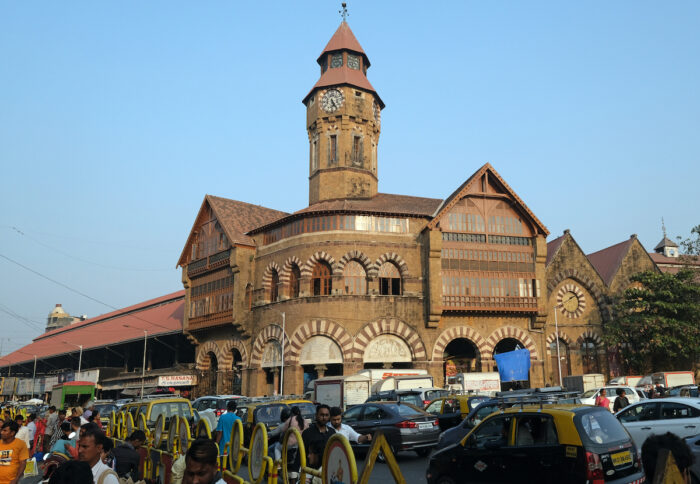
A busy marketplace since the late 1860s, Crawford Market—in South Mumbai—possesses a Gothic character laden with stalls that sells almost anything under the sun.
Also known by its post-Indian Independence name of Jyotiba Phule Mandai Market, this is the best place to shop for fruits, vegetables, and nuts at a lower price.
Chor Bazaar
Also known as the “Thieves Market,” not because marketgoers get often mugged here. On the contrary, it is safe to spend a few hours looking for interesting items from antiques to houseware to art pieces to colorful textiles and modern gadgets. It is also a good place to score some Bollywood memorabilia.
Colaba Causeway
This is another popular market frequented by both the locals and visitors to the city. Colaba Causeway is where you can find stalls selling sparkling jewelry, branded and imitation clothes, antique pieces, and almost anything that counts as a fascinating item to buy, all at a good price.
There are also several cafes and bars located here where you can relax and have a drink while you rest from a day of shopping and bargaining.

Situated in the Bandra neighborhood in Mumbai, the younger ones come to shop for fancy stuff. It is a favorite hipster hangout place where you can also find artisanal food places, organic cafes, galleries, and vegetable stalls.
Oshiwara Antique Market
This market is where you will find heaps of antique items from wooden furniture to trinkets dating back to the British rule. Located in Jogeshwari’s neighborhood, the Oshiwara Antique Market is a haven of stalls selling yesteryears’ hidden treasures.
Dadar Flower Market

Come here in the morning and start your day smelling the sweet scent of the flowers sold here. Name the flowers you know, you’ll find it here: purple and pink orchids, orange daisies, red roses, tuberoses, gladioli, and many more.
The flower stalls seem to spread as far as the eyes can see, creating a spectacular photogenic scene. Hurry because every flower shop folds up after 9am.
Best Places to Eat in Mumbai

Address: 123 Nagindas Master Road, Kala Ghoda, Fort, Mumbai
Serving a wide-ranging menu of elevated California cuisine fused with Indian flavors and representing the favorite dishes of Chef Alex Sanchez—who won countless following after his stint at The Table in Mumbai—Americano also presents a classy vibe thanks to its stylish design and high-ceiling interior.
Located in a contemporary neighborhood, this place is an ideal place to experience an enjoyable meal.
Address: Ground Floor, Kalapesi Trust Building, Opposite Dhanraj Mahal, Below Hotel Suba Palace, Apollo Bunder Marg, Colaba, Mumbai
One of the forerunners of Mumbai’s farm-to-table movement, the Table adopted international culinary leanings and fused it with Indian mouth-watering gastronomic culture, to come up with a menu that is considered as a must-eat when in Mumbai.
Serving food with fresh ingredients sourced from its farm, the Table truly serves its guests with one memorable dining experience.
Wasabi by Morimoto
Address: Taj Hotel, Apollo Bandar, Colaba, Mumbai, Maharashtra 400001, India
A world-class restaurant branch of legendary and award-winning chef Masaharu Morimoto, Wasabi by Morimoto justify its famous name with its menu of sumptuous traditional Japanese food cooked with ingredients flown in from Japan.
Offering one of the best meals in the city also comes with a picturesque view of India’s Gateway. Classy interiors and vibrant Japanese art complete your wonderful meal experience here.
The Bombay Canteen
Address: Unit-1, Process House, S.B. Road, Kamala Mills, Near Radio Mirchi Office Lower, Parel, Mumbai
An old colonial home turned into a quirky dining place is what The Bombay Canteen looks like now. Serving a bevy of Indian regional cuisines—prepared with a contemporary twist—and adorned with a homey vibe, this place is a perfect option to dine with the family or a group of friends or better yet, a casual romantic dinner.

Britannia & Co.
Address: Wakefield House, 16, 11, Sport Rd, opp. New Custom House, Ballard Estate, Fort, Mumbai
Serving a heritage cuisine from the Parsi culture of its founders—the Zorotanians from Iran in the 19th century—this vintage eatery is a local favorite and is also gaining popularity among the city’s visitors, thanks to its savory menu and colonial atmosphere that dishes a memorable dining experience.
Cafe Madras
Address: Kamakshi Building, no. 391/B, Bhaudaji Rd, Matunga, Mumbai
The go-to place for everything South Indian cuisine, Cafe Madras, is a long-standing local favorite that provides a humble setting typical of a traditional Indian eatery.
Mostly buzzing with a crowd of all ages enjoying crunchy dosas and a medley of South Indian favorite food, this is the place where you can experience what it’s like to be a local foodie in Mumbai.
Address: Kamal Building, B/1 New, Linking Rd, next to Burger King, Bandra West, Mumbai
A double-dose of appeal courtesy of its mouth-watering food—vegetarian and seafood options—and Instragrammable corners, make Bastian a favorite hangout place of the city’s younger crowd and even Bollywood celebrities.
Must-tries include lobster roll, black pepper crab, snapper carpaccio, and butter-poached lobster.
Best Areas to Eat in Mumbai
Girgaum chowpatty.

This public beach, located along with Queen’s Necklace and Marine Drive in the neighborhood of Girgaon, is not only an ideal place to relax by sitting over a sandy shore, but it is also a good place to experience Mumbai’s street food culture.
It is said that here, one can have a taste of Mumbai’s “sand, sea, and lip-smacking chaat experience.”
Mohammed Ali Road
A rich street food experience awaits you in this neighborhood lined up with rows of stalls serving an array of delightful spreads from naan bread to spicy mutton curry to mouth-watering kebabs.
This is also a popular place to witness the iftar , where Muslims would gather to eat after Ramadan.
Have a taste of Bombay sandwich, shawarma, and other popular Indian snacks sold at the many roadside stalls at this neighborhood teeming with the city’s gastronomic delight.
The scene here gets super busy starting from lunchtime until deep into the night, so plan your visit during this period.
If you ask a local where to sample Mumbai’s street food, chances are they will recommend heading out to Dadar in the suburb neighborhood of Shivaji Nagar. This is where you can try out various vegetarian Indian food, including the must-try misal pav , a tasty spicy bean curry.
Zaveri Bazaar Street

Mix shopping and food tripping adventure in this neighborhood situated in Mumbai’s jewelry center. Rows of food stalls and jewelry stores interchanging with each other give you an option to try out famous Indian snack meals such as samosas, chaats, papad, chai, and kachoris in between shopping for diamonds and other gemstones.
Where to stay in Mumbai
The taj mahal palace hotel.

Address: Apollo Bandar, Colaba, Mumbai
Check Rates and Availability via Agoda and Booking
Of course, the iconic hotel of Mumbai tops every “where to stay in Mumbai” list. The Taj Mahal Palace is an architectural marvel boasting of heritage structure adorned with a mixture of Renaissance, Moorish, Oriental, and Rajput architecture influences.
If you can splurge on your trip, then consider staying here so you can also experience world-renowned figures such as William Somerset Maugham, Lord Mountbatten, Duke Ellington, and Bill Clinton have experienced here.
The Orchid Mumbai
Address: 70-C, Nehru Rd, near Mumbai Domestic airport, Navpada, Vile Parle East, Vile Parle, Mumbai
Known as Asia’s first ecotel-certified hotel because of its environment-friendly use of solar energy, recycled products, and other green practices, The Orchid Mumbai also boasts a stylish interior, interactive art exhibits, and elaborate architecture.
Taj Lands End
Address: Bandstand, BJ Road, Mount Mary, Bandra West, Mumbai
This 5-star hotel’s 493 rooms offer a sweeping view of the Arabian Sea and an array of lavish amenities that guarantee a cozy and relaxing stay.
Le Sutra Hotel
Address: 14, Union Park, Next to Olive Restaurant, Khar West, Mumbai
Bursting with heritage and culture, Le Sutra Hotel not only possesses a classic architecture style, but it also houses several Indian artworks that make this hotel doubles as an art gallery.
Four Seasons Mumbai
Address: 114, Dr. E Moses Rd, Gandhi Nagar, Upper Worli, Worli, Mumbai
Housing the city’s highest rooftop bar, Four Seasons Hotel carries its renowned brand name to Mumbai by dishing an array of luxury amenities and top-notch hospitality service coupled with stylish architecture.
Urbanpod Hotel
Address: Urban Pod Pvt. Ltd Opus Park, F-21, 1st-floor Midc Central Road, Opposite Seepz Gate Number One, Andheri East, Mumbai
For budget travelers and backpackers, this capsule hotel provides affordable accommodation and appealing amenities such as a common area perfect for socializing with other travelers and spacious dorm rooms with spacious pod beds.
Bombay Backpackers
Address: 1, Uttam Jeevan, Opp Equinox Business Park, LBS Road, off BKC, Kurla West, Mumbai
Check Rates and Availability via Agoda
Bursting with popping colors, this hipster hostel is popular among backpackers in Mumbai. It has decent rooms that feature teak-wood bunk beds, common areas, and a nice location just a walking distance from Kurla Railway Station.
Festivals in Mumbai
Mumbai celebrates several festivals that highlight the city’s colorful history and fascinating culture. Here are the main festivals that you can include in your planned visit to the city.
- Kala Ghoda Arts Festival – held every late January to early February
- Ganesh Chaturthi – it’s a 10-day festival from late August to early September.
- Bandra Fair – it is held every September 8, the Virgin Mary’s birthday.
- Mumbai Film Festival – this is an 8-day film festival that shows more than 200 Bollywood films in cinemas around the city.
- Elephanta Festival – held from late January to early February in the UNESCO World Heritage Site of Elephanta Island.
- Maharashtra Day – This is held every May 1 to celebrate the Maharashtra statehood.
Sample 2-Day Itinerary in Mumbai
Day 1: city center loop.
Morning: You can take your breakfast at your hotel or go straight to trying out Mumbai’s street food by having a plate of bhelpuri, an order of vada pav, and a hot cup of chai tea.
After that, you can go to the UNESCO World Heritage Site of Chhatrapati Shivaji Terminus and, from there, walk to the nearby neighborhood to check out the many Art Deco buildings of Mumbai and make your way to the Gateway of India, the Taj Mahal Hotel, and to Colaba Causeway. Late lunch.
Afternoon: Take a short cab ride to Dhobi Ghat Laundromat and walk to Haji Ali Dargah Mosque before visiting Mani Bhavan Gandhi Museum. Afterward, take a cab to Marine Line, passing by Malabar Hill and towards Chowpatty Beach for some relaxation and a majestic sunset of the Arabian Sea.
Evening: After sunset, you can have dinner at one of the restaurants mentioned in this article and take a walk in the city to see more art deco buildings light up at night.
Day 2: Nature and Elephanta Caves
Morning: Breakfast and a half-day trip to Elephanta Caves, which is an hour away from the Gateway of India.
Afternoon: You can either go to Matheran Hill for some nature tripping or go to Alibag Beach for some fun in the sun.
Evening: Shopping and more shopping.
Mumbai Travel and Tour Packages
To help you plan out your visit to Mumbai, we listed places to visit and other amazing activities in Mumbai, India. We also listed some of the best travel deals and tour packages and excellent flight deals and accommodation.
Searching for the best hotels, resorts, and affordable flights in the nearby Cities? Check out our list of affordable Mumbai hotels and resorts via Agoda , Booking , or you may also see available Airbnb properties in the city.
Want more updates about new package tours and tourist spots in Mumbai, India? Follow #TeamOutofTown, on Facebook , Twitter , Instagram , Bloglovin, and Pinterest for more travel ideas.
- Top 15 Things To Do In Mumbai
- Machu Picchu Is The World’s No. 1 Landmark
- 10 Highest-Rated Airbnbs In Madrid, Spain
- Best Things To Do In Agra, India
Written by Marky Ramone Go
Marky Ramone Go is a travel-junkie, writer and photographer based in the Philippines. Aside from contributing articles to various publications and websites, he narrates his experiences wandering the tropical paradise of the Philippines, the culturally rich regions of South East Asia, Sri Lanka and India on his travel blog Nomadic Experiences. After Asia, he is keen on exploring South America and eventually hoping to trace Jack Kerouac's "On the Road" trail in the United States to Mexico.
What do you think?

10 of The Best Food Quotes for Instagram Caption (With Images)

Top 15 Best Things to Do in Dunedin, New Zealand
© 2024 by Team Out of Town
With social network:
Or with username:.
Username or Email Address
Remember Me
Forgot password?
Enter your account data and we will send you a link to reset your password.
Your password reset link appears to be invalid or expired.
Privacy policy.
To use social login you have to agree with the storage and handling of your data by this website. Privacy Policy
Add to Collection
Public collection title
Private collection title
No Collections
Here you'll find all collections you've created before.
Mumbai Travel guide | Best Mumbai Travel Tips (2021)
The urban coastal sprawl of Mumbai deserves more time than you might think. Our Mumbai Travel guide covers Mumbai Travel essentials, where to stay, things to do and much more.
Mumbai Travel Guide
Stepping off the train from Pune into the bustle of Fort and Colaba, it felt like I’d come home.
The feeling was not a complete surprise, after all there are plenty of British remnants to be found around Mumbai beyond the red double-decker buses, and London and Mumbai have been compared hundreds of times.
Since first stepping into Mumbai, the city has always had a special hold on me, one that led me to return many times and make it my home for a year, too, after meeting my other half (Ravi), a true Mumbaiker.
Despite our love of Mumbai, for many visitors it’s an overwhelming place – although the crown of India’s largest city has now been nabbed by Delhi (not necessarily a bad thing). Mumbai can be chaotic, crazy, charming and outright frustrating within the same day. It can also be, especially by Indian standards, an expensive city.
With all that said there are not many cities in the world where you can stroll by the ocean, eat delicious street food for under a dollar, rub shoulders with movie stars, party in 5* hotels, and visit a national park within the city limits in the same day.
Mumbai often gets overlooked by visitors to India in favour of the “Golden Triangle” and Rajasthan , but in our view Mumbai is well worth a few days of your time!
ⓘ TIP: Planning a trip to India? Join our free India Travel Facebook group here !
Mumbai: Know Before you Go
Despite our experiences of living in Mumbai, we don’t profess to know everything about this huge and constantly changing city, let alone be able to condense it into a single blog post. Consider the suggestions in this guide as starting points for your explorations, that will make you want to come back and discover more of Mumbai on your next trip to India!
Here are a few things to know specifically about travel in Mumbai. For general advice on preparing for your first trip to India, read our guide to planning a perfect trip to India here !
- What’s in a name? Bombay was re-named to Mumbai in 1995, but you’ll hear a mixture of Mumbai, Mum-bay and Bombay used. Many Mumbaikers still love and are attached to the name Bombay .
- Mumbai is a huge city in terms of size as well as population – you won’t be able to cover all of it. See our suggestions for where to base yourself in the where to stay section.
- Mumbai can be expensive compared to other areas of India, so allow flexibility in your budget accordingly.
- For a unique experience, visit during the Ganesh Chaturthi festival at the end of Monsoon each year, when Lord Ganesh is venerated, brought into homes before being immersed in water at the end of this festival.
- Mumbai is famous for the extremes it exposes – from extreme wealth to extreme hardship, it’s the city of dreams for some and of bad dreams for others – prepare yourself for some culture shock if this is your first Indian city.
What to Wear in Mumbai
As usual, men can get away with jeans and t-shirt (or shorts are fine in Mumbai although Indian men don’t wear them as much) and so not much advice is needed.
What to wear in Mumbai for Women:
Mumbai is less conservative than most other parts of India, and if you’re going out to party in Mumbai you’ll see many party-goers dressed up to the nines. Feel free to do the same, just travel by taxi and not by public transport in your party clothes!
In Mumbai many young women wear western style clothing, skinny jeans are as popular as saris here. Showing arms and shoulders is fine too, but I wouldn’t recommend thin-strappy tops (thick straps are fine) and avoid showing off your cleavage. Personally I always still cover my legs in Mumbai, but I have seen western women walking around Bandra (a bit of an expat enclave) in shorts without a problem.
My go-to outfit in Mumbai in winter is either a t-shirt and skinny jeans or a kurta/ tunic top like this one and leggings / jeans. It’s always handy to have a scarf with you for covering up, temples or in case it gets chilly in the Air Conditioning.
Essentials to Pack for Mumbai
Aside from Mumbai friendly clothing, make sure you have the following essentials for your time in Mumbai and the rest of India:
- Travel Insurance – a MUST for India. We use World Nomads – get a quote & buy yours here .
- Travel adaptors – India uses type C and D plugs. Get a Multi-region adaptor with surge protection to protect your devices too.
- We recommend a cross-body purse or handbag to keep your valuables safe
- A padlock and chain are always handy for securing luggage / locking lockers in hostels, etc
- Your guidebook! We use Lonely Planet ourselves, or check out more India guidebooks here.
- A water filter bottle such as Grayl , or a steripen + refillable water bottle for safe drinking water option. For a review of our favourite options, read more here . Remember to take a spare filter / batteries for steripen!
READ MORE HERE – Our Complete India Packing list
Responsible Travel in Mumbai
Mumbai is truly a city of contrasts – some of the world’s richest live next to those with very little, and it’s somewhat ironic that Dharavi – marketed as Asia’s largest slum has become the number one tourist attraction in India, surpassing even the Taj Mahal.
Slum Tours – Should you Go?
While there are some beneficial projects taking place in Dharavi thanks to tourism, many Mumbaikers would not like their city to be known foremost for its slums. There’s much more to Mumbai than Dharavi. We discuss the ethics of slum tours in Dharavi in detail in this post – if you’re in too much of a hurry to read the ins and outs of the issue, we suggest this:
- Dharavi is very different from most slums. Half of Dharavi is an industrial area, and it is this part which is usually shown during tours, not where people live.
- The ONLY tour company we recommend for Dharavi is Reality Travel & Tours – this is due to their no-photography policy in Dharavi and their consistent reinvestment into the slums .
- Do not go to Dharavi on your own
- Do not go to Dharavi with other tour companies. These are just profiting off peoples’ poverty, as these companies do not reinvest anything into improving conditions in Dharavi.
Find out more about how you can support street kids and those with substandard living conditions in India in our guide to responsible travel in India here .
Like other parts of India, you’ll see that plastic waste is a huge problem in Mumbai – please don’t add to it and avoid any single use plastic while you’re in India. You can read our full guide to how to drink safe water in India without the plastic here !
Best Tours of Mumbai
We highly recommend doing day tours of Mumbai – it helps make the most of your visit, especially if you have limited time, ease you in to the pace of being in Mumbai (fast!), and provides more local jobs by supporting tour guides. Here are some of our favourites:
- Early Morning Tour of Mumbai – My #1 recommendation. Mumbai’s real beauty can be seen before most people are awake, in the calm before the storm. See the under-belly of this huge city by seeing the early morning newspaper sorting, flower & vegetable markets, fish being unloaded at sassoon dock and more. I promise it’s worth the early start! More info & bookings here .
- Elephanta Tour – Head out across the water from the Gateway of India to Elephanta Island to visit the UNESCO caves there. This is a great journey in winter (the ferries don’t run during monsoon), and having a guide makes the caves a much better experience as there’s very little written information available there. More info & bookings here .
- Bollywood Tour – Experience Mumbai’s glitz and glamour with a sneak peak at Bollywood (which Mumbai is home to) and see the homes of Mumbai’s rich and famous movie stars! More info & bookings here .
- Public Transportation Sightseeing Tour – If you want to experience the infamous Mumbai Local trains (More on those below) but would prefer a helping hand – this is the one for you. Take in Dadar’s markets, visit the Haji Ali, and get to grips with all of Mumbai’s transport options. More info & bookings here .
READ MORE: Our Favourite India Group Tour Itineraries .
ⓘ TIP: Travel Insurance is a must for India – we use and recommend World Nomads – Get your quote here !
Different Areas of Mumbai
Although Mumbai is huge, most visitors to the city spend most of their time in Mumbai in “SoBo” (south Bombay) and the upmarket western suburb of Bandra. Mumbai’s beautiful airport is located near Andheri – so if you have an early morning flight from here we recommend staying close to here the night before to avoid the stressful Mumbai traffic.
You’ll likely find yourself spending most of your time in south Mumbai and Bandra / Western suburbs, especially if it’s your first trip to Mumbai.
Where to Stay in Mumbai
These are our favourite hotels in Mumbai. If you’re looking for hostels or budget options , we recommend the ones in Bandra listed below. Budget hotels around Fort, Churchgate and near VT station tend to be the kind that attract a more dubious crowd rather than backpackers. For single women travelling and staying in hostels, we always recommend booking a female only dorm (not a mixed one) .
Colaba Area
The Taj Mahal Palace Hotel – One of the most famous hotels in the world, the iconic Taj is an experience not to be missed. The Taj is located just across from the Gateway of India off Colaba Causeway. There are often promotions available for the “tower rooms” (next to the main “palace” hotel building). Check rates & availability here for the Palace rooms or here for the Tower rooms !
Abode Bombay – Just a two minute stroll from the Gateway of India in Colaba near the Regal Cinema, I fell in love with this historic boutique hotel that was once the residence of Siegfried Sassoon. They have rooms for different price points and have plenty of responsible measures in place. Highly recommended. Check rates & availability here !
Residency Hotel Fort is a comfortable mid-range option that gets good reviews – handy if you want to be close to the train station. Check rates & availability here !
Marine Drive & Churchgate Area
InterContinental Marine Drive is the smartest hotel along Marine Drive (worth it for the roof-top pool with ocean views alone!), at the southern end of the “queen’s necklace” and within walking distance to churchgate station. Check rates & availability here !
Ferreira House is a small, historic homestay in a heritage south Bombay home, just a short stroll from Marine Drive. Check rates & availability here !
Pin this Post on Pinterest for Later!
Bandra & Western Suburbs
Taj Lands End is a beautiful contemporary high-end hotel located across from Bandra Fort and Bandstand, complete with ocean views. Check rates & availability here !
Sofitel BKC is more of a business hotel, located close to the Bandra Kurla Complex where many companies are located, so a good option if you’re extending a work trip. Check rates & availability here !
Marriott Juhu Beach is located to the north of Bandra right along Juhu beach, a good family-friendly option with ocean views. Check rates & availability here .
Hostels / Budget Hotels in Bandra
There are many “mid-range” non descriptive, un-exciting hotels with dubious reviews in Bandra. We don’t recommend those. Instead if you’re looking for comfortable and modest accommodation, we suggest a private room in one of the modern & clean hostels below:
- Cohostel is centrally located near Bandra bandstand and gets great reviews. Check rates & availability here .
- Horn ok Please Hostel scores points for the name and gets great reviews. Also located in Bandra West. Check rates & availability here .
Our Recommended Things to Do in Mumbai
There’s a lot to pack in to any stay in Mumbai! If you have limited time and a lot you want to see, taking a private tour of Mumbai can help pack a bit more in to a shorter time. Otherwise… you’ll just have to come back!
It makes sense to break things up into areas – aim to a half-day exploring Colaba after a trip to Elephanta for instance, or one day in south Mumbai and another exploring Dadar and Bandra. It can be easy to clock up miles exploring Mumbai, so remember to pack your comfortable walking shoes! If you’re going on public transport, we recommend closed shoes, as your feet may get stepped on.
Things to do in South Bombay
Colaba Walking Tour. Take a couple of hours to wander at your own pace taking in the main sights or book a walking tour with a guide .
Gateway of India. Turn up early for the best light for photos – this monument which was built by the British Raj in 1924 was the arrival point for dignitaries to Mumbai, and also the point from which British troops left India after independence in 1948. It’s now the departure point for ferries to Elephanta Island, and to the beach resort of Ali Bagh along the Maharashtrian coast.
Taj Mahal Hotel. If you’re not staying here, you can walk into the lobby of the Taj Mahal hotel for a look around (if you’re dressed nicely that is), go for a drink in the bar, or to take afternoon tea. The afternoon tea is overpriced and not the best (it’s served buffet style) but for the experience it’s still worth it, especially if you luck out and get a window seat, like I did.
Dr. Bhau Daji Lad (Formerly Victoria & Albert) Museum . North of the Gateway, towards CSMT station, you’ll walk past what used to be called the Albert Museum surrounded by lush tropical gardens. Built in 1872, this is a fine architectural piece. The museum is home to collections of manuscripts, artefacts, costumes and has recently been restored by the Indian National Trust for Art and Cultural Heritage.
Colaba Causeway has a vibrant market (you’ll have to haggle hard for a good deal here) that you walk through.
Nariman Point , next to Cuffe Parade and right at the southern end of Marine Drive is home to Colaba’s business district, the national centre for performing arts, and Piramal Art Gallery which is home to different modern arts.
Art District in Fort – The area between Colaba and CSMT station is known as the Art District and is home to the National Gallery of Modern Art, the Jehangir Art Gallery, and the Institute of Contemporary Indian Arts. Look up exhibitions ahead of time, or drop in to cool down in the AC and enjoy India’s best art scene. You can also wander and look at the Horniman Circle & Asiatic Society .
Chhatrapati Shivaji Maharaj Terminus – Known as CSMT, Mumbai’s iconic railway station has changed names a few times over the years, from “Victoria Terminus” or “VT” as it is still affectionately known, and is one of the architectural highlights of Mumbai. Don’t miss out on going inside and looking up to admire the beautiful ceilings of the old booking hall.
Marine Drive & the “Queen’s Necklace ” – Named after its streetlights at night which are said to mimic a string of pearls alongside the Arabian sea – Marine Drive is the go-to point for couples and anyone wanting to take a stroll along Mumbai’s oceanfront for some fresh(er) air. At the northern end, Chowpatty beach is full of groups of friends and some streetfood vendors come evening. A great spot for people watching, but don’t even think about taking a dip in the (highly polluted) water!
Haji Ali Dargah – This iconic mosque is on an island off the coast of Worli, it’s also the tomb of Pir Haji Ali Shah Bukhari, who was a Sufi saint and a wealthy merchant originally from Uzbekistan. Bukhari gave up his belongings and travelled the world before settling in Mumbai. The Mosque is under constant repair given the battering it gets from the ocean.
Dadar is where south Mumbai meets the rest of the city and the volume increases a notch as tuk-tuks join the mix (tuk-tuks aren’t allowed south of Dadar). It’s an important junction for the local train lines as western and central lines meet here, and also a stone’s throw from Dharavi, one of Mumbai’s largest slum areas.
Dadar Flower Market – p hool gully (which means flower market) is a bold display of colour in bustling Mumbai, and the best place to buy flowers in the city for wholesalers. Come early in the morning to see the market coming to life and the famous auctions taking place.
Shri Siddhivanayak Temple – This grand and opulent temple near Dadar is dedicated to the Hindu Lord Ganesh, who represents prosperity, health and knowledge. Bollywood moviestars pay their respects here, and the temple is said to be one of the richest in India.
Dharavi – per our notes at the beginning of this post, we don’t recommend visiting Dharavi without a guide, or with just any guide or tour company. The arguments around slum tourism are emotional and complex – we do not support “poverty porn” which essentially is what many of the tours that allow you to take photos are. There is an argument though, that when done right, responsible tourism in slum areas that gives back to the community within the slums can be a positive thing. For that reason if you go to Dharavi, go with Reality Travel .
Bandra Fort & Bandra Bandstand – Make for a popular sunset spot that looks out over the impressive Bandra-Worli sea link bridge. The proper name for Bandra Fort is “Castello de Aguada” – the fort was built in 1640 by the Portuguese. The main attraction is for photos overlooking the bridge behind and general people-watching.
Basilica of Our Lady of the Mount (also known as Mount Mary Church) is up the hill from Bandra Bandstand, and one of the few Catholic churches in Mumbai. Every September, the feast of the Blessed Virgin Mary is celebrated here, known locally as the “Bandra Fair” and attracting people from all around.
Beyond the seaside walks and history, Bandra (along with neighbouring Khar) is known as Mumbai’s trendiest (and priciest) neighbourhood, with any number of hip bars and eateries, interesting shopping options and art galleries that are opening up. Some of our favourite spots to eat are below, or read this article for some hints on the hotspots .
Other Suburbs
Sanjay Gandhi National Park – This is an 87 square km national park in the heart of Mumbai’s suburban sprawl – home to leopards, birdlife, monkeys, spotted deer and the Kanheri caves. It makes for a beautiful alternative side of the city to explore and trek in. The main park entrance is in Borivali.
What & Where to Eat in Mumbai
Mumbai street food.
You can’t visit Mumbai without sampling its amazing (and cheap) street food – if you’re nervous about getting sick then you can wait a few days before digging in (until your stomach has adjusted), stick to stalls that are busy (therefore have a faster turnover of food), stick to hot food, or you could take a street food tour .
Some quintessential Mumbai street food you won’t want to miss:
- Vada Pav – Mumbai’s answer to the veggie burger (but far more delicious!). A spiced potato pattie fried with chickpea batter (vada) is served in a fresh bun (pav), chilli and fresh chutneys such as tamarind chutney (sweet, red), coriander chutney (spicy, green) or coconut chutney (white, variably spicy). Costs around 15 rupees. Yum!
- Pav Bhaji – A staple of Bombay street food, toasted buttered fresh buns (pav) are served with a smashed vegetable curry, accompanied by dollops of butter, raw onion and coriander. Once you’ve tried it, you’ll want lots more! Costs around 40 rupees. If you’re watching your figure, you can request less/no butter but it doesn’t taste as good…
- Bombay Sandwich – These yummy grilled veggie sandwiches are perfect for a pre-dinner snack, and the best ones are outside the Dr. Bhau Daji Lad Museum in Fort. Served with chutneys. Costs around 20 rupees.
Our Favourite Places to Eat in Mumbai
- Delhi Durbar (Colaba) – Famous for its non-veg options such as its Butter Chicken and Biryani
- Leopold’s (Colaba) – it’s overpriced and touristy, but no visit to Mumbai would be complete without a look in at Shantaram’s favourite hang out…
- Brittania & Co Parsi Cafe (Fort) – One of the top rated Parsi (Iranian) cafes in Mumbai
- Gaylord (Churchgate) – Delicious bakery and European style bistro meets pan-Indian cuisine
- Aaram Vada Pav (CSMT Station) – Great place to get your Vada Pav fix
- Cannon Pav Bhaji (CSMT Station) – For if you have any space after your Vada Pav
- Gajalee (Dadar) – This restaurant group (with several locations in Mumbai) consistently wins awards for its seafood
- Jay Shri Krishna Dairy Farm LASSI (Dadar West) – This narrow thin room is home to some of Mumbai’s most delicious lassi!
- C andies (Bandra) – This Portugese style villa restaurant is ever popular
- Goa – Portugesa (Bandra) – serves up delicious Goan style fish curries
Getting Around Mumbai
The quintessential way to get around Mumbai is on its local trains – but, we warn you, they are not for the faint hearted.
Local Trains
These are the fastest way to get up/down town, running up and down Mumbai from Churchgate (Western Line) and CSMT (Central and Harbour Lines). Trust us, though, that it is a very BAD idea to take these during rush hour, which in Mumbai covers anything between 6am – 10am going towards central Mumbai, and in the evening out of Mumbai.
People don’t sit on top of the trains anymore, thankfully, but there is plenty of dangerous hanging out of doors that goes on, and it’s a serious matter. Mumbaikers die in the crush to get to work every day.
If you decide to take the local trains in Mumbai, this is our advice (after having taken many of them):
- If you’re female, get in the Ladies carriage. It’s generally less crowded and you don’t have to worry about wandering paws (although keep an eye on your belongings)
- Don’t travel during rush hour
- Consider buying a first class ticket – the carriages are much quieter as the ticket is more than double the price
- Don’t attempt to get on or off the train while it’s still moving – no matter how keen your fellow passengers may be to take you down with them
- Never hang out of the door. If you’re near the door way – hold on tight to a pole!
- If it’s too busy / crowded for you then get off at the next station and take a cab instead.
On 3 Wheels
Tuktuks, Auto’s or 3-wheelers roam the city but only as far south as Dadar, they don’t operate in Colaba, Fort or the surroundings. In suburban Mumbai, most drivers will use their meters, but if you come across one who says his meter is not working, try to find another.
Mumbai Taxis
These can be found everywhere and are plentiful, as a tourist the main struggle is getting the drivers to use their meter. When arriving at one of Mumbai’s train stations I suggest using the pre-paid taxi line (where you pay in advance and don’t hand over the receipt to your driver until you’ve reached your destination) to avoid hassle.
Uber and OLA
A godsend in Mumbai if you’re fed up with Taxi drivers who overcharge, OLA and Uber are cheap and efficient. They’re just not immune to the Mumbai traffic.
Mumbai has a bus network but we don’t recommend it – the traffic moves slowly, buses are jam packed, and it’s the least efficient way to get around.
Travel in Mumbai FAQ’s
When is the best time to visit mumbai.
We recommend visiting Mumbai between September (if planning to come for Ganesh Chaturthi) or October through to March. This is winter in Mumbai and the most pleasant weather – evenings are cool, the humidity is lower, and in January Mumbaikers are even known to get their sweaters out. Enjoy it while it lasts.
We don’t recommend April – September. In April and May the humidity and heat climb to make Mumbai a little suffocating, and once the Monsoon breaks in June through to September the city is prone to flooding and transport chaos.
Is Mumbai Safe to Visit?
Depending on your perspective, Mumbai is a generally safe (or even very safe) city. You’d have to be unlucky to have anything untoward happen to you here. The main risk in Mumbai for visitors is spending more money than you planned to on Mumbai’s trendy restaurants and bars!
Mumbai is much more open for women travellers than say Delhi , and it’s normal to see women moving around by themselves late into the night. I’ve personally gone out alone in Mumbai (Colaba, Bandra, Marine Drive etc) and felt very safe.
Part of the reason for me that I feel at home in Mumbai is because I feel safe to do what I want, without having to think too much about it – although we always recommend following our tips for solo female travellers .
We do not recommend visiting slum areas on your own (see more on essential info on slum tourism below), and if you’re travelling around very late it’s better to take a taxi, or have the UBER or OLA app downloaded on your phone. Ladies can find more tips on what to wear in Mumbai below, too.
Where are the Best Places to Visit in Mumbai?
We recommend first time visitors to base themselves in the Colaba area of Mumbai which is closest to the main attractions.
Some of our favourite “must sees” in Mumbai include:
– The Taj Mahal Hotel – Elephanta Caves – Dadar Flower Market – Marine Drive & Chowpatty Beach
This is just a small taster – scroll to our “things to do” section above!
How Long should I Stay in Mumbai For?
There’s enough to keep you busy in Mumbai for months, or even years! But in reality, most visitors spend 2-4 days here to scratch the surface of the city, see some of Mumbai’s highlights and make a plan to return to discover more.
Have you been to Mumbai? Where are your favourite places to visit? Let us know in the comments below!
Read more about travel in India on Soul Travel Blog:
Kerala Travel Guid e
Delhi Travel Guide: How to Survive (and Love) India’s Crazy Capital
Off Beat Goa Travel Guide
Pin this post on Pinterest!
Soul Travel blog is a participant in the Amazon Services LLC Associates Program, an affiliate advertising program designed to provide a means for sites to earn advertising fees by advertising and linking to amazon.com, amazon.co.uk, amazon.ca, and as an affiliate I earn from qualifying sales. Amazon and the Amazon logo are trademarks of Amazon.com, Inc. or its affiliates.
[activecampaign form=3]
Soul Travel India
Passionate about all things India travel - journeys of transformation and discovery, local experiences, and getting under the skin of India.
Copyright Soul Travel India 2022, All rights reserved. This website uses compensated affiliate links.
- 1 Districts
- 2.2 History
- 2.3 Culture and attitudes
- 2.4 Climate
- 3.1 By plane
- 3.2 By boat
- 3.3 By train
- 4.1.1 Air-conditioned taxis
- 4.1.2 Private taxis
- 4.1.3 Tourist traps
- 4.2 By auto-rickshaw
- 4.4 By train
- 4.5 By metro
- 4.6 By monorail
- 4.7 By ferry
- 6.1 Colonial buildings
- 6.2 Museums and galleries
- 6.3 Beaches
- 6.4 Zoos, parks and gardens
- 6.5 Markets and crowds
- 6.6 Modern buildings and malls
- 6.7 Religious places
- 7.1.1 Organised festivals and events
- 7.1.2 Religious festivals
- 10.1 What to buy
- 10.2 Bookshops
- 10.3 Tourist traps
- 10.4 Groceries
- 11.1.1 International Cuisine
- 11.2.1 Regional Indian
- 11.3 Street food stalls
- 11.4 Authentic Marathi cuisine
- 11.5 Udupi restaurants
- 11.6 Irani cafes
- 11.7 Thalis
- 11.8 Fast food chains
- 11.9 What to eat
- 11.10 Tipping
- 12.1 Pubs & bars
- 12.2 LGBT options
- 12.3 Coffee shops
- 14.1 Landlines
- 14.2 Pay phones
- 14.3 Mobile phones
- 14.4 Cybercafes
- 14.6 Postal services
- 15.1.1 Railways
- 15.1.2 Airport
- 15.1.3 Air Ambulance
- 16 Stay healthy
- 17.2 Newspapers
- 17.4 Hospitals
- 17.5 Diagnostic centres
- 17.6 24 hour chemists
- 17.7 Foreign missions
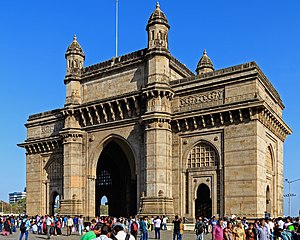
Mumbai ( Marathi : मुंबई Mumbaī , Hindi : मुम्बई Mumbaī ) ( state tourism office ), earlier known as Bombay , is the largest city in India and the capital of the state Maharashtra . A cosmopolitan metropolis, Mumbai was built on seven islands on the Konkan coastline which over time were joined to form the island city of Bombay. The island was in turn joined with the neighbouring island of Salsette to form Greater Bombay . The city has an estimated metropolitan population of 21 million (2011), making it one of the world's most populous cities.
Mumbai is undoubtedly the commercial capital of India and is one of the predominant port cities in the country. Mumbai's nature as the most eclectic and cosmopolitan Indian city is symbolised in the presence of Bollywood within the city, the centre of the globally-influential Hindi film and TV industries. It is also home to India's largest slum population and the iconic Gateway of India built on the waterfront of Mumbai Harbour during the British Raj.
The name Bombay comes from Bom Bahia ("the good bay" in Portuguese), a name given by explorer Francis Almeida. Mumbai is named after the goddess Mumbadevi of the Koli community.
Districts [ edit ]
Mumbai is a city built in successive waves of migrations. The neighbourhoods acquired their character from the communities that settled there first. These neighbourhoods are too numerous to list and there is no commonly accepted way to group these neighbourhoods into larger districts. But roughly, from the south to the north, this is how the city developed.
The term Old Mumbai is used here to refer to the peninsular portion of Mumbai, which was the city till the 1940s when it expanded to cover the suburbs in the north.

Understand [ edit ]

Mumbai is a bustling, diverse metropolis with a flair of its own. The entrepreneurial spirit and pulsing pace of life provide a sharp contrast to much of the rest of India.
Name [ edit ]
There has been much debate regarding the original name of the city. Some say the current name of the city Mumbai is the original name; and is an eponym derived from Mumbā , the name of the local Hindu goddess Mumbadevi, and āī , meaning "mother" in Marathi. Others claim Bombay was an anglicised version of Bom Bahia, a name given by the Portuguese to mean "Beautiful Bay" and later made popular by the British as the name of the Bombay state.
The name was officially changed from Bombay to Mumbai in 1995. Although Bombay and Mumbai are both used, people who explicitly use "Bombay" are generally non-Marathi speakers whereas "Mumbai" proponents primarily speak Marathi. In the West, Mumbai has become more commonly accepted in order to avoid controversy. The city is also fondly called āmcī Mumbaī (आमची मुंबई, "our Mumbai").
History [ edit ]
Though the seven islands that now make up the city have a long recorded history like any other place in India, their journey to form the city of Mumbai really started in 1498, when the Portuguese took them over from the Sultan of Gujarat. They built a settlement, forts, and churches (including the strange-looking Portuguese Church that stands to this day). However, they could not make much of their possession and the seven islands were handed over to England in 1661 as part of the dowry of Catherine de Braganza when she married Charles II of England. He wasn't very interested in the islands either, and he leased them to the British East India Company for £10 a year in 1668. The East India Company built the docks, the trading posts, and the fort that would form the nerve centre of the city. They also started off the long process of reclaiming land and joining the islands, an activity which went on until the 1960s.
The port attracted industries, and the entrepreneurial communities like the Parsis, Gujaratis and Marwaris (from Rajasthan) migrated and set up trading companies and factories in the late 19th century. Industries attracted migrant labour from different parts of the country. The successive waves of migration shaped the character of the city and its neighbourhoods.
The city that owes its existence to the efforts of the British was also the birthplace of the Indian National Congress, which played an overwhelmingly important role in the independence movement. The city whose mills were built by industrialists from across the country is the capital of Maharashtra state, which was carved on linguistic lines for Marathi speakers.
In the 1980s, high labour costs and unrest forced the closure of many textile mills and the city went into a decline from which it started recovering only in the late 1990s. The high population put a strain on the infrastructure. The rail and road network underwent a steady improvement over the 1990s, but because of the magnitude of the task, the roads seemed to be perennially under construction. Mumbai has now reinvented itself as a hub for the service industry.
In January 1993, in the wake of the destruction of the Babri Mosque in Ayodhya , a wave of riots swept the city, with over 1,000 people killed, the vast majority of whom were Muslims. Relations between the city's various ethnic groups have been tense ever since, with several terrorist outrages (see #Stay safe ) adding fuel to the fire.
Culture and attitudes [ edit ]
Mumbai is the most cosmopolitan city in India. In comparison with the rest of the country, the city is quite liberal. With a regular influx of immigrants from rest of India, the citizens, popularly known as 'Mumbaikers', have shown remarkable tolerance towards other cultures, making it a true cultural melting pot. However this tolerance has sometimes bowed under external pressures. Between the 60s and 80s, there was resentment about the non-Marathi speakers taking away jobs. The 1991 and 1993 riots between Hindus and Muslims did affect this spirit; however, the city managed to recover from these, once again proudly highlighting true 'spirit of Mumbai'.
Climate [ edit ]
Mumbai has three main seasons — summer, monsoon, and winter (milder summer). The best time to visit is during the winter between October and February. Humidity is also less during the winter, when the climate is pleasant; the minimum temperature is 17°C and the maximum is 30-31°C. Summer is from March to May, with highs in the low to mid 30s (roughly 80-90°F). It is hot and humid during this time. June to September is the monsoon season when the city is lashed by heavy rains. The city gets flooded two or three times and normal life gets disrupted during this season. Climate is humid pretty much throughout the year because the city rests on the coast.
Get in [ edit ]
By plane [ edit ].
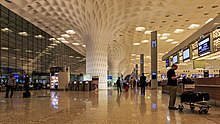
Mumbai has excellent connectivity with most of the major cities around the world, including New York , London , Dubai , Tel Aviv , Singapore , Hong Kong and Kuala Lumpur to name a few. If you are flying from Europe it is generally cheaper to fly from London, and there are many frequent flights available. All domestic sectors are linked to Mumbai, making it the second busiest hub in the country next to Delhi.
Mumbai's 19.099748 72.87499 1 Chhatrapati Shivaji Maharaj International Airport ( BOM IATA ) is one of India's busiest airports and one of the main international gateways to the country. Many international airlines and low-cost carriers fly into Mumbai.
By boat [ edit ]
Thane Creek is bustling with ferries to central Mumbai from various cities on the southern and eastern side of the creek, such as Alibag . Ferries from Ferry Wharf also allow cheap access to islands and beaches in the vicinity of the city and Elephanta .
There are no scheduled international ferries to Mumbai, however cruise ships dock regularly.
By train [ edit ]

Hundreds of trains arrive daily from all over India, almost all major cities have a direct connection with Mumbai. Trains terminate at various different stations throughout the vast city, so make sure to note which station is relevant for your journey.
Main reservation offices are Churchgate, Mumbai Central and Bandra for the Western line and Chhatrapati Shivaji Maharaj Terminus and Dadar on the Central line. There are unique ticket windows and quotas for foreign tourists. Bookings and tariffs on train tickets from anywhere in India from Mumbai can be found at the website of Indian Railways . Notice that while all trains are operated by Indian Railways, the Western and Central Lines function independently and reservations can only be made at certain stations.
The private luxury service Maharajas' Express has travel packages between Mumbai and Delhi . A high-speed railway from Ahmedabad is under construction and is planned to open in 2027.

By car [ edit ]
National highway numbers 3, 4, 6, 8, 9, 17, and the Mumbai-Pune expressway radiate from the city providing links to all parts of the country. The road conditions are generally better than in the rest of India. Distances from various cities to Mumbai are:
- From other states : Ahmedabad (524 km (326 mi), 10 hr), Bangalore (982 km (610 mi)), Chennai (1,334 km (829 mi)), Kochi (1,427 km (887 mi)), Goa (583 km (362 mi), 11 hr), Hyderabad (711 km (442 mi), 14 hr), Mangalore (892 km (554 mi)), New Delhi (1,402 km (871 mi))
- From Maharashtra State : Amravati (669 km (416 mi)), Ahmednagar (254 km (158 mi)), Nagpur (824 km (512 mi)), Pune (151 km (94 mi), 2½-3 hr)
By bus [ edit ]
Mumbai is well served by buses from destinations inside India.
- Asiad Bus Service The bus terminal, popularly known as 'Asiad Bus Terminal' on Ambedkar Rd in Dadar east is another hub from where buses travel to Pune at regular frequency of 15 minutes to 1 hour. Buses vary in comfort from ordinary to luxury with airconditioning. Other routes available are Mumbai - Satara, Mumbai - Nasik. The easiest way to reach the terminal is to cross over using pedestrian foot bridge to Dadar East from the Dadar Terminus and walk straight all the way (less than 5 mins) to Ambedkar Rd.
- Private Buses There also exist numerous private bus operators who operate a large number of services from/to Mumbai from most major cities like Udaipur , Ajmer , Ahmedabad , Vadodara , Surat , Indore , Nashik , Aurangabad , Hyderabad , Belgaum , Hubli , Bangalore , Mangalore , Trichur and Goa . For Pune , buses depart every 10 minutes. Crawford Market, Dadar T.T., Sion, Chembur and Borivili are the main starting points. Some of the reliable private operators are - National,Neeta, Sharma, VRL, Konduskar, Dolphin, Paulo and Southern Travels.
- The comfortable air-conditioned blue cabs are available to Pune and Ahmednagar-Nashik from opposite Asiad Bus Terminal in Dadar and Lakhamsi Nappoo Rd near Dadar east railway station respectively.
- ST Buses ( MSRTC (Maharashtra State Road Transport Corporation) ), ☏ +91 22 2307 4272 (Mumbai Central), +91 22 2307 6622 (Mumbai Central), +91 22 2422 9905 (Parel), +91 22 2413 6835 (Dadar) . Operates services to Mumbai from various cities in Maharashtra. Mumbai Central is the most important Terminus in the city. All major cities in Maharashtra and nearby states are connected through Mumbai Central Terminus. The other important ST depots are at Parel, Nehru Nagar-Kurla, and Borivali. You can get buses for all over Maharashtra from these depots. But from Mumbai Central you would get buses any time as well as other State Transport buses. Quality varies.
Get around [ edit ]

Most of Mumbai's inhabitants rely on public transport to and from their workplaces due to the lack of parking spaces, traffic bottlenecks and generally poor road conditions, especially in the monsoon. However, do ride in a taxi and auto at least once in the city. Feel real adventure in a vehicle that feels like it might fall apart at a speed over 30 kilometres per hour (19 mph) with a driver who thinks he's Schumacher.
For travelling using public transport, you can download the m-Indicator app for Android and iPhone . It contains useful information about bus and train routes, which can help you plan your commute.
By taxi [ edit ]
There are several types of taxis plying in Mumbai. You can hail a cab off the streets. Virtually all taxis have electronic meters which are somewhat tamper-proof. A taxi driver cannot refuse a fare as per law. If a driver does refuse, a threat to complain to the nearest cop usually does the trick. The minimum fare for 1 mi (1.6 km) or less is ₹28 (in 2022).
If you have extra pieces of luggage, the boot (trunk) of the taxi will not provide sufficient space, one large suitcase is all that will fit there. Hiring a taxi with a top carrier will be better. Top carriers can accommodate up to three large suitcases. Before starting the journey, ensure that the luggage is securely fastened to the carrier.
Generally, the only way to call for a standard taxi is to hail one on the street. This will not be a problem if you are within Old Mumbai or Bandra. It will be difficult to find a taxi in the suburbs as they have been out-competed by the cheaper auto-rickshaws there.
The maximum number of passengers allowed for a trip officially is four — three in the back seat and one in the front. Seat belts are not mandatory for taxi passengers and most standard black and yellow taxis will not even have them installed, though expect them in the branded ones.
Air-conditioned taxis [ edit ]
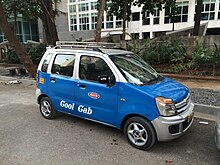
Air-conditioned taxis are premium public taxis and its fare is 20% higher than non-air-conditioned taxis. These taxis are really helpful for tourists and travellers who are not accustomed to the heat and pollution of Mumbai. All the rules of non-air-conditioned taxis apply to air-conditioned taxis too.
Since the fare of air-conditioned taxis is at a premium, the common folks usually do not prefer to travel by air-conditioned taxis and is primarily used by tourists or business travellers. For the lack of demand, the lack of supply is also expected. These taxis ply frequently but are not easily available in all locations. You can always expect them to be available at tourist hot spots like railway stations, airports, premium hotels, top tourist spots, etc. If you are not travelling through either of the above locations, and you need the air-conditioned comfort, but do not want to go look for a taxi, it is suggested that you move to the next section.
Private taxis [ edit ]
If you want a comfortable, air-conditioned ride at a small surcharge of 25 per cent over normal taxis it's best to travel by branded cab services that operate at government-approved tariffs. These services operate in modern fleets with well-trained drivers. You can get them at 30–60 minutes' notice, they are clean, air-conditioned, equipped with digital, tamper-proof meters, punctual, honest, and GPS-equipped-monitored, which makes them far secure at any time. If you're using a mobile phone, you receive an SMS with the driver's name, mobile number and car number 30 minutes before the scheduled departure. There is a 25% night surcharge (midnight-5AM). Some can be booked online.
Follow the queue system to board a taxi. Quite frequently, tourists and new visitors are mobbed by unscrupulous taxi drivers. Most drivers are honest, but the dishonest ones tend to cluster around railway stations and airports where they can more easily find suckers. Unless you are taking a prepaid taxi, always ask taxis to go by the meter. At the start of the journey, ensure that the meter is visible and shows the flag-down fare/meter reading.
Mumbai is also served by various transport network organisations. A lot of tourists and locals alike use services like Uber and Ola Cabs to commute in and around Mumbai. Make sure to read the tariffs in these before you pay. While most of these services do accept cash, a lot of them can also be linked to online wallet (UPI) services like Paytm; as such, overcharging is rarely a risk.
Tourist traps [ edit ]
One of the common scams is to charge the night fare rate during the daytime. You should be careful and read the heading before paying. In some cards, the night fare is red in colour and the daytime fare is black in colour.
The night charges are only applicable if you board the vehicle during the night hours (midnight to 5 AM). If you boarded the vehicle before midnight, and your journey is finishing after midnight, you are not liable to pay night charges. Similarly, if you board the vehicle before 5 AM and you finish after 5 AM, you are liable to pay night charges.
Sometimes, auto-rickshaw drivers charge the taxi fare and even show you a tariff card which is used for taxi fare computation.
You can download the m-indicator app which is available in Google Play Store and iTunes App Store. This app carries the latest taxi fares, auto fares, bus services details and local train timetables.
By auto-rickshaw [ edit ]
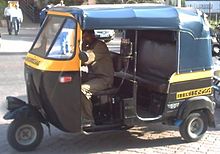
Auto-rickshaws are only allowed to operate beyond Bandra and Sion. They are not issued the licence for Old Mumbai. If you are not used to Indian roads, an auto-rickshaw ride can be heart-stopping, death-defying, laws-of-physics-bending.
Before departing, ensure that the meter is visible and shows the flag-down reading as 1.00 (on a mechanical meter). If the number is higher, insist that the driver flags it down once again. The minimum fare is ₹23 (in 2022). The meter remains at 1.00 for the first 1.6 km (0.99 mi) and every 0.10 movement indicates approx 200 m (i.e. 1.50 for every 0.2 km (0.12 mi)). Every auto driver is supposed to carry a valid RTO-approved meter tariff card. You can check this tariff card before paying. The meter also keeps ticking if you are waiting and/or are stuck in traffic. It's quite handy to have a copy of the meter card issued by The Mumbai Traffic Police. All of this applies to mechanical meters, not digital meters. Newer digital meters have started becoming common from 2012 onwards, and they show the exact fare, so there is no need to convert via the tariff card.
Auto-rickshaws are slower than cars and have terrible suspensions. Pregnant ladies are most strongly advised not to travel by auto-rickshaws since the combination of rash driving, poor suspensions, and horrible road conditions have quite often led to serious complications. The auto-rickshaw is a slow and uncomfortable vehicle and is not recommended for very long distances.
The Mumbai Metropolitan Region around Mumbai is fast developing into a major conurbation. If you need to get to the surrounding cities of Thane , Navi Mumbai or Kalyan , bus services are available.
Buses run from 5AM to midnight. Selected routes run beyond these timings, but much less often. The average frequency between buses ranges from five to 30 min depending on the route. Fares are reasonable and buses can be travelled during peak hours, unlike trains which are far too crowded. Some trunk routes do get extremely crowded, however. Peak hours also have traffic snarls which may depend on the area traversed and the state of the roads.
Buses are numbered and the final destination is marked on the front in Marathi and on the side in English. Generally, buses around the city and trunk routes would be in the 1–199 series. Buses in the western suburbs would be the 200 series while those plying in the central and eastern suburbs would be in the 300 and 400 series. Services to Navi Mumbai are in the 500 series and buses to the Mira-Bhayander area are in the 700 series.
- Brihanmumbai Electric Supply and Transport ( BEST ) provides efficient and comprehensive services connecting all places of the city and the suburbs. Some services also link the city with the extended suburbs like Navi Mumbai and Thane. Seats are almost always occupied. There are bus stops all over the city. There is usually a crowd and queue. You have to get in through the rear entrance and off at the front. Tickets are issued by a uniformed "conductor" after you get in. Special seats are marked for "Ladies", "Senior Citizens", "Handicapped", "Expectant Women", and "Women with infants". They can get in from the front. BEST has introduced the "Daily Pass" (Cost ₹50, valid on all BEST non-AC buses; Cost ₹60, valid on all BEST buses, including Air-conditioned bus routes). BEST has launched its app " BEST Prawas " for Android, which contains features like live tracking of buses and ETA of buses. You can also purchase BEST bus tickets and passes using the ridlr app for Android.
- TMT (Thane Municipal Transport) operates services in the Thane city and areas around it.
- The MSRTC (Maharashtra State Road Transport Corporation), commonly known as ST, operates services from selected points in the city to the extended suburbs. From Dadar, services to Navi Mumbai and Panvel and from Borivali to Thane are the most prominent. Numerous other important routes are also covered in the MMR (Mumbai Metropolitan Region) by the MSRTC.
- NMMT (Navi Mumbai Municipal Transport) operates services in Navi Mumbai Area, and a few points around. They also have services from Mulund in Greater Mumbai.
- KDMT (Kalyan Dombivali Municipal Transport) operates in the Kalyan - Dombivli Area with a few connections to Navi Mumbai.
Another option is to book bus tickets online from Redbus or myticketbuddy [dead link] , both of which have a choice of a number of large private bus operators all over India.
Most people travel in Mumbai using the Mumbai Suburban Railway commonly referred to as "Locals". Mumbai has an extensive railway network, with three lines — the Western Line, the Central Line and the Harbour Line.
- Mumbai is a linear city and the Western Line Western travels from Churchgate to Dahanu Road via Mumbai's Western Suburbs. The Western line provides north–south connectivity.
- The Central Line Central travels from Mumbai CSMT to Ambernath via Mumbai's Central Suburbs and Thane , with some services running beyond to Karjat, Khopoli, and Kasara. The interchange point between the Western Line and the Central Line is Dadar.
- The Harbour Line Harbour has a common stretch between Mumbai CSMT and Vadala Road. The Harbour Line splits into two spurs, the main one running to Mumbai's Eastern Suburbs and Navi Mumbai, up to Panvel. The Interchange point of this line with the Central Main Line is at Kurla. The other spur of the Harbour Line runs up to Mahim on the Western Line and runs parallel up to Andheri. The interchange stations with the Western line are Bandra and Andheri.
Trains on all lines start operations after 4AM and close operations between midnight and 1AM. Second-class travel is very cheap. However, it is advisable to buy first-class tickets as the economy class is extremely crowded. First Class can be quite expensive and if four people are travelling together, a taxi might be better.
There would always be queues and it would be advisable to buy coupon booklets. Coupon booklet punching machines are available at all stations and the best thing is you will not have to stand in a huge line to buy a booklet. Another option is to buy a Smart card for Railways. It helps you maintain balance like any gift card with an option to refill it once it goes below the limit. Smart card outlets to buy tickets are available at all stations. They are touch screen based and you can simply follow the instructions to buy a ticket for the right path.
If you are a tourist, you can buy a 'Tourist Ticket'. It costs ₹275 and you can travel in first class compartments of all three lines during the entire day. Ensure the location of the first-class compartment before the train arrives. You may ask fellow passengers or the vendors at the various food stalls. An easier way to spot the location of the First class compartment is to check the station walls painted with red and yellow slant stripes.
Avoid using local trains during rush hour (first class or otherwise). Rush hour is 8:30–10:30AM towards CST and Churchgate and 5:30PM–8:30PM in the opposite direction. If you are travelling during rush hour, don't stand near the railway tracks as you will get swamped by frantic. Take no offence if you are pushed and shoved about, as passengers jostle for a spot. As you near your exit station, ensure that you are as close as possible to the train door, as experienced commuters, will begin the mad run to be first on, or off, the car before the car comes to a full stop. If you stand any chance of getting on/off before the train departs, you must be equally aggressive in your focus to exit/enter, remember no one will take offence if you make contact with others, as you wriggle by. Last, but not least, exiting/entering a train before it comes to a full stop is not something to be taken lightly, one misstep can send a person onto the rails with amazing ease! Leave the stunts to the experienced locals.
There are special coaches for women in both classes. These are designated by green and yellow slant stripes, spot these stripes on the station walls and you'll know where the ladies compartment is. These are generally less crowded and safer. But very late at night, it might actually be safer to travel by the general coach than the first-class women's coach, as the latter may be absolutely empty except for you. From 11:15PM-6:30PM the ladies compartment towards the northern end is open to the general public. Sometimes they have a cop guarding the coaches, but sometimes they won't. Use your judgement.
By metro [ edit ]
The Mumbai Metro connects the western suburbs to the eastern suburbs. Line 1 runs from Versova to Ghatkopar with interchange options available at Andheri (Western Line) And Ghatkopar (Central Line) Railway Station. The travel time is 20 minutes.
You can purchase Mumbai Metro tickets from your smartphone using the ridlr app.
By monorail [ edit ]
Mumbai has India's only monorail system, it has one line and eighteen stations throughout the city. The fare is between ₹5 and ₹11 depending on your destination station.
By ferry [ edit ]
These are a few intra-city ferry services:
- Gateway of India to Elephanta Caves Fast boats and Catamarans operated by private operators. These are moderately priced. This is only way to get to Elephanta Caves .
- Gorai (Borivali) to Gorai Beach Low-cost ferry connecting Gorai Beach/Esselworld.
- Marve Jetty (Malad) to Manori Jetty Cheap ferry (by BEST) connecting Manori and Gorai. Also services for Esselworld (Amusement Park).
- Versova (Andheri) to Madh Jetty Cheap ferry connecting Madh/Erangal/Aksa/Marve.
Travel agents and hotels can arrange private chauffeur-driven cars to provide services. Expensive by comparison with taxis, they are the most trusted, secure, and comfortable way to travel around the city. Driving in Mumbai can be difficult, because of poor driver discipline, but chauffeur-driven services are very reasonable. These can be arranged by travel companies or online from the countries of origin. Car rental agencies also have services in Mumbai.
Talk [ edit ]
Mumbai is India's melting pot — a confluence of people from various parts of India, but dominant are people from the west, then north, and followed by the south. Marathi is the state and city official language used by State Government agencies, municipal authorities, and the local police, and also the first language of most locals.
However, being one of India's largest cities and main commercial centre, Mumbai is now also home to migrants from other parts of India who do not speak Marathi. A local variant of Hindi , with strong Bollywood influence, called Mumbaiya Hindi (or Bambaiya Hindi ), serves as the "lingua franca". Although almost everyone can understand standard Hindi, you may get an interesting reply from some. Most educated locals will be well versed in Marathi, Hindi and English.
English is widely used in the corporate world and in banking and trading. In most places, you will be able to get by with Hindi and English, as most people you will encounter can communicate in broken English at the very least. However, expect to hear more regional languages including Gujarati .
See [ edit ]
There is a lot to see in Mumbai, but the typical "tourist" sights are concentrated in South Mumbai .
By Indian standards, Mumbai is a young city and much of the land comprising the city did not exist until it was claimed from the sea over three centuries ago. It is therefore, a pleasant surprise to find rock cut caves such as the Elephanta, Kanheri, and Mahakali within city limits.
Colonial buildings [ edit ]
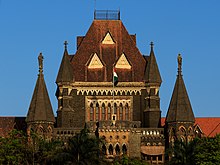
The British built a magnificent city within the walls of Fort St. George, which lies at the southern extremity of the city. Some fine examples of the Gothic revival, Neo-classical style and Indo-Saracenic style are seen within this area. To get the best experience of the city centre, stroll around the wide streets of the area right from Churchgate to Colaba. These areas are all beautifully planned and have wide and clean pavements, unlike the rest of the city. Famous monuments to be seen in this area are the Gateway of India, the Chhatrapati Shivaji Maharaj Terminus (CSMT, previously Victoria Terminus), the Municipal Corporation and Police Headquarters and the Chhatrapati Shivaji Vastu Sanghralaya (formerly, the Prince Of Wales Museum). The famous Taj Mahal Palace Hotel is opposite the Gateway of India. The Mumbai University buildings and the High Court are also excellent examples of colonial architecture in the city.
There are a lot of other modern structures to look at in this area. The area known as Marine Drive (right from Girgaon Chowpatty to NCPA) is home to a large number of buildings built in the Art Deco style. Mumbai is second only to Miami in the number of Art Deco buildings. some famous buildings in this style are the Eros and Regal cinemas. The Art Deco and Gothic buildings were added to the UNESCO World Heritage List in 2018.
Museums and galleries [ edit ]

Some of the India's most famous museums and art galleries are found here. The Kala Ghoda area in South Mumbai teems with them, particularly the Chhatrapati Shivaji Maharaj Vastu Sangrahalaya (Prince of Wales Museum), and the National Gallery of Modern Art . Once again, most of them are concentrated in South Mumbai. Also worth planning a visit is Jehangir Art Gallery, also at Kala Ghoda, displays changing exhibits by notable artists. The plaza next to the gallery also regularly displays exhibits of various artists.
In Nehru Complex in Worli is Nehru Centre Art Gallery at Worli is a gallery dedicated to young and promising talent along with established artists. Also within the complex is a permanent exposition, Discovery of India, which attempts to cover every aspect of artistic, intellectual and philosophical attainment of India through ages. The exposition spreads across 14 galleries and reflects true identity of the country. On the other end of the complex, Nehru Science Centre - which has a separate entrance from Mahalaxmi race course road, has a permanent exhibition on 'interactive and exciting' science related exhibits highlighting science principles in fun yet educational way.
Beaches [ edit ]

Mumbai isn't known for beaches because they have immensely filthy water! Mumbai has a few beaches, including one in the southern districts. But they aren't that great and the water off Mumbai's coast is extraordinarily dirty. The relatively better ones are in North Mumbai . However, they are a great place to see how the locals spend their Sunday evenings, with various food and game stalls.
There are other beaches to be found such as the Girgaon Chowpatty (the cleanest one) in South Mumbai, Juhu Beach in the Western Suburbs and Aksa Beach in North Mumbai. The currents don't seem strong, but particularly in the rains, lots of people die from drowning, so avoid getting in the water (especially at Aksa Beach). A word of advice to women: Mumbai beaches are not the kind you can wear swimsuits to, particularly two-pieces.
Zoos, parks and gardens [ edit ]

Mumbai has a justified reputation as a concrete jungle, but there are some nice pockets of greenery within the city. It is also one of the rare megacities to have an entire national park within its borders ( Sanjay Gandhi National Park [dead link] ). You will not visit Mumbai for them, but if you are already here, they make a nice escape from the din and bustle. It also houses the ancient Kanheri Caves crafted out of rocky cliffs, which dates back 2,400 years.
The city zoo (Jijamata Udyan) in Byculla is a colonial relic and it is surprisingly well-preserved. The animals may look rather emaciated, but the sheer diversity of trees on this lush zoo is worth a trip.
Some city parks are very well-maintained and combine history as well. The "Hanging Gardens" on Malabar Hill offers stunning vistas of the Marine Drive. Opposite the Hanging Gardens, there is another park which is known as Kamla Nehru Park, famous for the striking shoe-shaped structure which has been filmed in various Bollywood movies
Further in South Mumbai, the Mumbai Port Trust Garden, is another hidden gem. This is set off a small side street off the Colaba Causeway 2–3 km (1.2–1.9 mi) south of the main section. Attractive views of the port, the naval yards and sunset.
In North Central Mumbai, there is Mancherji Joshi Five Gardens. Mainly used by walkers in the morning, it is a mess in the evenings. But the gardens encircle some historic, art deco residences.
Markets and crowds [ edit ]
Mumbai is probably worth visiting just for its street markets, the hustle of vendors, and the madness of the crowds. Good places are Bandra, Khar and Andheri. If you came to Mumbai and didn't give visit to the highly dense and crowded markets, it means you didn't meet the real Mumbai.
Hawkers and street shoppers don't ask for any legal permission and then set their stalls at the places where they see maximum footfall. From electronics items to fresh food, you can get everything at railway platforms, subway and mains streets.
Modern buildings and malls [ edit ]
Once the British left, the zeal to wipe away the traces of colonial rule was, unfortunately, not matched by the enthusiasm to build a new city that matched the grandeur of the British-era buildings. Now, while the shabbiness of the socialist era is thankfully being replaced by architecture with an eye on aesthetics, the new malls, multiplexes, and office buildings that are coming up are indistinguishable from those anywhere else in the world. Still, they are worth a look, especially if you want to have a look at India's success story. Skyscrapers exceeding 60 stories now dominate the skyline.
For long, Inorbit Mall was the only mall offering a lot of variety for shoppers. Palladium, built within the High Street Phoenix, broke the monopoly of Inorbit Mall. From state of the art interiors to international brands, the Palladium has everything. The new Infiniti Mall (Infinity 2) in Malad also has lots of foreign brands and is one of the biggest malls in the suburbs. Nirmal Lifestyles Mall in Mulund and Metro Junction Mall in Kalyan are two of the largest malls in Mumbai. In the central suburbs, they are quite popular in the city. The Phoenix Marketcity Mall is the largest in the city, located in Kurla. There is also the R CITY Mall in Ghatkopar.
Powai is a modern central Mumbai suburb with European looks. Powai houses the Indian Institute of Technology and is built around fabulous lake. Most of the construction is in a township format and is privately built. It houses twenty top of the line restaurants, two large convenience stores, a handful of coffee shops and entertainment areas. Initially built as an upmarket self-contained township, Powai has now grown into a business process outsourcing hub in Mumbai. The township reflects both characteristics; you will often find families shopping and twenty somethings hanging out in tables next to each other.
Religious places [ edit ]
Mumbai has temples, mosques, churches, Parsi agiaries, and even a few synagogues reflecting the diversity of its citizens. While these are naturally of interest if you are a believer, some, like the Portuguese church at Dadar are worth visiting just for their unique architecture.
Mahalaxmi temple is located on the shores of the Arabian Sea, offering a scenic and serene view to the devotees and visitors.
Siddhivinayak temple of Mumbai is very famous. It is in Dadar and you can easily get a taxi to go to the temple from the Dadar railway station.
The city also boasts of Jewish places of worship predominantly in the area called Byculla, but also in South Mumbai. In this area the three prominent Jewish groups of Mumbai lived. They were Baghdadi Jews, Bene Israelis and the locals who had converted over a period of time and lived in the hinterland.
There are two very beautiful Hare Krishna (ISKCON) temples that are significant tourist attractions. One is in Hare Krishna land, Juhu, Andheri and the other in South Mumbai, near Gandhi's house. Both have Govinda's pure vegetarian restaurants at the premises. Most tourists appreciate the peaceful experience in the temple.
The Islamic Research Foundation of Zakir Naik is in South Central Mumbai near Dongri. Is popular with people of all faiths. It hosts a vast library of books from all world religions and is a great place to hangout and know about Islamic culture.
Mount Mary Church , also known as Basilica of Our Lady of the Mount, is a Roman Catholic church located in Bandra West, Mumbai.
Haji Ali Dargah is one of the most visited places in Mumbai. The Dargah Sharief is built on a tiny islet 500 metres from the coast, in the middle of Worli Bay, in the vicinity of Worli. People from different religion and places visit this places. More than 80,000 people visit dargah every week.
One notable monument in Northwest Mumbai is the Global Vipassana Pagoda in Gorai. It is a meditation centre that can seat 8,000 people. Vipassana literally means mediation, and the centre runs 10-day meditation courses and 1 day mega courses on Sundays. The courses are free of cost but you would have to register for them in advance on their website.
Do [ edit ]
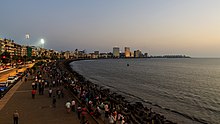
There is a lot to do in Mumbai, but lack of space means that for outdoorsy activities, you need to head north, often outside city limits. In North Munbai and Thane, you will find opportunities for water sports like H2O [dead link] at Girgaon Chowpatty. There are two golf courses in the city, the more famous one in Chembur [dead link] in the Harbour Suburbs.
Mumbai has a vibrant theatre scene with plays in many languages including English, Hindi, Gujarati, and Marathi. While South Mumbai has frequent performances, the best organised theatre effort is at Prithvi theatre, Juhu in the Western Suburbs. There are plenty of opportunities to enjoy Indian classical music and dance. While not a patch on the Sabhas of Chennai, you will find frequent performances of Carnatic music in Shanmukhananda Hall, Matunga in North Central Mumbai.
Mumbai is also usually the first stop for Western pop and rock stars visiting India, which they usually do when they are over 50. The Rock scene is very good in Mumbai. These are very safe to go to and are recommended for rock fans. Most bands cover heavy metal acts like Pantera, Six feet under, and Slipknot. To try to find places with specific music tastes try asking students outside Mumbai's colleges. Western classical music performances are rarer. However most classical music performances along with other art forms are regularly performed at NCPA and Tata Theatre , both next to the narrow strip at Nariman Point.
- Chowpatty Jayenge Bhel Puri Khayenge ; as it says in the lyrics of one of the Bollywood movie song, go to beaches (specially in the evenings) and enjoy local favourite 'Bhel Puri' while the sun sets in the Arabian sea.
- Take a harbour cruise ; cruises from Gateway of India leave every 30 min daily except during the monsoon season (Jun-Sep).
- Dabba wallahs are a group of couriers in Mumbai who move two million household lunchboxes every day in a complicated system of delivery.
- Enjoy theatre & performances ; Mumbai offers unlimited opportunities to theatre lovers and there are regular shows in theatres across the city. Check newspapers on latest shows as well as performances at prominent halls such as Prithvi Theatre, NCPA, Tata Theatre.
- Get crowded , and try catching suburban trains at peak times. You are warned though.
- Join for heritage walks . organised by two architects, these walks take you around various historic and architecturally significant areas of the city. Walks are organised on the third Sunday of every month (with a break from June through August for the monsoons) and the route varies each time. The walks last around 2 hours. Discounted rates for students and the physically challenged.
- Poonawallas Breeders Multimillion ; on the last Sunday of February, the glitterati of Mumbai dress up for the Ascot of Mumbai at the Mahalaxmi Race Course. With High Tea, amazing hats, and hundreds of ordinary punters staking their little all on the outside chance, this is the event to attend in Mumbai so try to cage a ticket if you happen to visit around then.
- Pub Hopping , The number and variety of Pubs in the city allow for an enthralling Pub Hopping opportunity.
- Taj private yacht ; if you can afford it, rent the Taj's private yacht (has two sun decks and three bedrooms) for a cruise around the Mumbai harbour.
- Take A Dip at Water World
- Take a morning walk on Juhu beach
- Watch the sunset at the Gateway of India

- Temples ; there are so many religious places around in the city (both old and new) that one can plan a day long itinerary on that. Start with Mahalkshmi Temple, Banganga Temple, Siddhi Vinayak, Afghan Church, Mahim Church, Haji Ali... the list will get really long.
- Visit Essel World
- Visit museums and art galleries
- Watch a Movie ; you are in the land of Bollywood. Expect whistles and clapping by crowd in admiration of their celebrities on the screen, except at multiplexes as this occurs at single-screen movie theatres. Most of the cinema halls run both 'popular and new' Bollywood as well as Hollywood movies and some even screen ones in regional languages. Some of the popular Hollywood screening cinema halls in South Mumbai are Eros opposite Churchgate, Metro on M.G.Road, Regal in Colaba, Sterling next to CST Station, and New Excelsior in Fort. With the rise of malls and multiplexes, the nearest cinema is unlikely to be more than a stone's throw away, even in the suburbs. Check out newspaper listing to get the list of latest screenings.
- Watch Cricket for Free ; cricket has a national games stature in India, and Mumbaikars revere that every day of the year. Azad Maidan (Azad ground) near Chhatrapati Shivaji Terminus, ground opposite to Ruia College in Matunga and Shivaji Park in Dadar west are some of the best places to witness the cricket fever for free. You may be even lucky to witness ongoing game of cricket on some of the empty streets of Mumbai.
Festivals [ edit ]
While many religious festivals are celebrated by people in Mumbai, a few of these are essentially public and social occasions, where the traveller can participate.
Organised festivals and events [ edit ]
- Banganga Festival . (Jan) The musical festival is organised by Maharashtra Tourism (MTDC) annually at Banganga Tank on Malabar Hill.
- Elephanta Festival . (March) Organised by Maharashtra Tourism, the festival of music and dance at Elephanta Caves has in the past seen performances by renowned artists like Alarmel Valli, Sanjeev Abhyankar, and Ananda Shankar and traditional Koli dances as well as traditional food. 7PM-10PM (Ferries start at 4PM)
- Kala Ghoda Festival . The arts and crafts festival is held in the last week of Jan or first week of Feb annually in the historic precinct of Kala ghoda in Mumbai.
- Mumbai Festival (Jan) Sample the vibrant culture of the city. The festival covers theater, sports, fashion, food, and shopping.
- Mumbai Wine Fest (Feb) Wine connoisseurs of the city gather to sample wines, enjoy the culinary delights while soaking in the cultural extravaganza put up at Kala Ghoda.
Religious festivals [ edit ]
- Christmas (Dec) This is characterised by midnight (nowadays held around 8-9PM on Christmas Eve due to restrictions on loud speakers) masses in churches and is usually followed by a number of private parties all across the city.
- Diwali (Oct/Nov) Festival of Lights. Start of New Year and opening of new accounts. Worshiping of Goddess Laxmi. Participate in the fireworks and view the bright lights.
- Ganesh Chaturthi (Aug/Sep) is one of Mumbai's most important and colourful festivals. During the 10 day celebration, Lord Ganesha is worshiped in millions of homes. See the colourful processions and participate in them, the biggest of which is on the last day of the celebrations where the largest idol is brought to Chowpatty for immersion in the wee-small hours of the morning and can vary depending on the crowd and pace of travel from Lal Bagh to the beach. The Lalbaug, Parel, Matunga and Dadar areas represent some of the best large scale decorations. On the last day of the festival, processions are carried out to bid bye to the loved deity in the sea. These presentations are colourful and carry a celebration fever. The best places to watch them are Girgaon and Dadar Chowpatty (beach) or the main roads such as Ambedkar Road from where the processions are carried out.
- Janmashtami (Jul/Aug) Birth Anniversary of Lord Krishna. Earthen pots full of curd are strung high up across the streets. Young men stand on top of one another to form a human pyramid and attempt to break the pots.
- Mt. Mary's Feast (Sep) The feast in honor of Our Lady of the Mount is celebrated with great solemnity at St. Mary's Church, Bandra. A week long Bandra fair is held during this time attracting huge crowds.
- Navratri (Sep/Oct) is a 10-day festival, where nine of the nights are spent in worship and entire Mumbai swings to the rhythm of Garba and Raas dances of Gujarati community.
- Ramadan-Eid Muslim festival marks the end of the holy month of Ramadan. Marked by feasting at many places. Non-Muslims can also join in.
Sports [ edit ]
Mumbai inherits the cricket fever justifiably and the metropolitan region has 3 of the finest cricket stadiums in India, namely Brabourne Stadium (Churchgate), Wankhede Stadium (Marine Lines) and DY Patil Stadium (Navi Mumbai). Several of international cricket matches and domestic championships such as Indian Premier League (IPL) have been played in these stadiums. Watch out for upcoming cricket stadium to join the cricket frenzy crowd. Apart from these, Ruia College, Shivaji Park, Azad Maidan, Marine Lines are some of the places where live cricket action can be seen for free. Alternatively if you are a football fan, you may want to visit Cooperage Football ground (Colaba) for a local league match. For swimming enthusiasists, Mahatma Gandhi Swimming Pool (Dadar W) is the place to visit. For horse racing, head straight to Mahalakshmi Race Course (Mahalakshmi). Powai hosts some of the finest Golf fields. For others there are many sport activities including Tennis, Table Tennis, Badminton which can be practised at various clubs. Gyms are plenty and can be easily found.
Learn [ edit ]
- Cricket - As cricket is like religion in India, many youngsters travel to Mumbai from different corners of India to get professional training in Cricket academies and educational institutes.
- Film & TV production - The craze of Bollywood attracts many people to try their luck in Mumbai. The city hosts many big film production houses and studios. Most of the big film producers and directors belong to this city and they have opened several training institutions to attract new talent.
- Indian classical music - The origins of Indian classical music are found in Vedas and the metropolitan city, Mumbai has been continuing the tradition. Most of the die- hard Indian classical music lovers operate training classes to pass on their talent to young generation.
- Indian cooking - Mumbai is real heaven for food lovers as one can get variety of food here. Food lovers not only love tasting variety of food but they also serve food to others by preserving their cooking talent. Many professional and amateur cook lovers offer free as well as paid classes to passionate learners.
- Yoga - Being highly busy city in India, the Mumbai people try to revive their life by taking part in different Yoga activities. In their rush schedule, Mumbaikars try to spend some time doing Yoga as they know role of these activities in their life.
Work [ edit ]
Nariman Point and Fort are the commercial hubs of the city and the most sought-after destinations. There is a significant expatriate population working in the banks and financial services industries. Bandra-Kurla Complex is another business district in Mumbai.
The advertising industry is a prominent industry in Mumbai. Many of the top advertising companies such as Lintas, O&M, Saatchi & Saatchi, Contract, and Trikaya Grey have their offices in the city.
A good idea to make quick money is to work part-time in a BPO or a call centre most of which are concentrated at Mindspace, Malad(W) and Hiranandani Gardens (Powai). Only suitable for English speakers.
Foreigners can also earn a quick buck as extras in Bollywood films. Bring a book as there is a lot of time spent sitting around, so it's not something to do for the money. Normally you won't have to look for them as they will be asking tourists near Leopold's or your hotel manager may ask you when you book in.
Buy [ edit ]
Visa, MasterCards and Indian RuPay cards are widely accepted in the city shops. Many shopping establishments also accept American Express, Diners and host of other cards. However, some of the small shops or family-run shops may not accept these cards and some handy cash can be of help here. ATMs are widely available and many debit cards accepted as well. If you have an Indian bank account or credit card, you may not need to carry too much of cash. If you are a foreigner, it is a good idea to carry some cash to avoid charges while using your credit or debit card.
Many stores and websites have started accepting payments using mobile wallets and Unified Payment Interface (UPI). Some of the popular payment apps are Paytm, Google Pay (formerly known as Tez), PhonePe, BHIM and Amazon Pay.
In general, costs in Mumbai are higher than the rest of India, though they are still much lower by Western standards.
The shopping experience in the city is a study in contrasts. At the lower end of the spectrum are street vendors. Existing at the borderline of legality, entire streets have been given over to these hawkers and in many places it is impossible to walk on the footpaths, because they have blocked the way. On the other hand, these vendors often give you a great bargain though you will have to haggle a lot and be careful about what to buy. There's nothing like taking a local along to shop for you.
- Family-run shops , Or one could do shopping at family-run shops, where the items are behind the counter and one has to ask the salesperson to get items from the list. The traditional way to buy sarees or jewellery is to go to a shop where you sit on a bedspread laid out on the floor and the salespeople bring out their wares one-by-one until you make a decision. Shops like Bharat Kshetra in Dadar have scaled this model up to such an extent that they have a two-storied complex where you can do the same.
- Shopping Malls , Mumbai has been experiencing a boom in malls in the past few years. You can combine your shopping, dining out, and watching movies all in one place.
What to buy [ edit ]
- Antiques & second hand items , Visit Chor Bazar for the best options and bargains
- Burlingtons , in the Taj is a tailor specializing in Indian outfits. Buy some material and get some clothes made up by a tailor. It's an incredibly cheap way to get quality made-to-measure clothes. Usually only takes a couple of days.
- Carpets, rugs and shawls
- Cotton clothes , Mumbai is great place to buy quality and cheaper cotton clothes. Amongst many notable shops and brands, Cottonworld is a place to look out for.
- Dhoop , (translates into Sunshine or Incense) A quaint, stylist store where you can find really interesting quality crafts and home accessories. On the corner of Union Park, Near Olive, Off Carter Road in Bandra.
- Indian musical instruments , Indian music has its own set of musical instruments such as Tabla, Harmonium, straight Flute that it relies upon. These can be brought at various music shops scattered across the city. Some well known shops are L.M.Furtado, Ghaisas & Bros.
- Khadi clothing , Khadi is an authentic Indian variety of home spun cotton. Mahatma Gandhi advocated the use of khadi as a form of satyagraha against the use of foreign goods and a form of rural self-employment for India during the pre-independence days. Check out the Khadi Gram Udyog Bhavan at 286, DN Road, Near the Mumbai GPO & Chatrapati Shivaji Terminus. It is run by the Khadi Gramudyog Vikas Samiti which is an umbrella organization started by the Mahatma himself which today has evolved into a government registered unit promoting the use of khadi. A good place to buy souvenirs including khadi Indian flags. These are similar in type to the ones used during the freedom struggle. It also houses other forms of fabrics like pure cotton wool, and silk. Some of the items make use of natural straw. Also offer a collection of handmade paper products.
- Kurties and tunics' , a must have in India. Linkin Laado has a wide range of classy kurties, fushion ethnic wear and exquisite dress materials in most sought after pure fabrics such as muls, cottons, maheshwari and chanderi silk in hand block prints and intrinsic chikankari work. The shop is at Link Square Mall, Shop No. F5, Opposite KFC, Above Croma, Linking Road, Bandra West.
- Leather jackets , go to the main road in Dharavi. You can fit yourself with a leather jacket (they stitch it for you) of leather you pick. Usually takes just one day to get it.
- Luxury retail , Mumbai has witnessed a massive boom in luxury retail. All the brands you can buy in any other major city are available there.
- Pashmina , cheap stuff is everywhere and decent shawls in every hue can be purchased at various markups in any hotel arcade. High-quality items in unusual colors and unique designs require more searching. The "pashminas" sold on Colaba Causeway are not anywhere close to pashmina.
- Sarees , the best place to buy them is Dadar (both east and west). The place is buzzing 12 months a year. On Sundays the crowd can be maddening for outsiders. Good shops to buy Sarees are Dadar Emporium, Lazaree, Roop Sangam. On N C Kelkar Road and Ranade Road you can buy almost everything a woman needs. Bargain hard.
- Traditional clothing & handicrafts , State government operated emporiums such as those for Maharashtra, Gujarat, and Jammu & Kashmir. sell state specific items of clothing and handicrafts. These are in places around South Mumbai or the shopping arcades of Five Star Hotels. There is also a Central Cottage Industries Corporation of India Emporium near the Gateway of India beside the Tendulkar's restaurant. The items on display include embroidered clothing, carvings, paintings, sculptures etc. and are reasonably priced. Amongst the private labels, Fabindia is a must visit for its variety of kurtas [tunics], salwars, pyjamas, churidars & dupattas. They also offer bedspreads, cushion covers, decorative pillows, quilts, table linens, home furniture etc. Just like the government owned emporiums, Fabindia operates on a cottage industries model where products are hand crafted by artisans and sourced from villages across India. Good quality, smart colours, trendy designs but prices are a bit on the high side. Shops are found across Mumbai.
Bookshops [ edit ]
Mumbai has large number of organised bookshops. However it also has number of streetside second hand book shops or displays that give opportunity to come across rare collections. Many of these roadside book shops can be prominently found, among many, near Flora Fountain, Maheshwari Udyyan (former King's Circle) and Dadar west market.
If you are somewhere in the Western Suburbs, Granth on Juhu Road could be a good bet to find the book you are looking for.
The Crossword chain of book shops has an outlet in most malls around the city, as well as the main store in Kemp's Corner.
In a place without clearly displayed price tags (and sometimes even in places with), you will get charged about 3-4 times as much as a local if you seem like a tourist. Take a local with you if you're going to local markets to haggle. Haggling is much louder and ruder in India than elsewhere. Don't be afraid to haggle things down to 1/4 of the asking price. And most importantly remember that almost all stores that sell carpets, jewelry, handicrafts, etc. pay huge amounts of commission (25% up to even 50%!) to the cab drivers, hence avoid tourist taxis, cabs, etc. Another thing to remember is not to haggle just for the fun of it. The shopkeepers may take offence if you don't buy an item after they have agreed to your price. One of the places that you can trust is The World Trade Centre (in Cuffe Parade, near Hotel Taj President). Besides being the only World Trade Centre in Mumbai, this place has an amazing range of exquisite carpets, handicrafts, shawls, etc. with reputed government approved stores and state emporiums too. Ask for receipts everywhere, including bars, and check what you have been charged for. Don't ever accept a guide offer or escort of somebody from the street: You will certainly get conned. If some place (including taxis, restaurants, shops, etc.) claims it doesn't have change (this is highly unlikely), insist they get change from a neighbouring shop.
Groceries [ edit ]
In addition to the local grocery stores which can be found on most of the streets, there are new additions to the city in the form of new big and small supermarkets and hypermarkets where you can get all the food items you need. Some of them are Big Bazaar [dead link] , Hypercity , DMart, Spinach Local, Apna Bazaar.
Eat [ edit ]

The dining experience at an upscale restaurant in Mumbai is more or less the same as anywhere else in the world. You can find cuisine from the Middle East, Western Europe, North America and China easily. But to get a real flavour of what's unique to Mumbai, you will have to go a little lower down the scale and experience the street food and Irani cafes. Since March 2015, beef is banned in Maharashtra, and therefore in Mumbai. Therefore, it is uncommon to find beef served in restaurants. For individual restaurants and other places to eat, go to the individual district pages.
Don't leave Mumbai without trying:
- Alphonso Mangoes during summer season
- As many different kinds of chaat (Bhelpuri, Pav Bhaji etc.) as your stomach can handle
- Bread Maska (Bread & Butter) from an Irani Cafe
- Goan seafood
- Maharashtrian,Gujrati,Managlorean special and Kerala Thali
- Indian Chinese
- Indian sweets- milky, delicious concoctions (try the kulfi falooda at Badshah's in Crawford market)
- Particularly late-night at Bade Miyaan's behind the Taj near Colaba Causeway (also if the lights are off in order to avoid bribing the cops, do still try and approach it as it is likely to still be serving)
- Kingfisher Blue beer (not common in eateries, but only most "wine shops" (liquor stores)
- South Indian food from an Udupi restaurant
- Vada pav (the Indian veg burger): known to be the dish of Mumbai
Speciality restaurants [ edit ]
Popular search engines to find easily restaurants include Justdial , AskLaila and DizyLocal . The search engines shall provide the address, contact details, and user ratings (if available) of the specific eatery (if name is provided), or list of eatery catering to the specialty (e.g. Seafood, Pubs, Chinese Food, etc.) depending on the location suggested (e.g. Worli, Bandra, South Mumbai, etc.).
- Seafood , Apurva (Fort right off Horniman Circle). If you want to eat some authentic Indian (Konkan) sea food you must visit the Bharat Excellensea. It is next to the Horniman Circle and the Reserve Bank of India. It is becoming pretty expensive. In the slightly higher price range, Trishna (at Kala Ghoda in Fort) and Mahesh Lunch Home (also in Fort) are very popular among both locals and tourists.
North-Western
- Peshawari , Andheri, ( at Maratha Sheraton ). Its sister restaurant Bukhara in Delhi has been recognised as the best Indian restaurant around the world. Try tandoori jhinga, the kebab platter, sikandari raan (leg of lamb), and mangoes and ice cream (only during summers), Kebab Corner (Hotel Intercontinental), Copper Chimney (Worli) Khyber (Kala Ghoda), and Kareem's Malad Link Road in Malad W.
International Cuisine [ edit ]
- Chinese , India Jones, ( Hilton Towers Mumbai ), Mainland China (Saki Naka), Ling's Pavilion (Colaba), Golden Dragon (Taj Mahal Hotel), Great Wall (Renaissance), Spices (JW Marriott), China Gate (Bandra), China White (Bandra). Bandra offers a range of Chinese Restaurants. Royal China at VT (behind Sterling Cinema serves some of the best DimSum the city has to offer). The new CG83 at Kemps corner is brilliant and the signature restaurant of Nelson Wang. Also new is Henry Thams. The food is brilliant as are the prices, however the bar is much more popular than the restaurant.
- Combination Oriental , India Jones ( Hilton Towers Mumbai ), Pan Asian (at Maratha Sheraton), Seijo, and Soul Dish (Bandra), Joss (Kala Ghoda) has some of the best East Asian food in the country and at moderate prices (compared to hotels). San Qi at the Four Seasons (Worli) combines East Asian and South Asian cuisine quite well.
- Italian , Shatranj Nepoli ( Bandra, Union Park ), Little Italy (Juhu next to Maneckji Cooper school), Don Giovanni's (Juhu, opposite JW Marriott), Mezzo Mezzo (at the JW Marriott), Vetro (at The Oberoi, Mumbai), Celini (at the Grand Hyatt), Mangi Ferra (Juhu), Taxi(Colaba), Spaghetti Kitchen (Phoenix Mills, Parel).
- Japanese , Wasabi by Morimoto ( Taj Mahal Hotel, Colaba ) is Mumbai's best and most expensive restaurant, but Japanese food is on the menus of most Pan Asian restaurants like Tiffin (The Oberoi, Mumbai), Pan Asian (Maratha Sheraton), India Jones (Hilton Towers Mumbai), and Spices (JW Marriott), Origami (Atria Mall Worli). Also Japengo Cafe at CR2 Mall in Nariman Point serves up some sushi. Tetsuma, adjacent to Prive (probably best nightclub in town) serves an average sushi but other dishes are worth a try. Best to go there for a cocktail and a few starters. 'Tian cafe' at Juhu is also a good place for sushi.
- Lebanese Food , Picadilly, at Colaba Causeway, the only restaurant in the city serving Lebanese food. Alcohol is not served.
- Parsi , Their ancestors originating from Iran, the Parsis are a special community of people that one would associate Mumbai with. Parsi food is based on ancient Persian cooking. Go to Brittania at Ballard Estate or Jimmy Boy close to Horniman Circle.
- Sushi , Sushi Café (Santa Cruz West). A cosy little place. The decor, including the furniture, is all-white. You get chunks of white rice rolled with fresh fish and vegetables. They also do home delivery all over Mumbai. Sushi Café, Shop No. 1, Ground Floor, Sainara Building, corner of North Avenue and Linking Road, Santa Cruz (West), Tel: 98336–50503, www.sushicafemumbai.com.
International brands [ edit ]
- California Pizza Kitchen , 3 North Ave . Maker Maxity, Bandra Kurla Complex, Bandra (East).
- Chili's , Central Avenue Road, Powai, Ventura Building, Hiranandani Business Park.
- Cinnabon , ( next to Basilico ), Pali Naka, Bandra (West).
- Ruby Tuesday , shop No. 20, 2nd Floor, Inorbit mall, Malad (West) or at Shop No. 31, CR 2 Mall, Nariman Point, Mumbai OR Nirmal Lifestyle, Lbs Marg, Mulund West.
- Starbucks Coffee , Behind Taj Hotel, Near Gateway of India.
- T.G.I.F , Palladium mall,Phoenix High Street,Lower Parel or Infiniti Mall,New Link Road,Oshiwara,Andheri(West).
Regional Indian [ edit ]
- Bengali , Oh! Calcutta at Tardeo
- Fusion , Zenzi (Waterfield Road, Bandra), Out of the Blue ( Pali Hill, Bandra).
- General Indian , Sheetal Bukhara, Great Punjab (both in Bandra). More in Bandra.
- Goan, Coastal , Goa Portuguesa (Mahim) near Hinduja Hospital. New and a must try is Casa Soul Fry (opposite Bombay University in town) which serves up Goan Cuisine.
- Goan Cuisine , Casa Soul Fry opposite to Bombay University in town
- Gujarati Thalis , Chetana at Kala Ghoda, Thacker's at Marine Drive, and Rajdhani (multiple locations)
- Kashmiri , Poush at Andheri
- Lounge , Olive (Bandra), Rain (Juhu), Indigo.
- Mumbai Street Food , To experience the tastes and flavors of typical Mumbai chaat, and yet not expose oneself to the dangers of unhygienic street food, check out Vitthal's Restaurant on one of the lanes opposite Sterling Cinema (C.S.T.), but make sure you have a strong stomach. Vithal Bhelwalla (not the Vithal restaurant which is copycat) near VT station (behind Macdonald's) is a safe option.
- Punjabi , Himalaya Restaurant in Sion(E), Preetam's Dhaba at Dadar(E) and Urban Tadka at Mulund
- Speciality Deli , Indigo Deli (Colaba), Gourmet Shoppe (The Oberoi Shopping Arcade), Moshe's (Cuffe Parade), Cafe Basilico.
- South Indian , Dakshin (Maratha Sheraton) and Woodlands (Juhu)
- 24X7 Coffee Shops , Trattoria (Taj President), Frangipani (Hilton Towers Mumbai), Vista (Taj Land's End, Bandra), Hornby's Pavilion (ITC Grand Central), Lotus Cafe (JW Marriott), basically all the big hotels have one. More coffee shops in Bandra.
- Vegetarian , Swati Snacks (Tardeo, opposite Bhatia Hospital) a gem of a restaurant, it does not take bookings and the waiting during peak meal times is usually 45 minutes every day of the week! Little Italy on Juhu Tara Road (Jugu), Andheri West opp. Fame Adlabs multiplex, Malad (above croma), New Yorkers on Marine Drive Opp chowpatty; Creame Center on Linking Road, Bandra near Shopper's Stop and also on Marine Drive opp chowpatty; Statua at Nariman point opp. Maker Chambers. Relish (Hotel Samrat — Churchgate). Excellent vegetarian cuisine from around the world.
Street food stalls [ edit ]

Songs have been written about Mumbai's street food and you will find that the hype is justified. You will find them at every street corner, but they are concentrated in beaches and around railway stations.
- Bhelpuri stalls , Selling what in the rest of India would be called chaat . In Mumbai itself, the term chaat is rarely used.
- Bhurji , Either Egg bhurji or Paneer bhurji, a mash of eggs and chopped tomato, onion, chili, and lots of oil. Eaten on the side with some pav. Try the Maker Chamber area (near Crossroads 2, Nariman Point).
- Chinese food stalls , You'll find them at many places, but they are particularly concentrated near Dadar railway station. They all have a typical Indian twist added to it, which is why it is frequently called "Indian Chinese". Although it is great tasting, the hygiene of these places leaves a lot to be desired.
- Rolls , Essentially different meat and cheese grilled and served with some Roti and spice, these are cheap and cheerful for anyone with a stomach that can handle it. They are known to be spicy so always ask them to make it mild. Try Ayubs (Kala Ghoda), Bade Miyan (behind Taj and near Colaba Causeway), Khao Gulli (Food Lane, near Mahim Hindu Gymkhana), or Kareems (Bandra). All are particularly busy after a night of heavy drinking.
- Sandwich stands , Uniquely developed in Mumbai, you won't find anything like it anywhere else in India or the world.
- Vada pav stands , Fried potato stuffed in yeasty bread. Developed to provide nourishment to mill-workers in Mumbai's burgeoning mills. Now they are found everywhere, particularly in the railway stations. This is a Mumbai specialty. In Vile Parle (West), try the one off S.V Road near Irla across from Goklibai School. One of the most popular ones are opposite Mithibai College which is about 15 mins walk from Vile Parle Station. Also try the one outside Grant Road Station and Churchgate Station.
Tip : cheap and tasty food stalls are concentrated around the city's colleges.
Street stall food in India is fantastic, and very cheap. However, do consider well what you are putting in your mouth. Almost certainly the water used is non-potable, street vendors don't seem to understand much about hygiene or hand-washing, and food safety standards are low, with flies buzzing over everything. Even locals steer clear of street food during the monsoons, when diseases run rampant. If the stall seems very clean, and if it clearly states that it is using Aquaguard or mineral water, go for it.
Authentic Marathi cuisine [ edit ]
Mumbai, being home to large ethnic Marathi community, has its share of notable restaurants that offer authentic Marathi cuisine. Most offer both snacks and regular dining. Some of the snacks to check out are Sabudana Wada, Batata Wada, Missal, Kanda Poha, Uppit (or Upma), Shira, Alu Wadi, Thalipith, Zunka Bhakari,ghavane (neer dosa) and many more. Two notable appetisers are Kokam Sarbat and Solkadhi which are best enjoyed during hot summers. People say that many of these authentic Marathi restaurants are finding it difficult to survive competitions with other modern or fast food typed restaurants, but you will find Gajali, Malvan Kinara, Sindhudurg and many more have retained their own charm and clientele.
Udupi restaurants [ edit ]
Mangalorians(and udupi) forms the highest tourist populations of Mumbai,and both the cities have almost same culture and architecture. "Udupi" restaurants (or "hotels") are everywhere. They bear the name of the town of Udupi in Karnataka, but do not be misled into thinking that they specialise in the cuisine of Udupi. They serve pretty much everything, and that is their specialty.
Usually strictly vegetarian, these restaurants were opened by migrants from the district of Dakshina Kannada in Karnataka (of which Udupi is a part), to satisfy the palates of other migrants from the district. Over time, they gained popularity as places to have South Indian food. As the tastes of their customers evolved, so to did their menus, so much that now you can find Mughlai, Indian Chinese, Bhelpuri, and other chaats in addition to South Indian stuff. Amazingly, some places serve imitations of pizzas, burgers, and sandwiches too!
They are fast food joints and sit-down restaurants combined. The reason to visit them is not to experience fine gourmet dining, but to have cheap, passably tasty and fairly hygienic food. There is no easy way to identify an Udupi restaurant; they are not a chain of restaurants and they may not have "Udupi" in their name, so you will have to ask.
Matunga(Central line) has the best south Indian fare in Mumbai. There are few restaurants which could well be heritage sites as they are more than 50 years old and still retain their old world charm(and furniture).
Irani cafes [ edit ]
Irani cafes are Persian styled cafes opened by 19th century Persian migrants from Iran. These cafes have a unique lazy atmosphere, display of day-to-day accessories including toothpastes behind the cashier, soaps and what nots(specially targeted at bachelor crowds) and furniture. Most of these cafes were at the corner of the road or building and were chosen spots by commuters to spend time. It was quite a usual sight to find people spending hours reading newspaper over a cup of tea for hours in these places. Sadly the new restaurants and fast food culture has almost removed these cafes from the maps, though few notables like Kyani & Co. and Olympia remain. The joints are best known for their "Irani Chai", "Bun-Maska/Maska Pav" (bread and butter) and Egg Omelette. Also are popular their assorted snacks, like Kheema-na-Patice, samosas, mava-na-cakes, etc. One of the best dish which is almost always on the menu is Kheema (prepared from ground meat) and pav (bread). Don't miss the Mawa Cake at Merwan & Co, a bustling Irani cafe next to Grant Road station and be there before 9AM when the delicious cakes tend to run out.
Thalis [ edit ]
If you order a thali (translated as "plate"), you get a complete meal arranged on your plate, with a roti or chappati, rice, and many different varieties of curries and curd. Ordering a thali is a popular option when you are hungry and in a hurry as it is usually served blazingly fast. Most mid-level restaurants have a thali on the menu, at least during lunch hours. Occasionally, they are "unlimited", which means that some of the items are all-you-can-eat. The waiters serve them at your table.
Of course, you find many varieties of them, both vegetarian and non-vegetarian. There is the South Indian thali. The "North Indian" thali translates to Mughlai or Punjabi. Do try Gujarati or Rajasthani thalis if you can find them. They are sinfully filling and tasty. Rajdhani (At Crawford Market) serves up thalis in the Rajasthani style while Aram (near Mahim Church, Mahim), Ramanayak Udipi (At Matunga Station, east) serves up thalis in South Indian style and Shree Thakker Bhojanalaya (off Kalbadevi Road) do filling and fabulous Gujarati thalis.
Fast food chains [ edit ]
Western fast food chains like McDonalds, Subway, Pizza hut, Dominos, Kentucky Fried Chicken etc. have many outlets all over the city. But if you are a weary Westerner looking for the taste of the familiar, be warned that all of them have rather heavily Indianised their menus, so you will find the stuff there as exotic as you found Bambaiyya food. There are chains serving Indian food such as Jumbo King whose menu includes vada and lassi. Barista , Cafe Coffee Day [dead link] , and Smokin' Joe's are all Indian chains, although they don't serve Indian food. While Barista and Cafe Coffee Day, as their names suggest, serve coffee and pastries, Smokin' Joe's serves decent pizzas and is headquartered in Carmichael Rd, Mumbai. International coffee chains like The Coffee Bean and Tea Leaf, Aromas have outlets in Mumbai.
Naturals is a chain of ice cream stores that serves up tasty and unconventional flavours of ice creams. Try their tender coconut or the coffee walnut ice creams. Its main branch is in Juhu in the Western suburbs (hence the tagline - 'Ice cream of Juhu Scheme'), but it has franchises at many places including Marine Drive, Bandra, Nepean sea road, etc. Naturals is also famous for its seasonal "Sitaphal" or Custard Apple Ice-cream. Baskins-Robbins is an international ice cream chain having its presence throughout the city. Also there are a number of shops in malls amongst other places which serve Italian Gelato icecream.
Try the sumptuous creamy crepes and omelets at Crepe Station, Bandra. Its owned by a famous Bollywood actor, Dino Morea.
What to eat [ edit ]
Asking a local for suggestions is a fun way to try new things. Here are a few suggestions:

- Bhel Puri & sev puri , A classic Mumbai concoction, bhel-puri (or bhel for short) comprises mostly of puffed rice and assorted spices with a few chutneys. You can specify whether you want it spicy or bland and the vendor will make it for you. It is quite tasty and again ought to be had off the streets to get the real flavour. Most people like to flock to Juhu beach to try this out.
- Hapus (Alphonso) mangoes , A must try, if you happen to be in Mumbai in the summers.
- Indian-Chinese , Nothing like regular Chinese. For a typical Bambaiyya flavour, try the Chinese Bhelpuri! .
- Mewad ice cream , If you happen to be in Mumbai, it is recommended you avoid ice creams from the famous and expensive parlors and try out the cheap Mewad ice cream stalls. They are a lovely treat at their price and provide a lot of options. The vendors are found everywhere across the streets, but avoid those who appear unhygienic.
- Pani Puri , The vendor hands you a plate. Next he takes a puri (it looks like a golf ball, but brown in colour), makes a small hole in it, and dips the puri into two jars. These jars contain water, one tangy on a tamarind base and the other spicy on a mint base. He tops it off with some condiments and places the puri on your plate. You pick it with your hand and pop the whole thing into your mouth. To avoid stomach problems only buy from vendors using packaged water.
- Pav Bhaji , Part of the street food culture, this is mashed vegetables cooked in spices, topped with butter and served piping hot with pav. Widely available.
- Vada Pav , the vada is a mashed potato patty. Pav is a kind of bread that has its roots in Mumbai. (The word comes from the Portuguese word "pão", for bread). The potato patty is sandwiched in the bread. Liberal helpings of three kinds of chutneys are added to the sandwich to make a tasty snack. It is widely available on the streets and generally costs around ₹6 a piece. If you feel uncomfortable with the hygiene of a particular stall, avoid it. In that case eating at, Jumbo King Vada Pav outlets, found almost at all train stations in the city, is a hygienic and safer option.
- Variations of world cuisine such as Tandoori Chicken Pizzas, the Bombay Masala Pizza or McAloo Tikki burgers.
Tipping [ edit ]
Tipping is not expected, but would be appreciated. However, if a place includes service charges on the bill, you don't need to leave an extra tip. Note the difference between service tax and service charges. Service tax goes to Government and not to the staff.
Drink [ edit ]
Pubs & bars [ edit ].
A police crackdown (June 2012) on many popular bar and clubs is underway, so be cautious when visiting lower to mid range bars. Mumbai is one of the most liberal cities in India when it comes to attitudes to alcohol. Bars exist at virtually every street corner and many of them advertise themselves as "family" bars and restaurants, which indicates that they are primarily restaurants where one can also have a drink. Other places are primarily bars, some of them might be sleazy. In South Mumbai and in the Western Suburbs, you are likely to find many places where foreigners hang out.
Mumbai is much more accepting of women drinking than the rest of India. A woman ordering a drink is unlikely to raise eyebrows even in mid-range bars, though if you are alone, you might need to look out for your safety.
Nightlife in Mumbai spans the gamut from performances at five star hotels to discos. Dance bars which involve young, fully clothed women dancing mostly to Hindi film and pop music, have been shut down by the government for "corrupting the morals" of those who frequent those places. While the state high court has ruled that the crackdown was illegal, it will be a while before they open again as there are some technicalities involved to be sorted out.
In Mumbai, alcohol is much more easily available than many cities in India.
LGBT options [ edit ]
There is already a lively late night, if somewhat subterranean, scene for gays, as well as social and political networks. However, you need to do your homework before arriving, as LGBT gathering spaces and organizations are not published or available at local newsstands. However, Bombay Dost (Bombay Friends) the only magazine catering to the community, after 7 years of running was closed and relaunched in 2009. Much of Mumbai's LGBT scene is coordinated using social networking sites and groups. Use extreme caution; robberies, hustlers, and even police entrapment are not unheard of.
Coffee shops [ edit ]
There many coffee shops in and around Mumbai. Try the Cafe Coffee Day [dead link] and Barista chains. Also, three Starbucks stores were opened in Mumbai in late 2012, and more are likely to follow. These are the best around town and also serve some pretty neat coffee for cheap. There's the Cafe Mocha chain of coffee shops which also serve fruit flavoured hookas — South Asian smoking pipes. If a small coffee and cookies place is what you are looking for, try Theobroma , it has an outlet at Cusrow Baug in Colaba. Those looking for a more native form of coffee can try the filter coffee, a milky coffee with origins from South India, from any Udupi restaurant.
Sleep [ edit ]
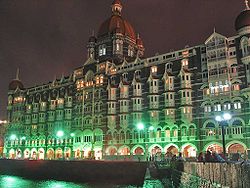
It is very difficult to find good-budget hotels in Mumbai. If you are a tourist or a business traveller, you may have to stay in South Mumbai, which is where both the business district and the touristy areas are. Lack of space means that even the cheapest hotel charges stratospheric tariffs. The state of public transport and traffic means that it is not really a good choice to stay anywhere else. In any case, things aren't much better if you are looking for hotels close to the airport. You should be looking at the Western Suburbs in that case. There are many guest houses at Colaba, where you find most of the budget foreign travellers stay. Other budget hotels are found near railway stations, such as Dadar or Santacruz, but most of them are absolute dumps. One safe and economical place to stay in Mumbai is the YMCA. Reasonably priced accommodations are available at the Colaba, Bombay Central, Andheri and CBD Belapur Branches.
One inexpensive alternative is to live with a local family as a paying guest. A list of available families can be obtained from the Government of India tourist office (+91 22 2220 7433) opposite Churchgate Western .
On the other hand, if money is of no object, you can stay at the Taj in Colaba (the oldest in India), the Leela Kempinski, the ITC Grand Maratha, or the JW Marriott Mumbai, Renaissance Mumbai Hotel & Convention Centre.
Connect [ edit ]
Landlines [ edit ].
The area code for Mumbai is "22" (prefix "+91", if you are calling from outside India). Phone numbers are eight digits long, but on occasion you will find a seven digit number listed. That is probably an old listing. They made the changeover from seven to eight digits a few years back, when they allowed private service providers to offer telephone. Just prefix a "2" to the number and it should work just fine.
Pay phones [ edit ]
Phone booths can be found all over the city. Though they are coin operated, there is usually someone to run the place. (Typically the phones are attached to a roadside shop.) You need to keep putting ₹1 coins into the slot to extend the talk time, so keep a change of ₹1 coins handy with you. The person running the booth will usually have them. If you find a booth marked STD/ISD, you can call internationally or anywhere within the country. Fees will be charged according to the time spent and a meter runs to keep track of your time. You pay when you have finished your call. Often it is difficult to find one that is open early in the morning or late at night.
Mobile phones [ edit ]
Cell phone coverage in the city is excellent. There are many service providers offering a wide variety of plans. Among them are The MTNL [dead link] , Vodafone Idea (Vi), Airtel , Dolphin [dead link] , Reliance Jio, and Tata Indicom [dead link] . It might be a good idea to buy a cell phone and use one of those prepaid plans to get yourself connected while you are in the city.
All mobile numbers are 10 digits long and begin with a "9", "8" or "7". Do not dial the city prefix for mobile numbers. If you don't get through to a mobile number, try adding a "0" before you dial it.
Due to security threats, in order to purchase a SIM card you will need to provide formal identification.
Cybercafes [ edit ]
Cybercafes are found on virtually every street corner and the rates are quite low. They have probably not kept pace with advances in hardware or software, also data security could be an issue. As a precaution, change your password after you use it at a cybercafe or do private/incognito browsing.
WiFi [ edit ]
Finding WiFi will be difficult in many parts of Mumbai, however, nearly all railway stations have been upgraded with 'RailWire' WiFi powered by Google that lets you browse for 45 mins at 5-10 Mbit/s speeds. RailWire WiFi requires you to authenticate with your mobile number and OTP. WiFi is also available at most hotels and restaurants. Airport WiFi is provided by Vodafone Idea.
Postal services [ edit ]
The Indian Postal service's head office is housed at GPO, a magnificent colonial architecture on its own; next to the C.S.T. railway station. The other main branch office can be found at Dadar (E) on Ambedkar Rd.
Stay safe [ edit ]
Unlike other parts of the country, especially Delhi where rape is prevalent, crime is rare, except for possibly common crime like pickpocketing.
Violent crime in Mumbai is more or less like any other large Indian city.
It is best to err on the side of safety and act according to your local environment. Here are a few basic safety tips:
- Keep your money and credit cards safe at all times. Always carry some cash as many places won't take cards.
- Do not openly display ₹500 and ₹2,000 notes in public. The available currency notes are ₹10, ₹20, ₹50, ₹100, ₹500 and ₹2,000 and the available coins for tender are ₹1, ₹2, ₹5 and ₹10. Beware of someone giving you currency notes of any other denomination (though it is very unlikely; as they would have to be exchanged with the Reserve Bank of India; the central bank of India). The Indian government demonetised the old ₹500 and ₹1,000 currency notes in November 2016.
- Travelling in Mumbai is generally safe at any time of the day or night. The risks primarily run if you are not aware of the fares and fare calculations (only applicable to non-electronic and non-prepaid meters). If you travel alone, especially in night, then always see the meter by yourself and then pay the fare. If you are alone, sit in front so that you can see the meter.
- There have been cases where taxi drivers con people, mostly tourists, by taking longer routes, charging extra for luggage, tampering with the meter and fooling the passenger by exchanging ₹500 with a ₹100 note within fraction of seconds and making the passenger believe that he/she has handed over a ₹100 note. Thus, in order to avoid getting fooled, prefer app based taxi services like Ola and Uber for commuting.
- Beware of pickpockets on buses and trains. Do not put your wallet or other valuables in outside pockets of your bag, such that someone may be able to slip it out without your noticing.
- Also beware of mobile, chain, or bag snatchers who operate in densely populated places, such as railway stations, busy roads, and traffic signals.
- Women traveling by train, especially on off-peak routes should travel in the second class where at least a few co-passengers are also found.
- Women (especially Westerners) should avoid crowded places, you might well get groped. Cases of men pinching or touching women are common in crowded public places, including nicer nightspots. Create a scene if this does happen to you, there will be enough people around that will come to your defence. In general, in Mumbai, if you are ever worried about your safety, make a loud scene. It is an extremely crowded city, and somebody is always around and willing to help.
- Women should never ever take lifts from strangers. Western women tourists should note that if they visit a disco or pub in Mumbai or India, don't take lifts or even get too friendly with strangers. You will almost certainly get conned, if not worse. Many Indian men presume that if you're foreign you must be easy.
- Don't ever let an auto or taxi you are traveling in pick up any more people, or pull over before your final destination.
- Police can sometimes be almost as shady as criminals in Mumbai. At night, women should ensure if they are ever stopped by police, there needs to be a female police officer present or they are well within their rights in demanding the presence of a woman cop.
- Think twice about eating food that has not been thoroughly heated. This may be especially true if you're eating street food.
Emergency numbers [ edit ]
- Mumbai Police , ☏ 100 (Mumbai Police Control Room), 1090 (Police Infoline), +91 22 22026636 (D. G. Control) .
- Mumbai Police , ☏ +91 22 22625020 (Mumbai Police Head Quarter), +91 22 28854643 (North Control), +91 22 25233588 (East Control), +91 22 26457900 (West Control), +91 22 23089855 (South Div.), +91 22 23750909 (Central Div) .
- Traffic Police , ☏ +91 22 24937746 (Traffic Control), +91 22 30403040 (Traffic Helpline) .
Railways [ edit ]
- Churchgate , ☏ +91 22 22017420 .
- C.S.T , ☏ +91 22 22622685 .
- Central Rly. C.S.T. , ☏ +91 22 22620173 .
- Western Rly. Central , ☏ +91 22 23070197 .
Airport [ edit ]
- Santacruz Airport , ☏ +91 22 26156600 .
- Sahar Terminal (NIPTC) , ☏ +91 22 26829000 .
- Air India Enquiry , ☏ +91 22 22796666 .
Air Ambulance [ edit ]
- Domestic/International , ☏ +91 9821150889 .
- Fire Station , ☏ 101, +91 22 23076111 , +91 22 23086181 , +91 22 2306112 , +91 22 2306113 .
- Coast Guard , ☏ +91 22 24376133 , +91 22 24371932 .
Stay healthy [ edit ]
As elsewhere in India, be careful with what you eat. Outside of major tourist hotels and restaurants, stay away from raw leafy vegetables, egg-based dressings like mayonnaise and minced meat are particularly risky. In short, stick to boiled, baked, fried or peeled goods.
Opinions on tap water vary, but most visitors choose to stick to the bottled stuff. Large bottles of water can be purchased at a very low cost. When buying water from street vendors, make sure the lid is sealed: there have been cases of bottles being filled with tap water and sold as new.
Smog can reach unhealthful levels, especially during the dry season. This, coupled with the summer heat and humidity can make spending time outdoors quite unpleasant.
Numerous fitness centres exist throughout the city. Many exercise facilities and spas offer 24-hour memberships for visitors and are a popular way to unwind after a long day of touring in Mumbai.
Cope [ edit ]
Maps [ edit ].
- City Map , Eicher has an excellent city-map of Mumbai with detailed listings. Familiarise yourself with it before you begin, or alternatively trace your route on it.
- BEST Route Map , Thanks to the density of bus routes in the city, the map is quite hard to decipher. Although bus routes are listed in the itinerary, you may have to find out about a few others if you plan to mix/match the order of the sights. People are very helpful in general. Check the BEST Route Finder for detailed information on the routes. The map is available at news stands. You can also download the BEST Prawas app on Android.
Newspapers [ edit ]
Local newspapers can be handy and reliable sources for day to day updates about the city. The city has number of newspapers and other publication that list local happenings. The Times of India has a supplement called Bombay Times . There are also other papers like The Asian Age , DNA , Indian Express , Hindustan Times and Free Press Journal . For the business updates, check Economic Times .
There are three very good local city tabloids called Mid-Day , Mumbai Mirror , and Afternoon . These papers are city focused and cover a lot of gossip, local news, and have plenty of entertainment listings. One could refer to these papers for any specific activity. In addition, Time Out now has an excellent Mumbai edition each month which can be picked up on street bookshops. It is a little more eclectic than the others listed here. All of these papers have information on arts, dance, eating out, food festivals, events, exhibitions, lectures, movies, theatre listings, concerts, seminars, and workshops.
There are also many local newspapers in regional languages such as Lok Satta (Marathi), Maharashtra Times (Marathi), Saamna (Marathi), Navakal (Marathi), Janmabhoomi (Gujarati), Mumbai Samachar (Gujarati) and Navbharat Times (Hindi) which cater to local and regional interests and tastes.
Radio [ edit ]
There are 12 radio stations in Mumbai, with nine broadcasting on the FM band, and three All India Radio stations broadcasting on the AM band. Mumbai also has access to commercial radio providers such as SiriusXM.
Hospitals [ edit ]
- Bai Sakarbai Dinshaw Petit Hospital for Animals ( Bail Ghoda (Bull Horse) Hospital ), Parel , ☏ +91 22 24135285 , +91 22 24135434 , +91 22 24137518 . The Bombay Society for the Prevention of Cruelty to Animals (SPCA) is also headquartered here. Their ambulance rushes in answer to any call of distress to animals. ( updated Jun 2023 )
Diagnostic centres [ edit ]
- Soningra Polyclinic , B - Helal Bldg, Dr. Mascarenhas Rd, Mazgaon , ☏ +91 22 23715963 , +91 22 2749662 . Since 1984, catering the nation since last 25 years effectively and efficiently.
- Wellspring , Ganpatrao Kadam Marg, Near A to Z Industrial Estate, Off Worli Naka, Lower Parel(W) . Another premier diagnostic laboratory owned by the Piramal group. Along with the above they have other centers as well throughout the city.
24 hour chemists [ edit ]
- Parel Chemist , Opp. Wadia Maternity Hospital, Parel , ☏ +91 22 4131299 , +91 22 24129751 .
- Mumbai Medico , Bhatia Hospital, Tardeo , ☏ +91 22 23086641 .
Foreign missions [ edit ]
Go next [ edit ].
- Ambernath (55 km (34 mi) NE - take a train to here) — See the Lord Shiva Temple (16th century)
- Chiplun (290 km (180 mi) S, on Konkan railway route between Khed & Ratnagiri Stns) — Here are the Chiveli Vagheshwari Temple and the Pandavas Caves
- Ratnagiri (300 km (190 mi) S, 6-7 hr journey in train from Mumbai, same comfortable using a (A/c & Non A/c) bus) — Ratnadurga Sea Fort, Thebaw Pagoda Palace
- Rajapur (directions=350 km (220 mi) S, 8.5 hr) — Visit the Yeshwantgad, an island fortification
- Badlapur (50 km (31 mi) NE - to get in is by Local Trains (EMU), hourly) — Fort, Water Park
- Dombivli (30 km (19 mi) NE; 40 min in a fast train from CST to reach 'Kopar Stn.', by bus ~1 hr 30 min)
- Kalyan (60 km (37 mi) NE; by train towards Karjat or Kasara would reach Kalyan in around 45-55 min) - Visit the Fort
- Navi Mumbai — see the Belapur Fort ruins and watch cricket at DY Patil Stadium
- Thane (N 40 km (25 mi)) — also called Lake City due to the 30 lakes in and around the city
- Ferry Wharf, Mazagaon, Mora ( Uran ).
- Ferry Wharf, Mazagaon, Rewas (near Mandwa ). These are in budget range.
- Gateway of India, Rewas. Fast boats and Catamarans operated by private operators. Service approximately every two hours, suspended during the monsoon season, i.e. May-Oct. From Rewas, take a bus or car to Alibag .
- Matheran (102 km (63 mi), 1.5 hr) — can be reached both by road and by train. For train option, take a suburban train to Neral and take hour long toy train to reach Matheran top. Alternatively it can be climbed
- Lonavala (111.5 km (69.3 mi), 1.5 hr) — best reached by road. Suburban trains do not ply to Lonavala, and may need to exchange train at Karjat or take en route long-distance train
- Khandala (101 km (63 mi), 1.5 hr) — check Lonavala
- Dapoli | (200 km (120 mi) S - by bus) -is a popular hill station also beaches, historical temples, caves and forts scattered around
- Mahabaleshwar (242 km (150 mi), 7 hr) — best reached by road
- Lots of nearby destinations can be reached by short flights: Goa , Ahmedabad , Karachi and Rajkot , to name a few.
- UNESCO Creative Cities
- Previous Destinations of the month
- Has custom banner
- Huge city articles
- Huge cities with more than 10 districts
- Has mapframe
- Maps with non-default alignment
- Maps with non-default size
- Has map markers
- Articles with dead external links
- Move listings to districts
- Do listing with no coordinates
- Eat listing with no coordinates
- Has routebox
- North Konkan
- All destination articles
- Has Geo parameter
- Usable cities
- Usable articles
- City articles
- Cities with categories
- Pages with maps
Navigation menu

34 Incredible Tourist Places to Visit in Mumbai
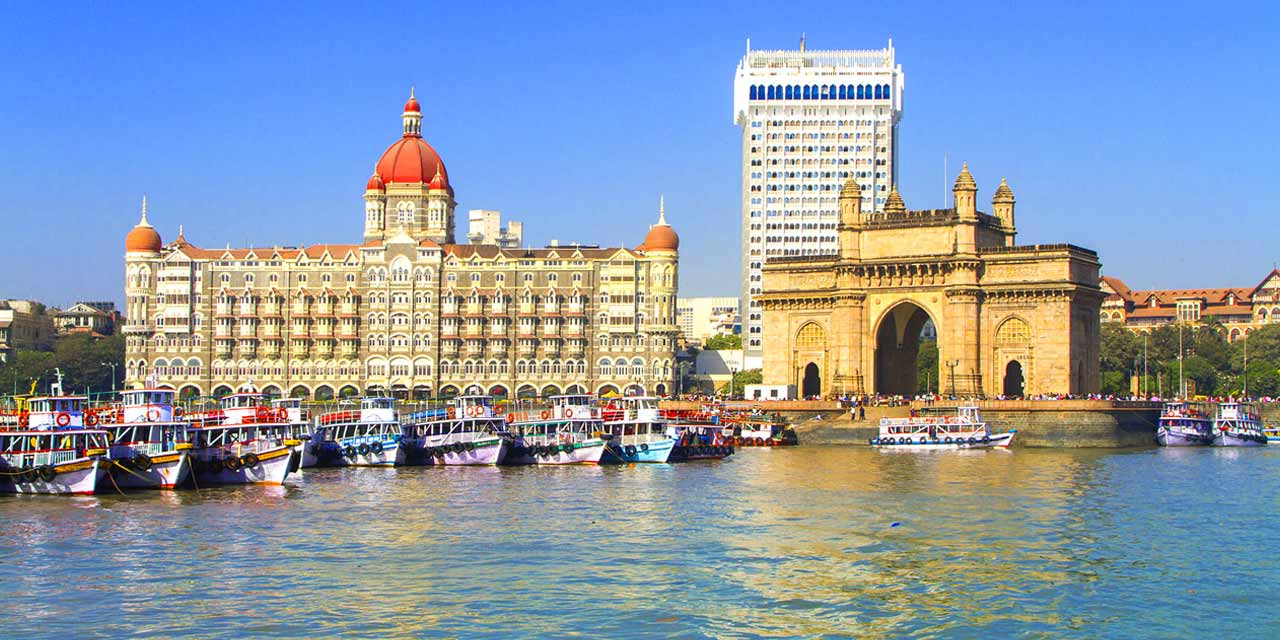
Aptly known as 'City of Dreams', Mumbai is the capital city of Maharashtra located on the west coast of the Indian peninsula. Named after Goddess Mumba Devi, Mumbai is a diverse city that offers a variety of choices to spend some quality time with your loved ones. From beaches to theme parks, from historical sites to religious spots, from shopping centres to a wide array of eateries, there are plenty of places to visit in Mumbai for everyone. Mumbai Tourism is ideal for all kinds of holiday, be it a long break or a weekend getaway or a one day trip to the happening city.
Here is a list of Top places to visit in Mumbai
1. Gateway of India
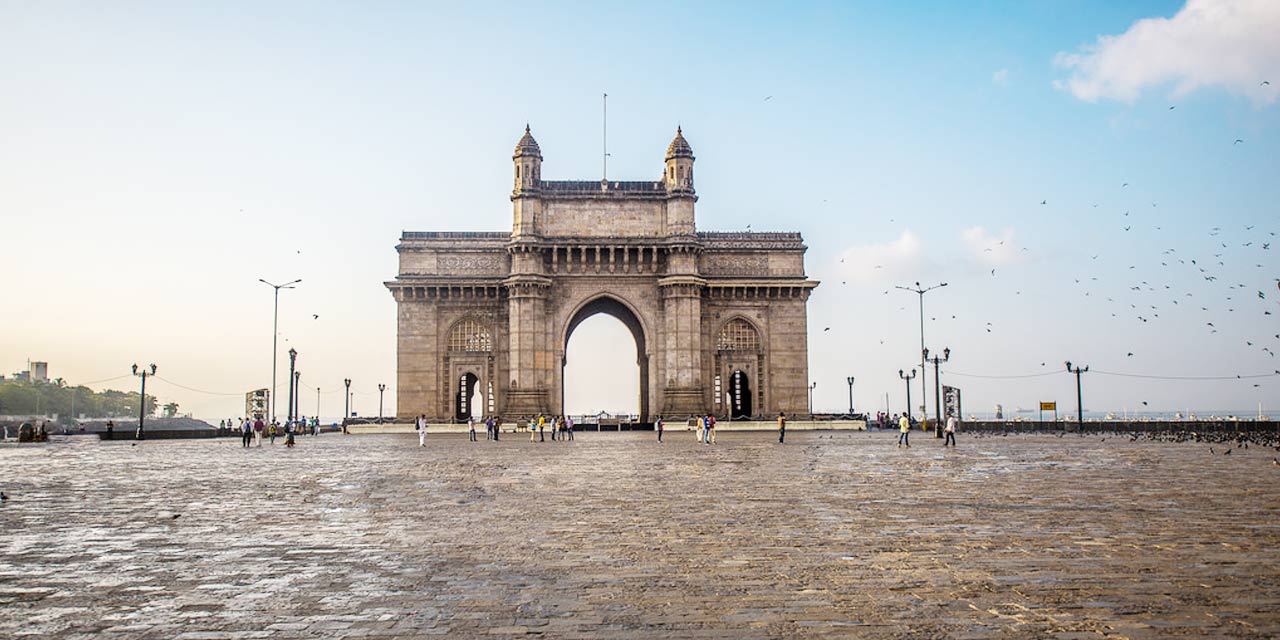
One of the most popular places to see in Mumbai is the Gateway of India which was built during the colonial era. Built to commemorate the visit of King George V in 1911, it was the first structure that a visitor would see while arriving in Mumbai via sea. Its magnificent architecture still allures everyone.
Overlooking the Arabian Sea, Gateway of India presents an impressive sight that is impossible to miss when in Mumbai. Gateway of India not only presents historical significance but also a captivating architecture which was designed by George Wittet.
Now a popular place to hangout, Gateway of India buzzes with hordes of visitors every day. Various local vendors selling snacks, balloons and other items, stalls and photographers make this place vibrant with activities.
2. Marine Drive
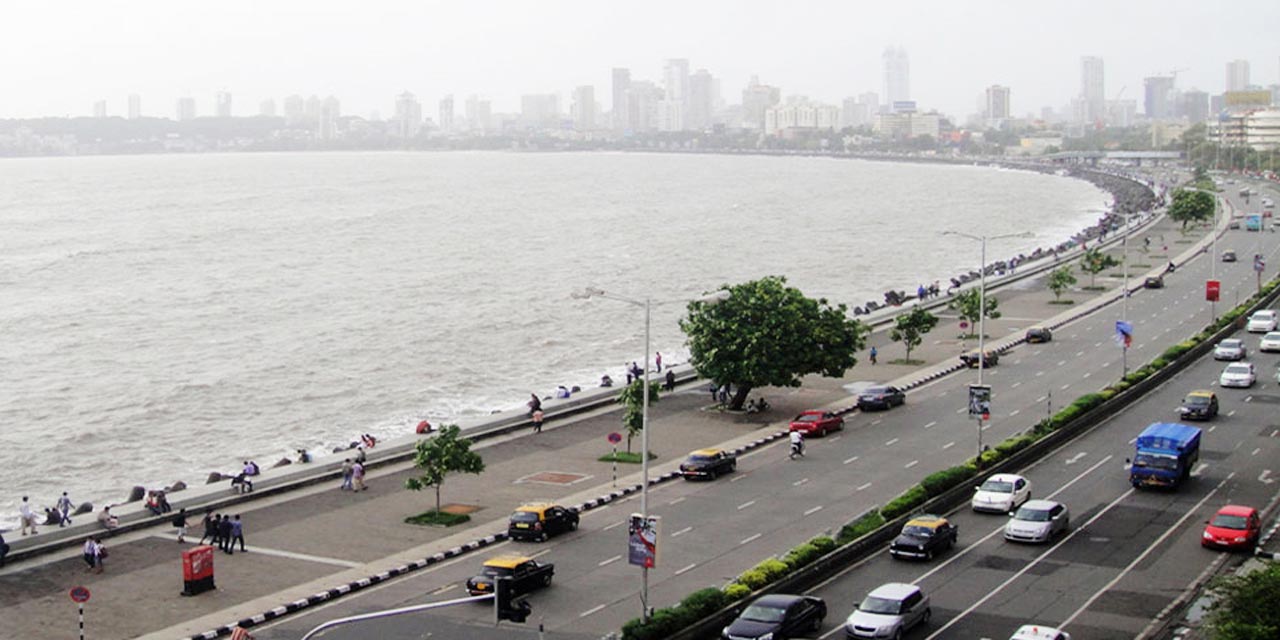
Another place to visit in Mumbai is the Marine Drive. Officially named as Netaji Subhash Chandra Bose Road, this is a 3 km long stretch with six lanes that runs by the coastline. It is located in the southern Mumbai while it runs towards the north of the city. Marine Drive forms a natural bay, which hypnotizes every visitor with its serene scenic beauty.
Marine Drive is a C- shaped road which is a place to visit when in Mumbai. The palm trees lined on the side make the pathway even more alluring. Its beauty is enhanced at night when a wide stretch of street lights is lit up, giving it a look of necklace. The view is especially breath-taking when seen from an elevated point. Owing to this, it is often referred to with the name of Queen’s Necklace. Marine Drive also links Nariman Point, which is also a popular place to visit in Mumbai to Babulnath.
3. Elephanta Caves
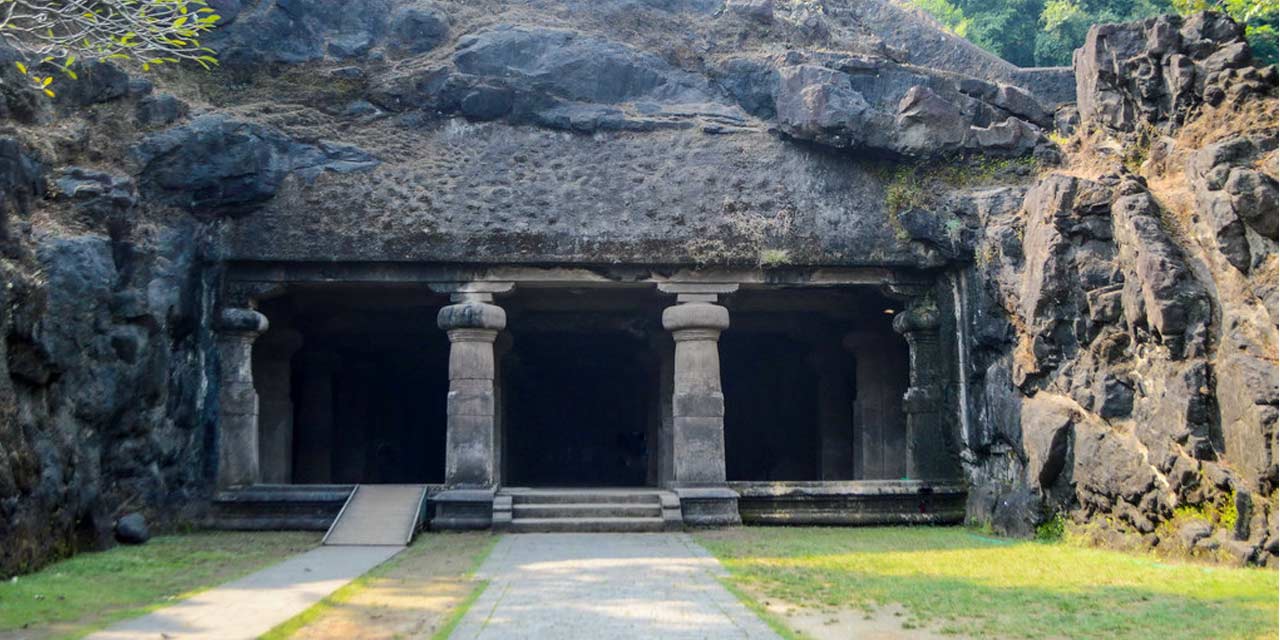
A Mumbai tour is incomplete without a visit to the majestic Elephanta Caves. These are located on the islands in the Arabian Sea, which are named after the gigantic elephant that was found here. It is also called Gharapuri. Elephanta caves are one of the finest examples of rock-cut architecture and offer a glimpse into the lives of pre-medieval India. Although it suffered during the colonial era, it still presents a stunning sight with enviably sturdy and intricate structure.
The island consists of two sets of caves; the first set is of five caves that are related to Hindu religion, dedicated to Lord Shiva and the second set is of two Buddhist caves. These caves are a place to visit not only for their historical importance but also for the natural beauty that they present.
4. Siddhivinayak Temple
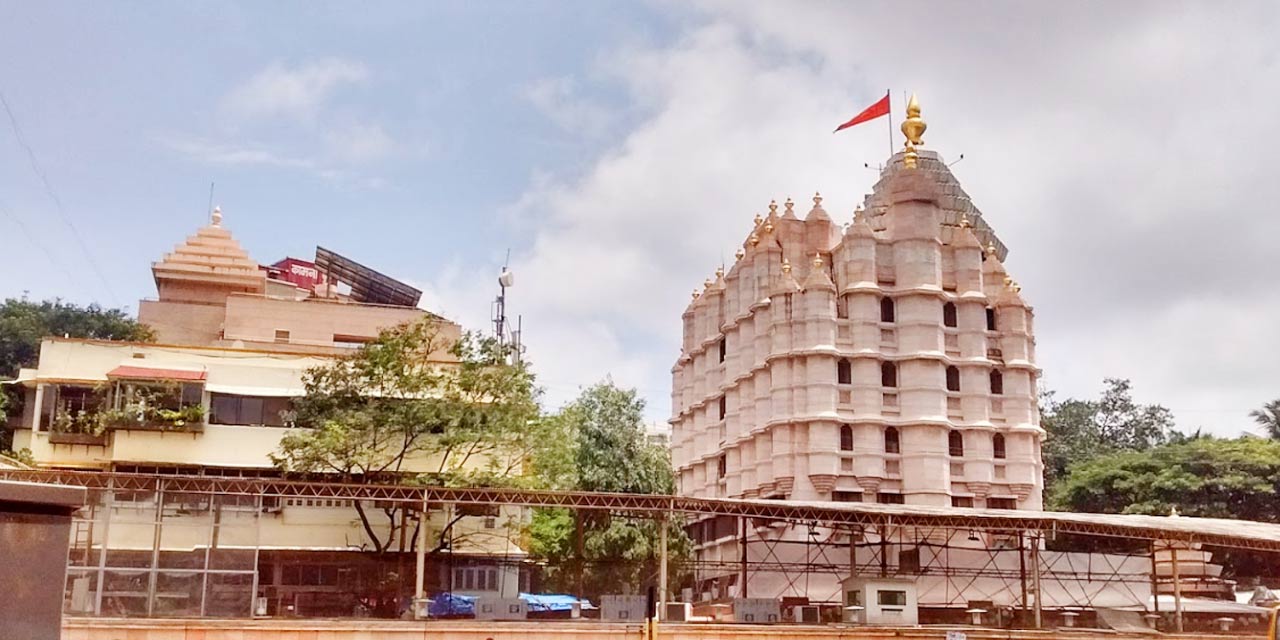
Shree Siddhivinayak temple is undeniably one of the most popular temples not only in Mumbai but also in India. With lakhs of devotees visiting every day, it is also one of the richest temples in Mumbai. Dedicated to Lord Ganesha, Shree Siddhivinayak Temple was built in the year 1801. Since then it has been attracting devotees from all over the country.
Lord Ganesha idol at the temple is as alluring as its excellent architecture. The idol of Lord Ganesha is carved out of a single black stone. Tuesday is one of the most important days of the temple. Celebrities and laymen both flock to the temple alike to seek blessings. Its architectural excellence and divine statue of Lord Ganesha adds to the splendor of the temple. More than two centuries old, Shree Siddhivinayak Ganapati Temple is believed to fulfill wishes and desires of everyone who prays with utmost devotion to the lord.
5. Nariman Point
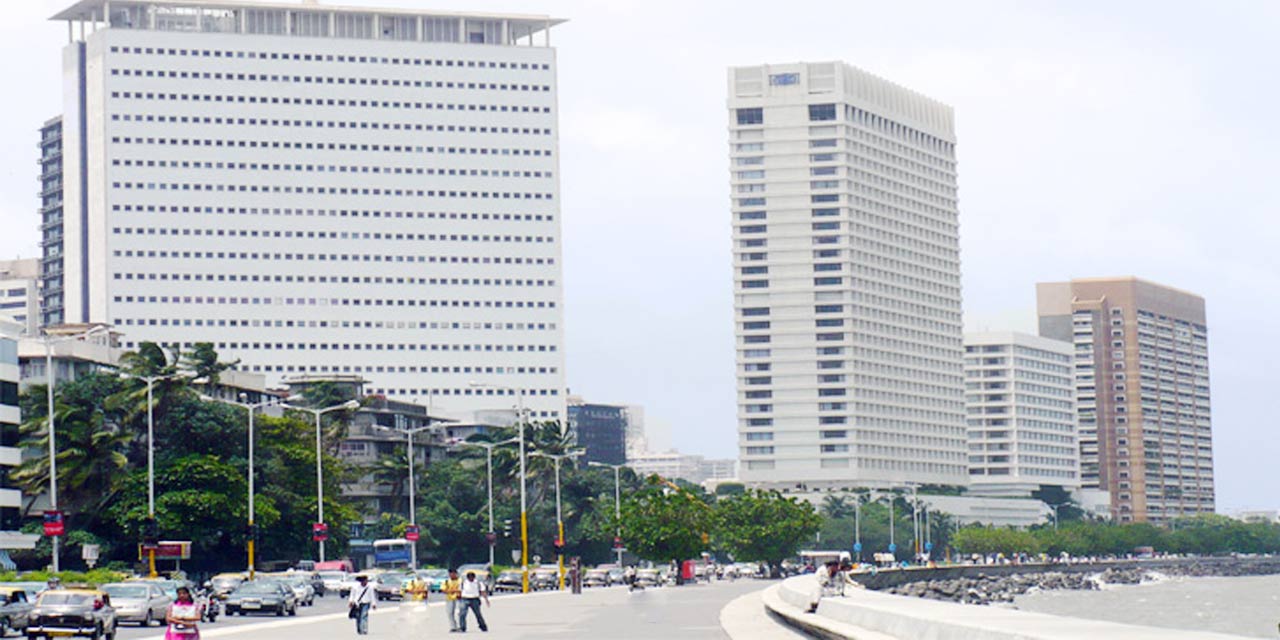
Nariman Point is known as the Manhattan of Mumbai. It is near the southern end of Marine Drive, and it forms a part of the majestic skyline of Mumbai. This place is the business hub of Mumbai, and here you'll find corporate offices of many renowned multinational companies.
At Nariman Point, you'll also come across grand hotels, lavish restaurants and classy pubs. The area is known for its branded showrooms and shopping malls too.
Nariman Point has been developed on land reclaimed from the sea. And from here, you can enjoy a panoramic view of Marine Drive and the endless sea. Many Bollywood movies, like Munnabhai MBBS and Wake Up Sid, have scenes from that sea-facing promenade.
This area also has a lively nightlife, and it’s among the best places to visit in Mumbai at night.
6. Girgaon Chowpatty
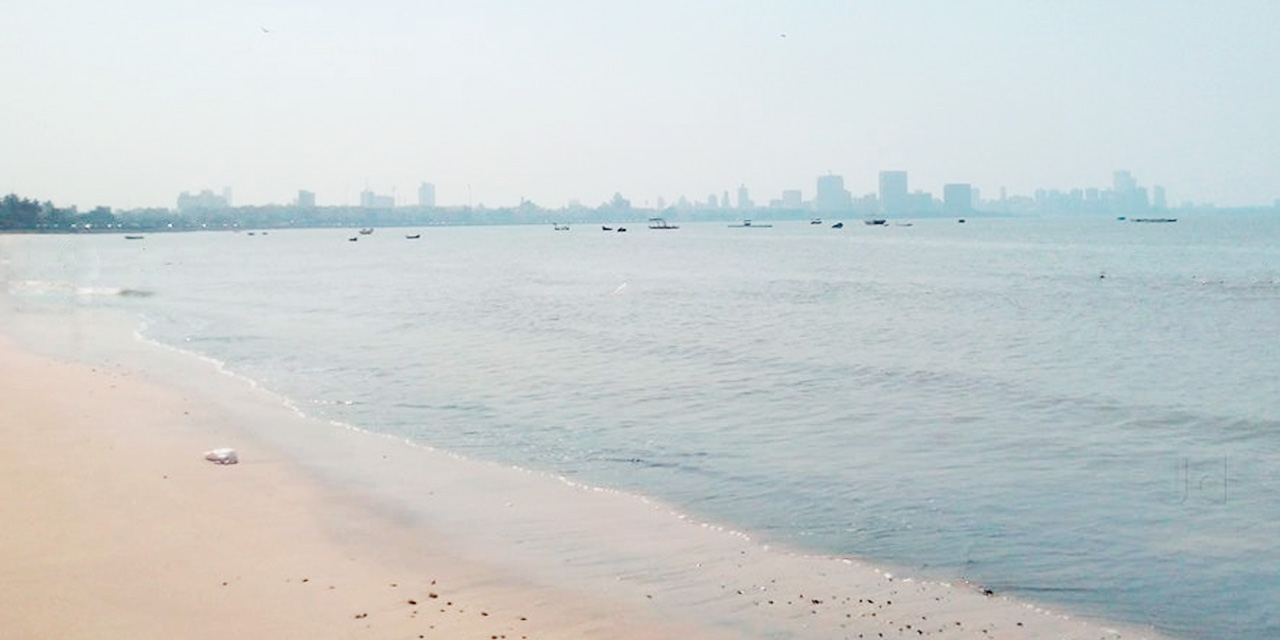
Girgaon Chowpatty is among the most popular beaches of Mumbai. And it is also one of the most crowded places to visit in Mumbai. But it’s a lively tourist spot.
In the morning, you’ll find various people coming for a walk along the shore, carrying out their daily exercises or doing yoga. And during the day, people come here with friends and family to relax and get entertained. Numerous magicians and street artists put up their show throughout the day.
Girgaon Chowpatty is not known for sunbathing and other water activities. Instead, it’s visited for the street food varieties. From spicy bhel puri to piping hot pav-bhaji, the food vendors offer a plethora of options.
And this beach is also a renowned shooting spot.
7. Juhu Beach
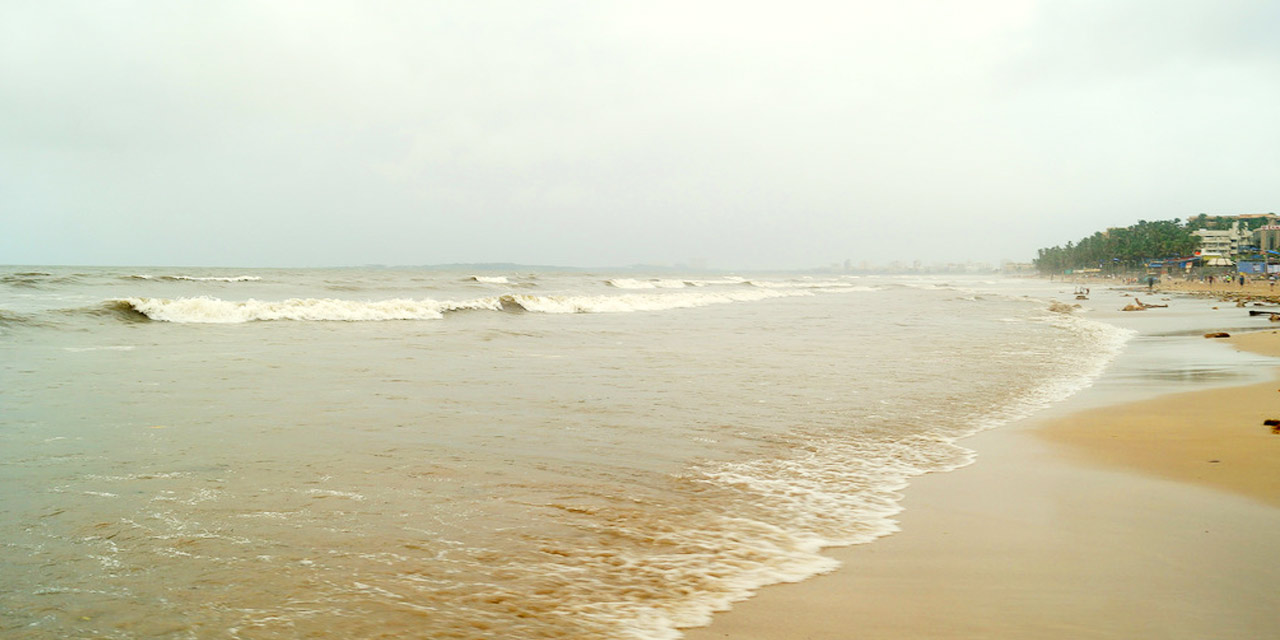
Juhu Beach is among the well-known beaches in India. It is popular for the mesmerising views of the sunset and the street food corners in the area.
Apart from enjoying the food, you can also check out activities like camel riding and horse riding on the beach. Many street artists like monkey trainers, snake charmers and tarot card readers also show off their skills at Juhu Beach. And on some days, you might also catch an artist carving out art from sand.
The beach is a favourite among the film-makers too. Celebrity photo sessions and movie shoots are regular events here. Also, many actors and actresses stay in the locality. And you might get to meet them during your visit.
The area is known for its nightlife too. You'll find many bars, pubs and nightclubs to spend your evenings.
8. Taraporewala Aquarium
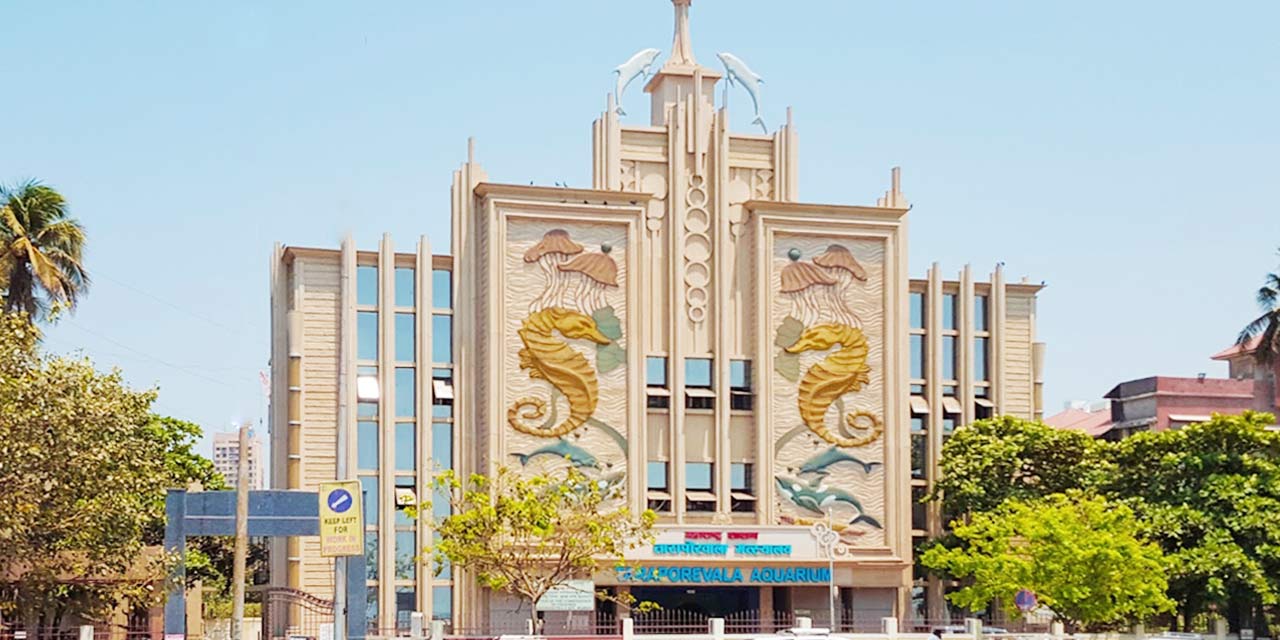
Taraporewala Aquarium is the oldest aquarium of India and it has over 100 species of fish and other aquatic animals.
At the entrance, there’s a glass tunnel around which various fishes and water plants are on display. Then, in the main gallery, you’ll see the water tanks where other fishes are
Among the fish species, the aquarium has Alligator fishes, Puffer fishes and Moray eels among others. Angelfishes, Groupers and a variety of Tangs too are here. And you will also see a Jellyfish. The aquarium has 16 tanks for marine fishes and 9 tanks for the freshwater species.
It has a small museum too, where you'll find preserved corals, seashells and other marine life species.
9. Churchgate
Churchgate is the business district of Mumbai. It has offices of many banks and business organisations. It also has the High Court of Bombay and many reputed educational institutions.
The area is known as Churchgate because the Church Gate of the old, walled-city Mumbai used to be here. It was demolished in 1860.
The neighbourhood has the historical Churchgate station and many prominent tourist spots of Mumbai. Some well-known places to visit like Gateway of India, Marine Drive and Elephanta Caves lie close to the Churchgate area. Nariman Point is a part of the Churchgate area too.
And here, you can also enjoy shopping. From low-priced street-side stalls to luxury showrooms, and retail stores to wholesale counters, you have got plenty to choose from.
10. Mahalakshmi Temple
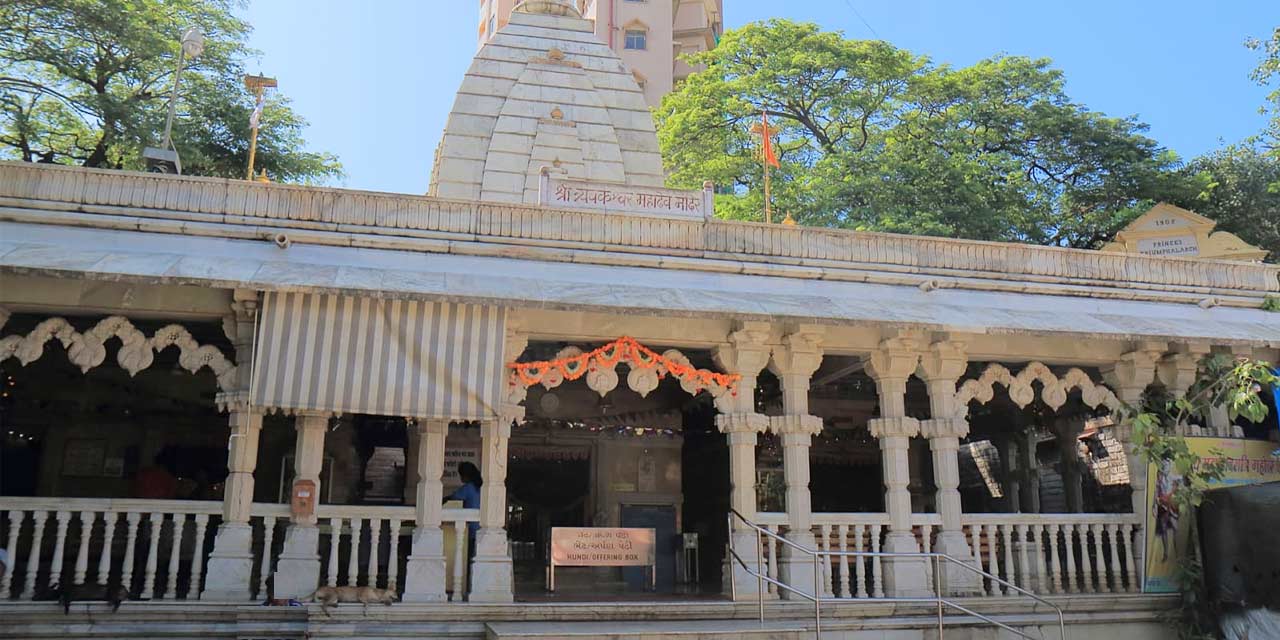
Mahalakshmi Temple is one of the oldest temples in Mumbai. The temple is dedicated to Goddess Mahalakshmi – the Goddess of Wealth, and it is built along the seashore.
The temple also has the idols of Goddess Mahakali and Mahasaraswati. And devotees come here, throughout the year, for blessings.
And the charm of Shree Mahalakshmi Temple increases manifold during festivals and other special occasions. The entire complex is decorated with lights and flowers. Arrangements are also made for the devotees to get a proper darshan and pass the offerings.
You'll find many shops within the temple complex to buy coconuts, sweets and fresh flowers among other required items.
11. Bandra Worli Sea Link
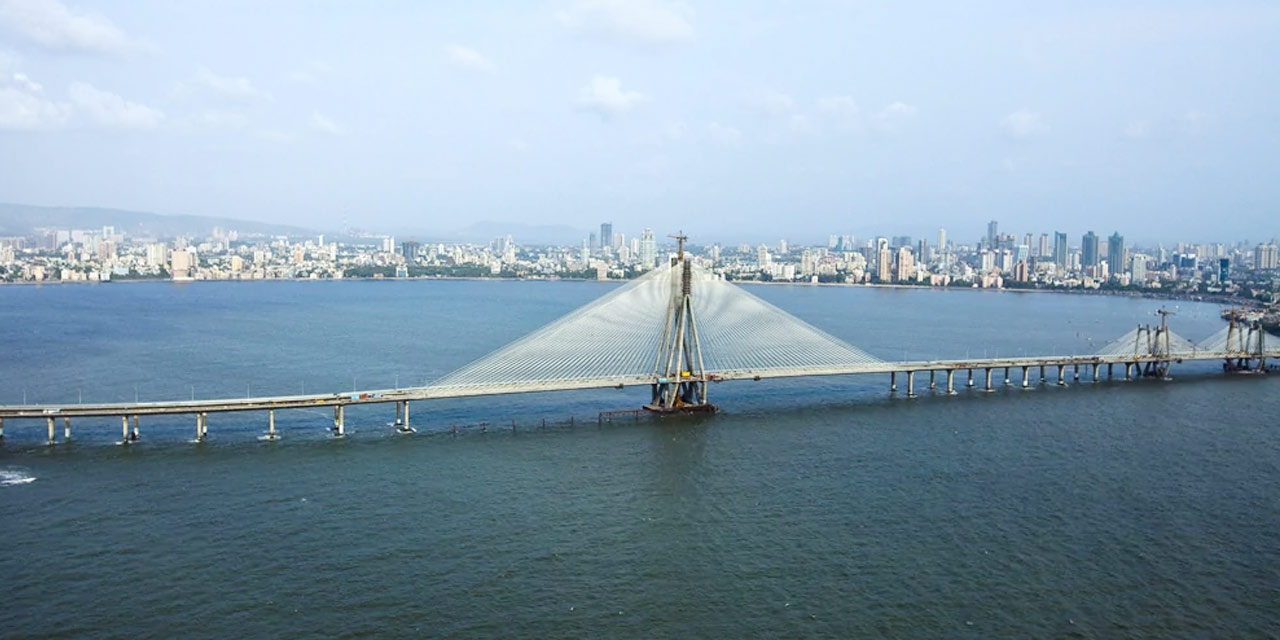
Bandra Worli Sea Link is a 5 km long bridge built on the Arabian Sea; it connects Bandra and Worli. The bridge is known for its architectural magnificence, and it is the first cable-stayed bridge built on the open sea in India. It is also one of the prominent landmarks of Mumbai.
This sea bridge saves considerable time for the daily commuters. But it has also turned out to be among the best places to visit in Mumbai for photography. The bridge looks even more glamorous when it comes alive with lights in the evening.
The adjacent Worli Sea Face is another popular spot. You can spend your evenings there, munching on local snacks.
12. Haji Ali Dargah
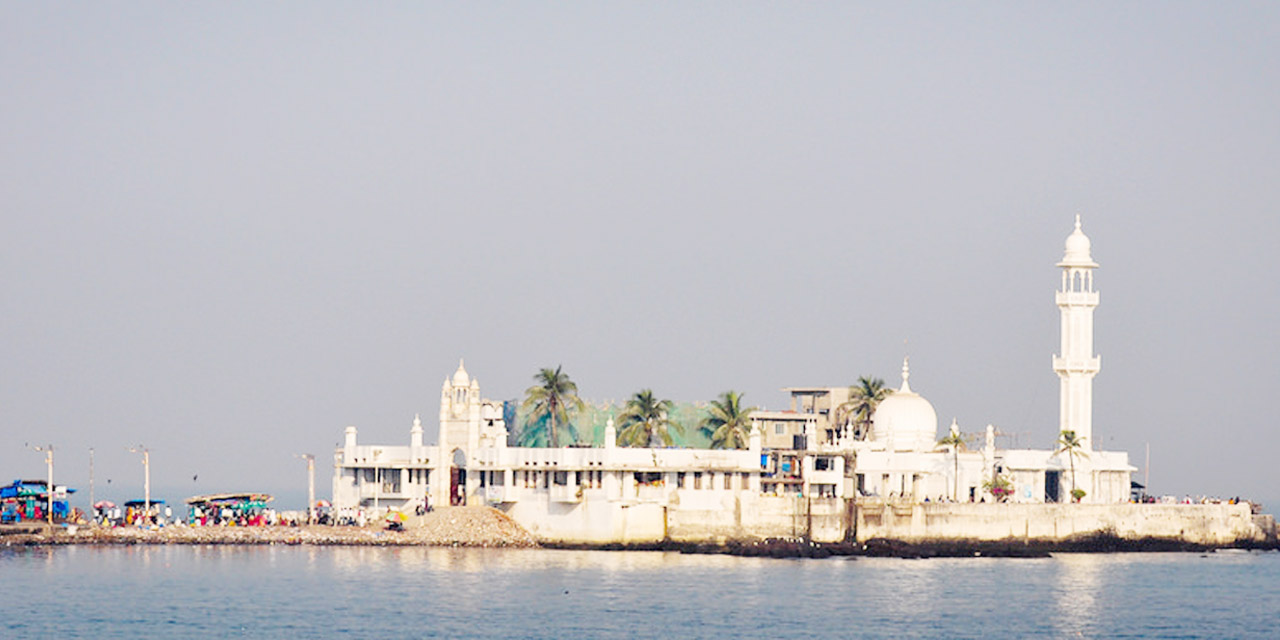
Haji Ali Dargah is a mosque built on an islet, only a few hundred metres away from Shree Mahalakshmi Temple. And a narrow, pebbled walkway connects it to the mainland. Haji Ali is also the shrine of a Sufi saint, Haji Ali Shah Bukhari.
This mosque was built in 1431, in the Indo-Islamic style. The central courtyard of the complex is made of marble. And the ceiling in the main hall is also of marble. It has been decorated with various coloured mirror patterns and Arabic inscriptions. You'll also notice Quran verses on the ceilings and the walls.
The tallest minaret of Haji Ali Dargah is 85 feet high. And from that minaret, namaz calls are made at the five designated times of the day.
13. Castella De Aguada (Bandra Fort)
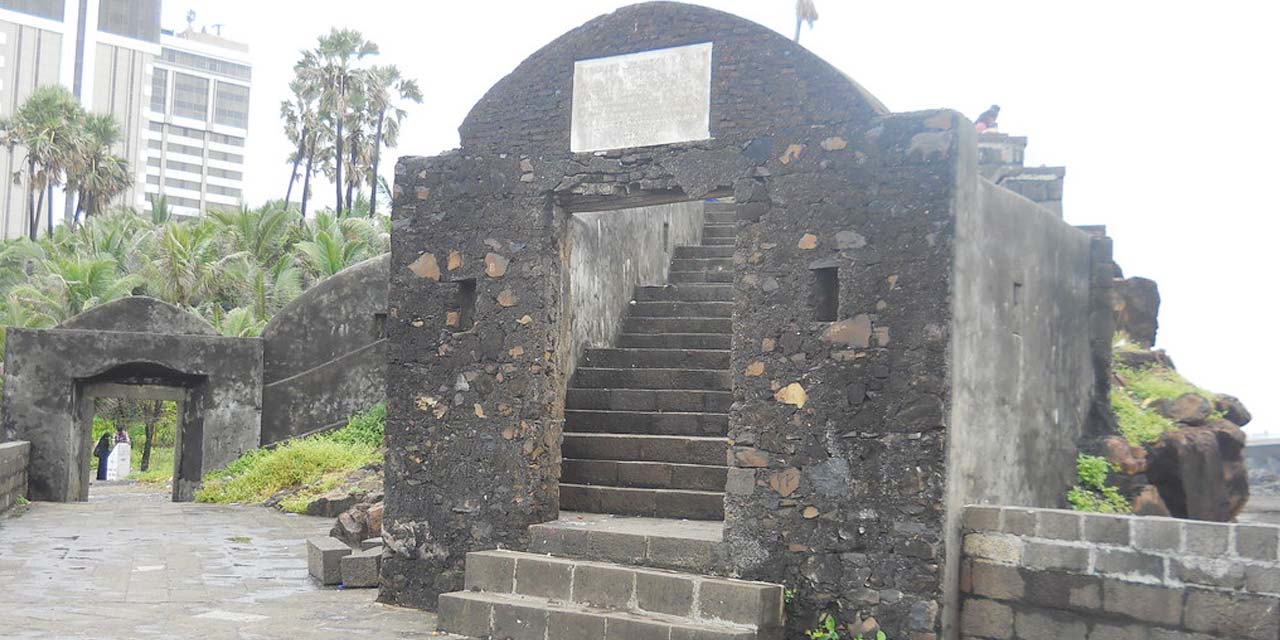
Castella de Aguada (or Bandra Fort) was built by the Portuguese to guard the sea route and fortify the area around. It is built in the European style, with granite blocks, and it offers a panoramic view of the Arabian Sea.
Much of the fort is in ruins today, but the view captivates many tourists. It is also a preferred hangout spot for the youths, and among the most popular places to visit in Mumbai for couples.
An evening walk on the walkway to the sea is de-stressing. And the fort also has a seating area for you to spend the evening.
Bandra Fort offers a majestic view of the Bandra Worli Sea Link too.
14. Kamala Nehru Park
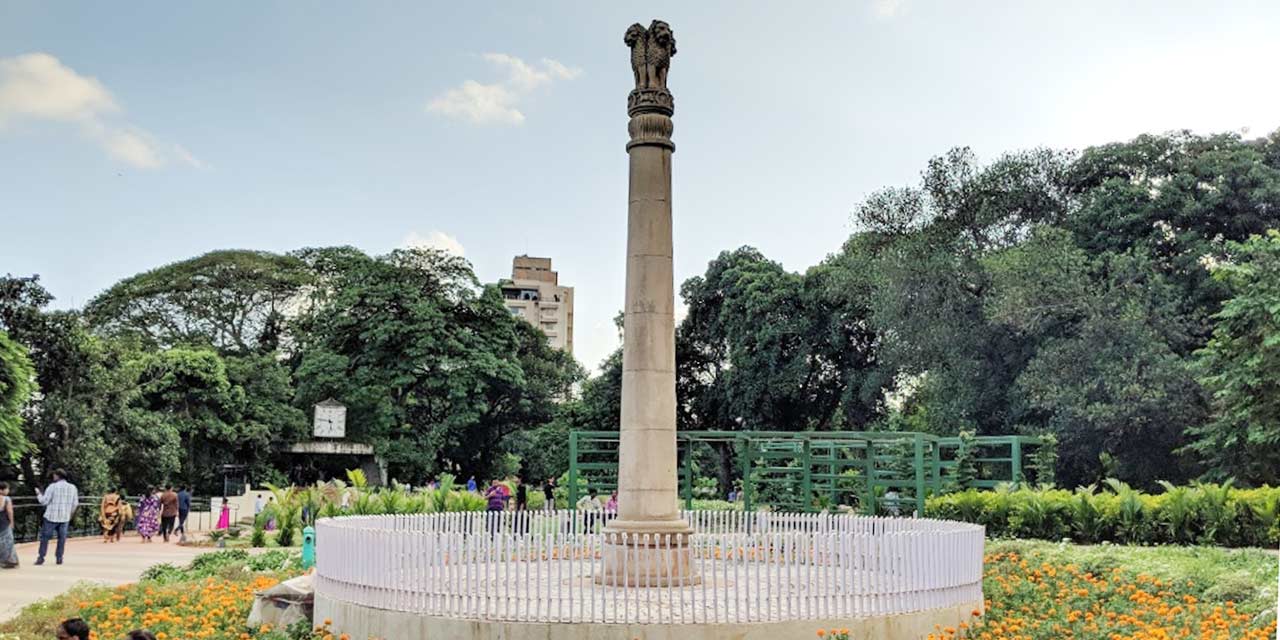
Kamala Nehru Park is a popular recreational spot, and among the best places to visit in Mumbai with toddlers. Many people come here to stroll around, to meditate and to hang out with friends.
People come here to get a scenic view of the famed Marine Drive too, looking over the Arabian Sea. Also, you can sit on the lawn or on the wooden cane benches, and munch at a variety of snacks being sold by vendors.
Kids love the colourful theme park here. And they can play in and around the Boot House.
Kamala Nehru Park also has a small open-air amphitheatre. And you'll also find selfie-points decorated with painted rhymes and other kid-themed designs.
15. Mumbai Zoo
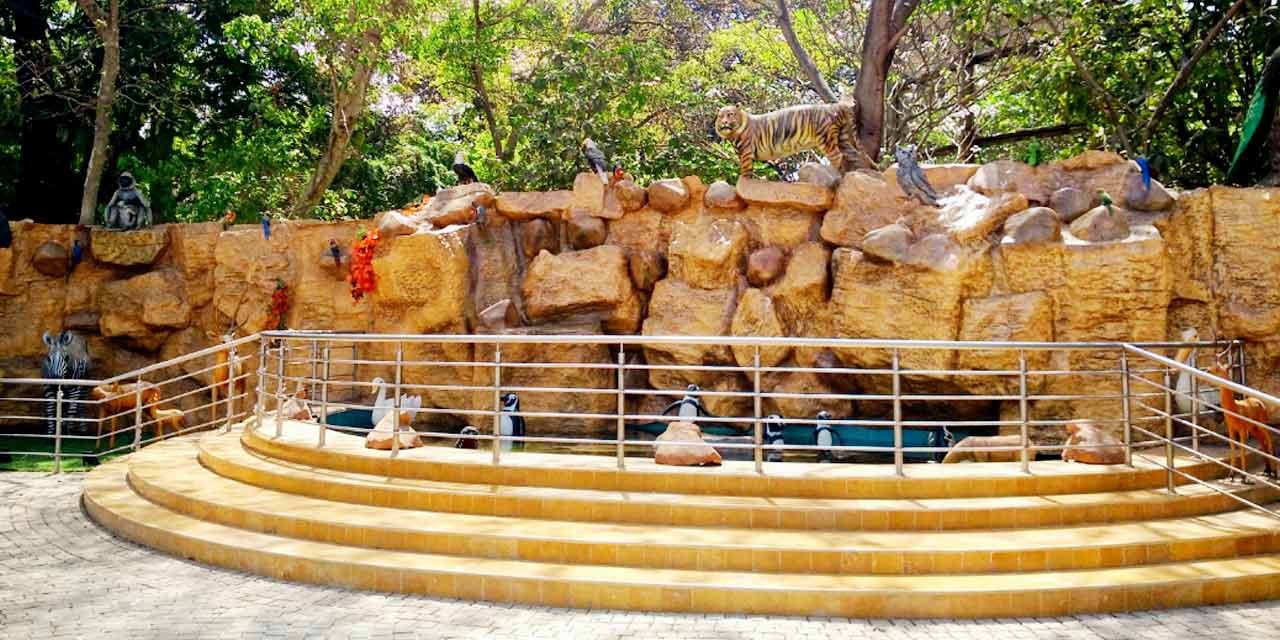
Mumbai Zoo, or Veermata Jijabai Bhosale Udyan, is one of the oldest zoos in India. It was established in 1861.
The zoo has many common animal species of India and other lesser-known animals. You'll find jackals, sloth bears and swamp deers here. Hyenas, tigers and crocodiles are also in the zoo. And you can meet with penguins too.
Mumbai zoo also has an aviary for aquatic birds. You can interact with birds like pelicans, flamingos and albino crows. And you can also have selfies with cranes, herons and storks among other birds.
The place is known for its range of fauna too. The botanical garden here has more than 3000 trees, herbs and flowering plants.
16. Dr Bhau Daji Lad Museum
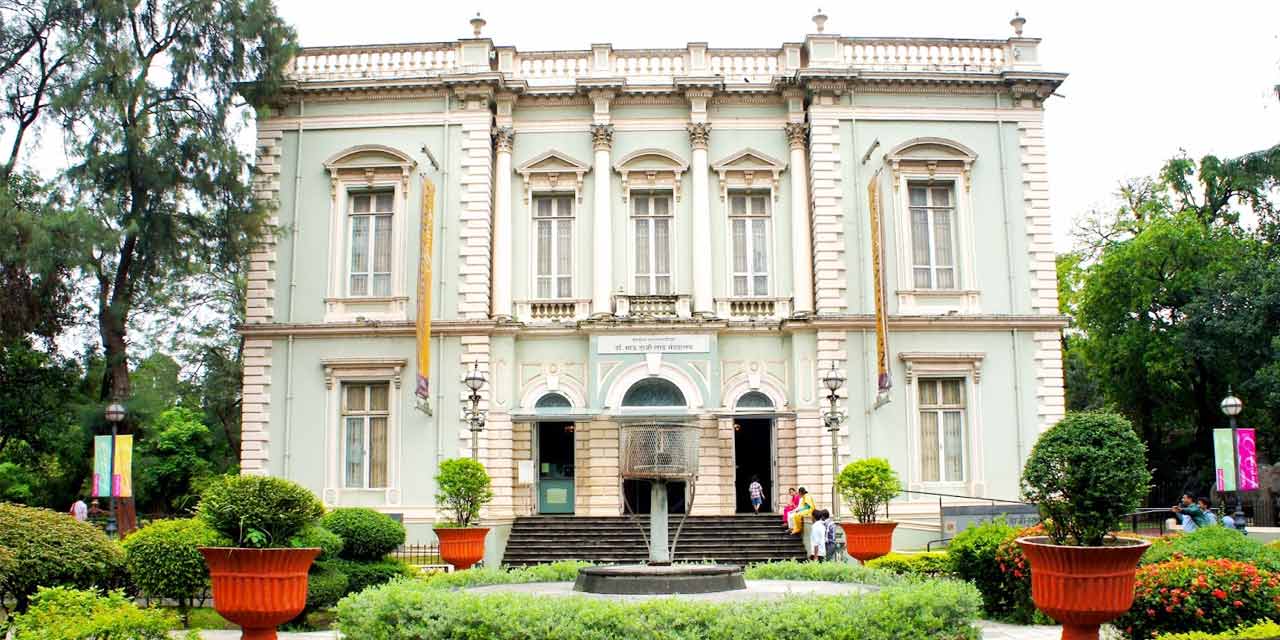
Dr Bhau Daji Lad Museum is a place for entertainment, knowledge and relaxation. It is near Mumbai Zoo, and it is the oldest museum in the city. In the museum, you'll find artefacts, maps and manuscripts showcasing the rich history and cultural heritage of Mumbai.
The museum also displays clay models and has a plethora of photographs and books narrating the story of the city. And it also organises art workshops, cultural performances and lectures from time to time.
Dr Bhau Daji Lad Museum was opened to the public in 1872. And the place has been known for its magnificence too. The grand metal palisades, staircase railings and the arched supports were all imported from England. And the etched glass designs are reminiscent of the glorious 19th-century architectural style.
It has been among the underrated places to visit in Mumbai for a long time. And history buffs or knowledge seekers must visit this museum.
17. Film City
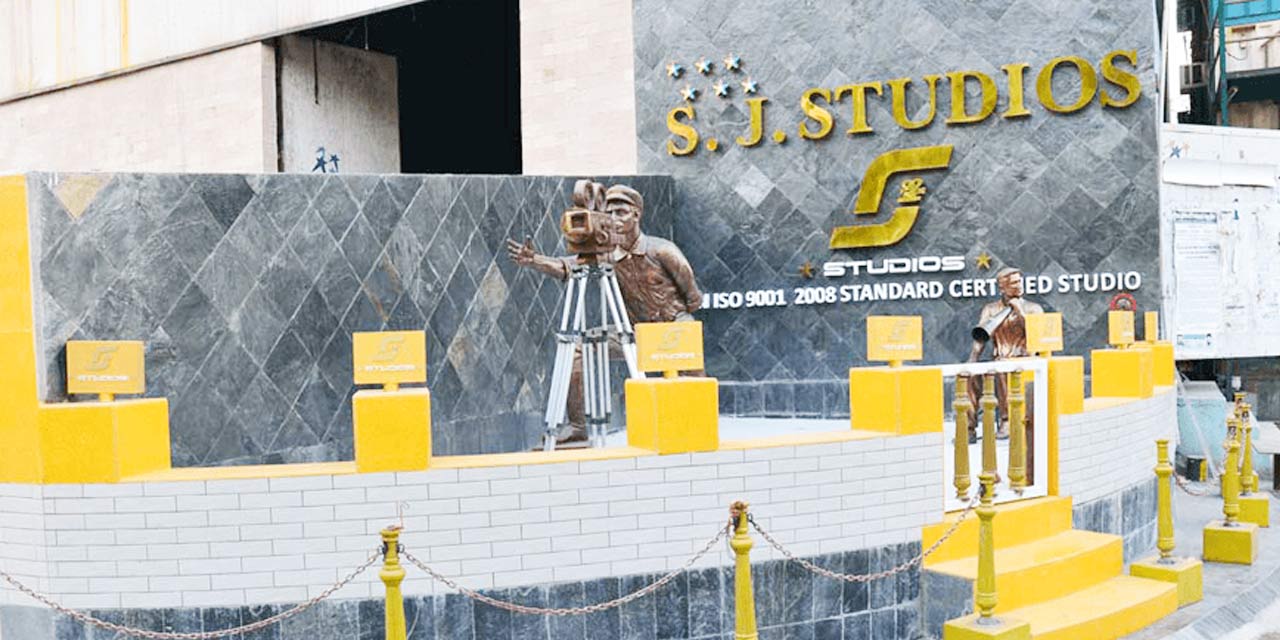
Film City of Mumbai is where much of the action of Indian movies and TV shows take place.
With 10+ indoor studios and around 50 outdoor shooting locations, you might also catch a live movie shoot. From temples to playgrounds and open roads to bungalows, various setups are available to help in shooting an entire movie.
It is an iconic landmark of the city and your Mumbai tour would remain incomplete without visiting it.
The official name of Film City is Dadasaheb Phalke Chitra Nagari, and here you get a chance to witness all the hard work that goes behind the scenes. Various TV commercials are also shot here.
18. Mumba Devi Temple
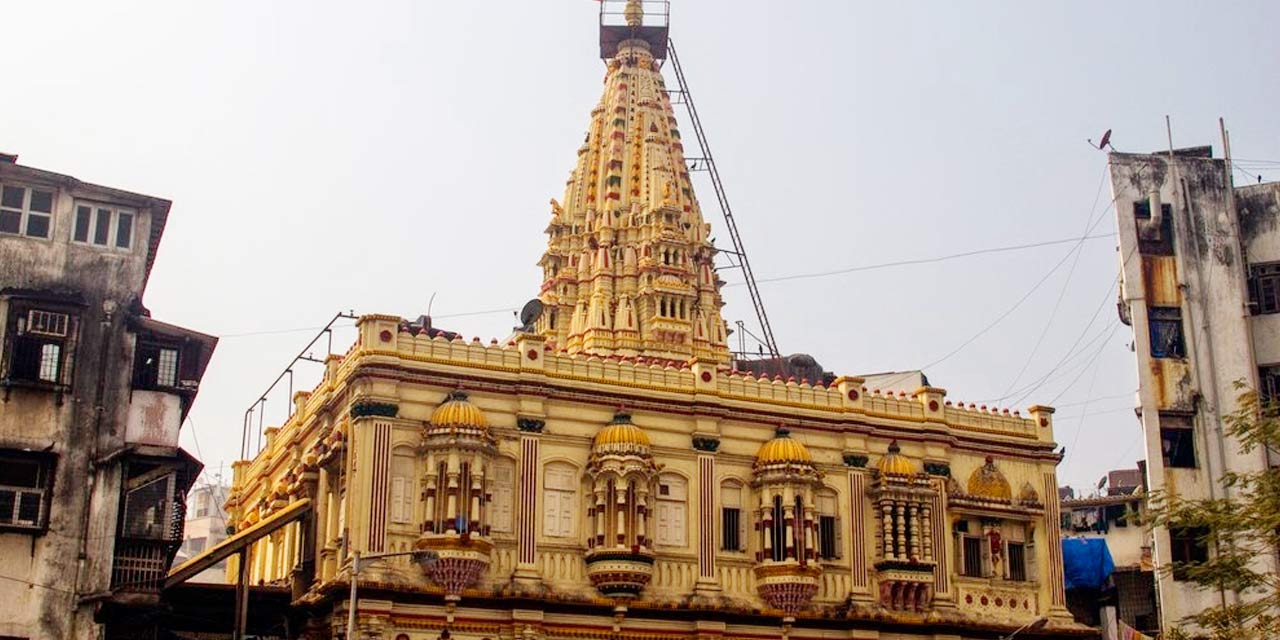
Mumba Devi Temple is among the oldest temples of Mumbai. It is dedicated to Goddess Mumba, after which Mumbai is named. She is considered the guardian goddess of the city.
Local people come to the temple for the daily aarti in the evening and morning. Devotees also come from nearby places to take blessings from Mumba Devi.
The temple is built in the classic ancient Hindu temple style. It has one high spire, with a red flag flying on its top. And the walls are etched with religious mantras and shlokas prominent in the Hindu temples.
During festivals like Navratri, it is decorated with flowers and lights, and the celebrations go on for 10 days. People come from many places to be a part of the religious ceremonies and enjoy the ongoing fair.
19. Flora Fountain
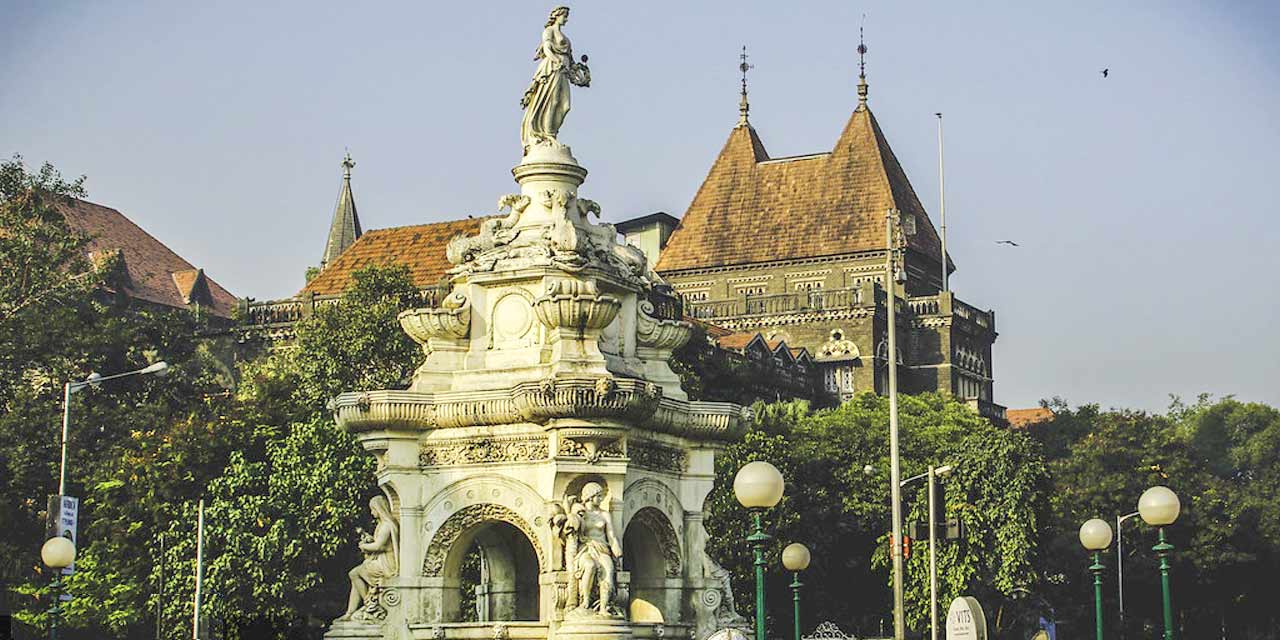
Flora Fountain is one of the tourist places within Churchgate. It stands at the same place where the destroyed ChurchGate of Mumbai used to be.
The fountain was designed by R. Norman Shaw, and it has a mix of Neo-Gothic and Indo-Saracenic styles. It was built in 1864, by Engineer James Forsythe.
This Portland stone structure has fine carvings and sculptures. Its four corners are decorated with different statues. And the water basin below has stone fish figures and lion heads.
A magnificent 7 feet high statue of Roman Goddess Flora adorns the fountain top. And you can enjoy a spectacular view of Flora Fountain in the evening; when it's illuminated by lights.
20. Jehangir Art Gallery
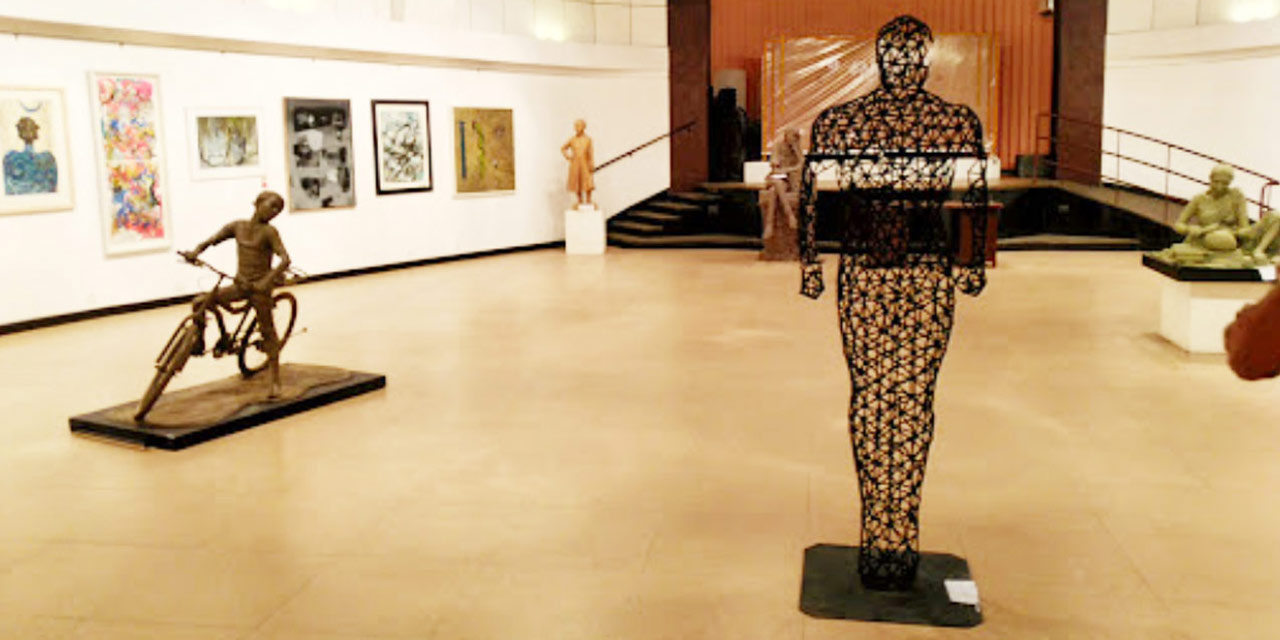
Jehangir Art Gallery has played a prominent role in the evolution of contemporary Indian art. It was established in 1952 with the help of Sir Cowasji Jehangir’s donations. And since then, this art gallery has hosted numerous exhibitions for painters, sculptors, and other artists.
But it’s more than a venue for art exhibitions. Jehangir Art Gallery conducts workshops and other art programmes. And it’s a must-visit place for aspiring artists and art connoisseurs.
You can also buy a range of antique items and artefacts from the shop here.
Jehangir Art Gallery is in the Kala Ghoda area, the art district of Mumbai. And this area has several other art galleries and designer boutiques with some of the finest arts in the city.
21. Rajabai Clock Tower
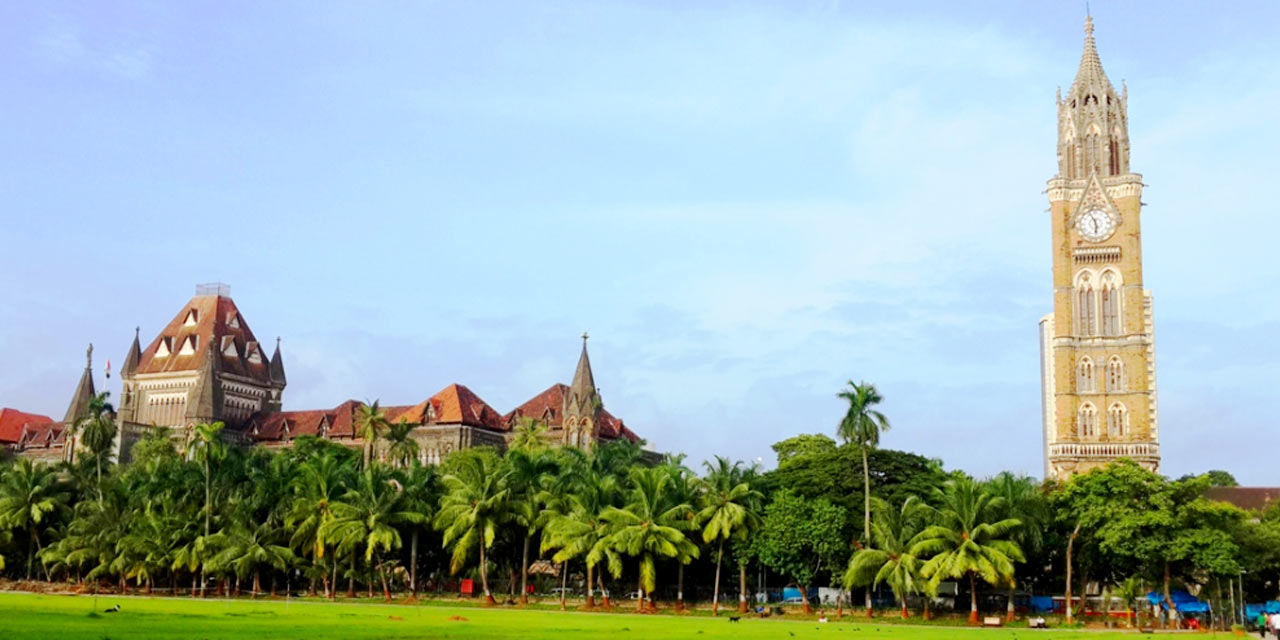
Rajabai Clock Tower is an 85-metre tall tower in the Fort Campus of the University of Mumbai. Premchand Roychand, a businessman and a stockbroker, financed its construction. And Sir George Gilbert Scott designed it.
The tower resembles London’s Big Ben, and it is among the tallest structures in the area. It chimes every fifteen minutes. The construction began in 1869, and it was completed by 1878.
The access to the inside of the tower is closed to visitors, but you can admire the architecture and detailed stonework from outside. The tower has one of the best stained-glass works in the city. And the architecture is a blend of Venetian-Gothic style. The tower also has 24 small statues, portraying the life of common people during British rule.
22. Bombay High Court
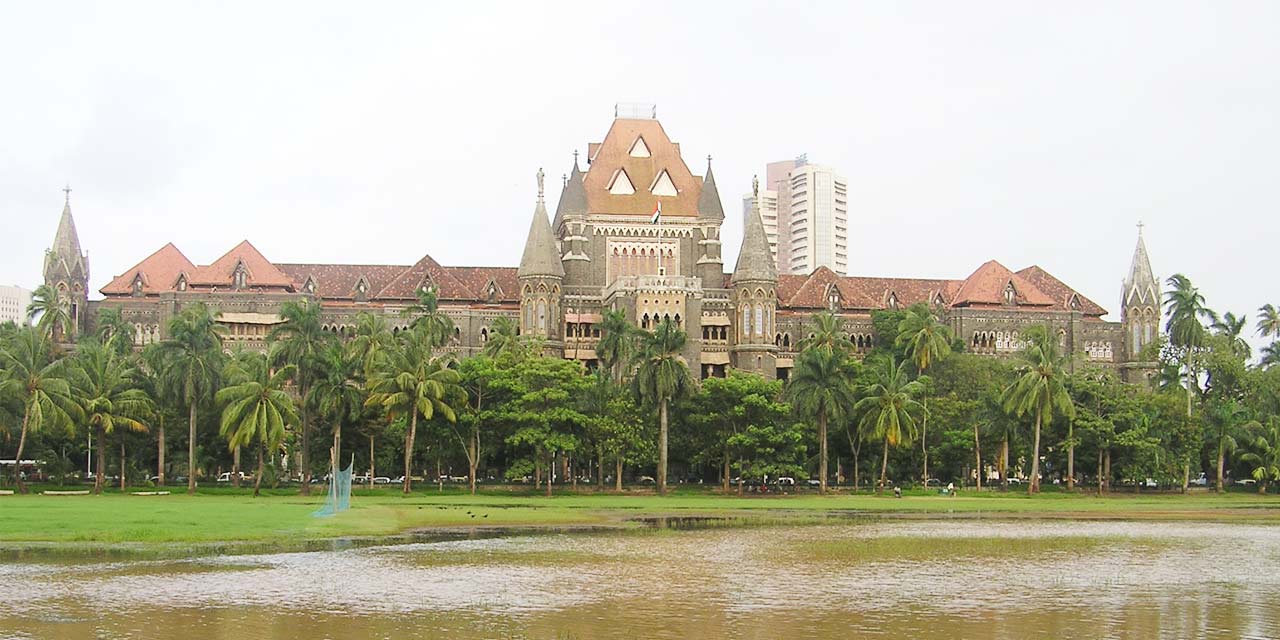
Bombay High Court is one of the oldest High Courts in India, and it’s a UNESCO-recognised site . It was built in the 19th century, in the grand Gothic Revival architectural style. And you'll find traces of Victorian style too.
Here, you can click photographs of this heritage building and visit the museum within the premises. The museum of Bombay High Court provides plenty of information about the Indian judicial system and Indo-British legal history. It has preserved many historical documents too.
And while you're here, you can also be a part of the ongoing hearings. The court looks after the events in Maharashtra and Goa. And two Union Territories – Daman and Diu, and Dadra and Nagar Haveli, also fall under the jurisdiction of this court.
23. Raj Bhavan
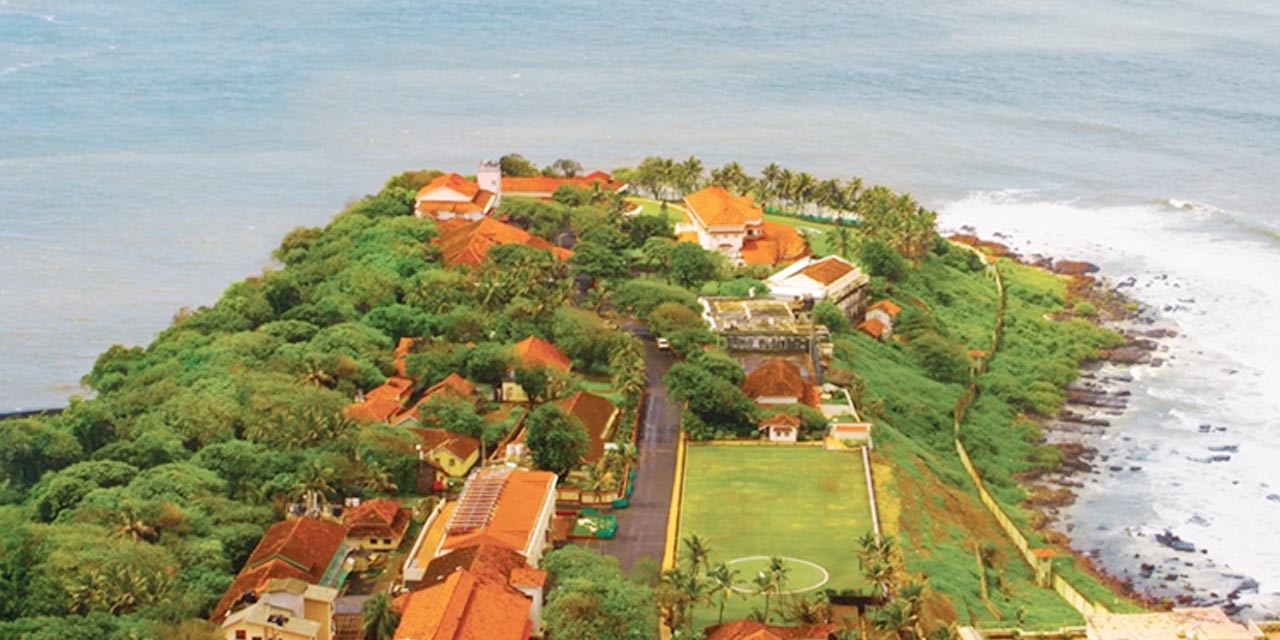
Raj Bhavan is the official residence of the Governor of Maharashtra. And you can visit it during your Mumbai tour.
It has lush green lawns, conserved forest areas and heritage buildings in the complex. The place is spread over an area of around 50 acres in the picturesque Malabar Hill, and the sea surrounds it on three sides.
The buildings are built in varied architectural styles: from British colonial style to Maratha style and modern Indian style of architecture. And the complex also has a British-era bunker, which has been turned into a museum.
During your tour, you can watch the sun rising over the sea. And you might also be able to enjoy a cup of tea with the Governor.
24. ISKCON Temple
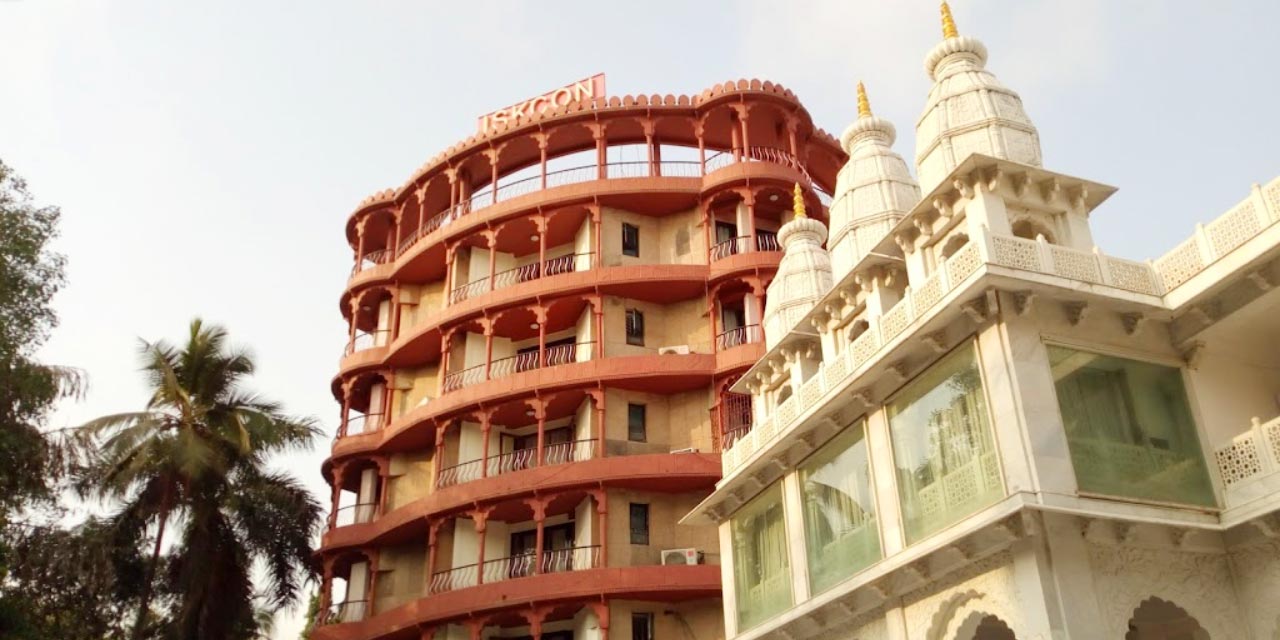
ISKCON Temple is a magnificent Hindu temple near Juhu Beach. It’s a revered temple, especially among the devotees of Lord Krishna. But it also houses idols of Radha, Lord Rama, and Sita among others.
The temple is also known as Radha Rasabihari Temple and Hare Rama Hare Krishna Temple. And it’s an ideal place to pray, meditate and gain knowledge. The temple offers various lessons ranging from Vedic education to meditation and spirituality.
Apart from the main temple, you'll also find a restaurant, a library and a guesthouse here.
Thousands of devotees visit ISKCON temple throughout the year. And the grand celebrations during Janmashtami, Jagannath Rath Yatra, Radhastami and many other festivals are worth the experience.
25. Mount Mary Church
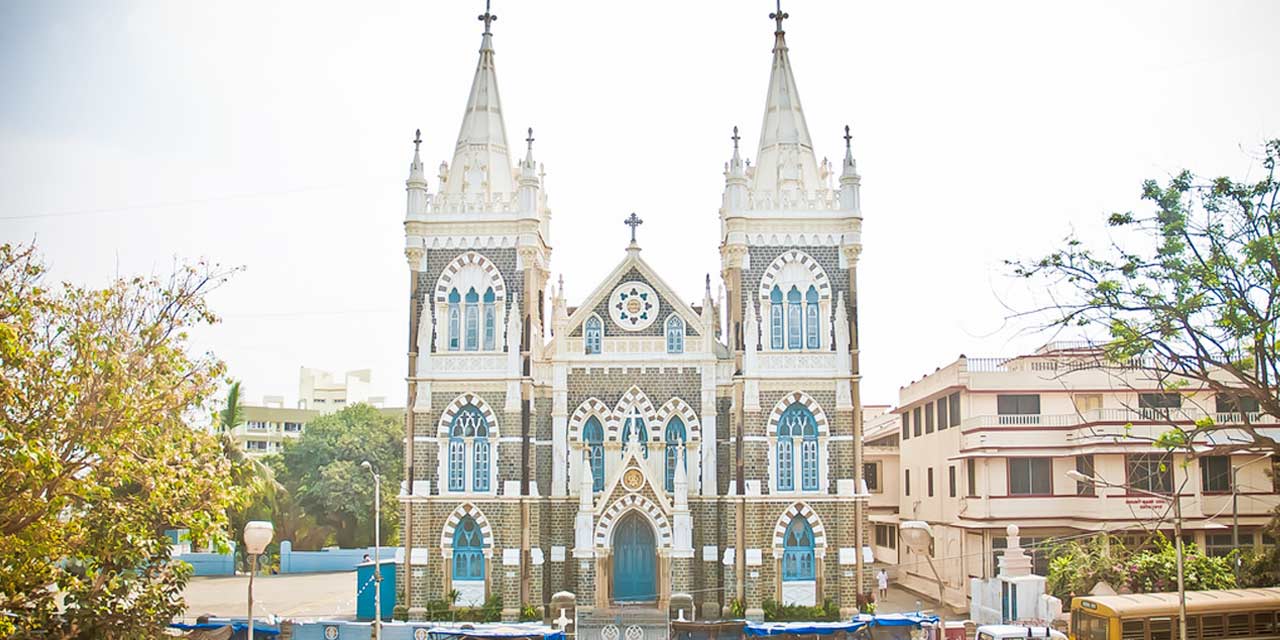
Mount Mary Church, or Basilica of Our Lady of the Mount, is among the beautiful churches in Mumbai. It is dedicated to Virgin Mary and it has been built in the Gothic architectural style. And the walls are covered with colourful fibreglass murals depicting stories from the life of Mother Mary.
The peaceful environment and the view from the church also attract many people to spend time here. The church stands on a hillock overlooking the Arabian Sea. And from the backyard, you get a view of the spectacular Mumbai skyline.
Mount Mary Church is also famous for the annual Bandra Fair. It is celebrated in September on the birthday of Mother Mary. The church holds a feast on the day, and the area surrounding it experiences a week-long carnival-like celebration.
26. Fort Bassein (Vasai Fort)
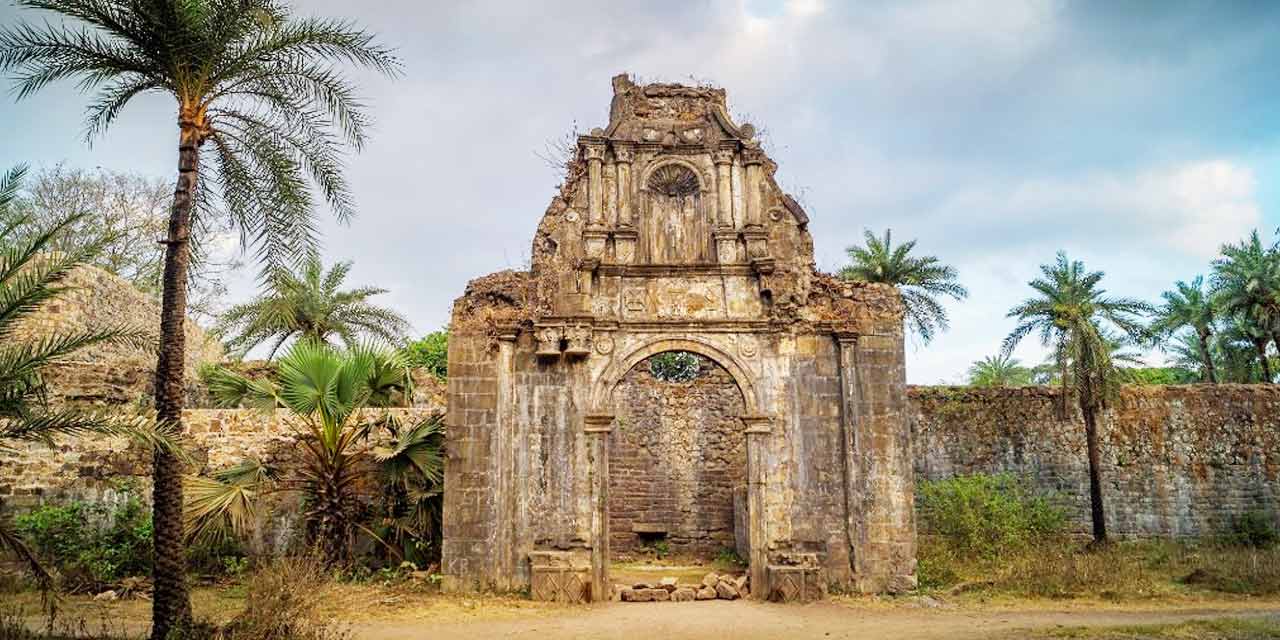
Fort Bassein (or Vasai Fort) is a 500-year old Portuguese fort near Vasai-Virar. And it is among the most popular places to visit in Mumbai outskirts.
At its prime, Fort Bassein was a complete city. It had administrative blocks, churches, hospitals, and the Portuguese used it as their base to control the region. The fort also used to be the official residence of the Portuguese governor when he was here.
Today, the fort is in ruins, but it is a part of the heritage tour of the area. The watchtowers allow you to observe the surrounding Vasai village and the extended skyline of Mumbai. And the fort is also a popular spot for movie shoots and pre-wedding photoshoots.
27. Kanheri Caves
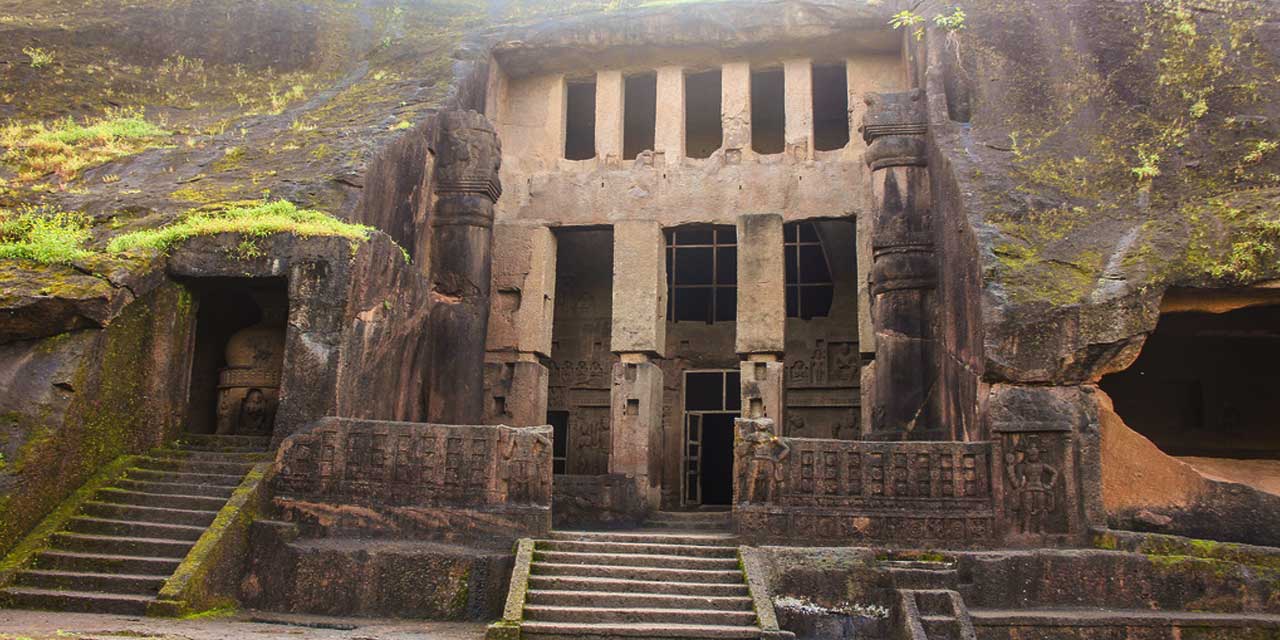
Kanheri Caves are a collection of 109 Buddhist caves. These caves used to be a Buddhist monastery, and they’ve been built over a long period. The earliest caves are from the 1st century BCE, while the most recent ones are from the 11th century CE.
Paintings and stone sculptures adorn the walls of the caves. Statues of Buddha in various postures and sizes are in the caves. And you'll also find numerous inscriptions in Brahmi and Devanagari, and some epigraphs in Pahlavi, on the walls.
These caves served as a place for worship, study and meditation. Cave 3 is the largest among the Kanheri Caves, and the most remarkable.
This serene cave complex is situated on a hillside, and it takes a long trek through lush green bushes and rocks to reach here. This site has numerous small streams and waterfalls too. And it also offers a view of the sprawling Mumbai city.
28. Global Vipassana Pagoda
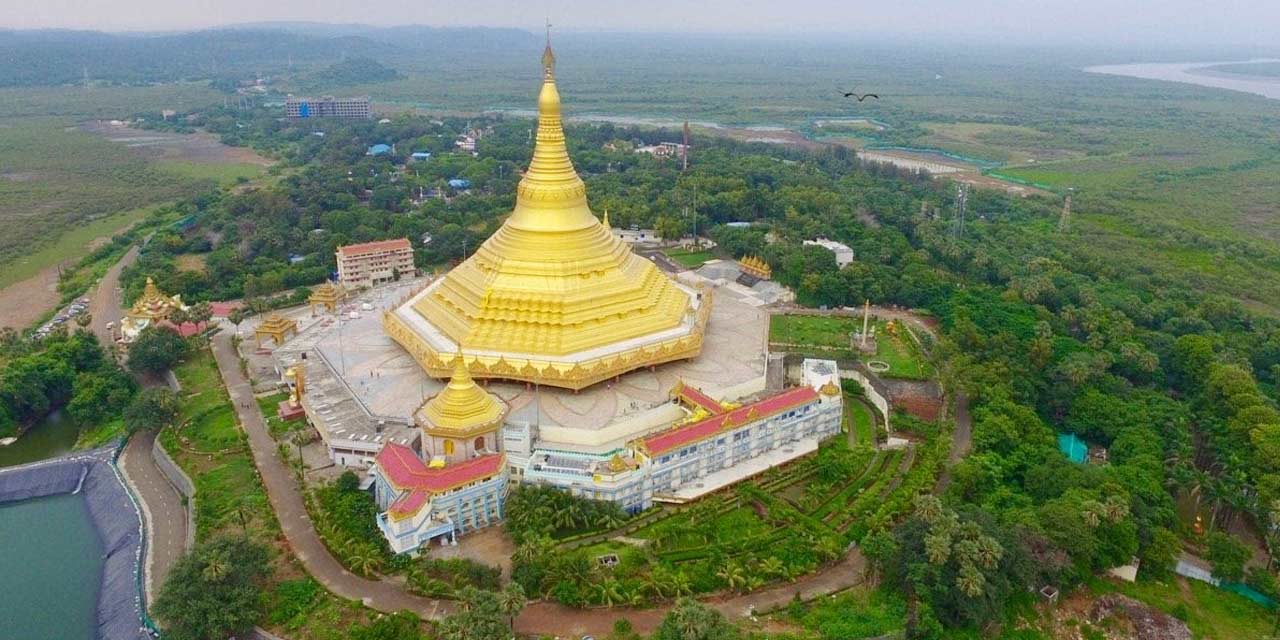
Global Vipassana Pagoda is a meditation dome on the outskirts of Mumbai. The dome is built as a tribute to a Vipassana teacher – Sayagyi U Ba Khin, and it resembles the Shwedagon Pagoda of Myanmar.
The dome of the pagoda is the world’s largest stone dome standing without any supporting pillars. And 8000 people can meditate at a time here.
The architectural pagoda and the intricately carved gates are among the major points of tourist interests. But there also are other structures like the 21.5 feet high statue of Gautam Buddha, the Bell Tower and the Gong Tower. The pagoda complex also has a park, a small waterfall and a replica of the Ashoka Pillar of Sarnath.
Global Vipassana Pagoda spreads the values of Gautam Buddha through its meditation and relaxation sessions. And you can also take meditation courses. The campus has a library and a museum too.
29. Essel World
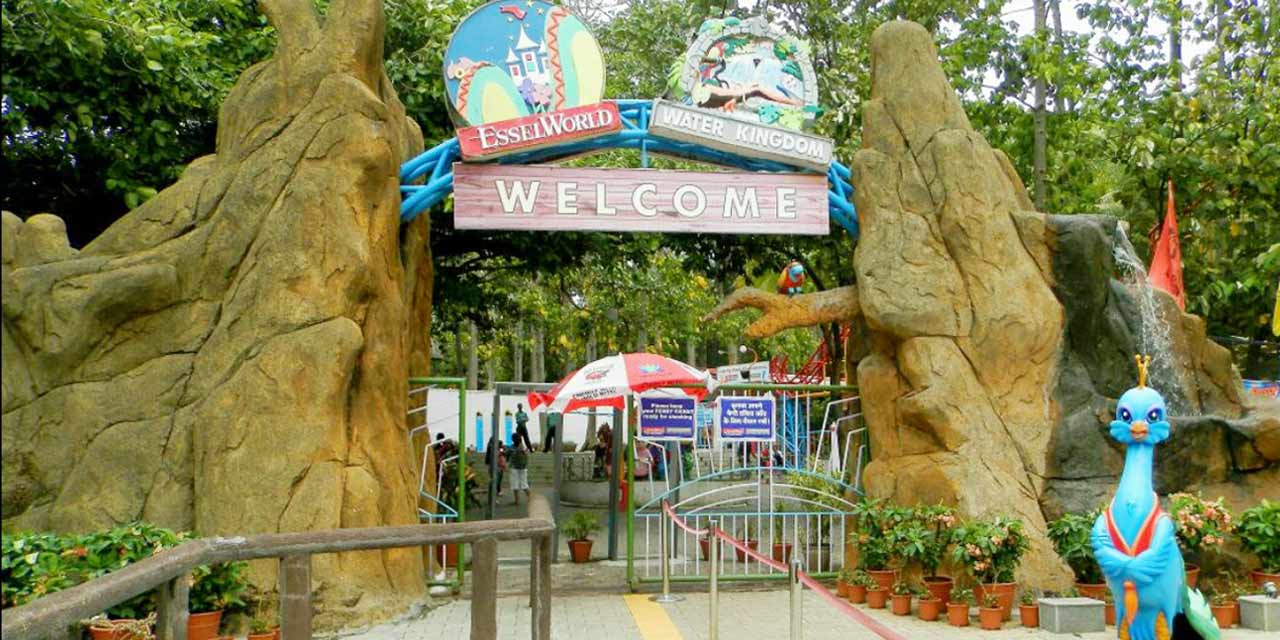
Essel World is an amusement park, only a few metres from Global Vipassana Pagoda. It’s a popular getaway for relaxation for local people, and it is also among the famous amusement parks in India.
This amusement park has got over 50 amusement rides, adventure activities and fun points to check. There are different rides for adults and kids. And you'll find group rides too. Apart from the rides, you can enjoy in the bowling alley, ice-skating rink, discotheque and many other places.
Essel World has numerous food courts serving a variety of cuisines. And it also has a small merchandise shop. And while you're at Essel World, visit Water Kingdom too.
30. Water Kingdom
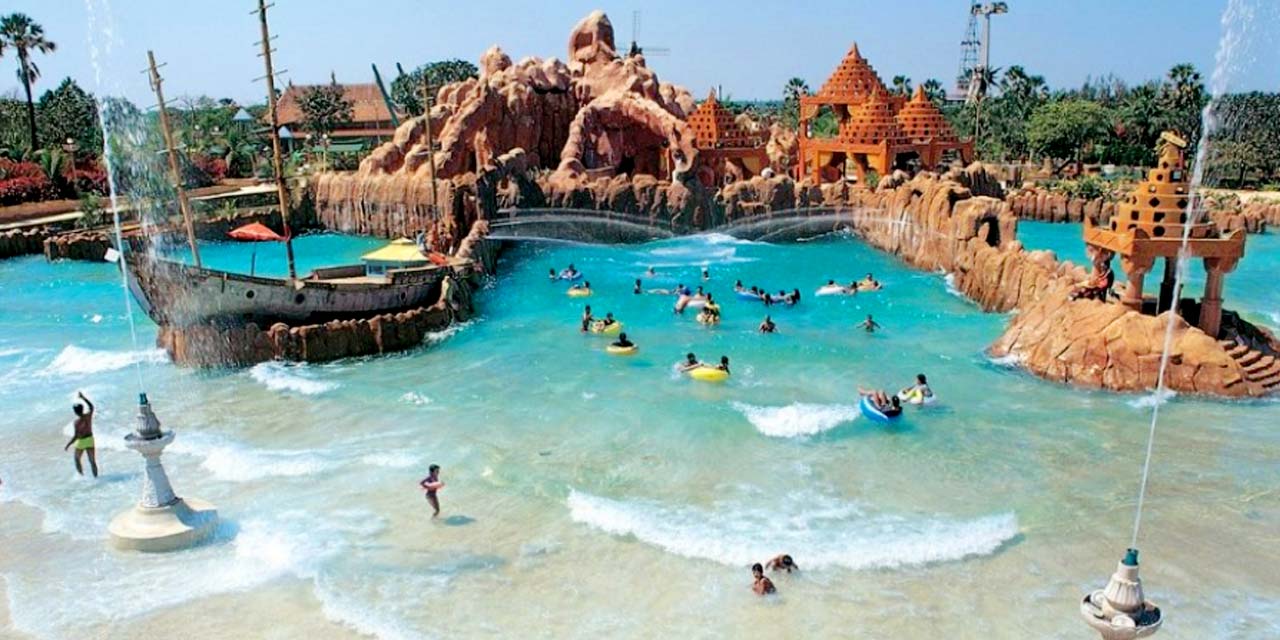
Water Kingdom is a water-themed amusement park right next to Essel World. It has various wet adventure rides, fun-filled water slides and numerous pools to play together. And many people visit Essel World and Water Kingdom together.
This park also has a large wave pool and over 30 water activities, including a rain dance floor.
And if you aren’t interested in the water games, you can relax beside the pools with some cold drinks and snacks. Water Kingdom has a couple of restaurants and snacks parlours serving a variety of delicacies.
Apart from those fun rides and water slides, a fish spa and pedicure zone are also here.
31. Powai Lake
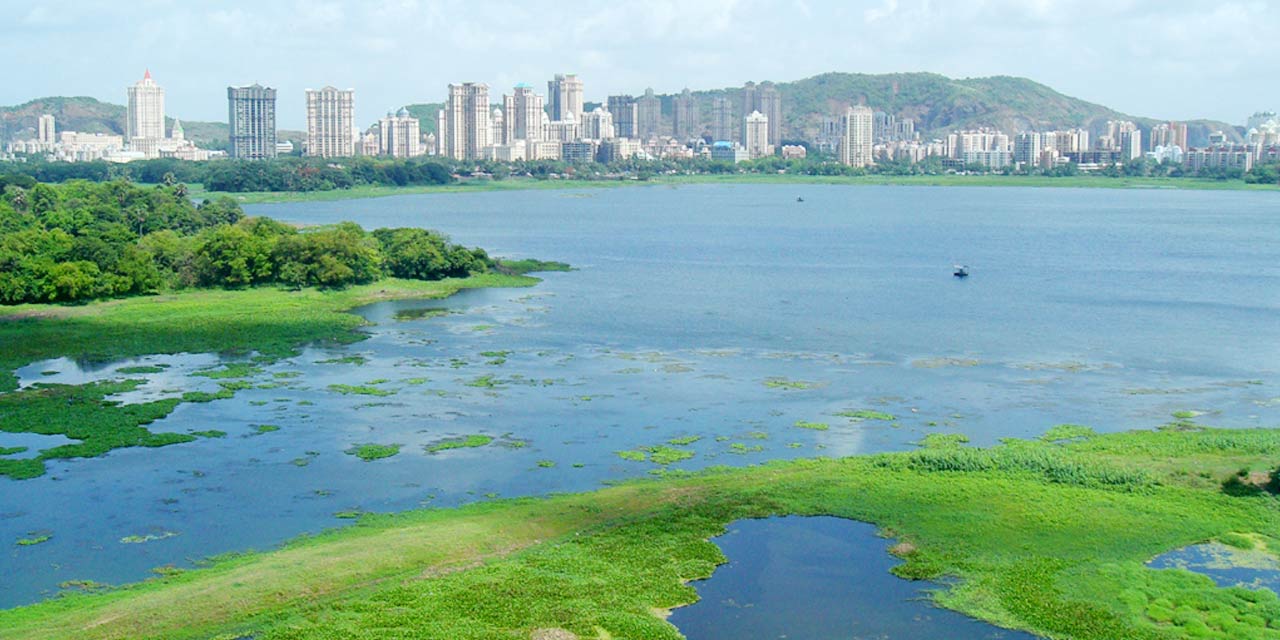
Powai Lake is an artificial lake known for its charming evenings. The lake is surrounded by trees and bushes, and you will find many birds like kingfishers, herons and falcons. Bees and various colourful butterflies can also be seen near Powai Lake.
And the lake also has many fishes and a few crocodiles.
People come to Powai Lake to spend their evenings after work. A small play area is also near the lake. You can buy some local snacks and munch at them while admiring the golden hues of the sky and the setting sun.
And while you're here, you can also check out the Nirvana Park across the road in the Hiranandani complex. It is a beautiful garden furnished with wooden walkways, kids’ slides and benches. You'll also find grass lawns, ponds and tiny flowers around this park.
32. Nehru Science Centre
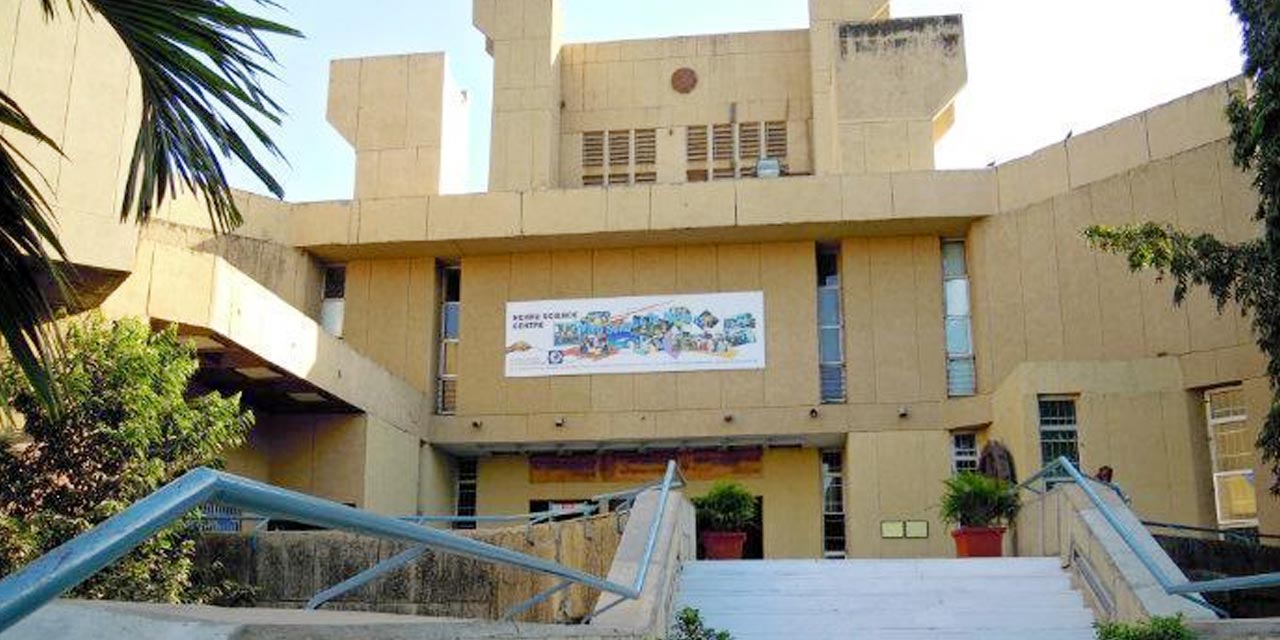
Nehru Science Centre is the largest interactive science centre in India.
It was opened to the public in 1985, and it has around 500 varieties of exhibits and interactive science games. This science centre also has a museum showcasing various models to tell you about the developments in science and technology. And it has a library too, with scientific books and movies.
The science centre offers practical experience with laws of physics, human anatomy, and many other facets of science. The available activities also include regular shows, films, and documentaries.
A sky observatory – Nehru Planetarium, is also within the complex. Multiple telescopes are available here for stargazing and studying planetary motions and Solar/Lunar eclipses.
33. Crawford Market
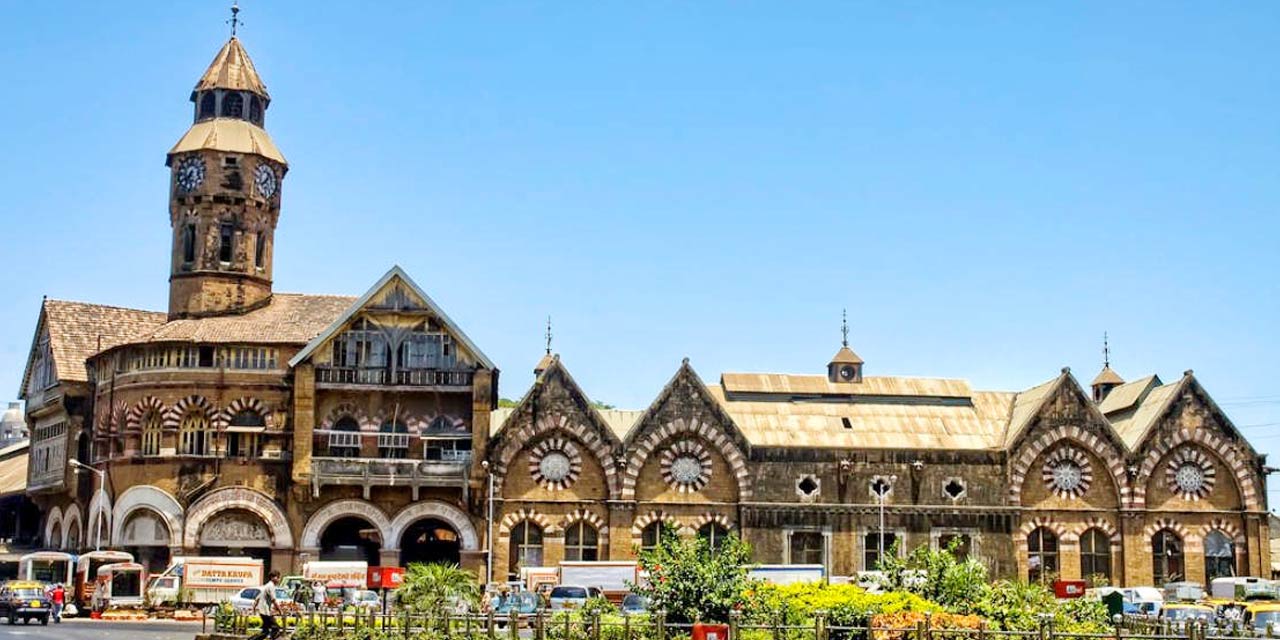
Crawford Market (officially named Mahatma Jyotiba Phule Mandai) is the largest market in the southern Mumbai. From gifts to groceries and from toys to pets, the market has everything. And it is the best place to visit in Mumbai for shopping.
During British rule, it was a source to buy daily fresh produce. And it’s still a popular place to get good deals on various household goods and fresh fruits and vegetables.
Crawford Market is known for its striking architecture too.
It has a blend of Norman and Flemish architectural styles, and it is decorated with paintings and murals. The clock tower is adorned with carvings that resemble Victorian style. And in some parts of the building, you will find glimpses of the Gothic architecture style too.
34. Dhobi Ghat
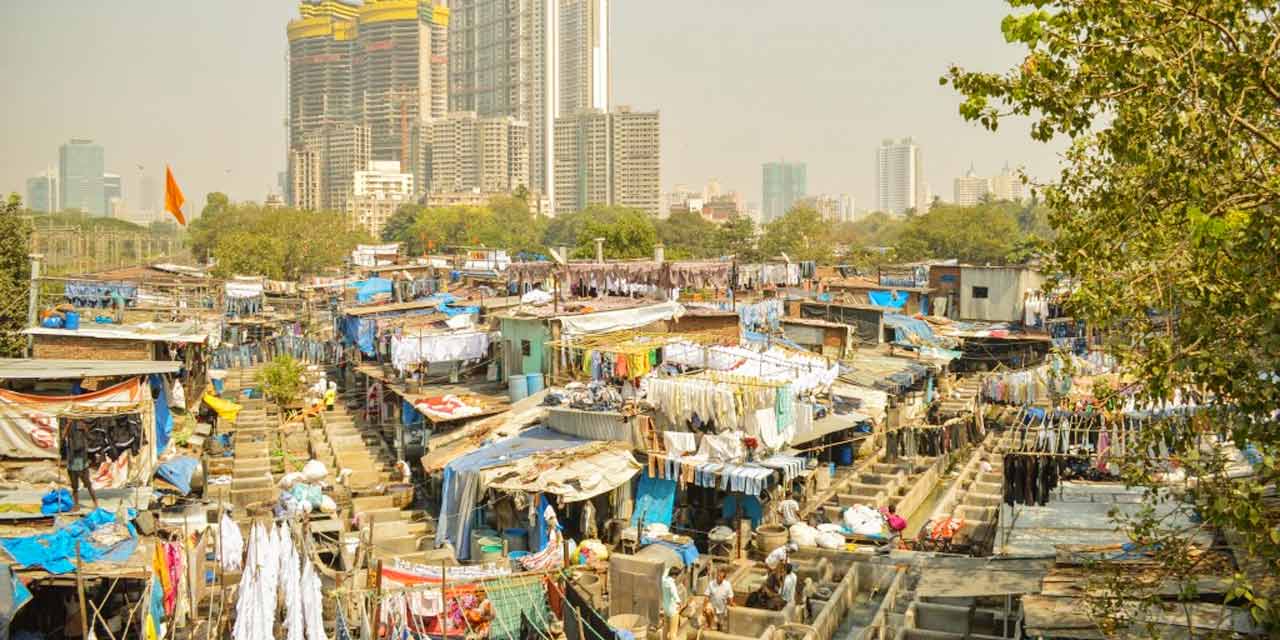
Dhobi Ghat is the world's largest open-air laundry. Here, hundreds of washermen and women – dhobis, work their shifts through the day to wash clothes. Porters bring dirty clothes from all over Mumbai and they take them back in their fresh, crisp and spotless state.
The system is well-optimised, and each cloth is coded to be traced back to the client.
This laundry was set up by an association of 50 washers in 1890. And today, around 700 washer families live here. And although some have installed washing and drying machines, most still carry on their work manually.
Dhobi Ghat has maintained much of its old charm and washing methods.
Other Popular Places to visit in Mumbai
Apart from the above 34 tourist spots, you’ve many other places to visit in Mumbai and around. You can visit beaches like Aksa Beach , Gorai Beach and Versova Beach here. These are known for their sunset views, horse rides and street food stalls. Gorai Beach is also popular among the local people for weekend getaways and parties.
Then, you can also enjoy various gardens spread throughout the city. Chhota Kashmir and Hanging Garden are among the most popular of them. And if you love trekking, animal-spotting or bird-watching, you must visit Sanjay Gandhi National Park .
Also, if you're looking for places to visit in Mumbai for fun, plenty of amusement parks are there in and around the city. Snow World , Tikuji-ni-Wadi and Yazoo Park are popular.
You can also enjoy in themed water parks like Anand Sagar Water Park , Royal Garden Water Park and The Great Escape Water Park. These water parks are away from the hustle-bustle of the city. And they provide accommodation facilities if you want to stay for a night or two.
If you’re interested in cricket, you can buy a ticket for a game in Wankhede Stadium . And if you like theatres and plays, you can check out Prithvi Theatre. The theatre also hosts workshops, performing art programmes and other events.
And while you're in Mumbai, also visit Babulnath Temple . It has a special place among the devotees of Shiva, and the celebrations during Mahashivaratri festival are full of excitement.
Mumbai is a mix of art, culture and entertainment, and it should be in the bucket list of every traveller. Whether you're looking for places to visit in Mumbai with family and friends or you want quiet corners to spend time with yourself, you'll find them here.
The city will be a memorable holiday destination for adults and youngsters alike. From religious sites to beautiful beaches and historical caves to magnificent architectural monuments, you'll find a variety of places to visit in Mumbai.
Whether you want to go on a solo tour or want to book a honeymoon holiday, Mumbai won't disappoint you. Here you can be a part of the modern lifestyle, or enjoy a laid-back holiday in the lap of nature.
Excited About Mumbai?
Request A Call Back!
Tour Packages from Mumbai
- Shirdi Tour Packages from Mumbai (Shani Shingnapur)
- Lonavala & Khandala Tour Packages from Mumbai
- Malshej Ghat Tour Packages from Mumbai
- Igatpuri Tour Packages from Mumbai
- Alibaug Tour Packages from Mumbai
- Raigad Tour Packages from Mumbai
- Lavasa Tour Packages from Mumbai
- Pune Tour Packages from Mumbai
- Mahabaleshwar Tour Packages from Mumbai
- Bhimashankar Tour Packages from Mumbai
- Matheran Tour Packages from Mumbai
Top Tourism Places to Visit in Mumbai
- Gateway of India, Mumbai
- Elephanta Caves, Mumbai
- Marine Drive, Mumbai
- Shree Siddhivinayak Temple, Mumbai
- Haji Ali Dargah, Mumbai
- Bandra-Worli Sea Link, Mumbai
- Essel World, Mumbai
- Nariman Point, Mumbai
- Juhu beach, Mumbai
- Chhatrapati Shivaji Terminus, Mumbai
- Asiatic Society, Town Hall in Mumbai
- Colaba Causeway, Mumbai
- Nehru Planetarium, Mumbai
- Girgaon Chowpatty, Mumbai
- Chor Bazaar, Mumbai
- Mount Mary Church, Mumbai
- Sanjay Gandhi National Park, Mumbai
- Kanheri Caves, Mumbai
- Raj Bhavan, Mumbai
- Jehangir Art Gallery, Mumbai
- Taraporewala Aquarium, Mumbai
- Bombay High Court
- Bandra Bandstand, Mumbai
- Versova beach, Mumbai
- Churchgate, Mumbai
- Aksa Beach, Mumbai
- Worli Sea Face, Mumbai
- Chhota Kashmir, Mumbai
- Malabar Hill, Mumbai
- Prithvi Theatre, Mumbai
- ISKCON Temple, Mumbai
- Wankhede Stadium, Mumbai
- St. Michael's Church, Mumbai
- St. Thomas Cathedral, Mumbai
- Hanging Gardens, Mumbai
- Mani Bhavan, Mumbai
- Elephanta Island, Mumbai
- Dhobi Ghat, Mumbai
- Babulnath Temple, Mumbai
- Global Vipassana Pagoda, Mumbai
- Flora Fountain, Mumbai
- Water Kingdom, Mumbai
- Powai Lake, Mumbai
- Mahalakshmi Temple, Mumbai
- Dr. Bhau Daji Lad Museum, Mumbai
- Marve Beach, Mumbai
- Gorai Beach, Mumbai
- Mumba Devi Temple, Mumbai
- Nehru Science Centre, Mumbai
- Kamala Nehru Park, Mumbai
- Fort Bassein / Vasai Fort, Mumbai
- Rajabai Clock Tower, Mumbai
- Suraj Water Park, Mumbai
- Shangrila Water Park, Mumbai
- Snow World, Mumbai
- Yazoo Park, Mumbai
- Tikuji-ni-Wadi, Mumbai
- Ammu Water Park, Mumbai
- Shivganga Water Park, Mumbai
- Sargam Water Park, Thane
- Paradise Funland, Mumbai
- Mati Hill County Resort, Mumbai
- Snow Kingdom, Mumbai
- Imagicaa Theme Park, Mumbai
- Imagicaa Water Park, Mumbai
- Snow Park at Imagicaa, Mumbai
- Eyelusion at Imagicaa, Mumbai
- House of Stars at Imagicaa, Mumbai
- Rainy Resort & Water Park, Mumbai
- The Great Escape Water Park, Mumbai
- Pali Beach Resort & Water Park, Mumbai
- Bandra Fort Mumbai / Castella de Aguada
- Royal Garden Resort & Water Park, Mumbai
- Anand Sagar Resort & Water Park, Mumbai
- Panoramic Resort and Water Park, Mumbai
- Shanti Sagar Resort & Water Park, Mumbai
- Magic Mountain Amusement Park, Lonavala
- Vardhman Fantasy Amusement Park, Mumbai
- Wet N Joy Water & Amusement Park, Lonavala
- Mumbai Film City / Dadasaheb Phalke Chitranagri
- Mahatma Jyotiba Phule Mandai / Crawford Market, Mumbai
- Mumbai Zoo / Veer Mata Jijabai Bhonsale Park / Byculla Mumbai
- Prince of Wales Museum, Mumbai
- Glowmagica at Imagicaa Mumbai
Accessibility Links

Mumbai travel guide
When to go, what to do, and why you’ll love it.

Why you’ll love it
T his article contains links from which we may earn revenue. These links are signposted with an asterisk. More information here .
Mumbai, formerly known as Bombay, is the powerhouse of business, industry and fashion, and is easily India ’s most cosmopolitan city. Its urban sprawl has long extended beyond the seven islands that originally made up this city, now home to more than 20 million people. South Mumbai is where most of the tourist attractions lie and it’s also where you will see the city’s architectural glory — ranging from Victorian gothic to art deco.
It is a city in motion — always changing, always growing; old buildings are routinely torn down to be replaced with gleaming skyscrapers and road works are perennial with flyovers snaking over land and sea.
Mumbai is the birthplace of Indian cinema and where most of the Hindi-language film industry is based; people come here hoping to make it big in Bollywood movies. Some of the richest people in India call it home, yet it’s also home to Asia’s largest slum, Dharavi. But underneath the glitter and grime, it is a city of dreams — fast and furious, open-minded and welcoming, India’s Maximum City.
Main photo: Gateway of India and the Taj Mahal Palace Hotel (Alamy)
Advertisement
Begin your exploration at Gateway of India, a historic landmark monument constructed in 1924 to commemorate the visit of King George V and Queen Mary to the city. It is also where the last of the British troops departed from when India gained independence in 1947. Drop in at the Chhatrapati Shivaji Maharaj Vastu Sangrahalaya, Mumbai’s premier museum documenting the history of India from prehistoric to modern times. Feast your eyes on more colonial-era architecture, such as the imposing Chhatrapati Shivaji Maharaj Terminus (CSMT), Bombay High Court, Rajabai Tower and the BMC Building. The cultural precinct of Kala Ghoda is filled with contemporary art galleries and trendy cafés and restaurants; it also hosts the popular Kala Ghoda Arts Festival every February. The acclaimed Jehangir Art Gallery and the National Gallery of Modern Art nearby are also worth a look.
In central Mumbai, the Mahalaxmi Dhobi Ghat is an unmissable sight: a massive open-air laundry where washermen hand-wash endless loads of clothes and linens from the city’s hotels and hospitals. In nearby Byculla, Dr. Bhau Daji Lad Museum is a must-visit; it’s the oldest museum in the city with striking interiors and exhibitions that tell the history of Mumbai. The former mill area of Lower Parel in central Mumbai is a swanky corporate and entertainment hub as is Bandra Kurla Complex (BKC) in the suburbs — many of Mumbai’s best restaurants, cafés and bars are located in these two enclaves. Hipster Bandra* is known as the “Queen of suburbs”, the coolest of Mumbai’s neighbourhoods with innumerable cafés and restaurants. Pay your respects at the Basilica of Our Lady of the Mount (known simply as Mount Mary’s Church), which hosts the annual Bandra Fair in September. Hill Road and Linking Road are two popular shopping streets and Bandra Bandstand is perfect for an evening promenade. Head to Juhu Beach to catch the sunset or better yet, to Marine Drive in south Mumbai; as darkness descends, the street lights come on along the crescent-shaped boulevard, aptly named the Queen’s Necklace.
Where to stay
Being the commercial capital of India, the city is geared towards business travellers and the hotels in Mumbai (and their prices) reflect that. The big names are clustered in south Mumbai, Lower Parel, Bandra (particularly BKC) and near the airport. Looking for a view of the Arabian Sea? The Taj Mahal Palace Hotel* in Colaba for splurge-worthy sea-view rooms in the heritage wing. Alternatively, The Oberoi Mumbai* has rooms facing the Marine Drive while Taj Lands End* in Bandra (with a view of the Bandra-Worli Sea Link). Prefer a boutique experience? Abode* in Colaba is trendy yet homely and close to all the major attractions. Then there’s the glamorous Soho House Mumbai on Juhu Beach where you might just bump into a Bollywood celeb or two.
There are plenty of mid to high-end hotels if you need to stay close to the airport in the nearby suburbs of Andheri and Kurla. Apart from CSMT, Mumbai Central, Dadar and Kurla are some of the main areas where you will find super-budget (and very basic) hotels. Incidentally, Indian Railways recently introduced the first-of-its-kind Japanese-style capsule hotel at Mumbai Central Railway Station (around £10 per person for 12 hours).
Food and drink
From glamorous rooftop bars and fine-dining venues to hole-in-the-wall eateries, Mumbai’s food scene is diverse and eclectic. Whether you’re looking for north Indian butter chicken and biryani or south Indian idli and dosa — or Italian, Chinese, Japanese or any other international cuisine for that matter — you’ll find it here. For an inventive take on regional Indian food, head to The Bombay Canteen, or to Masque, which serves an ingredient-driven degustation menu and was recently ranked among Asia’s 50 best restaurants; both restaurants are in Lower Parel. The Irani cafés of Mumbai are also legendary, serving up Parsi fare such as dhansak, berry pulao, kheema pao, mawa cake, and more, all washed down with a cup of Irani chai; most of these cafes are centred around south Mumbai.
The city is known for its street food* such as piquant bhel puri and pani puri, spicy pav bhaji and sweet falooda. But the two dishes that you should not miss are vada pav (mashed potato fritter stuffed in a soft bun and doused with spicy chutneys) and the Bombay sandwich (buttered white bread with sliced boiled potato, beetroot, cucumber, tomato and mint chutney). Street food stalls are everywhere, especially in dedicated khau gallis near CSMT or Churchgate stations, at Zaveri Bazaar or on Carter Road. If you’re wary of eating on the street, try Kailash Parbat in Colaba and Elco Market in Bandra for chaat, and Cannon near CSMT for pav bhaji.
Nightlife in Mumbai is as fast-paced and frenzied as you’d expect with ritzy nightclubs and pulsating dance floors, casual bars and pubs, live music venues and late-night restaurants — and the city’s reputation for being safe makes it the best after-hours party destination in India. Most nightspots are clustered around Colaba and Kala Ghoda in south Mumbai, Lower Parel in central Mumbai and suburban Bandra.
An hour-long ferry from Gateway of India will take you to Elephanta Island* where you can explore a labyrinth of impressive rock-cut temples dating to AD450.
Space is at a premium in Mumbai and green spaces few and far between. So, it’s a pleasant surprise when you stumble upon Five Gardens in central Mumbai; with multiple gardens of varying sizes, wide footpaths and tree-shaded lanes lined with charming two or three-storey buildings, this is a lovely place for an afternoon amble. Walk a bit further to King’s Circle where you will find several tiny restaurants serving some of the best south Indian food and filter kaapi (frothed, milky coffee) in the city. The Matunga Flower Market nearby is also a treat to the eyes and nose.
Speaking of markets, there are several worth exploring in Mumbai — Crawford Market in Fort housed in a historic colonial building; nearby Zaveri Bazaar for gold and gemstones; Mangaldas Market in Kalbadevi for fabric; Mirchi Gulli in Lalbaug market for spices; and Dadar Flower Market, which is best visited early in the morning. The Sassoon Docks Fish Market in Colaba is also a fascinating experience; sign up with local travel guides such as No Footprints to get the best out of these market visits.
And finally, it would be remiss to visit Mumbai and not watch a movie at one of its cinema halls. You can, of course, go to one of the many glitzy multiplexes around the city, but for a true Bollywood experience nothing beats the old-school (and mildly decrepit) G-7 multiplex in Bandra or Maratha Mandir at Mumbai Central.
Know before you go
The currency is the Indian rupee. November to February is the best time to visit Mumbai when it is cool with low humidity. March to May is hot and humid, and June brings the monsoon season that lasts until September and is best avoided. However, if you want to experience the festival of Ganesh Chaturthi (usually August or September) you will have to brave the rains.
Mumbai’s public transport is wide, varied, and overcrowded. Local trains are packed with commuters and while they are a quick and inexpensive way to get around; aim to avoid the peak office-going hours if possible. Air-conditioned metro trains operate in some suburbs, while some parts of south and central Mumbai are served by an above-ground monorail (though it is of little use to tourists).
Road transit options include the red BEST buses that are very reasonable. Alternatively, hop in one of the black-and-yellow taxis that ply in south and central Mumbai; unlike elsewhere in India, they run by meter. In the suburbs, auto rickshaws rule the roost. App-based taxi services such as Uber and Ola are also available. Remember that Mumbai’s rush-hour traffic jams are notorious and the relentless road works can easily double your travel time.
Take me there
Inspired to visit Mumbai but yet to book your trip? Here are the best hotels from Booking.com* and Expedia* .
Sign up for the Times Travel Newsletter here .
- South Africa
- Afghanistan
- North Korea
- Adventure + Outdoors
- Amusement Parks
- Backpacking Trips
- Boating + Cruises
- Budget Travel
- Bus + Train Travel
- Coasts + Islands
- Country Trips
- Fall Vacations
- Family Vacations
- Green Travel
- Heritage + History
- Honeymoons + Romance
- Inspiration + Guide
- Landmarks + Attractions
- LGBT Travel
- Markets + Bazaars
- National Parks + Reserves
- Nature + Wildlife
- Parks + Gardens
- Pets + Animals
- Photography
- Airlines + Airports
- Budgeting + Currency
- Business Travel
- Celebrity Travel
- Customs + Immigration
- Deals + Rewards
- Family Travel
- Hotels + Resorts
- Luggage + Packing Tips
- Offbeat News
- Photography Tips
- Responsible Travel
- Solo Travel
- Tech + Gear
- Travel Etiquette
- Travel Warnings
- Bars + Clubs
- Celebrity Chefs
- Restaurants + Cafés
- Wine + Vineyards
- Beach Hotels
- Boutique Hotels
- Hotel Openings
- Hotel Reviews
- Luxury Hotels
- Mountain + Ski Resorts
- Spa Resorts
- Vacation Rentals
- Asia Cruises
- European Cruises
- Festivals + Events
- Museums + Galleries
- Style + Design
- Travel’s Best
- Hotel with Agoda.com
- Hotel with Booking.com

What to eat in Singapore? — 10+ must-eat & best street…

Must eat in Nha Trang — 45+ best street food in…
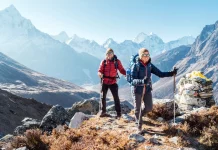
How to prepare for trekking in Nepal? — 10+ Nepal trekking…
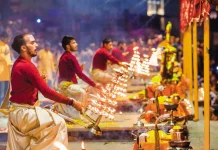
Where to go & what to do in Varanasi? — 15+…
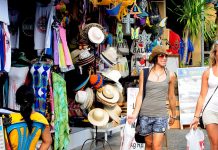
What to buy in Indonesia? — Top +9 famous gifts, souvenirs…
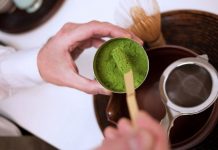
What to buy in Kyoto? — 31+ must-buy Kyoto souvenirs, gifts…
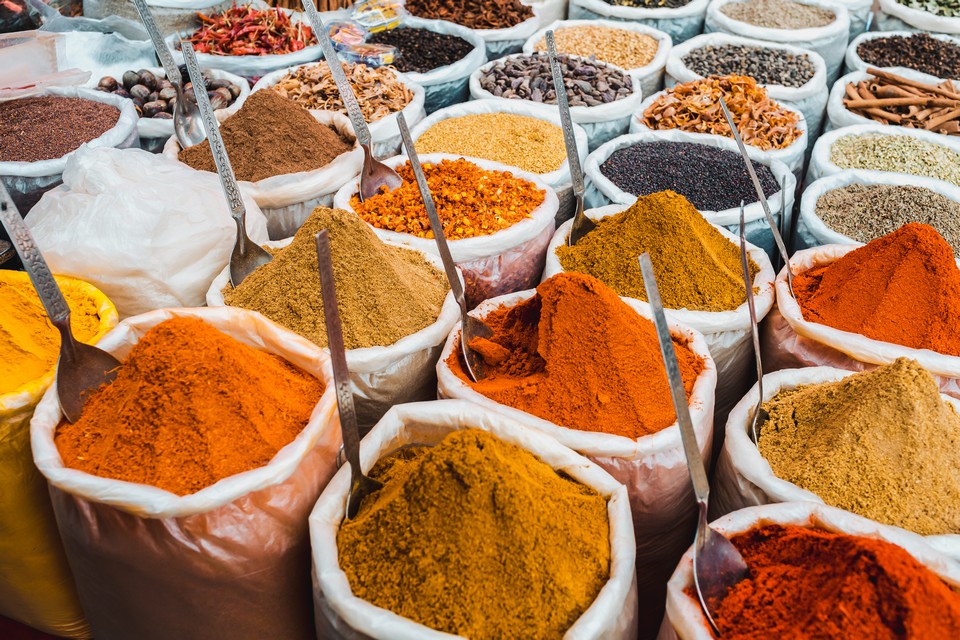
What to buy in India? — 29+ best gifts from India…

India trip tips — 9+ things to know before going to…

All about tips in Nepal — How much to tip in…

Cambodia travel tips — 15+ what to know & things to…

Must eat in Hong Kong — 7+ must eat & must…

Must eat in Georgetown — 10+ famous, must-eat & best street…

Top hotels in Siem Reap — 8+ best places to stay…

Top hotels in shanghai — 15+ best hotels in Shanghai

Top hotels in Malacca — 10+ good & best hotels in…

Top places to stay in Bali — Top 10 best areas…

10 must-know things for your best first time European river cruise

Top 3 best luxury cruises in Halong Bay, Vietnam

Cherry blossom festival Korea 2024 — Top 5 cherry blossom festivals…

Ghibli museum blog — The fullest Ghibli museum guide for first-timers

Kyoto festival — Top 10 best events & most famous festivals…

National Palace Museum Taipei blog — What to see in National…

Japanese waterfall — Top 10 most beautiful waterfalls in Japan in…

19+ most beautiful towns in Europe every tourist need to visit…

Georgia travel photos — 20+ captivating photos show Georgia is heaven…

Explore Damnoen Floating Market — The oldest floating market of Thailand

Visiting Fenghuang Ancient Town — One of the most charming ancient…

Mekong Delta travel blog — Beyond rivers of Southwestern Vietnam

14 reasons why you should travel when you are young

Shigaraki Tanuki – An animal symbol of good luck in Japan

Living in the charms of cave houses in Andalucia, Southern Spain

20+ jaw-dropping tiny homes around the world
Mumbai travel blog — the fullest mumbai travel guide for first-timers.
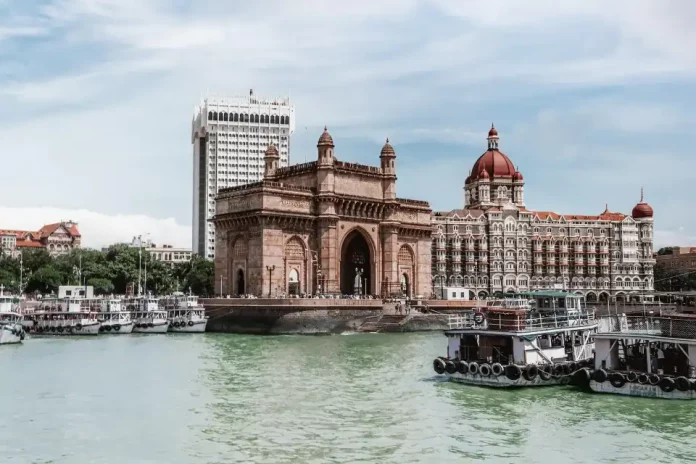
Mumbai is the financial capital of India, also known as the ‘city of dreams’. Beyond being a big city, Mumbai is also a glimpse of India’s diversity not only in terms of people and culture but also in terms of other diverse activities. So in this article, we will give you the best Mumbai travel tips. So, is Mumbai worth visiting and what to do in Mumbai? Let’s check out our Mumbai travel blog (Mumbai blog) with the fullest Mumbai travel guide (Mumbai guide, Mumbai tourist guide, Mumbai city guide, Bombay travel blog) on how to how to visit Mumbai, best time to come, what to eat, best places to visit and things to do in Mumbai to find out the answer!
Where to go & what to do in Varanasi? — 15+ places to visit & best things to do in Varanasi
What to buy in india — 29+ best gifts from india & best things to buy in india.
- Leh Ladakh bike trip itinerary — How to spend 6 days in Ladakh by motorbike?
- Leh Ladakh bike trip blog — Ladakh bike trip guide & tips for first-timers
- Ladakh trip cost per person from Delhi — How much does Ladakh trip by bike cost?
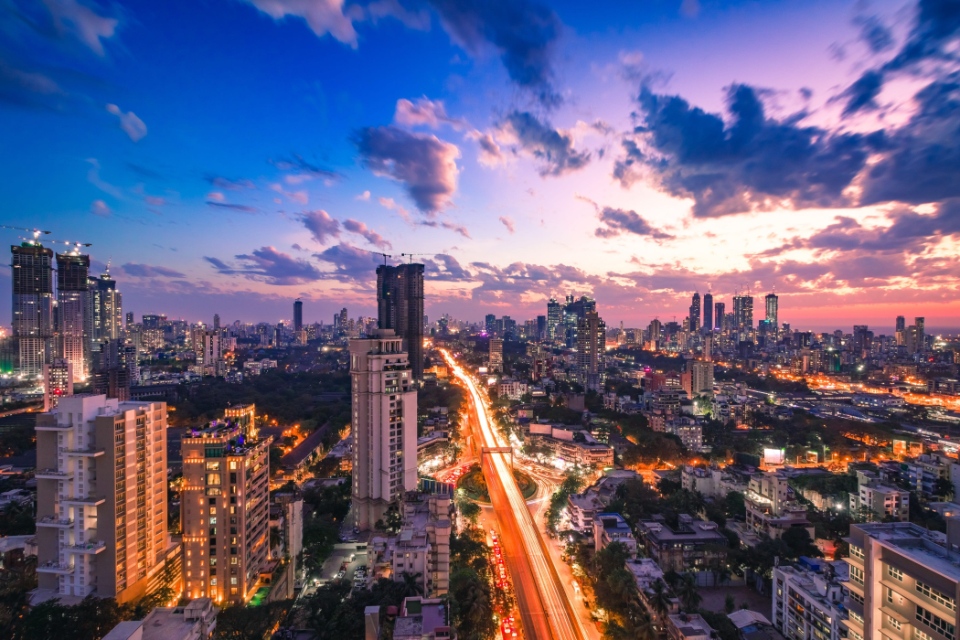
Mumbai is truly the spiritual place of all that belongs to India. Hot, dirty, crazy, beautiful, endless and inspiring! It is the most populous city in the country and there is a big divide between the rich and the poor. But, somehow, with this city’s “extremely wild” energy, it will make you want to keep coming back.
Overview of Mumbai (#mumbai travel blog)
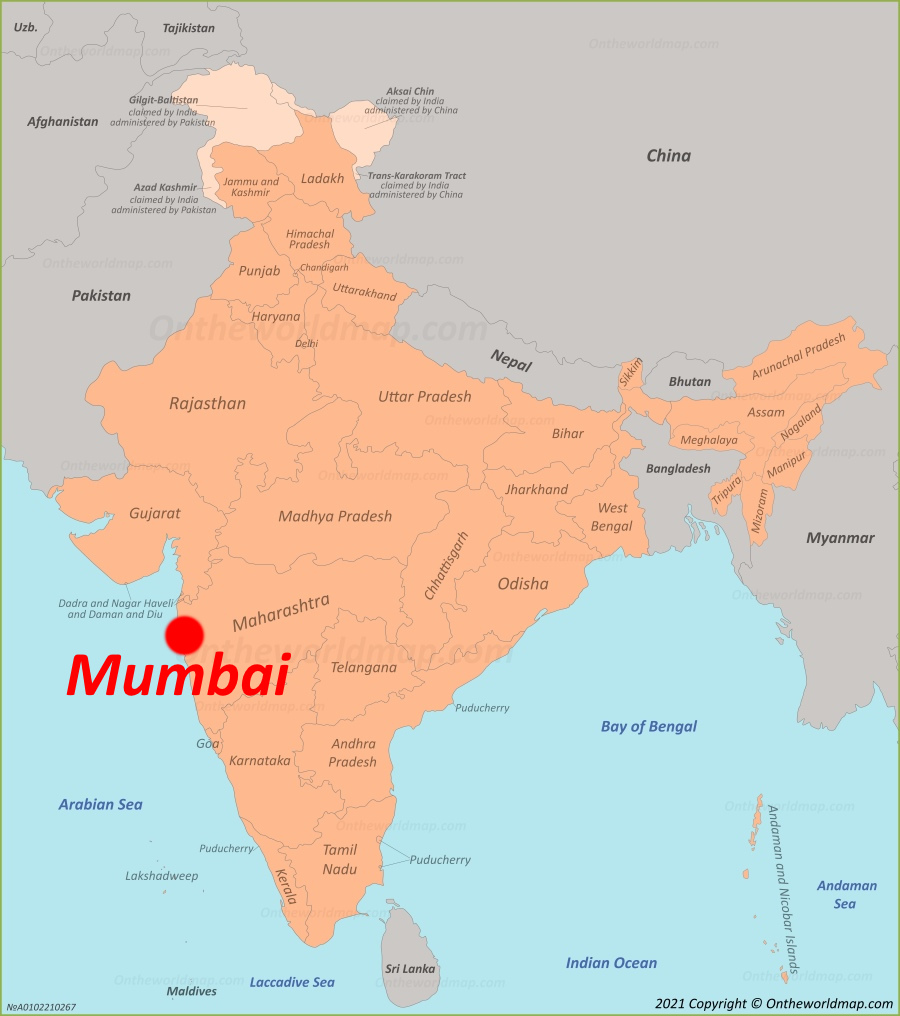
Mumbai (former also known as Bombay), is the capital of the state of Maharashtra – the most populous city in India, with a population of up to 21 million (as of 2022). With a total area of about 603.4 km² and Mumbai metropolitan region is 6,355 square kilometres (2,454 sq mi), Mumbai is considered the leading commercial and entertainment capital in India. Therefore, the city is also home to many important and prominent financial institutions such as the Reserve Bank of India (RBI), BSE (formerly Bombay Stock Exchange), and National Stock Exchange of India (NSE)…

Mumbai is located on Salsette Island, off the west coast of Maharashtra. Mumbai has attracted immigrants from all over India due to its many business opportunities and high standard of living, making the city a “mixed hot pot” of many communities and cultures. The city is home to the Hindi film and television industry, known as Bollywood, making Mumbai tourism most popular. Mumbai is also one of the rare cities to have a national park, Sanjay Gandhi National Park located within the city limits.
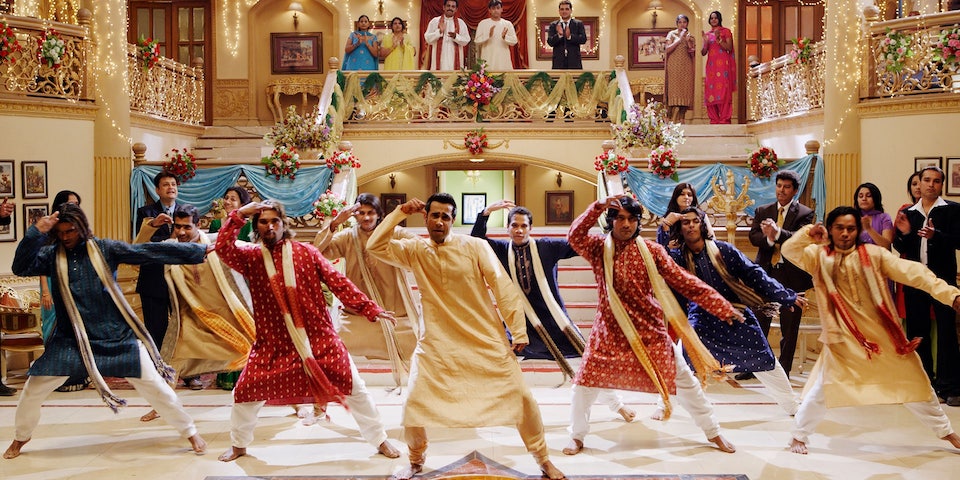
Mumbai is a fusion of iconic charm architectures of the old world and striking, flashy modern high-rises buildings, skyscrapers, modern and traditional culture and more. The city is known as the commercial capital of India, but there is so much more to it. Mumbai is all about art, history, culture, food, theatre, cinema, nightlife and more. Although Mumbai does not have many historical sites like other cities, it attracts a large number of tourists thanks to its excitement, difference and unique man-made beauty.
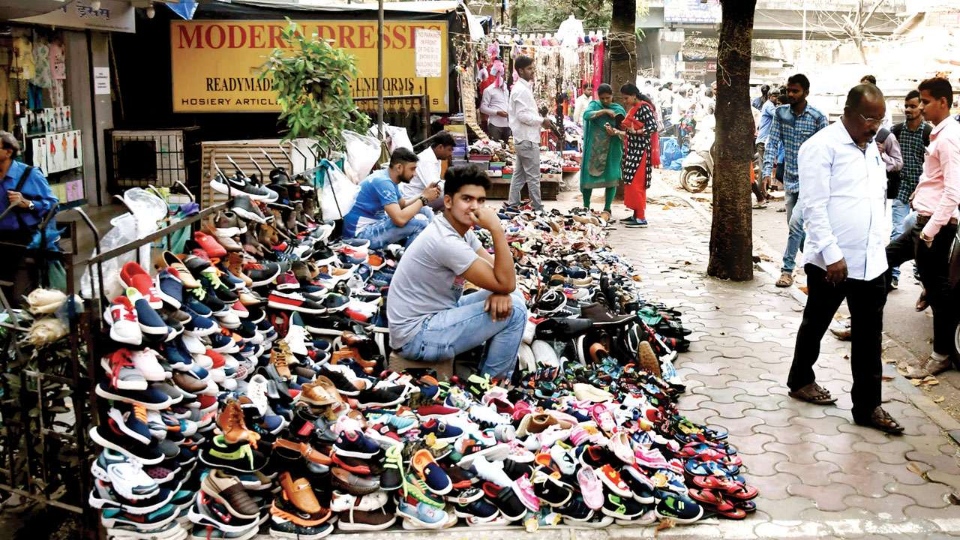
Not only is it one of the wealthiest cities in India, Mumbai is known as a place where the past and the present intersect. Indeed, when you are admiring the expensive and luxurious buildings, just a glance can immediately touch the long-standing historical sites, even the squalid slums next door.
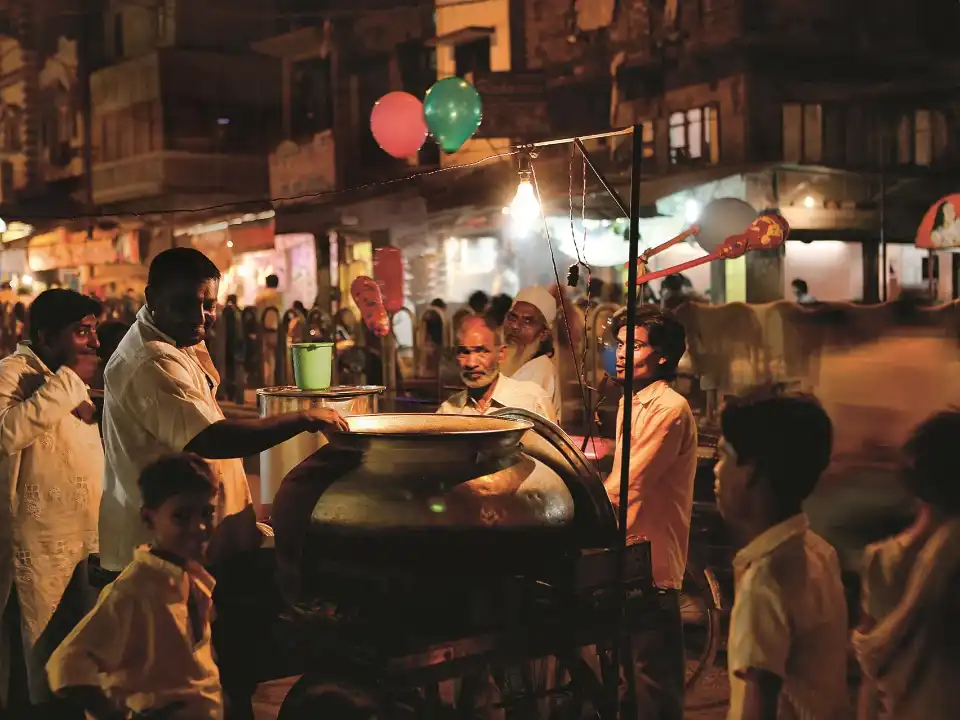
When is the best time to visit Mumbai? (#mumbai travel blog)
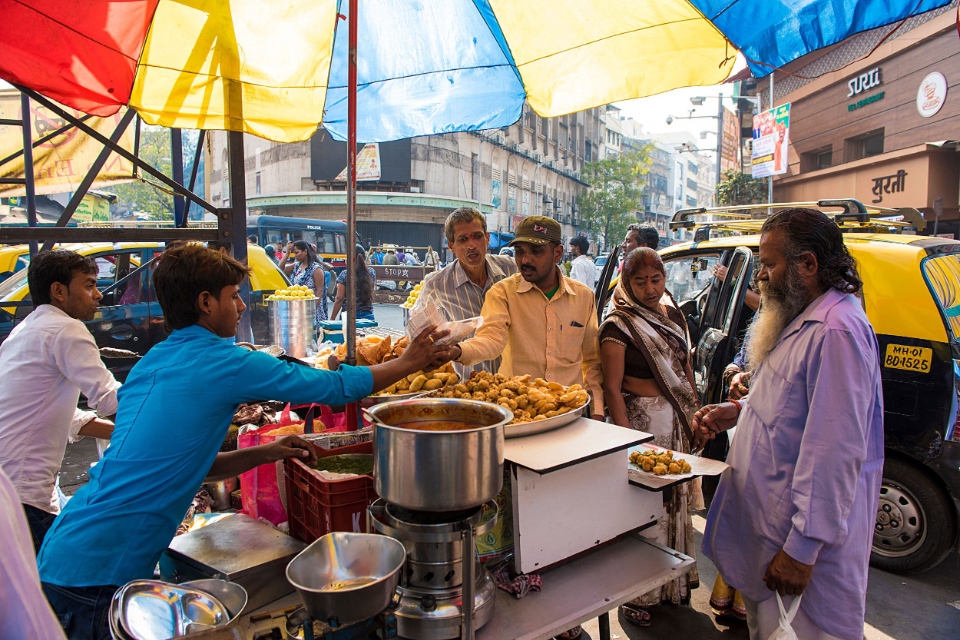
Mumbai has diverse climate, including 3 main seasons: winter, summer and rainy season. Summer is extremely hot and uncomfortable, so if you are not used to the harsh sun, you’d better go to Mumbai in the winter, it will be cool and not too cold.
Mumbai’s winter lasts from December to February next year and the best time to visit Mumbai is from October to March next year. At that time, the weather is quite pleasant, the day is cool and the night is a bit chilly, with little rain, suitable for sightseeing, outdoor and indoor activities as well.
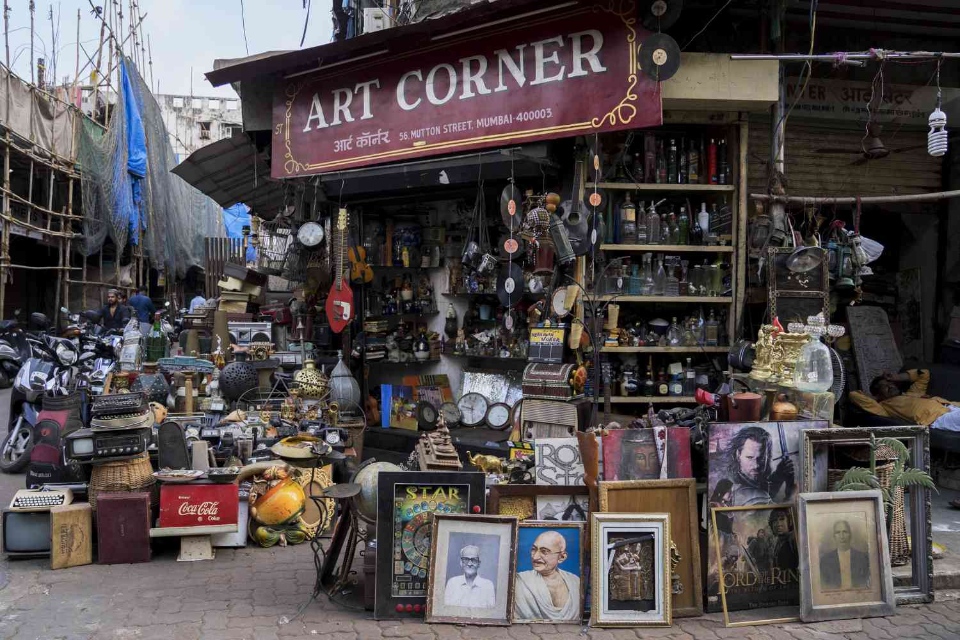
Mumbai also has a few unique and interesting festivals, the biggest is Ganesh Chaturthi (or Vinayaka Chaturthi), a festival dedicated to the elephant-headed Hindu god of wisdom – Ganesha which takes place in August or September. There are also . Elephanta Festival in mid-March, Banganga Festival in January and Kala Ghoda Arts Festival in February… make it possible to experience the unique culture of this colorful city.
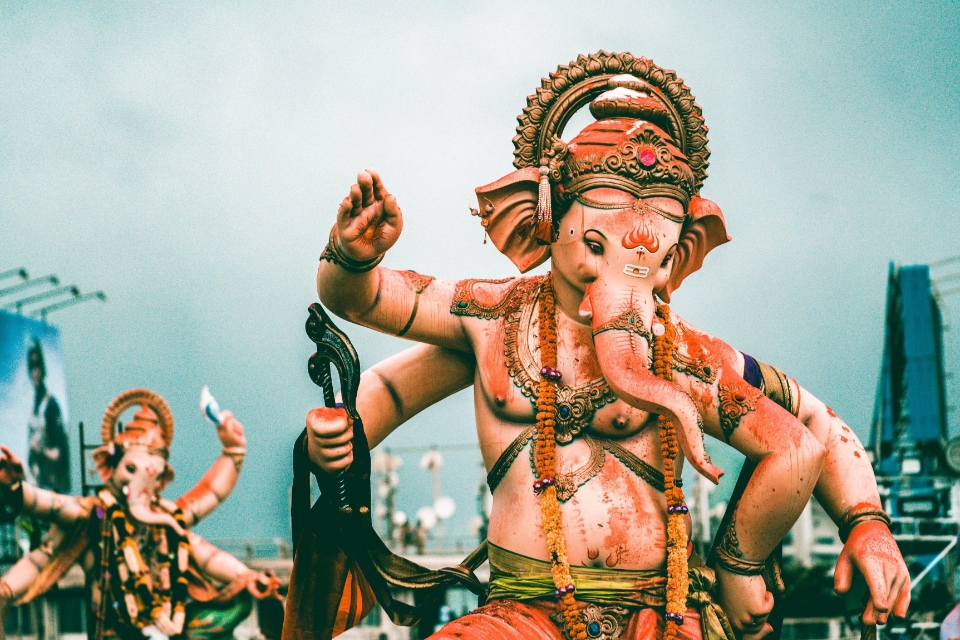
How to get to Mumbai? (#mumbai travel guide)
The simplest way is by air. This is a big city and can also be considered a “brand” of India, so wherever you are, you can catch a flight to get there. Sometimes direct flights to Mumbai are cheaper than flying to Delhi, so you might want to consider starting your journey in Mumbai first.
Domestic flights from Delhi, Bangalore, Chennai and others fly to Mumbai daily.
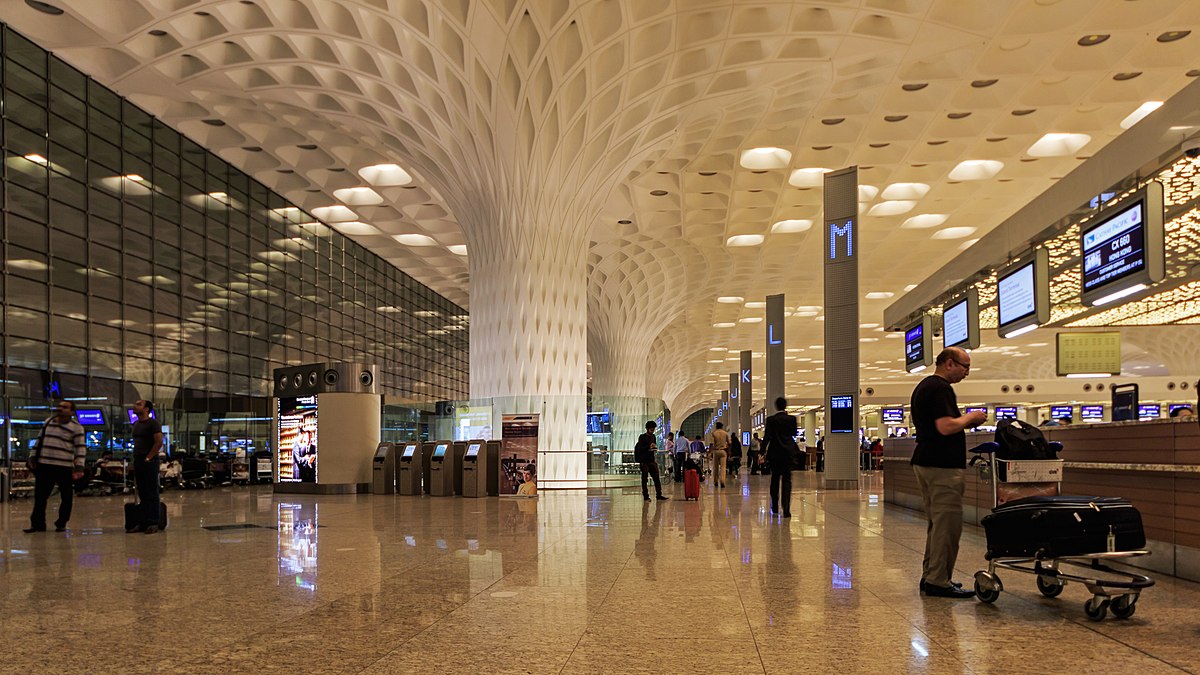
Those flying to Mumbai will arrive at Chhatrapati Shivaji Maharaj International Airport (BOM). It is the second busiest beautiful airport in India, after Indira Gandhi Airport in Delhi. At the airport you will find ticket booths where you can book a prepaid taxi to your hotel. About INR 675 for an air-conditioned taxi ride to the Fort area, but air-conditioned taxis are also available for around INR 810. If you want to pre-book a private transfer, you can do so through Klook .
Or you can also go to Bombay by train or bus, which is a great stop after visit Goa or Kerala before you extend your journey north.
Getting around Mumbai (#mumbai guide)
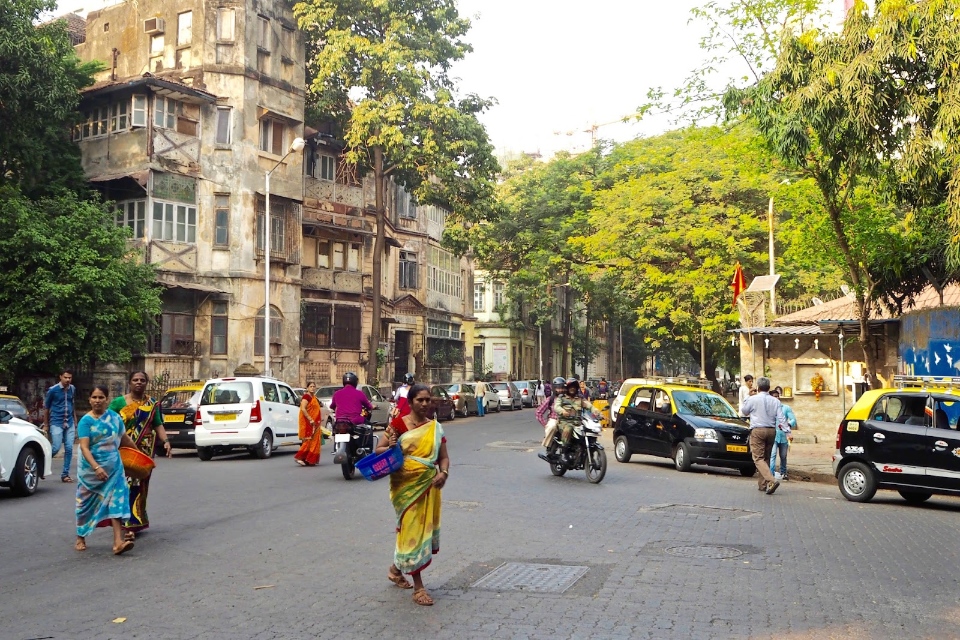
Getting from the airport to the center of Mumbai you can go by Ola or Uber. After get out of the arrival hall, go up to the parking tunnel P7 to catch an Uber or Ola, pay attention to the signs indicating where to catch Uber or where to catch Ola, Uber will not go to Ola platform to pick you up. Especially Uber drivers, they are quite patient to wait for you when you arrive without prompting… because the longer you wait, the more you will be charged for waiting, it’s true!
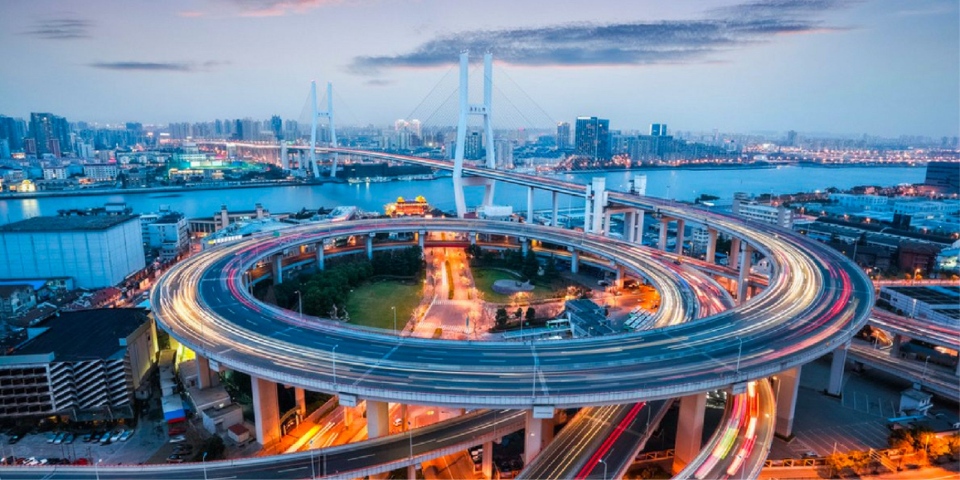
In Mumbai, the traffic is quite crazy, besides the traffic jam, the drivers are also quite liar, the loud horn sounds make you tired.
In India they drive on the left so it’s probably not safe to rent a self-drive car. So it’s best to go by public transport or taxi.
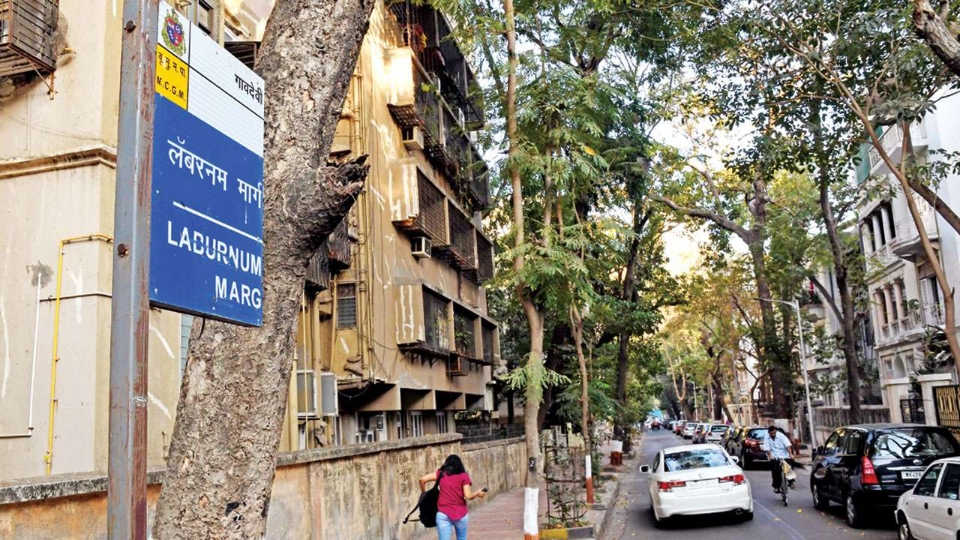
Metro: Regarding public transport, there is a metro system which is also quite convenient and SUPER CHEAP but if you go at off-hours, I think you should avoid it because it is very crowded.
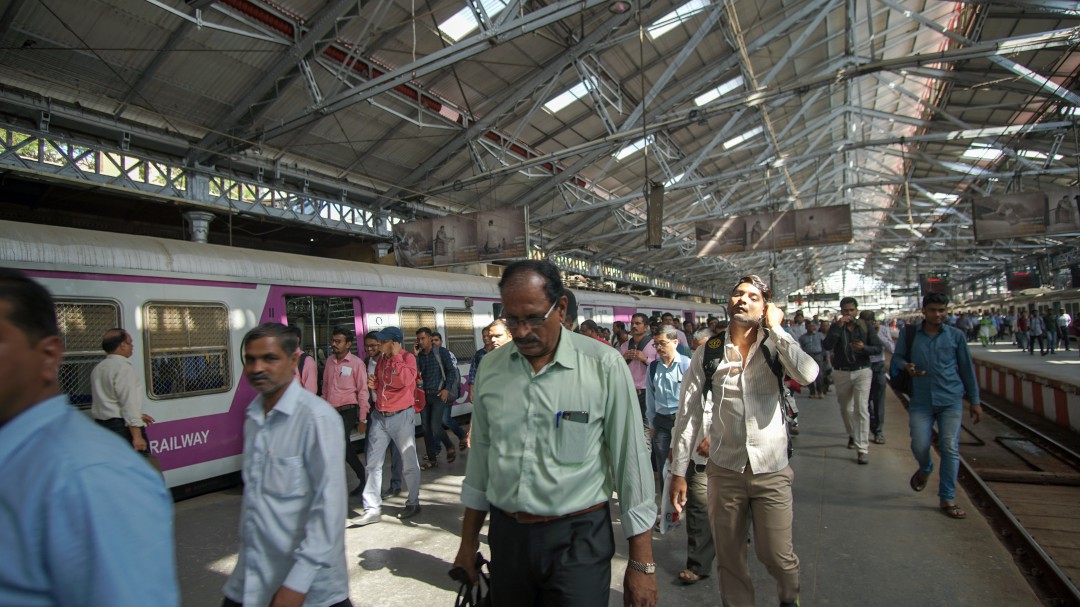
Bus: This is also a popular means of transportation in Mumbai, cheaper than the subway but very crowded, especially at rush hours.
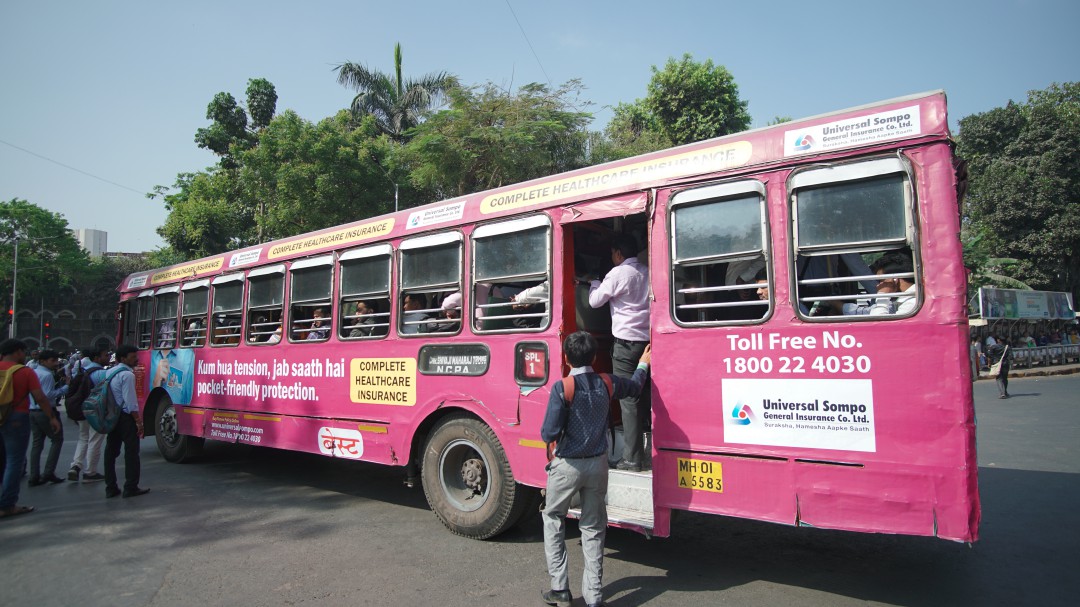
Taxi: In my opinion, it is not the first choice in Mumbai, if you have to take it, you also note to tell the driver to turn on the speedometer and follow it, remember to pay attention to google map to avoid being cheated.
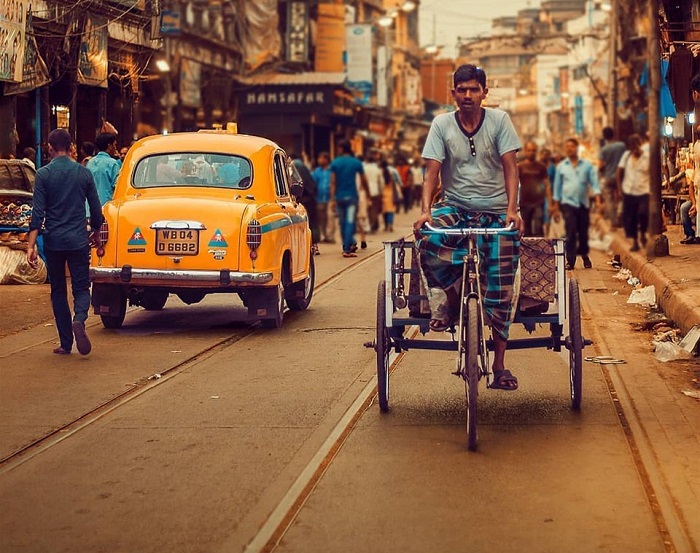
The best means of transport in my opinion is Uber but it is a bit more expensive than public transport.
A friend of mine warned that many drivers are very unkind, they once pick you up and then cancel the trip and then ask for money by bargaining, but I travel a lot and haven’t met any case, so you can rest assured.
Rickshaw: Like a tuk-tuk, bargain before you go.
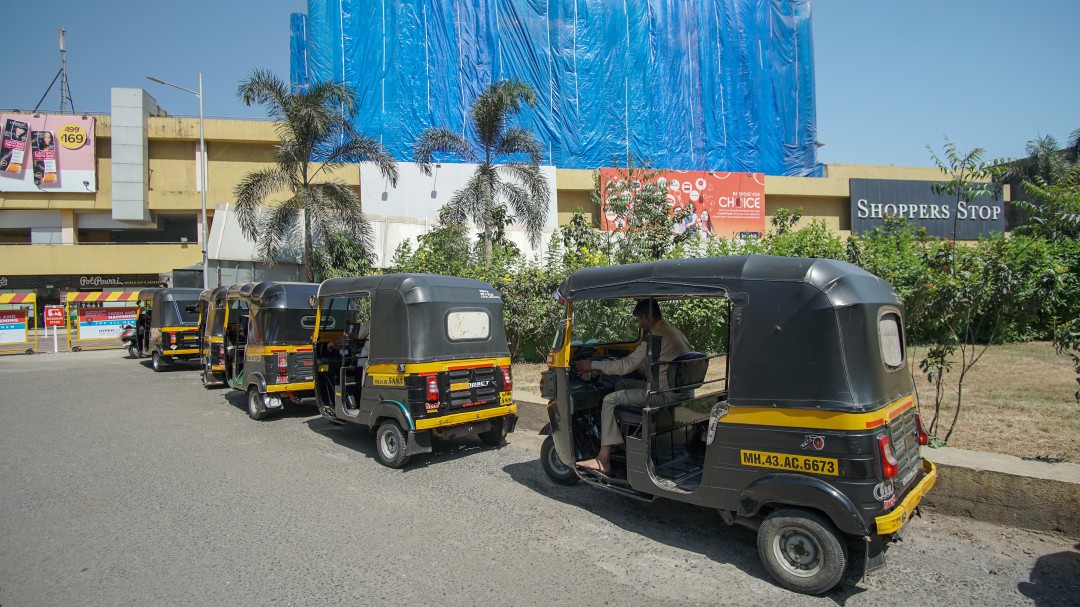
Where to go & what to do in Mumbai? (#mumbai blog)
Gateway of india and gulf front (#mumbai travel blog).
Address: Apollo Bandar, Colaba, Mumbai, Maharashtra 400001, India
Your journey to the city of Mumbai will not be complete if you miss the opportunity to visit a magnificent structure like the Gateway of India. India Gate was built to commemorate the visit of King George V and Queen Mary in 1911. It is also a famous spot that attracts many tourists to Mumbai and has become a tourist icon here. The Gateway of India is located near the coast, behind is the pier and opposite is the Taj Mahal hotel – a majestic, luxurious and extremely magnificent 5-star hotel.

This work is designed in the extremely impressive Indo-Saracenic architecture by Scottish architect George Wittet. The foundation stone for the Gateway of India was laid on 31 March 1911 and completed in 1924. The archway of the gate was made of basalt stone, 26 meters high, connected to four turrets and decorated with mesh lattice carved on the stone, atop of the top there is a large circular oil lamp with a diameter of 3.6m. You can go to this Indian gate in the early morning or evening to admire the beautiful scenery and take pictures to capture one-of-a-kind moment at this place.
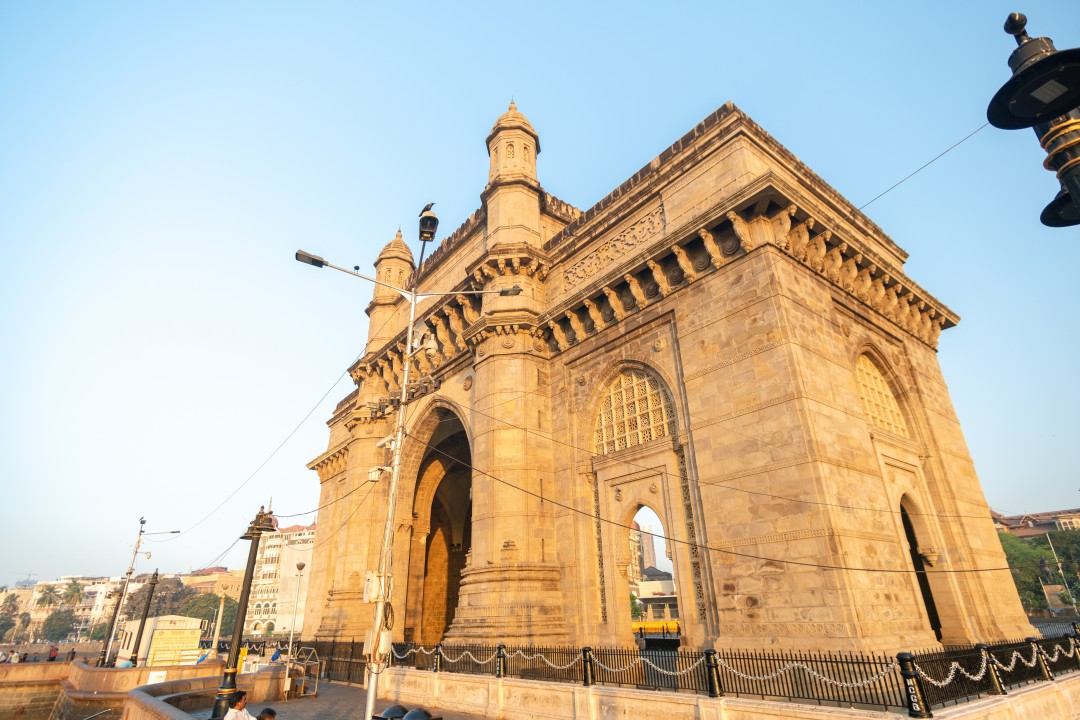
On big holidays or important occasions, this lamp is lit up again. In addition, on the door of the work is also engraved the names of more than 90,000 soldiers who died. The Gateway of India is most beautiful when the sun rises. Early in the morning is the time when the air is freshest, cool, empty, the sun rising and shining on the gate is extremely beautiful. In addition, in the morning, people feed pigeons, they look very nice, crowded…
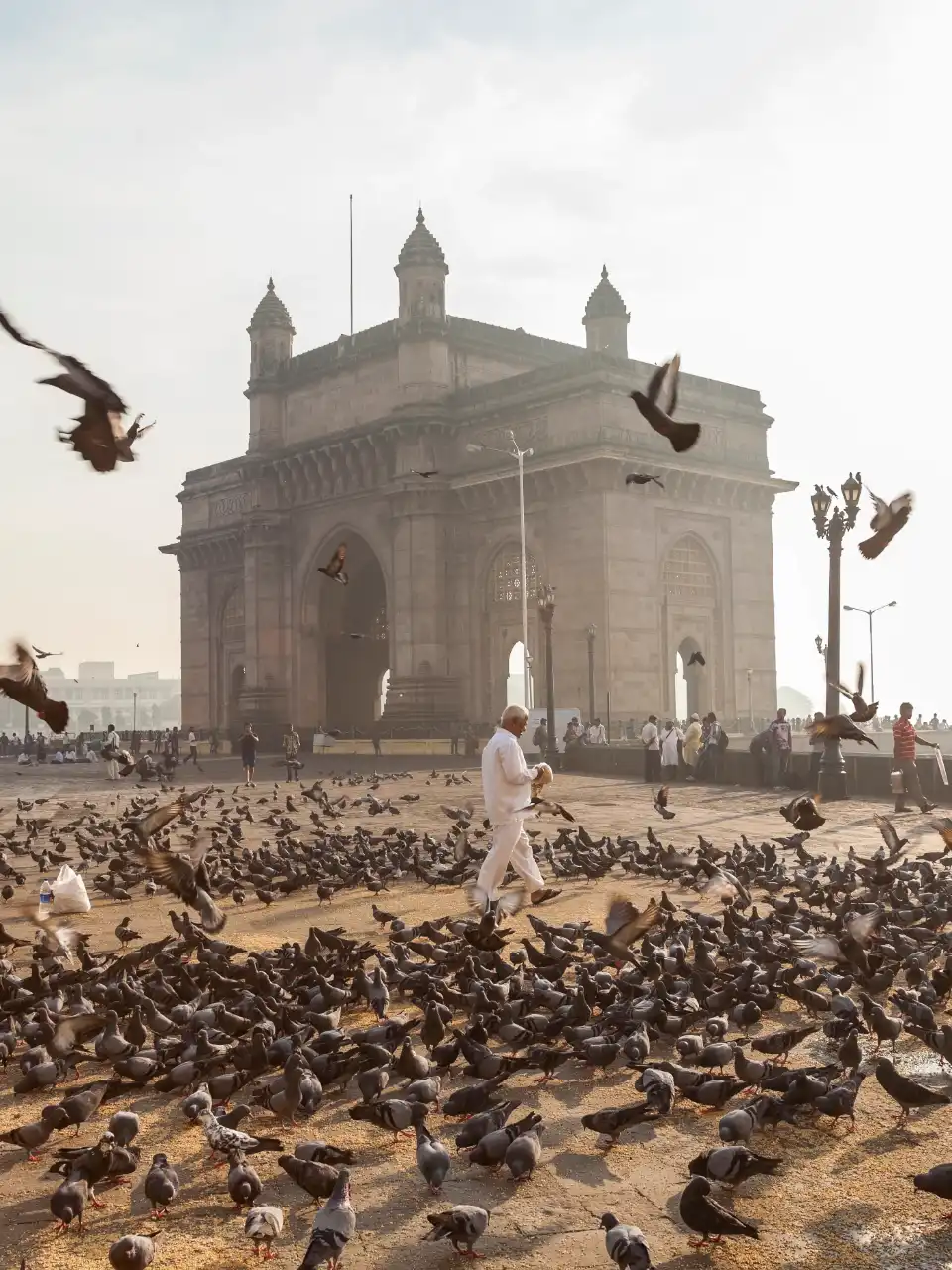
You can also experience a boat trip around the harbor. Boats only leave the dock when full of passengers. Ticket price is about 80 INR/hour, with about 10 people sitting on the deck enjoying the atmosphere here.
Chhatrapati Shivaji Maharaj Terminus
Address: Chhatrapati Shivaji Terminus Area, Fort, Mumbai, Maharashtra 400001, India
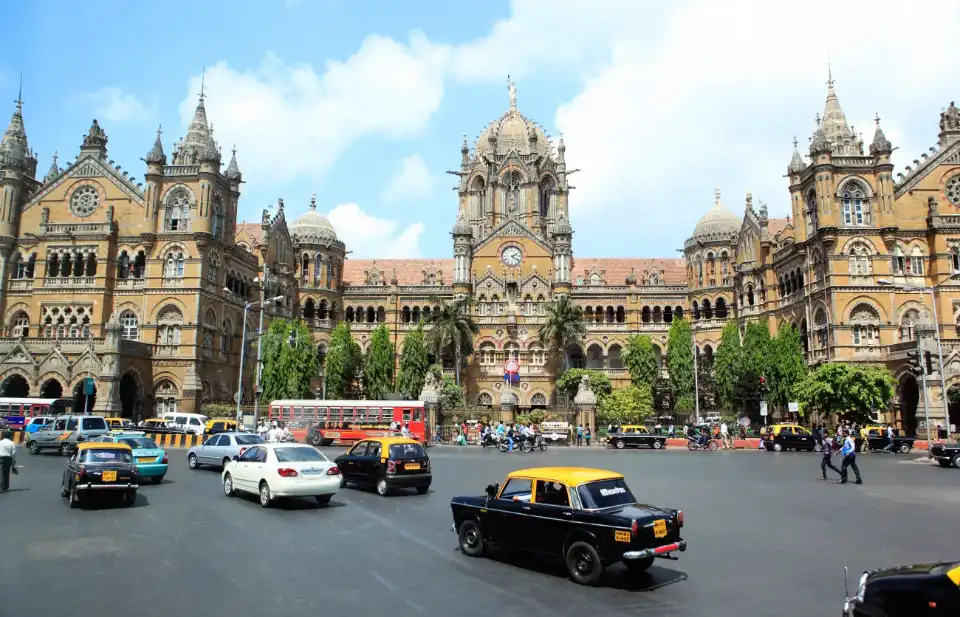
As the most famous railway station in India and also an iconic landmark of Mumbai, Chhatrapati Shivaji Terminus has seen the city go through many important periods in its history. The station was designed by Frederick William Stevens in the Italian Gothic renaissance style, construction started in 1878 and completed after 10 years.
Chhatrapati Shivaji Terminus features a unique arched structure, intricately carved motifs on small towers and doorways. This work is a harmonious combination of British and Indian cultures, creating a unique and unique architecture in the world. That’s why in 2004, Chhatrapati Shivaji Terminus was recognized by UNESCO as a world cultural heritage and attracts millions of tourists every year.
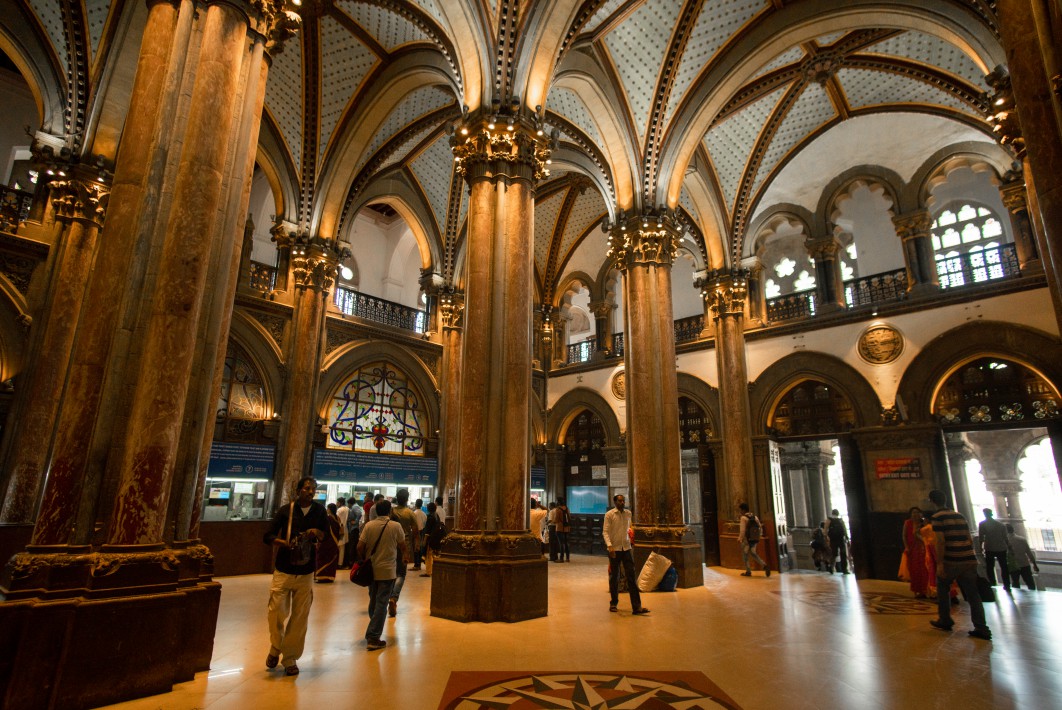
Mumbai has some of the most dangerous and busiest train journeys in the country. I’ve also watched a few rush hour videos on Youtube. Uhm, although it looks fun, it’s dangerous.
Taj Mahal Palace (#mumbai travel guide)
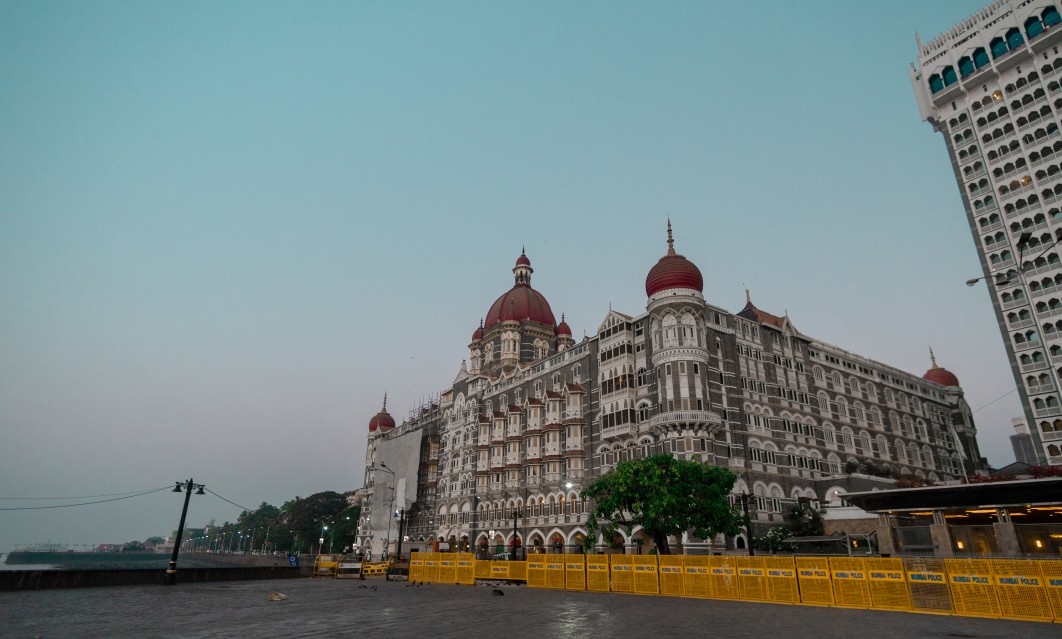
The famous hotel right next to Gateway of India: The architecture from the British era, very majestic. A 5-star hotel, very famous as a place to visit or stay in Mumbai, in addition it is also famous for having experienced a terrorist attack, the year of 2019, there was a movie about that terrorist attack.
Haji Ali Dargah Mosque
Address: Dargah Rd, Haji Ali, Mumbai, Maharashtra, India Hours: 5:30AM–9:45PM
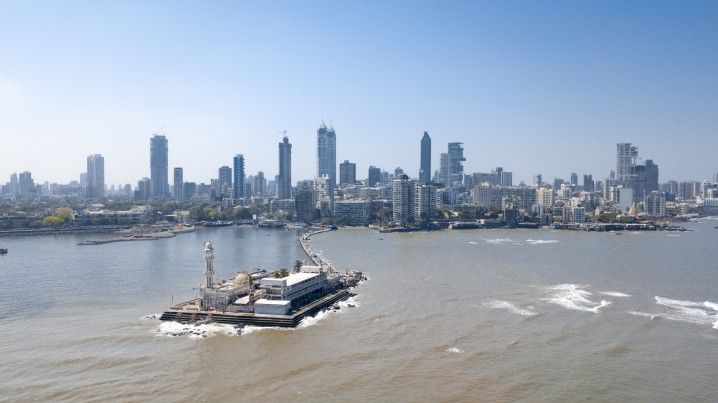
One of the most famous and revered mosques in Mumbai. Haji Ali is designed in Islamic architectural style and has white domes and beautiful minarets around. So it looks like a white mansion nestled on a small island far from the shores of the bustling city.
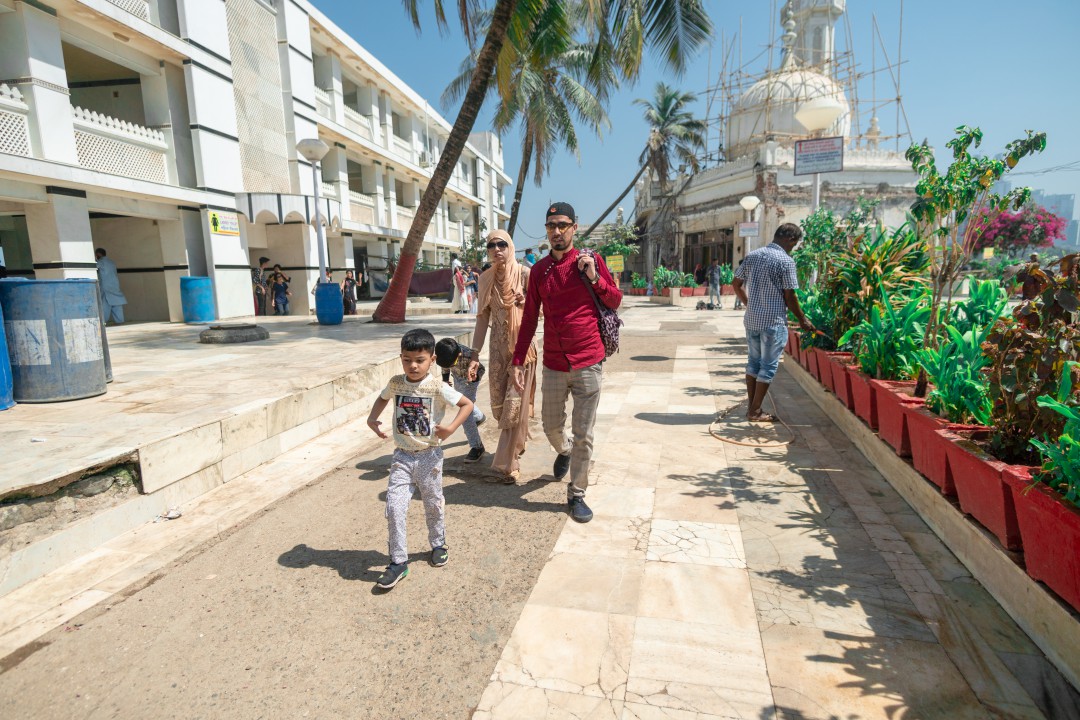
This is a temple located in the middle of the sea of Mumbai, connected by a small road, when the tide rises, the way is disappear. The temple is unique in its location, it’s a bit messy inside, not really beautiful, but because of its prime location, it can’t be missed.
Rajabai Clock Tower (#mumbai blog)
Address: WRHJ+W24, Karmaveer Bhaurao Patil Marg, Mantralaya, Fort, Mumbai, Maharashtra 400032, India Hours: 9AM–10:45PM
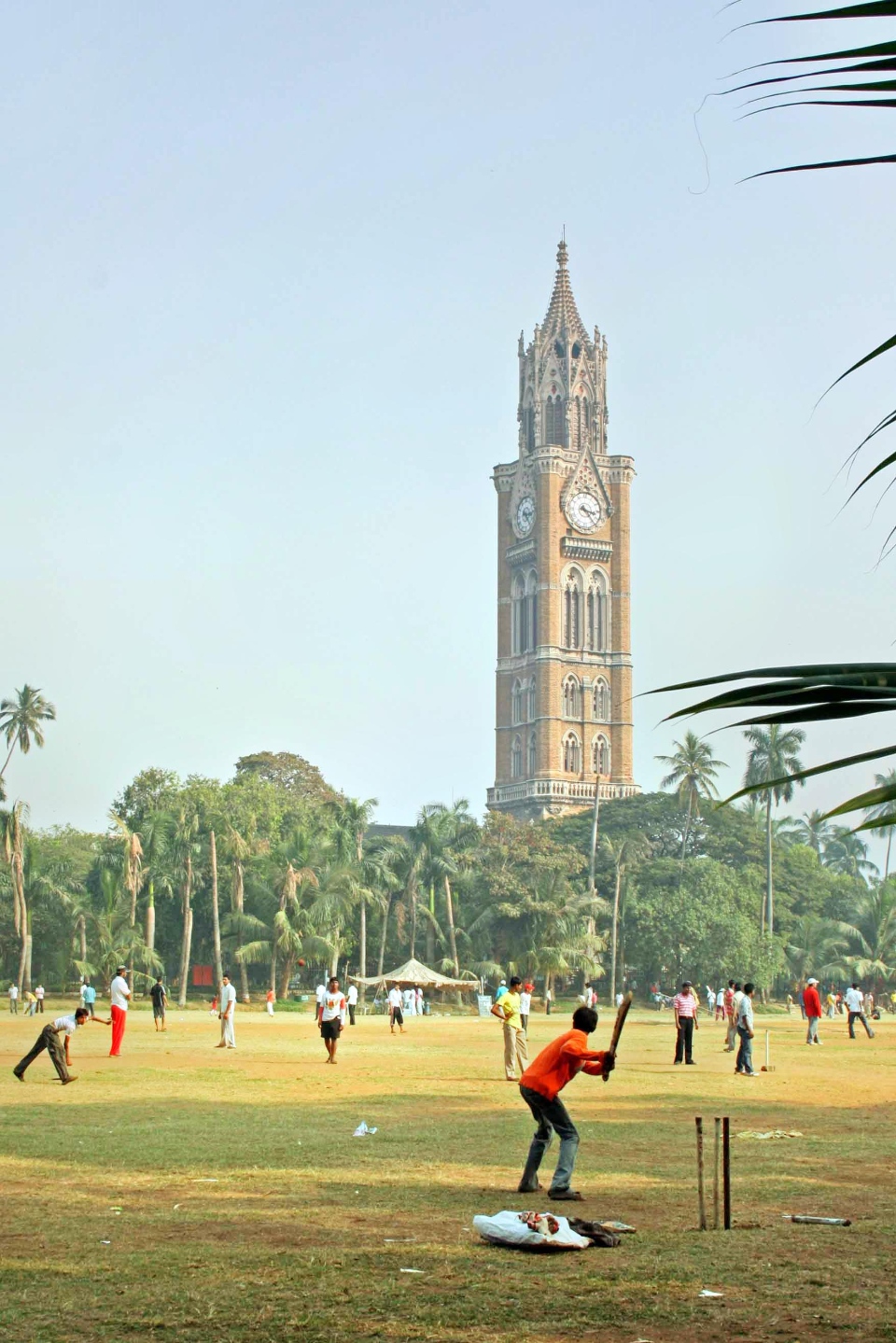
The clock tower is not far from the CST station, but the tower is located in the port and is forbidden to enter so it can only be viewed from the outside. So when I come, I come back right away, I didn’t even to take pictures when I look at it.
Colaba Causeway Street
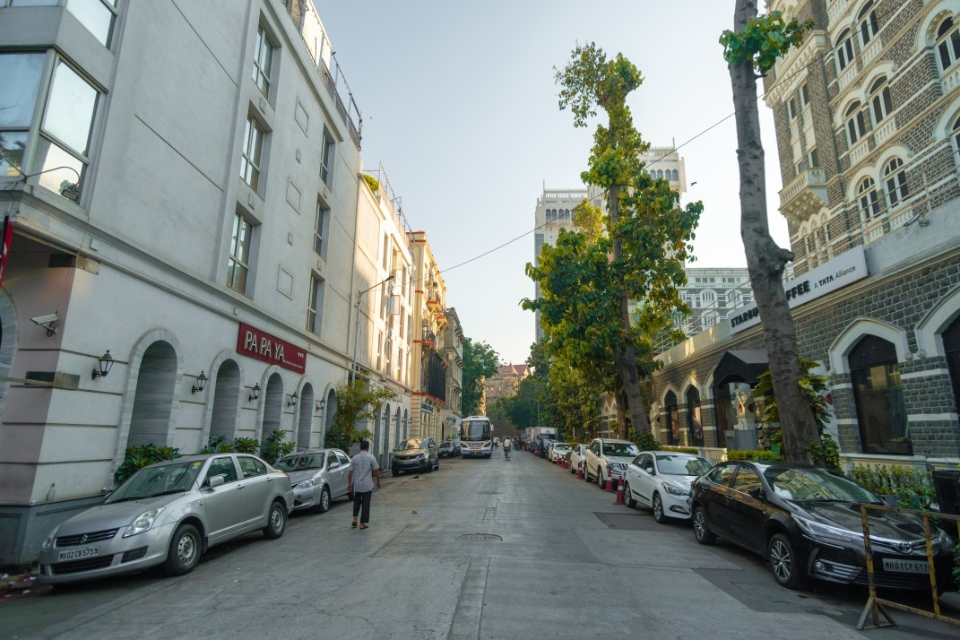
The shopping street of Mumbai. I came in the morning so it was deserted and no store opened. The stores here started to open very late, around 10 am. If you want to experience the bustling atmosphere or shopping you should come here.
Cybertecture Egg
This is one of the interesting stops that you cannot miss when you have the opportunity to set foot in this bustling city of Mumbai. Cyber Tecture Egg is the most special egg-shaped building in the world that attracts many visitors to admire. This building has an area of 32,000 m2, is a unique combination of visual architecture and environmentally friendly intelligent energy use and regeneration.

Cyber Tecture Egg is like a jewel of Mumbai. Because when coming here, visitors will not be able to help but admire an architectural work that brings beauty nowhere else. Especially, when the night comes, you will be overwhelmed by the shimmering, fanciful but equally luxurious scene of the lights shining on the glass of the building.
Marine Drive
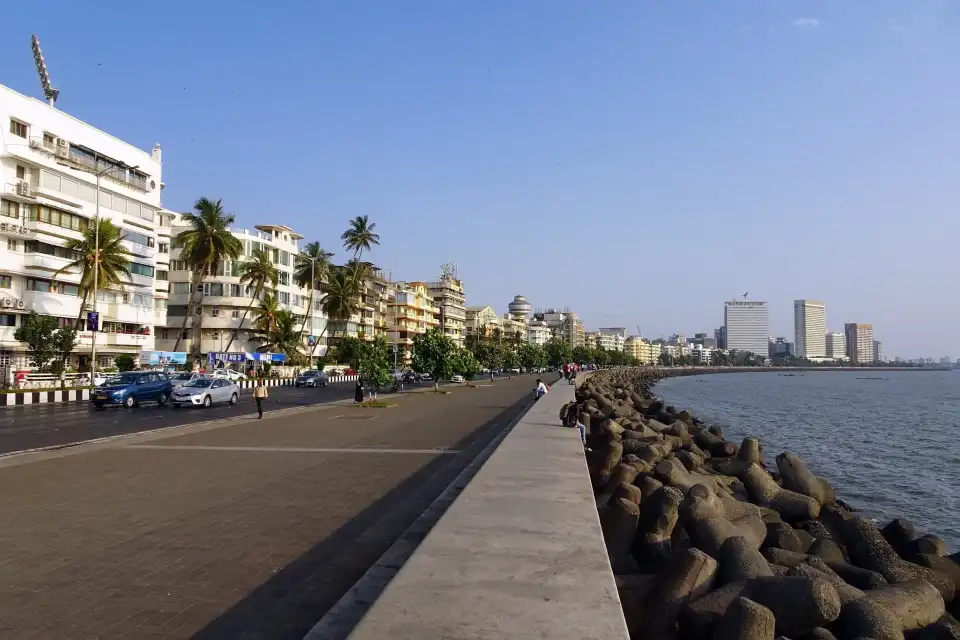
This is a place chosen by many tourists to rest, relax, enjoy the peaceful atmosphere, leaving behind the hustle and bustle of the modern city. Marine Drive is a 4.5km coastal road from the Nariman Point area to the foothills of Malabar. Nicknamed the Queen’s necklace, Marine Drive is attracting more and more tourists to visit because of the shimmering beauty of the street lights that illuminate at night like a pearl necklace.
When coming here, you will admire many impressive landscapes, beautiful beaches, enjoy attractive street food and participate in bustling festivals by the sea. You can go to Marine Drive in the afternoon to enjoy the romantic sunset and enjoy the fresh air after a tiring day of work.

This is one of the most peaceful places in the bustling city of Mumbai. Marine drive is embracing a beautiful stretch of Arabian coast. At night, this stretch of road is lit up to look like a pearl necklace. Therefore, this place is likened to “The Queen Necklace”.
Shree Siddhivinayak Temple
Address: 2R8J+P4J, SK Bole Marg, Prabhadevi, Mumbai, Maharashtra 400028, India Hours: 5:30AM–9PM
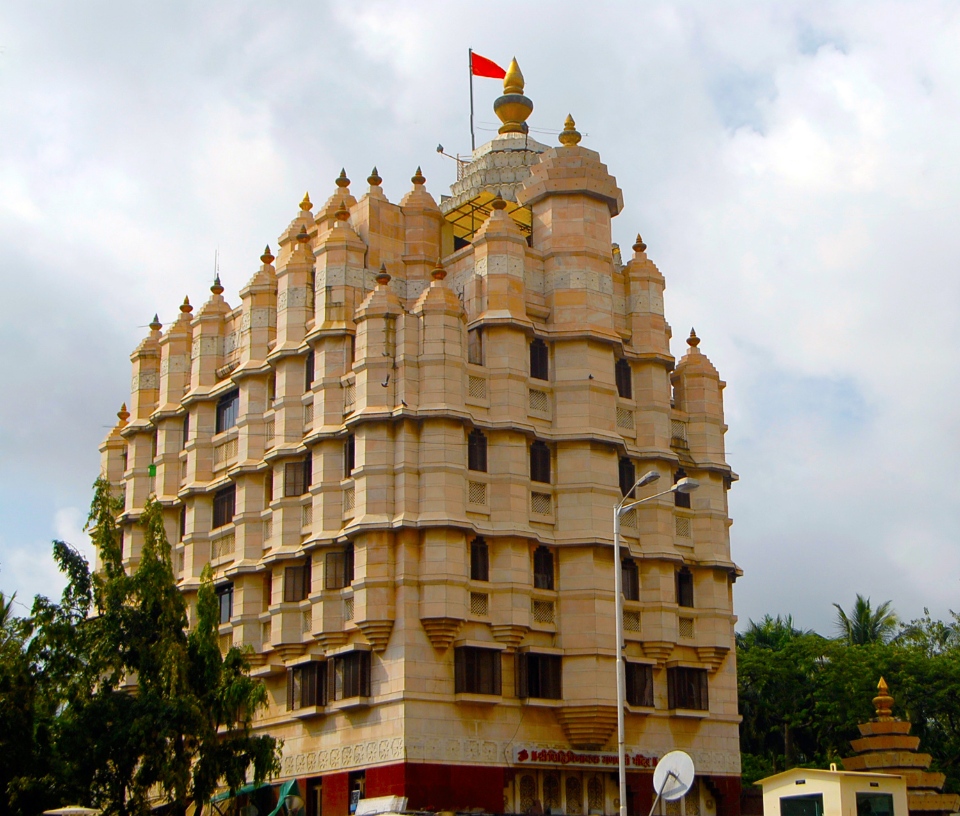
Siddhivinayak Temple is one of the biggest and most beautiful temples in Mumbai. This temple has existed for more than 2 centuries and has become a very important place of worship in India. This temple was built by Laxman Vithu and Deubai Patil, dedicated to the god Ganesh, an elephant-headed god of Hinduism.
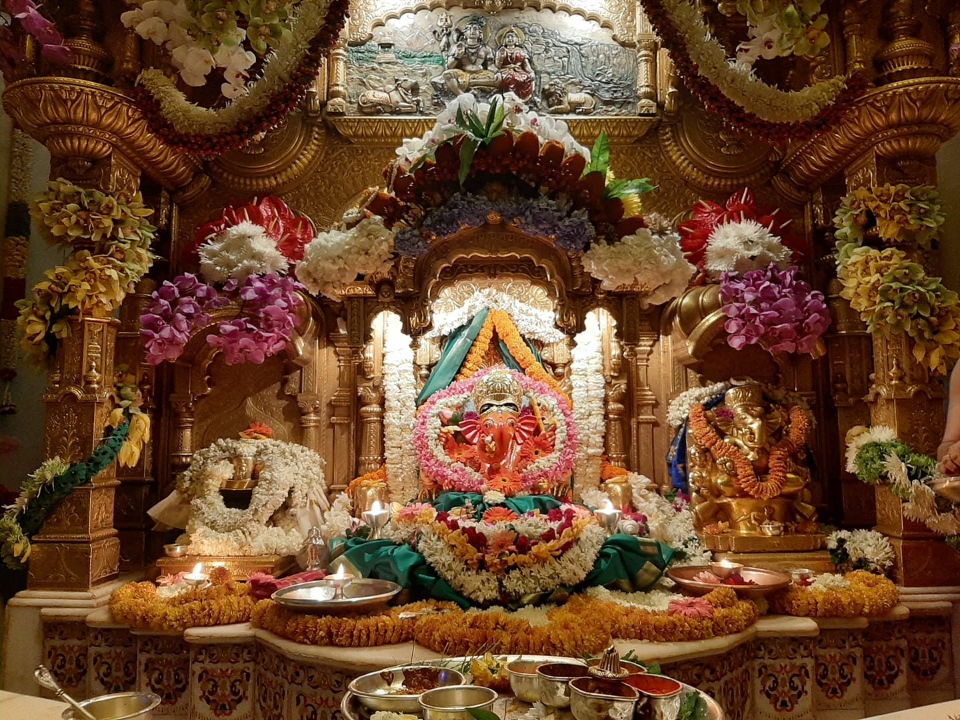
Inside the temple there is a god statue of Shri Ganesha, 2.5m wide and made from a large black rock. When coming here, visitors not only admire the unique beauty of the temple’s architecture but also have the opportunity to admire the majestic natural landscape around the temple.
What I look forward to, most curious about when coming to Mumbai is do they have their own area to visit? Such as visit the movie set, the boulevard of fame for example… but it will be a bit disappointing because the answer is NO. Although there were tours to visit those film locations, I didn’t find anything very impressive.
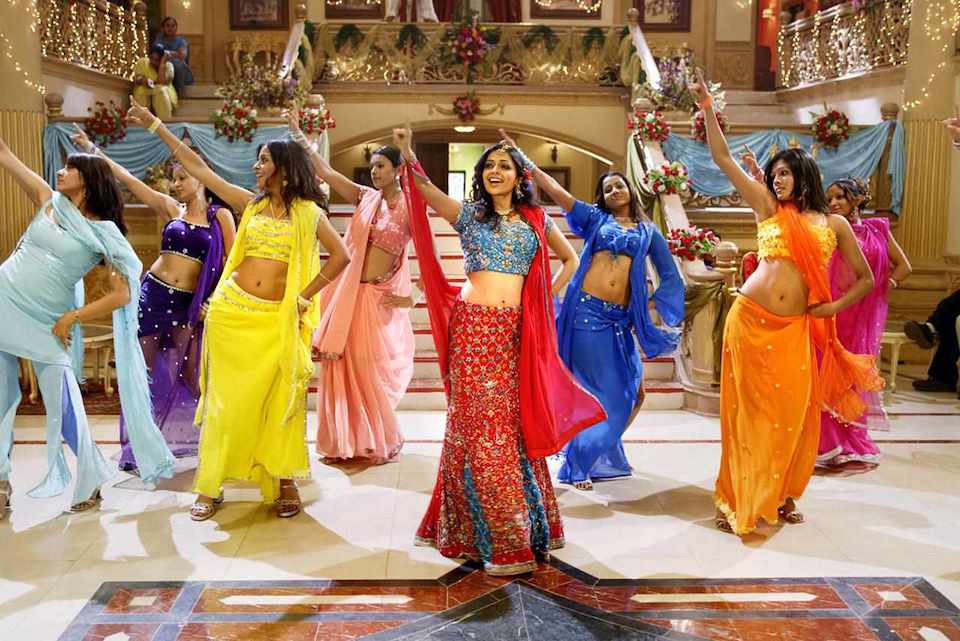
Continued reading…
Related articles
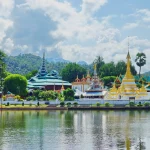
RELATED ARTICLES MORE FROM AUTHOR
What to buy in indonesia — top +9 famous gifts, souvenirs & best things to buy in indonesia, what to buy in kyoto — 31+ must-buy kyoto souvenirs, gifts & best things to buy in kyoto.

What to buy in Korea? — Top +23 cheap, famous & best things to buy in Korea

What to buy in USA? — 17+ must buy in USA & best things to buy in USA
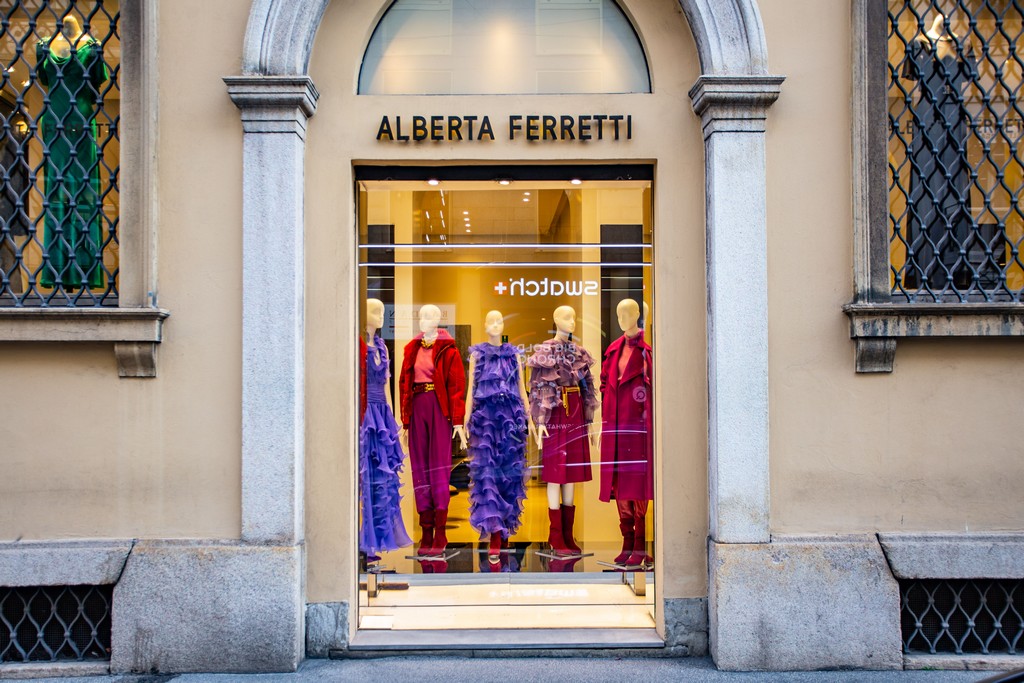
What to buy in Italy? — 19+ top souvenirs & best things to buy in Italy
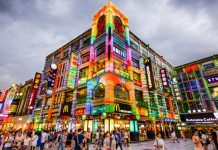
What to buy in Guangzhou? — 11+ best things to buy in Guangzhou & best shopping places in Guangzhou

What to buy in Tibet? — Top 9+ tibet souvenirs, gifts & best things to buy in Tibet
Editor picks.

What to eat in Singapore? — 10+ must-eat & best street...

Must eat in Nha Trang — 45+ best street food in...

How to prepare for trekking in Nepal? — 10+ Nepal trekking...
Popular posts.

What to buy in USA? — 17+ must buy in USA...

What to buy in Korea? — Top +23 cheap, famous &...

Must buy souvenir in Taiwan — Top 17+ most famous, cheap...
Popular category.
- Inspiration + Guide 1462
- Trip Inspiration 468
- Food + Drink 210
- Thailand 209
- Coasts + Islands 193
- South Korea 168
- Vietnam 167
- Travel Photos 144
- Work for Us
- Terms & Conditions
- Privacy Policy
You will be redirected to your dashboard shortly. We will also call you back in 24 hrs .
- Mumbai Travel Tips: Get A Hands On How To Explore The Most Bustling City Of India!
15 Nov 2021
Mumbai is the business hub, diamond market and financial hub of India. Its geographical location and economic development have made this city recognized as a global city in India. It is also one of the global cities to take a tour among the list of world global cities. It is a tourist-friendly place in west India. Knowing the latest Mumbai travel tips will help all travelers to ease their city tour. Mumbai boasts many Victorian architectural marvels in the main city. It boasts many sea beaches, islands, sea forts, natural seaport, skyscrapers, sea links, and marine drive. It is also famous for its nightlife places. It is also a great place to taste local cuisines and theaters.
10 Handy Mumbai Travel Tips
Here, we have listed the top 10 Mumbai travel tips for the first-timers which will help you enjoy more while in the city.
1. Mumbai Climate
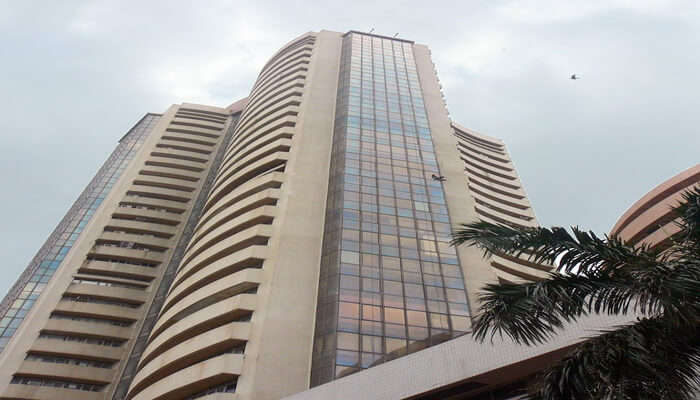
Image Source Mumbai experiences tropical climate throughout the year. The summer season starts in March and ends with May. The average mean temperature is 37-degrees Celsius. The humidity near the seashore will remain 70% above. One can experience a cool breeze from the Arabian Sea after 04:00 PM. This cool breeze will reduce the hot temperature during the summer. The rainy season starts in June and ends in November. The august month is the peak of rain in Mumbai. It is not advisable to travel here during the monsoon. Floods due to heavy rainfall are common in Mumbai City. December to February is winter season. The temperature remains in-between 10-degrees Celsius to 20-degrees Celsius. The best season to tour, Mumbai is from December to April. These are dry months with moderate temperatures. This is also the peak season where international tourists visit here as global city tour takers.
Must Read: 24 New Year Parties In Mumbai: Top Venues & Events
Looking To Book A Holiday Package?

Spellbinding Cochin Family Tour 2D/1N Package @ Rs 2,750
Plan your trip today!

Himachal Family Tour Package 4D/3N @ Rs 8,750
Get quotes from multiple travel experts.

Exciting Andaman Family Trip 5D/4N @ Rs 10,250
Compare & customize quotes before booking.

Gangtok & Darjeeling Tour Package 5D/4N @ Rs 13,000
Have Questions? Talk to our travel experts today.

Wonderful Goa Family Package 3D/2N @ Rs 6,500
Best prices guaranteed.

Riveting Rajasthan Vacation 3D/2N Package @ Rs 6,499
EMI option available.

Enchanting Uttarakhand Tour 4D/3N Package @ Rs 7,199
Explore best destinations with our experts.

Delightful South Weekend Tour 3D/2N Package @ Rs 4,999
Thrilling weekend full of fun.

Marvelous Gujarat Tour 3D/2N Package @ Rs 4,999
Talk to our experts today.

See more at TRAVELTRIANGLE.COM
2. Clothing For Mumbai City Tour
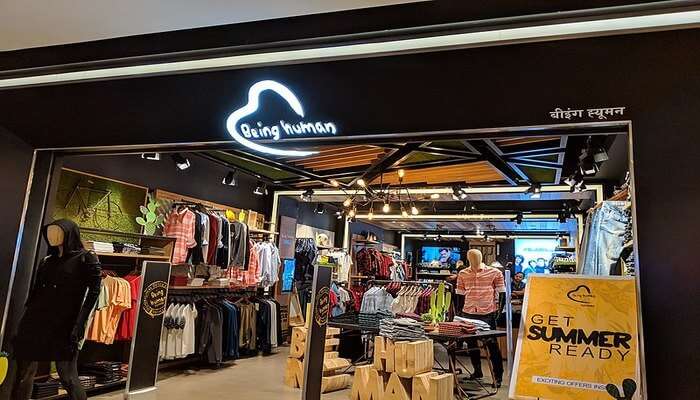
Image Source Mumbai City does not emphasize on particular dress code for its Mumbaites and tourists. The city tour travelers in the summer season must wear 100% pure cotton fabrics. This will help to reduce body temperature from the hot sun. If you visit here in the rainy season, you must bring a foldable umbrella raincoat. You must carry winter warm clothing during the winter season. You may need a sweater, woolen shawl, and mufflers after sunset. The dry season is from December to April. You can wear comfortable attire during the dry season in Mumbai. It is advisable to carry some fashion clothing, jeans, and jerkins. Mumbai travel advice to women tourists is not to bring your swimsuits, as Mumbai beaches are not good for swimming.
Suggested Read: 15 Breathtaking Pre-Wedding Photoshoot Locations In Mumbai
3. Currency
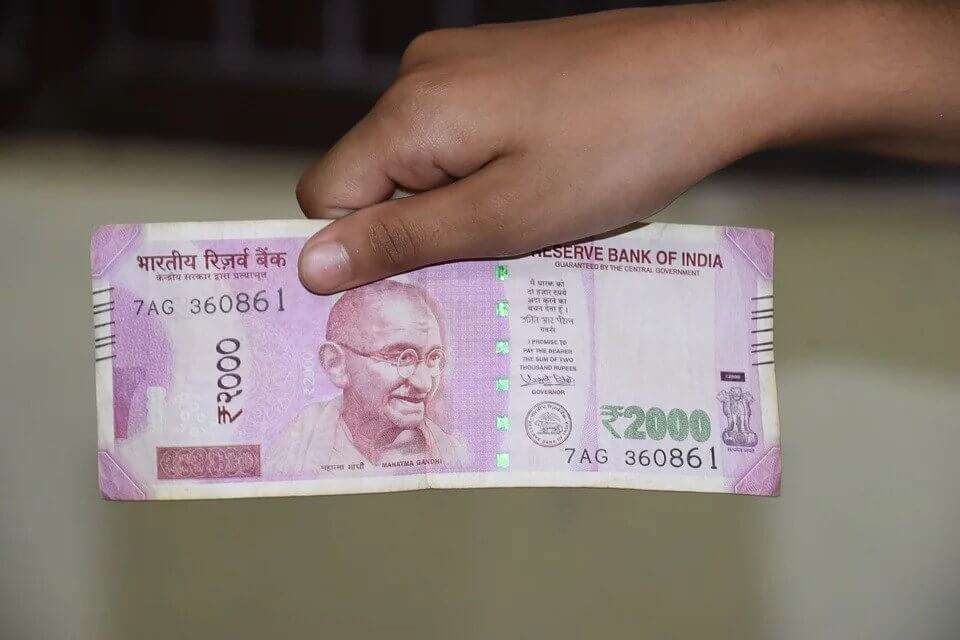
Image Source The Indian Rupees (INR) is the only accepted currency for all financial transactions. Therefore, you must know about the currency conversion rates with your nation’s currency with INR. It is advisable to have some trusted apps for currency conversion. Mumbai has many foreign currency exchange centers. You can find them in the main cities and global travel agencies. Mumbai airport travel tips are related to currency exchange. You can convert the notes from the currency exchange facility within the airport premises itself. You can also exchange currencies from multinational banks having foreign currency exchange counter. If you have an international debit or credit card with the Master/Visa logo, you can take cash from the thousands of ATMs present in the city and its suburban areas. You can manage your INR by using your debit/credit cards for making payments at the hotel, travel agents, and restaurants. You can also do shopping with your cards. Most of the establishments do accept traveler’s cheques. Therefore, currency exchange is not an issue once in Mumbai. It is advisable to carry INR for local commutation. They accept cash only.
Suggested Read: 42 Best Resorts Near Mumbai For A Quick Relaxing Getaway!
4. Accommodations For Tourists In Mumbai
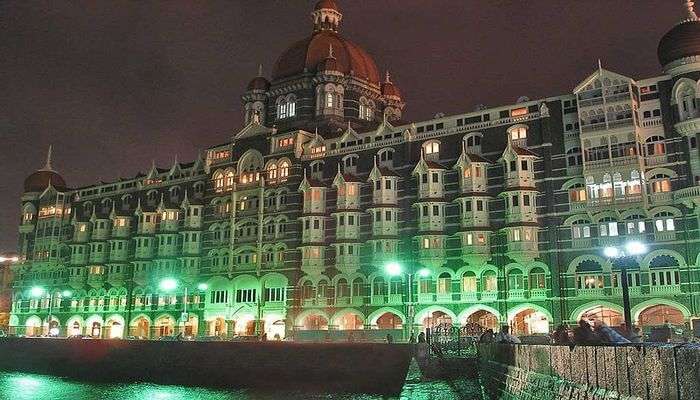
Image Source Mumbai is a budget-friendly place to take a long holidaying. This is because; you can find accommodation, which is matching your budget. If you seek luxury, there are many star hotels in Mumbai City. They are the best for families to stay with kids-friendly places, free- Wi-Fi, swimming pools, restaurants, gyms, and recreational areas. If you visit here for a weeklong city tour, there are many premium hotels. You can also stay in beach resorts present near the Arabian seafront. Mumbai is a business hub. You can find more business travelers than tourists booking hotels in Mumbai in all seasons. It is advisable to book your hotel accommodation in advance to beat the rush. You can have the night city views when you stay on the top floors of hotels present in Mumbai skyscrapers. You can also view the boats and ship movements from your balcony and windows.
Suggested Read: 50 Unique Experiences You Can Only Have In Mumbai
5. Local Commutation In Mumbai

Image Source Mumbai city has all types of public transport facilities. However, they are very crowded during peak hours. Mumbai travel guide is the best to carry if you wish to tour this city by yourself. Traveling this city through suburban, metro and monorails is the most affordable one when compared to other modes of public transportation. It is also the speedier way to commute once in Mumbai. The next best option is to travel in the BEST buses serving the city and its outskirts. It is advisable to travel in a passenger boat once in Mumbai. This is the best way to see this island city and the mainland. The Mumbai city tour takers can travel freely on the weekends and public holidays conveniently with fewer crowds. Locally, you can find auto-rickshaws in the suburban areas. Here, you have to fix the price before starting your journey. Mumbai is also popular for its black and yellow taxis. They are meter-based and here you no need to bargain.
Suggested Read: 11 Romantic Beach Restaurants In Mumbai For A Dreamy Dinner Date
Planning your holiday but confused about where to go? These travel stories help you find your best trip ever!

Nikhil Recites A Tale Of 11 Friends Who Went From Bengaluru To Ladakh
Bengaluru - Delhi - Leh - Ladakh - Leh - Delhi - Amristsar - Chandigarh - Bengaluru

Pranav Took A Solo Trip To Andaman & It Was Truly Wonderful
A backpacker's guide to the predominant Honeymoon destination!

Shivani Talks Of Her Trip To Mcleodganj & Dalhousie With Her Husband And Friends
Sunset views. Monasteries. Bhagsunath falls. And amazing street food.

Kanika Proves That Traveling With An Infant To Kerala Is Totally Safe & Wonderful
Beaches, Backwaters, Spas, & More. Take me there now, please!

Here's Why Aakanksha's Trip To Manali Changed Her Idea About Group Tours
Ideal long weekend getaway from Delhi! Isn't it?

Isha Elaborates On How She Went Solo To Kasol & Returned With Lots Of Friends
And tales of her exciting Kheerganga & Chalal trek...

Prasham's Account Of A Goa Tour Proves That Goa Is More Than A Party Destination
Adventure, sightseeing, laid-back beach tours, and it doesn't stop there!

Bhavya Gives An Extensive Account Of His Jaisalmer Trip With Friends
Desert safari, haunted Kuldhara village, & Gadisar Lake. There's more...

Ashish Tells Why Kashmir Turned Out To Be A Winter Wonderland For His Family
For Gondolas, Shikaras, and plenty of snow!
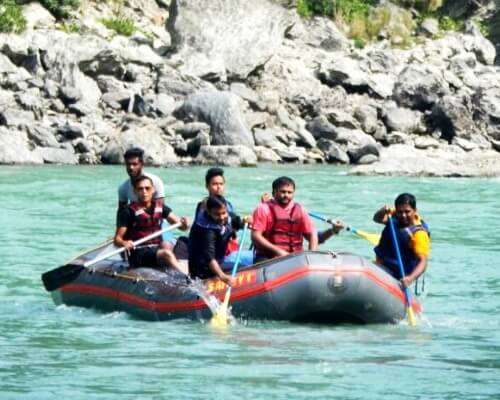
Arunav Can't Stop Praising His Adventurous Trip To Sikkim & Darjeeling With Friends
For adventure in Air, on Land, and in Water!

Avneet Describes Her Trip To Spiti With A Group Of Strangers That Became Friends
Sightseeing. Monasteries. Trekking. And beauty all along
6. Taste Delicious Local Cuisines In Mumbai
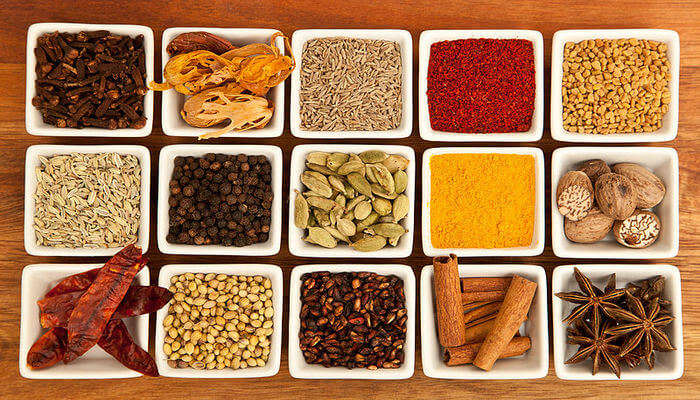
Image Source Mumbai is the place to eat local cuisines and international cousins in one place. You can find the Panipuri Wala and pav baji walas in every corner of Mumbai. The street vendors mostly serve the south Indian dishes. The star hotels serve international cuisines. There are special restaurants that serve the Rajasthani and north Indian cuisines. You can find many international food chain outlets in Mumbai. They are the best to eat pizza, French fries, and burgers. You can also find similar ice-cream parlors of international brands. Many of the international food chain outlets serve 24-hours. They do deliver food to your hotel room late at night. It is advisable to eat from many of the takeaway restaurants in your Mumbai city tour. They serve food quickly than any other eateries places in Mumbai. It is advisable to try local street food vendors if they are cooking and serving in hygienic conditions.
Suggested Read: 27 Honeymoon Destinations Near Mumbai For Those Romantic Short Trips
7. Mobile And Wi-Fi Services In Mumbai

Image Source Your travel guide and travel tips for Mumbai will work through an app wherever you go to Mumbai. It has many cell phone service providers with internet too. Most of the hotels, restaurants, and resorts provide free Wi-Fi to its guests. Free Wi-Fi is available inside the airport premises. The free Wi-Fi is also available in most of the rail stations present in Mumbai and its suburban areas. The foreign tourists can use their international SIM as soon as you land in Mumbai. Therefore, Mumbai city does not have any network issues and connectivity issues. You can make use of travel apps and take a city tour without a local guide. You can also call and communicate through video from the tourist attraction places like the beach and the India Gate. You can also share photos and videos from your smartphone instantly.
Suggested Read: Top 38 Weekend Getaways From Mumbai For The Love Of Traveling
8. Packing Essential For Mumbai City Tour
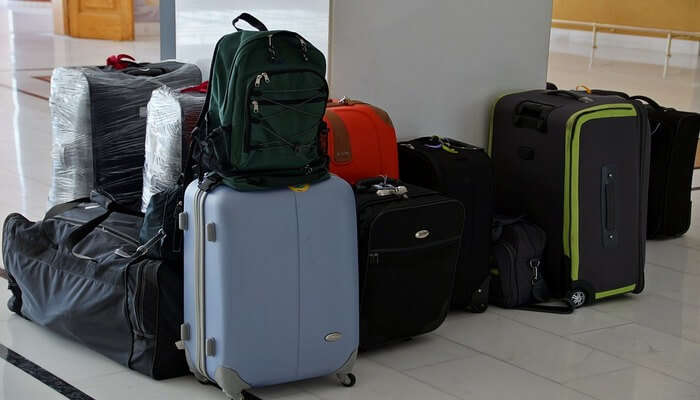
Image Source Baggage travel tips for Mumbai India is the best to carry fewer items. This is because; you can by clothing, bathroom kit, and other accessories at an affordable cost in Mumbai. Yet, you have to carry a few items for a weeklong tour in Mumbai. It is advisable to bring clothes as per the season. Pack comfortable shoes and slippers for bathroom usage. You must pack your photo and video cameras. It is advisable not to carry any sports gear as Mumbai has fewer water sports facilities. If you are coming here in winter, you must bring woolen sweaters, shawls, mufflers, and warm jackets. For your commuting convenience, it is advisable to pack in standard size baggage. This will help you to commute in public mode of transportation without any difficulties.
Suggested Read: 10 Best Food Trucks In Mumbai Which Are A Foodie’s Paradise
9. Uber Cabs
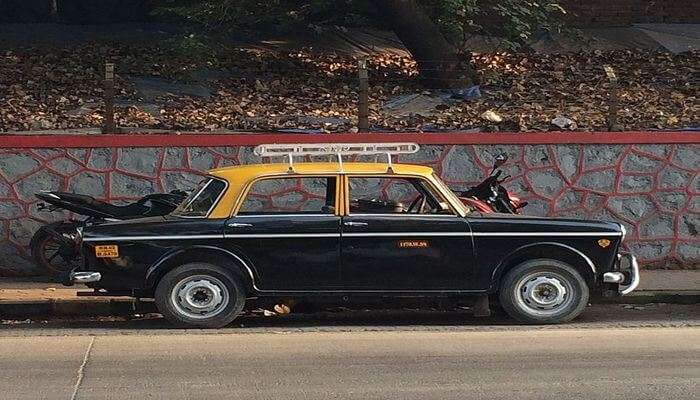
Image Source The trusted and affordable way to commute in this city is to book Uber cabs. You can do this from the airport itself. You can find the Uber booking office in the airport lounge itself. This is the best way to reach your hotel room. The charges will be less when you go by sharing. Most of the Uber cabs from the Mumbai International Airport go on a sharing basis. They serve 24/7 in the main cities and their suburban areas. This is the best way to travel by a solo woman on the Mumbai City tour. The foreign tourists can make use of the Uber app in Mumbai too. This will be the most convenient way to book a cab without depending on your hotel travel desk. You can pay through cash, and card too. It is also the safest way to carry your travel baggage. The Uber drivers do speak English.
Suggested Read: 17 Breathtakingly Beautiful Monsoon Getaways Near Pune And Mumbai!
10. Drinking-Water In Mumbai

Image Source It is not advisable to drink water from public sources. They can cause your dysentery. The safest way to drink water is to buy a branded mineral water. Most of the star hotels serve mineral water only to their guests. You must carry a mineral water bottle throughout your city tour in Mumbai. It will be better to drink them after having food in a restaurant or hotel. You must avoid water from local food vendors. This is because; the Mumbai metro water is having high chlorine content. If an eatery place provides you with hot water, it is also not advisable to drink them. This is because Mumbai metro water can spoil your Mumbai city tour.
Further Read: Nightlife In Mumbai: 20 Coolest Experiences That Will Make You Fall In Love With The City!
These travel tips will be helpful to enjoy a great time in the most glamorous cities of the country. There are attractions, nightlife and also the food which makes Mumbai quite a hyped places. And with these travel tips, the journey will be definitely amazing. So now when you plan a vacation in Mumbai make sure to enjoy the best sights of this metropolitan city.
Disclaimer: TravelTriangle claims no credit for images featured on our blog site unless otherwise noted. All visual content is copyrighted to its respectful owners. We try to link back to original sources whenever possible. If you own the rights to any of the images, and do not wish them to appear on TravelTriangle, please contact us and they will be promptly removed. We believe in providing proper attribution to the original author, artist or photographer.
Please Note: Any information published by TravelTriangle in any form of content is not intended to be a substitute for any kind of medical advice, and one must not take any action before consulting a professional medical expert of their own choice.
Frequently Asked Questions About Mumbai Travel Tips
Is Mumbai a safe place to travel?
Yes, Mumbai is an Alpha Global city in India. It is safe to travel as tourists, business purpose and as a global city tour to take in India.
What is the toll charge to give at Bandra to Worli Sea Link in Mumbai?
Yes, Bandra to Worli Sea Link is a scenic sea drive to take once in Mumbai. The Mumbaites and tourists must pay INR 70 at the toll plaza to travel via this scenic sea link.
Is it safe for tourists to commute via suburban rails in Mumbai?
Yes, you must keep safe of your Smartphone, valets and baggage pockets must be empty while traveling in crowded suburban metro trains. Your things can get lost apart from theft due to pull and push happening due to overcrowdedness.
What is the budget-friendly food popular in Mumbai?
The Pav Baji and Pani Puris are the mouthwatering food that everyone visiting Mumbai must taste. The Pani Puri is much affordable, as you will get them from INR 10. The Pav Baji is priced from INR 20 onwards as vegetarian and non-veg.
How many UNESCO World Heritage Sites are there in Mumbai?
There are three UNESCO World Heritage Sites in Mumbai to visit. They are Chhatrapati Shivaji Maharaj Terminus, Elephanta Caves, and Art Deco buildings.
Is it possible to see the Mumbai City on a day trip?
Yes, you can see the cities skyscrapers, Juhu beach, marine drive and the heritage building on a day trip. Locally, you can find many Mumbai one day tour operators at an affordable cost.
How many days it will take to see all the attractions of Mumbai?
A weeklong holiday is necessary to see all the Mumbai tourists’ attraction places. This includes visiting UNESCO sites, beaches, city tours, and forts, marine drive, boating and India Gate.
Is it possible to buy the original gold and diamonds from Mumbai?
Yes, you must buy them from the Diamond Market of Mumbai. They give certified diamonds and gold jewels with hallmark.
Looking To Book An International Holiday?

Trip to Sri Lanka at Rs 13,500/-
Plan Your Vacation Today!

Trip to Singapore at Rs 20,499/-
Get Quotes From Local Experts

Mauritius Holiday Starting at Rs 65,000/-
Talk to Our Experts Today

Maldives Honeymoon Trip at Rs 39,800/-
Pay with easy EMI Option

Europe Trip at Rs 89,999/-
All Inclusive Deals

Vacation in Dubai at Rs 27,499/-

Hong Kong Holiday at Rs 24,999/-
Money Safe Guarantee

Thailand Holiday at Rs 7,999/-
Flights Excluded
People Also Read:
Nepal Travel Tips Darjeeling Travel Tips Travel Tips For Himachal Pradesh
Recent Posts
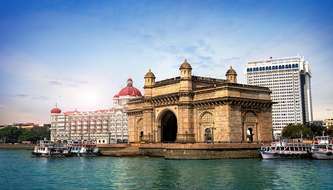
Plan Mumbai To Bangalore Road Trip For The Best Experience
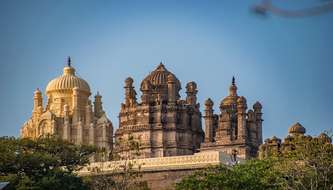
Bhuleshwar Temple: Explore The Mystery And Cultural Significance

Mumbai To Nashik Road Trip – Plan a Perfect Weekend Getaway
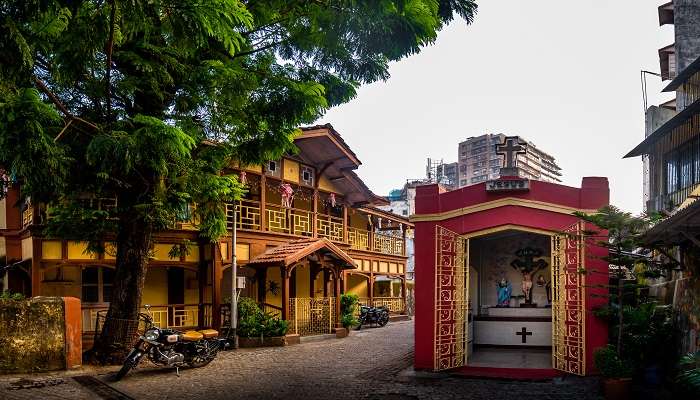
10 Offbeat Places In Mumbai That Unfolds Its Spectacular Charm
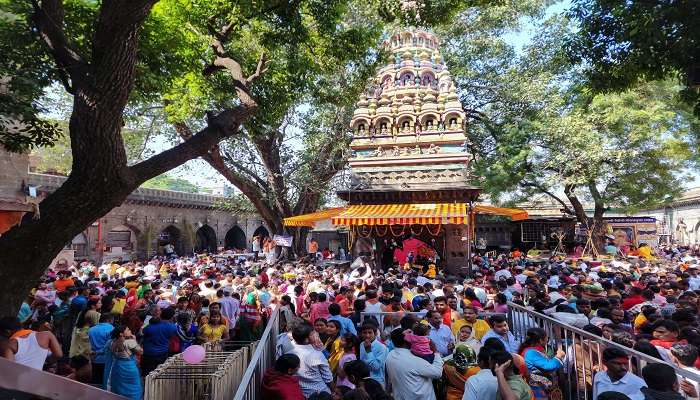
A Guide To The Tulja Bhavani Temple: The Abode Of The Warrior Goddess

Exploring The Serene Beauty Of Ekvira Temple In Maharashtra
Trending Blogs

20 Mysterious Places In India To Visit In 2023 More Bizarre Than The Bermuda Triangle

10 Scariest Roads In India That Are A Driver’s Nightmare

101 Places To Visit In India Before You Turn 30 in 2024

35 Exotic Places To Visit In December In India 2024 To Enjoy A Surreal Vacation

60 Best Honeymoon Destinations In India In 2024

95 Best Honeymoon Destinations In The World In 2023 For A Romantic Escape!
Best Places To Visit In India By Month
Best places to visit outside india by month.
- TravelTriangle
- Mumbai »
- Tour Packages
- Honeymoon Packages
- Family Packages
- Budget Tour Packages
- Luxury Tour Packages
- Adventure Tour Packages
- Group Tour Packages
- Kerala Tour Packages
- Goa Tour Packages
- Andaman Tour Packages
- Sikkim Tour Packages
- Himachal Tour Packages
- Uttarakhand Tour Packages
- Rajasthan Tour Packages
- Tour Packages From Delhi
- Tour Packages From Mumbai
- Tour Packages From Bangalore
- Tour Packages From Chennai
- Tour Packages From Kolkata
- Tour Packages From Hyderabad
- Tour Packages From Ahmedabad
- Kerala Tourism
- Goa Tourism
- Sikkim Tourism
- Andaman Tourism
- Himachal Tourism
- Uttarakhand Tourism
- Rajasthan Tourism
- Hotels in Kerala
- Hotels in Goa
- Hotels in Sikkim
- Hotels in Andaman
- Hotels in Himachal
- Hotels in Uttarakhand
- Hotels in Rajasthan

IMAGES
VIDEO
COMMENTS
Get to the heart of Mumbai (Bombay) with one of our in-depth, award-winning guidebooks, covering maps, itineraries, and expert guidance. Explore Mumbai (Bombay) holidays and discover the best time and places to visit.
If it's your first time in Mumbai, you may be a little apprehensive to visit. I don't blame you. Mumbai is truly the spirit of all that is India. It's hot, dirty, crazy, beautiful, relentless and inspiring! It's the most populated city in the country and there is a massive divide between the ridiculously rich and the downright poor.
12 January 2024. If you're planning on spending 1 day in Mumbai (formerly known as Bombay) as a first-timer, then you have come to the right place! Often dubbed the "City of Dreams", Mumbai is famous for being the place where Bollywood movies are made. This is one of India's major cosmopolitan cities and there are plenty of things to do ...
Get information on Mumbai Travel Guide - Expert Picks for your Vacation hotels, restaurants, entertainment, shopping, sightseeing, and activities. Read the Fodor's reviews, or post your own.
Mumbai's local trains carry an estimated 7.5 million commuters each day between downtown and the sprawling suburbs in the north. Carriages are packed for most of the day, with passengers dangling precariously out of open doors to escape the crush. Peak hours (approximately 8.30-10am & 4-10pm) are worst of all.
How to Ride the Mumbai Local Train. 15 Best Mumbai Tours to Really Get to Know the City. Mumbai's Kala Ghoda Art Precinct: Self-Guided Walking Tour. How to Travel from Mumbai to Bangalore by Train, Bus, Car, or Plane. Mumbai Boat Hire: How and Where to Charter a Yacht.
Mumbai Travel Guide. Photograph by Holger Leue, Corbis, Getty. Why It's Worth It. Developed by the British in the eighteenth century, Bombay (as it was previously called) literally meant "A Good ...
From the best places to stay (depending on your budget) to the best of the city's attractions, this travel guide to Mumbai covers everything. Disclaimer: Indian Eagle claims no credit for the images featured on its blog site. All the visual content is copyrighted to its respective owners only. We mention the source name of the image whenever ...
Mumbai is the heady, chaotic face of 21st-century India. The country's best and brightest gather here to pursue education and careers, clamoring for a piece of India's economic boom. While the home of some of India's biggest companies, wealthiest families, and most glamorous celebrities, it is also home to Asia's biggest slum and ...
Top 5 Reasons to Visit Mumbai. 1. History. There are many ways you can check out the city's vast history. Elephanta Island, a Hindu temple, is made up of a series of caves with beautifully carved walls, and is a UNESCO World Heritage Site that dates back to about 450 AD. 2.
Sample 2-Day Itinerary in Mumbai. Day 1: City Center Loop. Day 2: Nature and Elephanta Caves. Mumbai Travel and Tour Packages. Previously known as Bombay, Mumbai—aside from being the country's most populous city—is India's center of financial and commercial activities. Founded on an ancient settlement, its name was derived from the ...
The urban coastal sprawl of Mumbai deserves more time than you might think. Our Mumbai Travel guide covers Mumbai Travel essentials, where to stay, things to do and much more. What's in this Guide: hide Mumbai Travel Guide Mumbai: Know Before you Go What to Wear in Mumbai Essentials to Pack for Mumbai Responsible Travel ... <a title="Mumbai Travel guide | Best Mumbai Travel Tips (2021)" class ...
View CNN's Mumbai Travel Guide to discover the best things to do and places to stay, plus get insider tips, watch original video and read inspiring narratives.
The bombil fry thali is served with two types of curry sauces, rice, and couple pieces of flatbread. As described, Gomantak Boarding House is relatively near Ashok Vada Pav in Dadar so you can visit both places on the same trip. You can take the metro to Dadar station and eat your way to both places. 6.
Mumbai ( Marathi: मुंबई Mumbaī, Hindi: मुम्बई Mumbaī) ( state tourism office ), earlier known as Bombay, is the largest city in India and the capital of the state Maharashtra. A cosmopolitan metropolis, Mumbai was built on seven islands on the Konkan coastline which over time were joined to form the island city of Bombay.
Telegraph Travel's best hotels, tours, cruises and holidays in Mumbai, tried, tested and recommended by our Mumbai experts. Read our Telegraph Travel guide to Mumbai, including places to stay, eat ...
Here is a list of Top places to visit in Mumbai. 1. Gateway of India. One of the most popular places to see in Mumbai is the Gateway of India which was built during the colonial era. Built to commemorate the visit of King George V in 1911, it was the first structure that a visitor would see while arriving in Mumbai via sea.
Know before you go. The currency is the Indian rupee. November to February is the best time to visit Mumbai when it is cool with low humidity. March to May is hot and humid, and June brings the ...
Taj Mahal Palace (#mumbai travel guide) Address: Apollo Bandar, Colaba, Mumbai, Maharashtra 400001, India | mumbai blog. The famous hotel right next to Gateway of India: The architecture from the British era, very majestic.
Mumbai travel guide is the best to carry if you wish to tour this city by yourself. Traveling this city through suburban, metro and monorails is the most affordable one when compared to other modes of public transportation. It is also the speedier way to commute once in Mumbai. The next best option is to travel in the BEST buses serving the ...
MUMBAI, INDIA TRAVEL GUIDE: In this Mumbai India travel tour we explore this giant metropolis. We show you the best things to do in Mumbai along with several...
Today, I want to talk to you about the top 10 things you have to see and do in Mumbai. It's a massive, bustling, and noisy city that has a lot to offer curio...
Please consider supporting us on Patreon - http://www.patreon.com/attacheDownload the Attaché Book - https://attachetravel.net/ebookOur Mumbai Travel Guide! ...